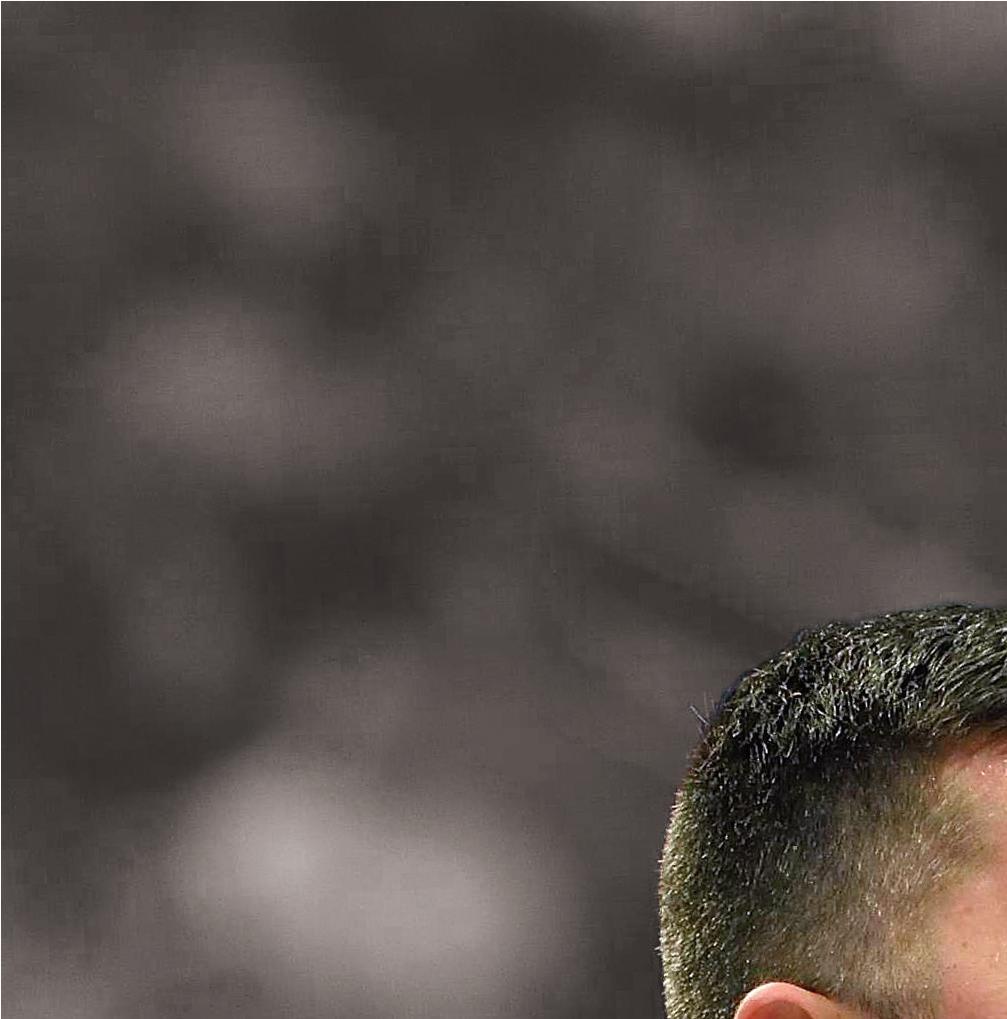
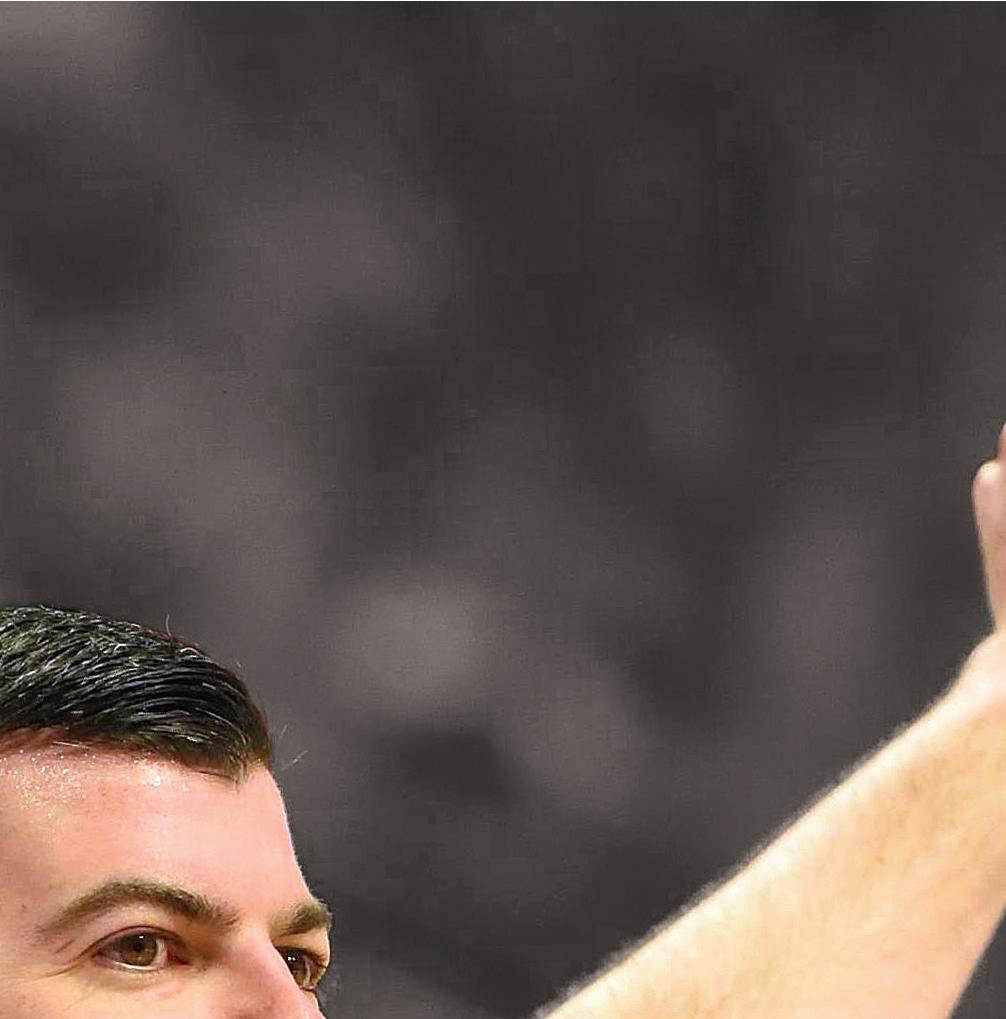



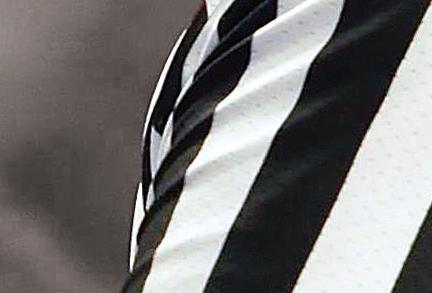
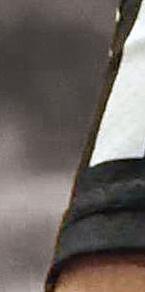



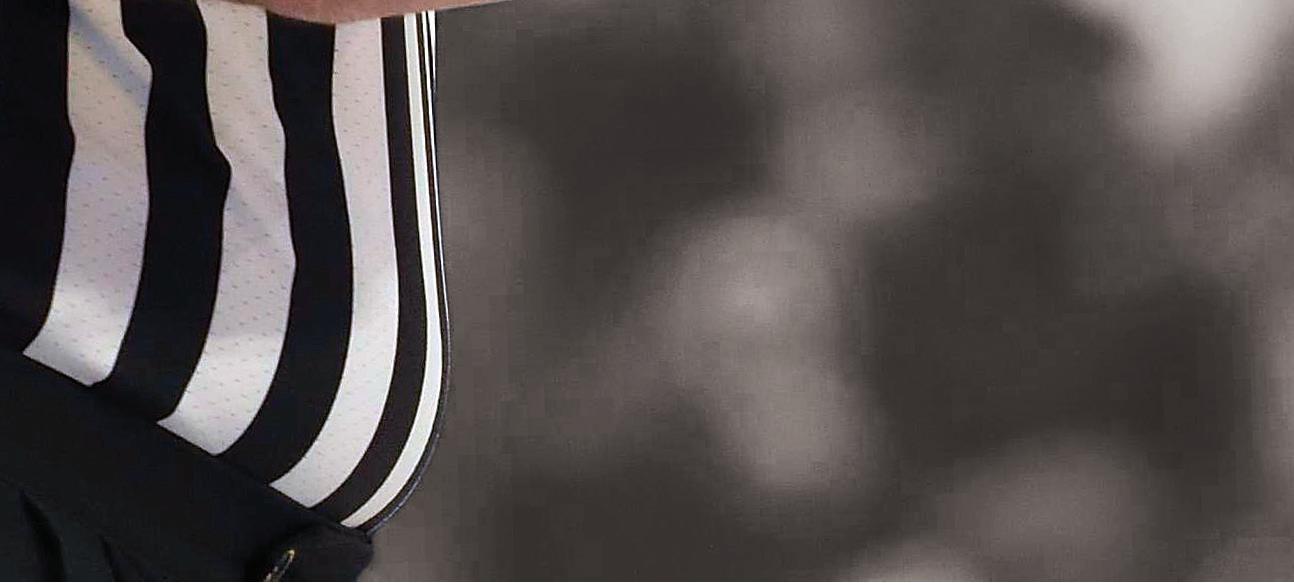
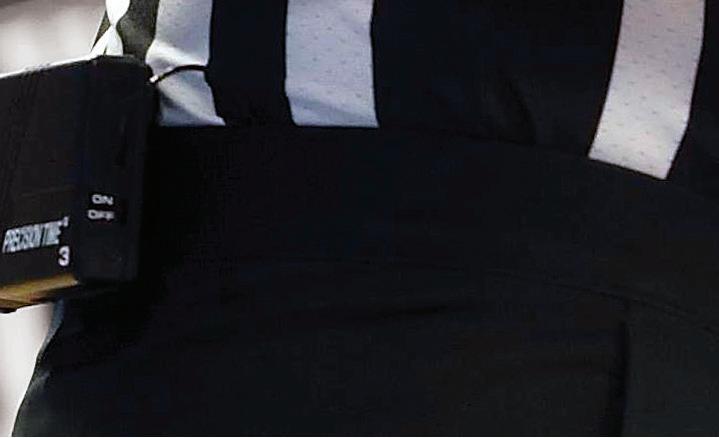





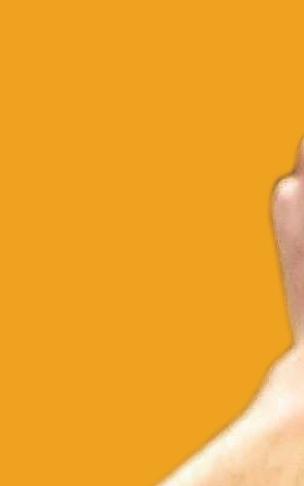
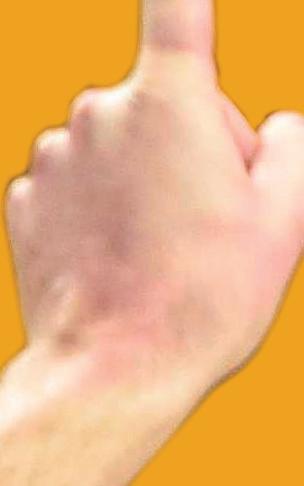



























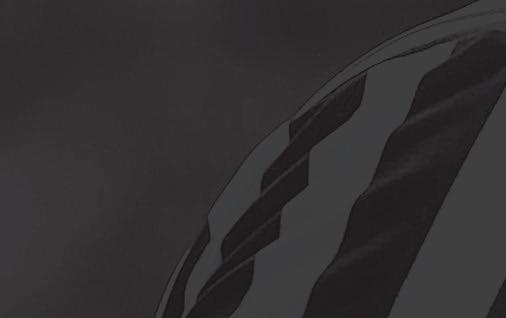
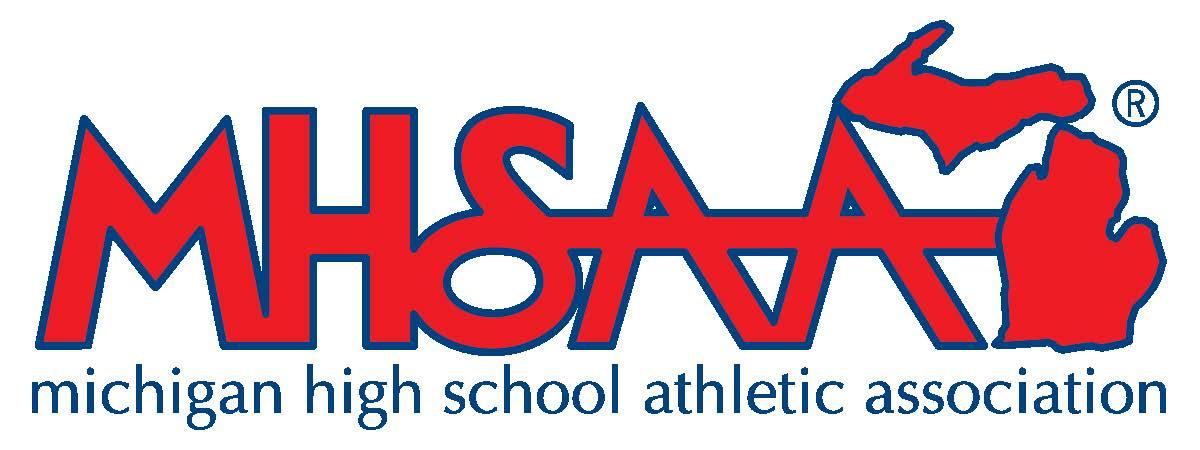
MOUND VISITS BASEBALL BASE LEAVING SOFTBALL HITS SESSION IT AGAIN APPEAL DECEMBER 2022 // REFEREE.COM your voice since 1976 $6.95 member edition GIMME 5 HIGH SCHOOL P.24 BASKETBALL SHOW & TELL SELDOM ARE WE WRONG P.36 THE STORY BEHIND NFL NUMBERS P.54
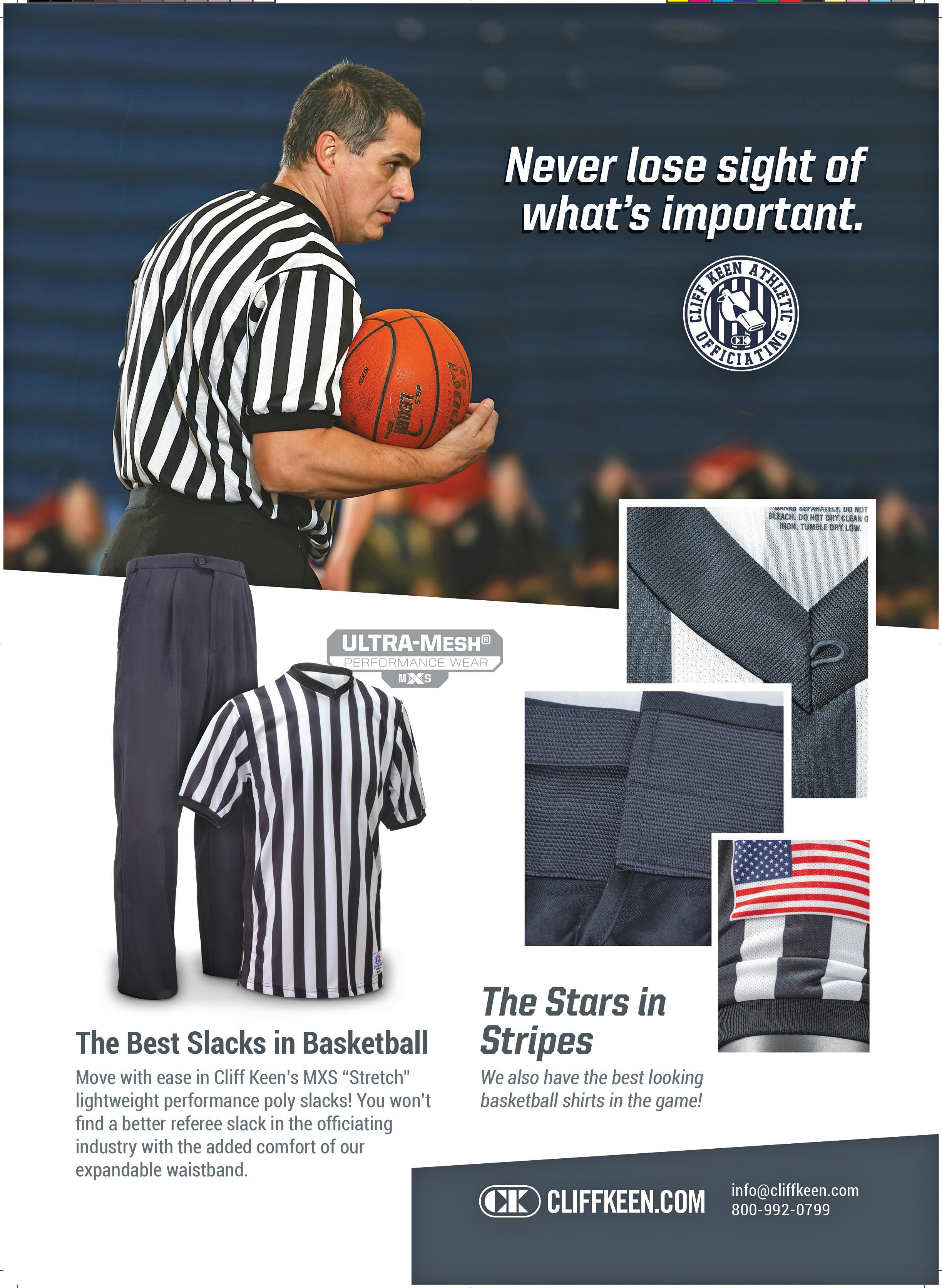
2
4 GIVE ME FIVE
Ancient wisdom from a Roman emperor and philosopher provides smart guidance to modern-day officials.
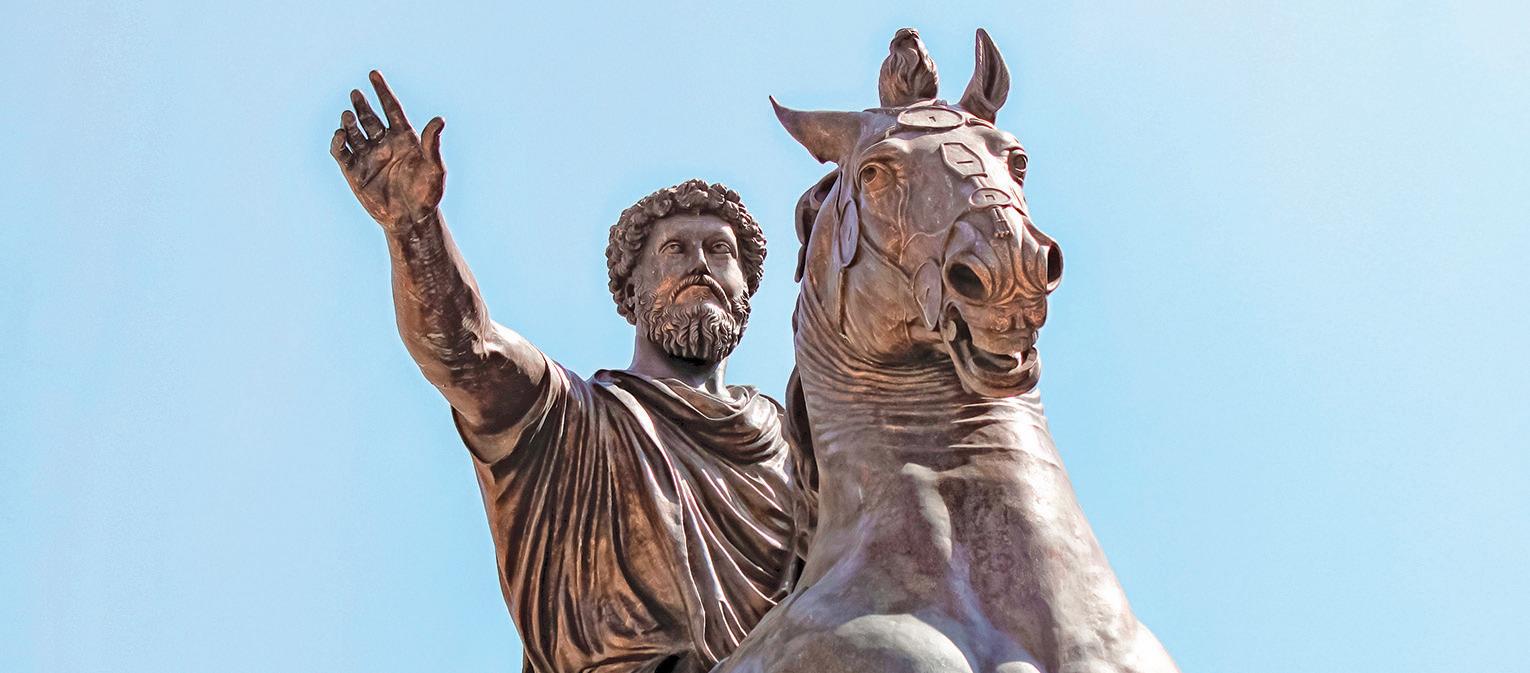
36 2022 ABSOLUTELY TRUE NO ARGUMENT LIST OF OUR OPINIONS
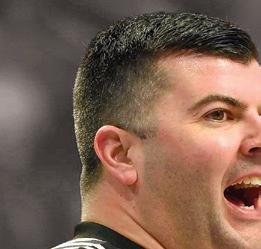
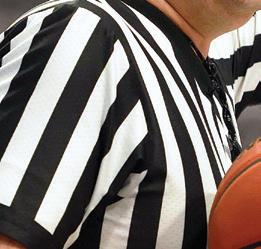
Our chance to add a little levity and express our thoughts on the world of officiating.
5

4 TAKE A NUMBER
You’d be surprised with how some NFL officials wound up with their uniform numbers, and the history behind those identifying digits.
76 THE STATE OF SHOT CLOCKS
Not all states will employ the shot clock the same, even with the NFHS now on board.
ON THE COVER
Nathan Sutton Greenup, Ky.
Age: 40

Occupation: Director of pupil personnel, Greenup County School District
Officiating experience: High school and college (D-II, D-III and NAIA) basketball referee for 12 years. Officiated two Kentucky High School Athletic Association state championship games, two Mid-South Conference tournament championships and two NAIA tournaments.
BASKETBALL
Sharing Is Caring: It’s Often OK to Verbally Communicate on the Court; Know When to Color Outside the (PCA) Lines; 5MW: Natasha Camy 30
VOLLEYBALL
The Four Cs of Professionalism: Take Your Refereeing to New Heights; Reservations About Re-serves; Make Time for Table Talk
FOOTBALL
Never Better Late: When Contact Out of Bounds Merits a Flag; Watch Out for Murphy’s Law; Playing the End (Zone) Game; In Order to Get It Right
SOCCER
Assist, Not Insist: Assistant Referees Must Yield to Referee’s Ultimate Judgment; Timely Reminders on Time-wasting
BASEBALL
Let’s Chat About Conferences: Rules Governing Mound Visits Differ by Level; NFHS POEs for 2023
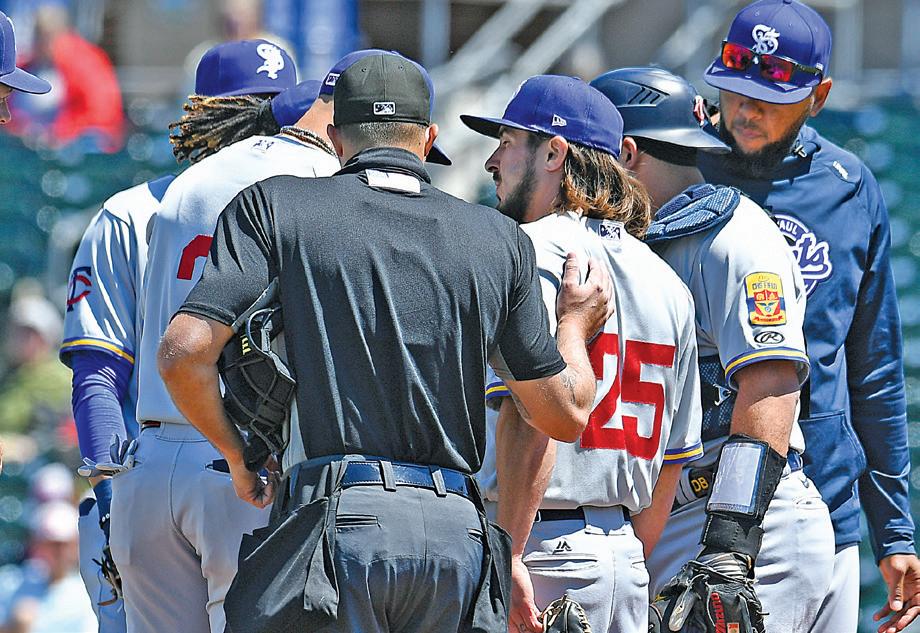
SOFTBALL
One on One: Keep Additional Coaches Away During Conversations; Watch ’Em Leave; R2, R3 With 2 U’s
Check Your Six: A HalfDozen Great Tips to Elevate Your Game; Review, Renew and Recover; The Last Game
COLUMNS
PUBLISHER’S MEMO Soft Is Hard
THE GAG RULE Letters: Enough Is Enough, Coach Appreciation; They Said It; Snap Shot
Fitzgerald Takes Role in NBA Officiating Office; Kentucky Baseball Umpire Assaulted; State Soccer Interpreter Issues Apology 58 GETTING IT RIGHT Golf for a Good Cause; Lacrosse Lionheart; NFHS, Iowa Battle Behavior 74 PROFILES
Sailing Off Into Retirement; He Makes the Calls and Answers Them; A Loyal
Serviceman and Official to His Corps 82 FOR THE RECORD 2022-23 NHL Officiating Roster 84 LAW

In Fighting Form; Take a Waiver on Post-Injury Waiver; Can’t Complain 85 CLASSIFIEDS

Camps/Clinics/Schools; Equipment/Apparel; Leadership Resources
86 LAST CALL
The Unintentional Referee: When I asked what I was supposed to do, the answer was start marshal. I said, “That’s fine. What’s a start marshal?”
Find Referee Magazine on Facebook and follow RefereeMag on Twitter
CONTENTS
Volume 48, No. 12 Issue
DECEMBER 2022
554
FEATURES SPORTS 16
42
48
60
8
6
78 ALL SPORTS
4
10
12 THE NEWS
SHUTTERSTOCK
20
FOR MORE, GO TO PAGE 60
The rules governing mound visits and other conferences differ at the NFHS, NCAA and pro levels. Justin Robinson, St. Louis
BASEBALL HIGHLIGHT THIS MONTH
Soft Is Hard
Isn’t it marvelous how the practice of officiating has embraced the age of technology?
We have jumped on board with both feet. We have the platforms and the plays. We are watching and evaluating video as never in our history.
The focus has been almost exclusively on the “hard skills,” those such as: rules study, play-calling, philosophical approach, positioning, reviewing and test-taking. It is those that now form the basis of potent officiating.
Anything missing here? Yup, there is. Conversation. Huh? Conversation that is derived from in-person local association meetings. Conversation among us officials about the conflictresolution aspect of our responsibilities. Conversation within our ranks about how to better interact, mentor, give feedback and support each other.
For the sake of this column, let’s call these skills of communicating the “soft skills” of officiating. This set of skills seems to have been pushed into the background of our training and evaluation. Now, I grant you, the “hard skills” are easier to acquire, easier to review and easier to evaluate. The softskill set requires more than knowing the rule, being in the right spot at the right time and looking at myriad video monitors.
This soft-hard conundrum was driven home to me during NASO’s recent Summit in Denver. We had more than 450 officiating leaders in the building and they spent plenty of time talking to each other. Just listening to the presentations on stage and, importantly, the conversations in the hallways and side rooms, seemed like a quick grad school course in the art and science of officiating.
What became clear to me was this: Many officiating leaders have become reluctant to voice their concern that an overreliance on technology is beginning to erode person-to-person communications within officiating,
weakening officiating. Communication skills have become seriously lacking, certainly since the pandemic.
The ability to have a productive conversation is becoming a lost art. This seems especially true when it comes to those critical times involving conflict resolution and crew cohesion. The belief is this has especially become the case within the youngest generation of officials.
A number of the Summit attendees
I had a chance to speak with seemed to share a common viewpoint: Officiating needs a strong dose of soft-skills emphasis and training. We need to talk about what we should be talking about. Such things as: specifically using conversation within a crew to build cohesion; using words to properly handle challenging personalities; getting smarter about when to use conversation rather than communication via email and text; how to wordsmith an appropriate and effective game report … and more.
These leaders also wanted to have attention focused on the skill-set needed to properly deliver feedback about an officiating performance — feedback designed to improve officiating performance, not burn-down but rather build-up. Another topic had to do with officiating’s seeming reticence to talk about conflicts of interest and issues of integrity, both at the very core of our endeavor.
These matters will not better themselves through “pixel-dusting.”
They each take thoughtful, wellreasoned discussions between human beings. There is no shortcut, no button to push, no mouse to click. These things require that we speak to each other in some depth, listen attentively to each other and then act with care and coherence. We used to be better at it.
Chief Strategy Officer/Publisher Barry Mano
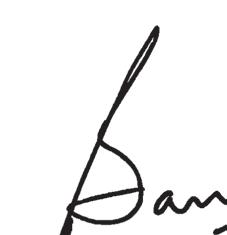
Chief Operating Officer/Executive Editor Bill Topp
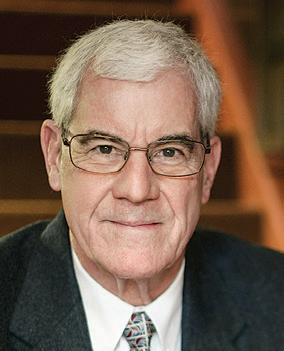
Chief Marketing Officer Jim Arehart
Chief Business Development Officer Ken Koester
Managing Editor Brent Killackey Assistant Managing Editor Julie Sternberg Senior Editor Jeffrey Stern Associate Editors Brad Tittrington Scott Tittrington Copy Editor Jean Mano
Director of Design, Digital Media and Branding Ross Bray
Publication Design Manager Matt Bowen Graphic Designer Dustin Brown Video Coordinator Mike Dougherty Comptroller Marylou Clayton

Data Analyst/Fulfillment Manager Judy Ball Account Manager Joe Jarosz
Director of Administration and Sales Support Cory Ludwin Office Administrator Garrett Randall
Customer Service Support Specialists Michelle Murray Lisa Burchell
Editorial Contributors
Jon Bible, Mark Bradley, George Demetriou, Alan Goldberger, Judson Howard, Peter Jackel, Luke Modrovsky, Steven L. Tietz, Tim Sloan
These organizations offer ongoing assistance to Referee: Collegiate Commissioners Association, MLB, MLS, NBA, NCAA, NFHS, NISOA, NFL, NHL, Minor League Baseball Umpire Development and U.S. Soccer. Their input is appreciated.
Contributing Photographers
Ralph Echtinaw, Dale Garvey, Carin Goodall-Gosnell, Bill Greenblatt, Jann Hendry, Jack Kapenstein, Ken Kassens, Bob Messina, Bill Nichols, Ted Oppegard, Heston Quan, Dean Reid, VIP
Editorial Board
Mark Baltz, Jeff Cluff, Ben Glass, Reggie Greenwood, Tony Haire, John O’Neill, George Toliver, Ellen Townsend
Advertising

2017 Lathrop Ave., Racine, WI 53405 Phone: 262-632-8855

advertising@referee.com
REFEREE (ISSN 0733+1436) is published monthly, $46.95 per year in U.S., $81.95 in Canada, Mexico and foreign countries, by Referee Enterprises, Inc., 2017 Lathrop Ave., Racine, WI 53405. Periodical postage paid at Racine, WI and at additional mailing offices. Postmaster: Send address changes and undeliverables to REFEREE, PO Box 319 Congers, NY 10920. Direct subscription inquiries, other mail to REFEREE, PO Box 319 Congers, NY 10920. 1-800-733-6100. © 2022 Referee Enterprises, Inc. All rights reserved. (USPS Publication #107790.) Subscribers: Send address changes to REFEREE, PO Box 319 Congers, NY 10920.
PUBLISHER’S MEMO Watch the video at referee.com/pubmemo 4 | REFEREE December 2022















STANDING BEHIND YOU AND YOUR GAME Baseball • Basketball • Football • Lacrosse • Soccer Softball • Volleyball • Wrestling
NO GAME OF THE WEAK Are You Ready to Be in
Getting the big game — a state playoff contest, a showdown between traditional rivals or a game to decide a conference championship — is the goal of many officials. Chances are good the contest will be televised, broadcast on the radio or covered by scores of print reporters. The pressure will be ramped up. What does all of that mean to you? Are you prepared to handle the extra attention?
On game day, you’ll likely sense a different atmosphere when you drive into town or arrive at the site. In fact, you may want to plan your arrival earlier than normal to avoid traffic near the school or facility.
There will be a sort of electricity in the air when you take the field or court. Soak it in and enjoy it; after all, you’ve worked hard to get the assignment. But your pregame preparations and routine should remain the same. Although you may feel a bit anxious beforehand, you’ll want to work the game as if it were a run-of-the-mill contest. That attitude begins before the game.
The crew should conduct a thorough pregame meeting. Discuss how, as a crew, you are going to have a consistent approach to officiating philosophy and mechanics during the game. No game needs multiple officials doing their own thing, under the guise that each one is experienced and it is therefore OK.
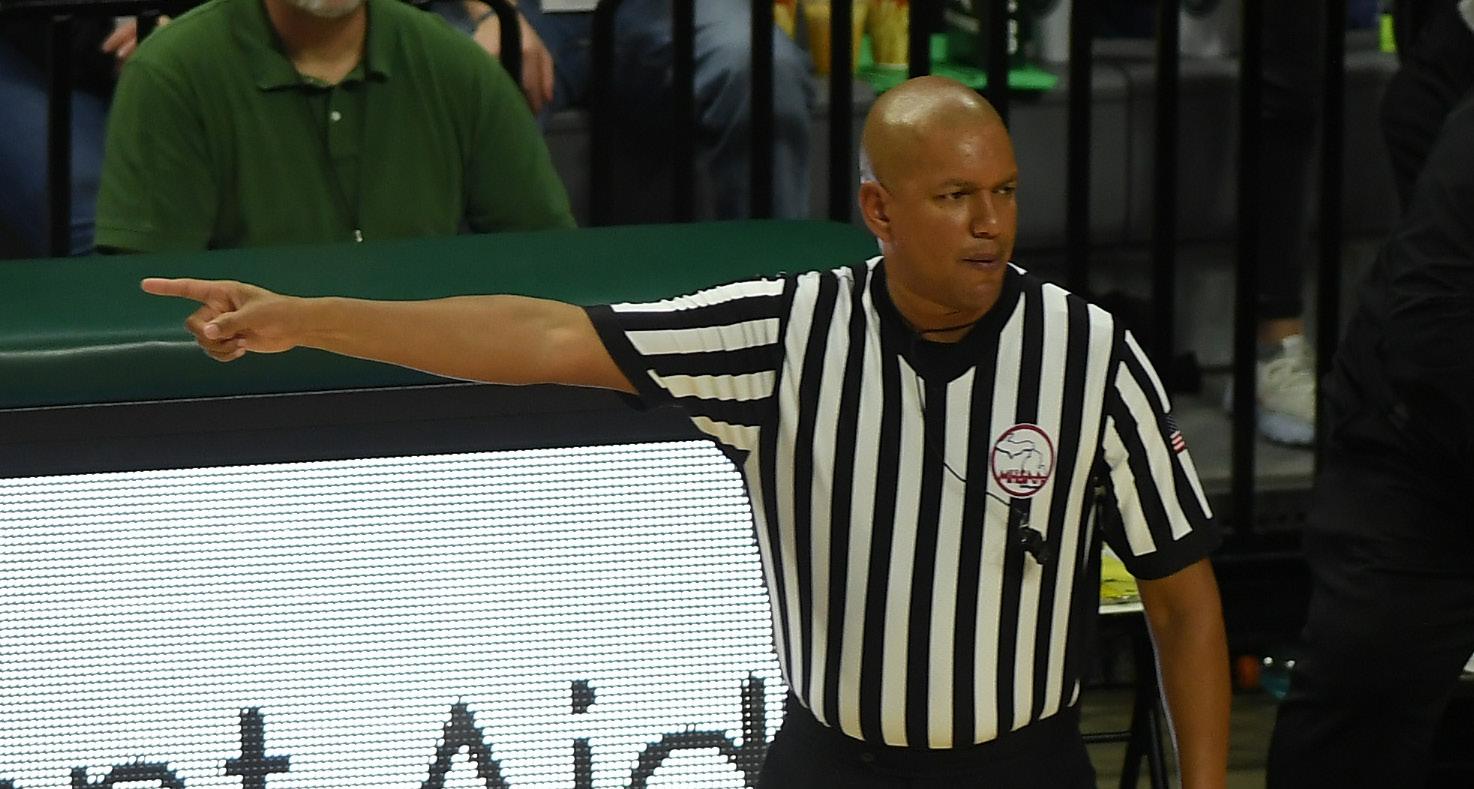
the Spotlight?
You are a crew. You need to handle rulings and situations consistently so that the players and coaches know what to expect from all the officials. Keep the pregame centered on the teams playing in that contest. Chances are a seasoned crew has already seen one or both of the teams, either that year or during a recent season. Use that institutional knowledge to your benefit to discuss strategic tendencies, whether they are extremely aggressive or more methodical, whether the coaches are
going to be a constant issue or are simply going to allow you to work.
If pregame meetings with coaches are required, cover everything required by the rules of your sport but keep the meeting as brief as possible. Forget clichés such as, “We want a good clean game.” Sidestep any suggestions from the coaches that you need to be especially vigilant. Avoid a response such as, “Coach, this is just another game to us,” which implies a casual attitude to your job. A better response would be something like, “Coach, the best teams are here, including the officials. Let’s all go out and have a great game.”
Once the game begins, don’t fall into the trap of playing to the camera. Give your signals crisply but don’t exaggerate them. Avoid false hustle. If the increased pace is better, why aren’t you using it all of the time?
The bigger the game, the more people will try to capture the action visually. That means photographers or TV camera operators will try to position themselves closer to the field or court. Be as cooperative with them as you can while remembering the safety of players and officials (and the media as well for that matter) is paramount. If you need help from game management to establish boundaries for the media, do so.
6 | REFEREE / MHSAA December 2022
Wherever there is a sporting event, there will be still photographers, videographers and anyone with a cellphone to capture the action. That includes the officials. When a championship is on the line, the interest is magnified. Although your officiating shouldn’t change, you can’t simply ignore the extra attention.
Rob King, Kalamazoo, Mich.
$6 million General Liability Coverage
Excess coverage for claims for bodily injury, property damage and personal and advertising injury (defined as slander or libel) up to $6 million per occurrence general liability limit with a personal aggregate of $14 million.
Assault-Related $15,500
Coverage
Provides coverage for certain legal fees and medical expenses and game fee losses resulting from injuries suffered when an official is the victim of an assault and/or battery by a spectator, fan or participant while officiating.
$100,000 Game Call and Assigners’ Coverage
Up to $100,000 coverage for claims involving a challenged game call which resulted in a claimed financial loss or a suit against an assigner by a disgruntled official.
Referee Digital Magazine
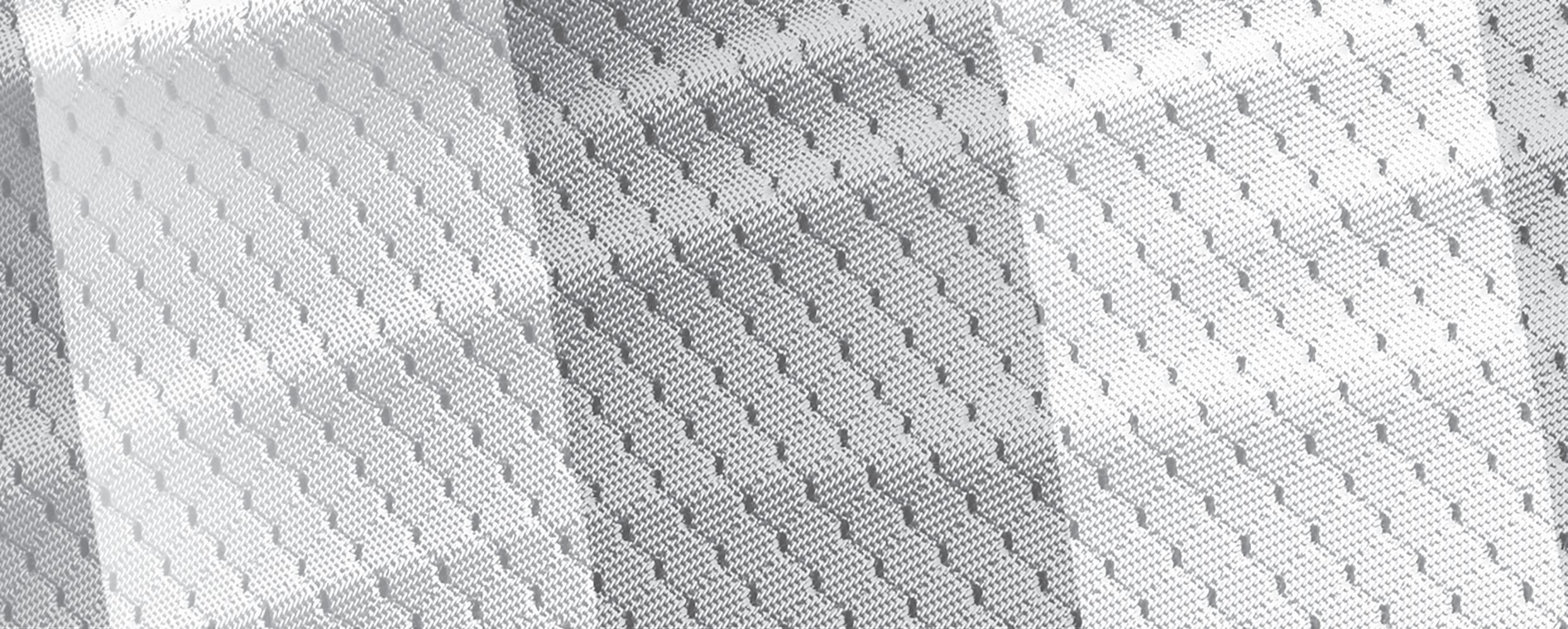
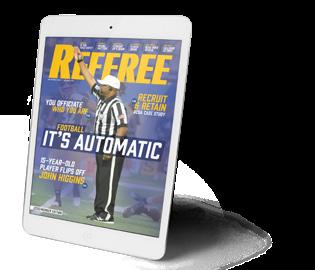
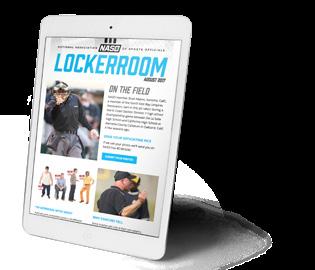
Allows you access to a digital customized MHSAA-version Referee magazine to read wherever you’re on the go.
MHSAA NASO members will receive exclusive MHSAA content through the digital magazine. Referee is the number one source of information for sports officials, written by officials. Each issue includes news columns and journalof-record reports and deep-coverage sport-specific sections complete with rule interpretations and caseplays.
Referee Magazine (NASO Print Edition)
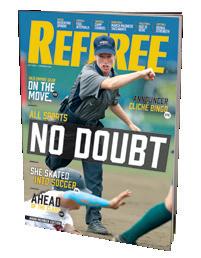
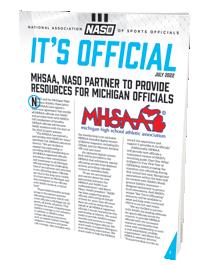
MHSAA members have the option to upgrade to the print version of the magazine, delivered to your mailbox every month. 84 pages of in-depth feature stories as only Referee can report them.
It’s Official Newsletter
Monthly 16-page newsletter providing association news, information, caseplays and educational product discounts.
LockerRoom
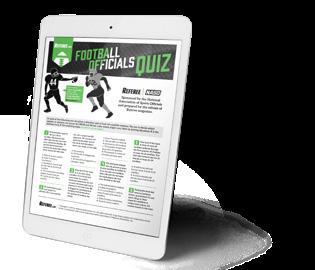
Online newsletter includes latest news on NASO, officiating techniques and philosophy.
Interactive Sport Quizzes
Online access to sport quizzes that will help you improve your knowledge of the rules.
Officiating Resources
Special Members-only buying discounts on Referee and NASO publications. Savings up to 20%.
Marriott VIP Card
Provides discounted rates at Marriott & Starwoodbranded hotels within the US and Canada, subject to availability.
With the VIP card, NASO members may receive a room rate of up to 25 percent off the regular price at participating hotels where space is available. The Athletic VIP card must be shown at check-in.
Registration Discount to
The Sports Officiating Summit Members only registration discounts.
Ump-Attire.com 10% discounts
Member Information & Consultation Program (MICP)
Provides help when you need to sort out an officiating related issue, includes both free information and free consultation with a knowledgeable person.
2017 Lathrop Ave Racine, WI 53405 262-632-5448 naso.org naso@naso.org
Any Game, Any Time, Anywhere — You Are Covered Insurance (Sports Officials Security Program) NASO covers common gaps in other officiating insurances, protecting you when other officiating coverages come up short. Publications Discounts & Savings Information Services Contact NASO MEMBER BENEFITs & services NATIONAL ASSOCIATION OF SPORTS OFFICIALS
Address: Phone: Web: Email:
Remember that there may be microphones near the playing surface. You don’t want to say something unprofessional when dealing with sideline personnel, players and crewmates. If you are wearing a microphone as part of your duties, consider that it is live all of the time. When you do activate it, know what you’re going to say beforehand so you sound confident and measured. Also, be sure you’re away from players, who
may spew unpleasantries.
If a controversial play occurs during the game, the press may approach you for a clarification or comment. If a conference supervisor or similar official is on site, refer the reporters to that person. If not, you’re better off declining comment. Reporters, especially those on tight deadlines, often don’t have time to get the sort of detailed explanation an unusual or controversial play requires. Sadly,
some even have an agenda to make the officials look as bad as possible and can take your words out of context to cast you in a negative light. Even live TV has its pitfalls. Avoid them by leaving the comments for someone else.
When possible, get a copy of the telecast. Because television usually offers multiple camera angles, the tape is a great learning tool. Beyond that, it’s a great keepsake and a reminder of the fruits of your labor.
Game Over? There’s More to Be Done
The clock has hit triple zeros. The last out has been made. The winning point has been scored. The game is over. However, your duties and responsibilities as an official are far from complete. Just as officials should have a good plan for before the game, they should also have one for afterward.
1. FOLLOW THE RULES
Any rule-required duties must be addressed. For example, basketball officials are required to verify the final score. While most officials do that with a nod and a wave since they’ve checked the book during a late timeout, it still has to be done.
2. LEAVE TOGETHER
In all likelihood, you entered the field or court together and that’s how you should leave it. No official should linger for any length of time after the game is over. Making yourself available for compliments from the coaches is unseemly. By the same token, no official should sprint off the field or court so quickly that he or she leaves a partner behind. That is especially true if there is any possibility of an official being confronted by a player, coach or fan.
3. ITEMS THAT REQUIRE REPORTS
If the game had an ejection or other incident that requires a report be filed, the officiating crew should discuss the situations and any incidents that happened before or after that were
directly related to that event. All officials should be in agreement as to what will be included on the report. In general, the official who had the ejection should be the one to write and submit the report. However, he or she should not actually turn it in until it has been read by others in the crew.
4. CREW EVALUATION
Upon reaching the locker room or parking lot, the most senior official on the crew should initiate the discussion and be the one to admit mistakes first. That will open the discussion for newer officials to feel less threatened for admitting mistakes.
Officials should never begin the discussion by asking, “Did you see anything?” and being satisfied with no response. A better question to ask might be, “Was there anything out there today that you saw that I could have done better or that you didn’t understand?” Among the topics to think about: judgment plays, rule interpretations, proper positioning, crew mechanics and situation management.
5. DEPARTURE
Once all discussion is completed and officials have showered and cleaned up, everyone should leave the school or stadium at the same time. Be sure each official’s car starts and that all cars are moving.
6. POSTGAME REFRESHMENTS
If you decide you’re going to grab a meal or some beverages after
the game, think about putting some distance between that emporium and the game site. Most important, be sure not to pick a place you know is a favorite gathering place for fans of either team. You may think you’re not recognizable out of uniform, but you have more of a celebrity status than you think. Don’t take the chance of inviting a confrontation or a debate with fans.
8 | REFEREE / MHSAA December 2022 CONTENT NEEDED! We are accepting contributors for MHSAA Referee Magazine content for articles on specific rules, mechanics and features on officials. Selected contributors will compensated for their time and effort. Most articles are expected to run between 500 and 600 words. Email brent@mhsaa.com if you’re interested in contributing.
Officiate with Capital Eyes
When communicating with partners, players or coaches, good eye contact is an effective officiating tool, one that can prevent a small issue from becoming a big problem.
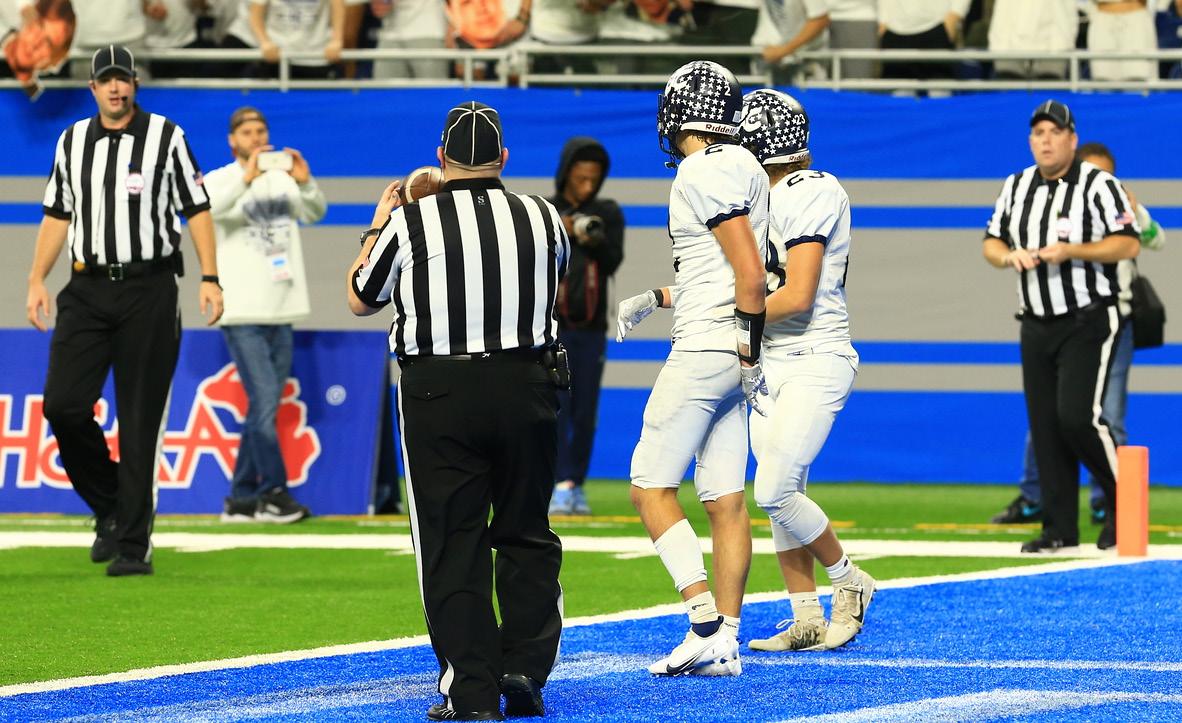
It’s necessary that each official knows where the other or others will be on the field or court. Making eye contact with a crewmate, perhaps along with a hand gesture, can serve as a reminder that, “The infield fly rule is in force,” or “I’m ready for the restart.”
Eye contact is critical on those bang-bang plays when two officials are in the vicinity. Make eye contact with your partner so you’re both on the same page on a call and avoid an opposite call.
If you’re reporting a score, foul or other information to table personnel, be sure to catch the eye of the official scorer. That is especially important late in games, when timeouts are precious and confirming the value of points scored is crucial.
If you and the scorer have made eye contact, there’s less likelihood that the wrong player will accidentally be charged with a foul
or penalty or be awarded points. Some scorers may even help you by mirroring your signal of the number of the player who committed the infraction.
Making eye contact might be particularly necessary at lower levels, where scorers and timers may have little or no experience. In youth or lower level games, scorers are sometimes adults whose kids are participating, or youngsters who can’t seem to give up texting while the game is in progress. But it’s no less important elsewhere.
There are situations in which the foul could have been called on one of two players. Then it is even more important to convey the proper information.
If you’re holding a conference with your partner or partners, make eye contact with each one of them individually. It’s important to interact with the rookie back judge the same way you do with the umpire you’ve worked with every week for the past eight years. Nothing builds a young official’s confidence more than being treated as an equal by veterans.
Sometimes you can detect that
“deer in the headlights” expression that lets you know the official needs time to process what has just occurred.
Communicate, don’t dictate. If a coach or player wants to ask you about a play or a rule interpretation, look him or her in the eye. Avoiding eye contact creates the impression that you’re unsure of yourself or your decision.
Don’t glare at coaches as you would an undesirable intruder or look past them as if they don’t exist. Adopt the same expression and demeanor you would if the two of you were conversing in a business meeting. That is especially important if the game is televised. The moment you grimace or your face conveys a negative emotion, you can bet the camera will be on you.
If it’s necessary to penalize or eject the coach, your facial expression shouldn’t change. Don’t give a look that implies you’re enjoying yourself.
Eye contact may seem like a minor point. But done properly, it conveys a message of competence and professionalism that will enhance your game management skills.
REFEREE / MHSAA December 2022 | 9
LETTERS
Enough Is Enough
Thirty-five years ago, I discovered one of the two loves of my life — volleyball (the other being my wife). I started officiating rec league games in 1992. In 2008, I became certified to work high school games in Nassau County, N.Y. In 2021, I was chosen to be the rules interpreter for my association, a huge honor.
This year, I quit.
Why would I walk away from getting paid to be involved with the game I so adore, that’s been such a huge part of my life? The coaches.
Far too many nights, I left the gym deeply disturbed by their actions. To be clear, the kids were virtually always wonderful. But the behavior of some of the alleged grown-ups was so toxic, I found myself regularly questioning why I would put myself through it.
For so many of them, screaming across the court, stomping their feet and questioning call after call was standard behavior. This was high school volleyball, not the World Series, and millions of dollars were not at stake. Rather, we were in the business of providing what should have been a fabulous experience for the kids. They should have been learning athletic skills, teamwork and, most importantly, sportsmanship.
When a coach is whining about every ballhandling situation, every supposed touch, every close line call, what kind of example do you think it’s setting for the kids?
A horrific one, that’s what kind. And one I simply couldn’t watch any longer.
Billy Bloom Roslyn Heights,
N.Y.
Coach Appreciation
Interesting look behind the scenes on creation of this magazine and a national association working on behalf of sports officials (Publisher’s Memo, 9/22). Local attorney William F. Kolbe clearly was one of those rare individuals you encounter in life who not only guides you in your dreams but helps make them happen. Without him hundreds of thousands of sports officials might not be enjoying Referee magazine and the many benefits of membership in NASO.
Thank you, “Coach K!”
Mark Mittelstadt Tucson, Ariz.
SNAP SHOT
It Was a Ruff Job, But Someone Had to Do It
Teams have used many methods to get balls to the plate umpire. The Chicago White Sox once had an underground bucket. When the umpire stepped on a button behind the plate, the bucket would emerge and a fresh supply of balls would be delivered. The Myrtle Beach (S.C.) Pelicans, a Class A affiliate of the Chicago Cubs, have used dogs to do the job. The photo was taken during Deuce the Dog’s last game in 2014. Early in his career, he was the team’s bat dog, too. Deuce, an English Yellow Labrador Retriever, was the team’s second dog mascot. Dinger served in a similar role from 1999-2009.

THEY SAID IT
“I’ve had to shed tremendous amounts of preconditioned responses. I listen to the Harvard women’s business podcast all the time. I’ve done a tremendous amount of reading on all these potholes women tend to fall into: apologizing. Not taking the lead with male counterparts. Letting them do it first. The great thing about sports is once you know the ground rules, you just play the game.”
— Jen Pawol, one of two women (Isabella Robb is the other) currently umpiring in the minor leagues
COURTESY MYRTLE BEACH PELICANS
SOURCE: REFEREE SURVEY OF 164 OFFICIALS
15.2 % YES 84.8 % NO
GAG
WHAT PEOPLE ARE SAYING 10 | REFEREE December 2022 Tell Us What You Think Send email to letters@referee.com Send letters to: Editor, Referee, 2017 Lathrop Ave. Racine,
53405 Opinions expressed in “The Gag Rule” are not necessarily those of Referee. Unless otherwise stated, letters sent to Referee are intended for publication and become the property of Referee
Should high school officials have to deal with uniform-related rules, except to file an afteraction report with the state association?
THE
RULE
Wis.
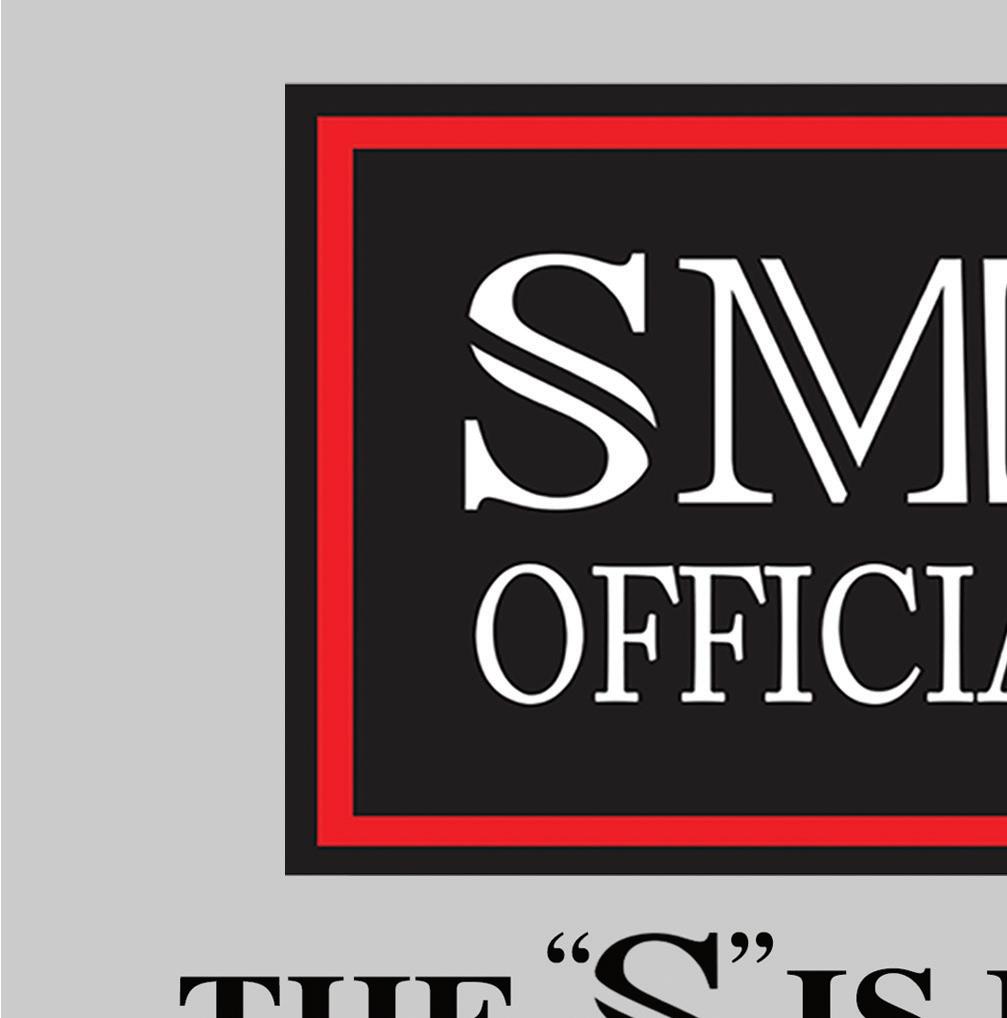
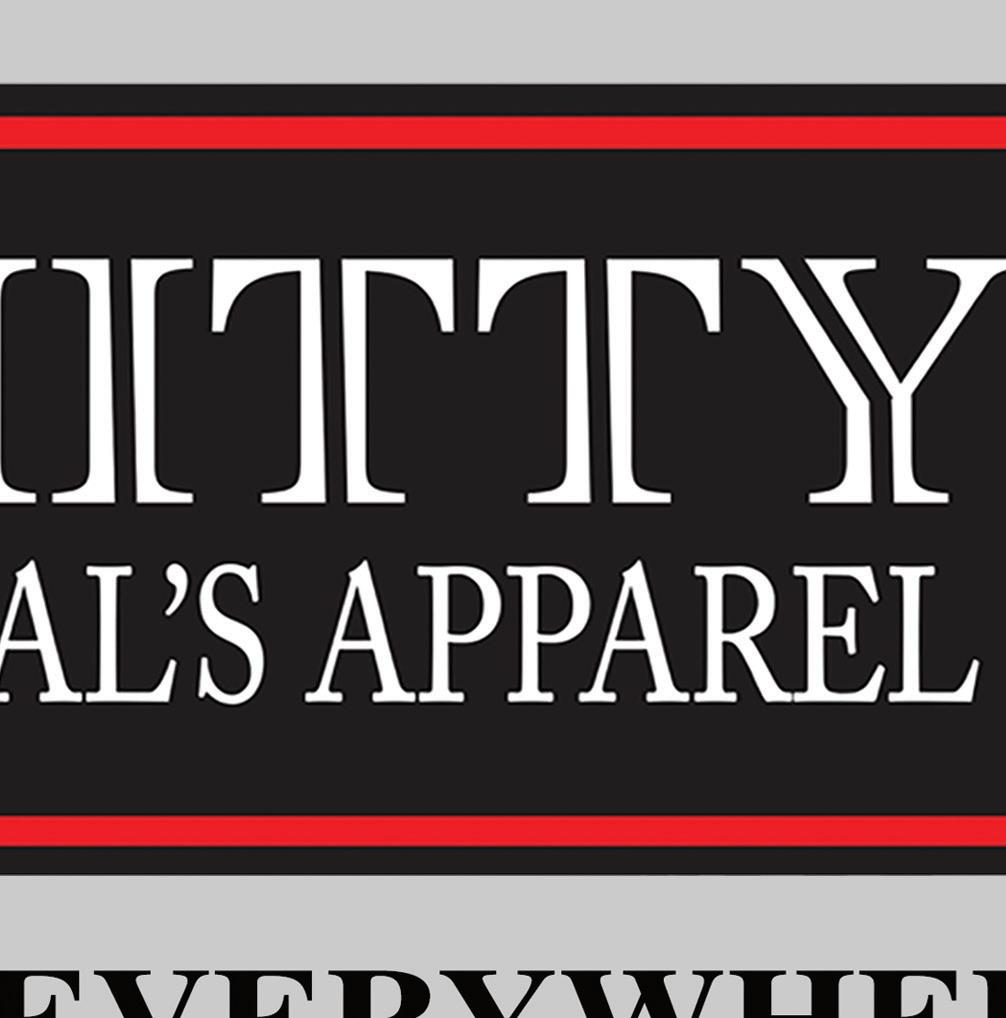



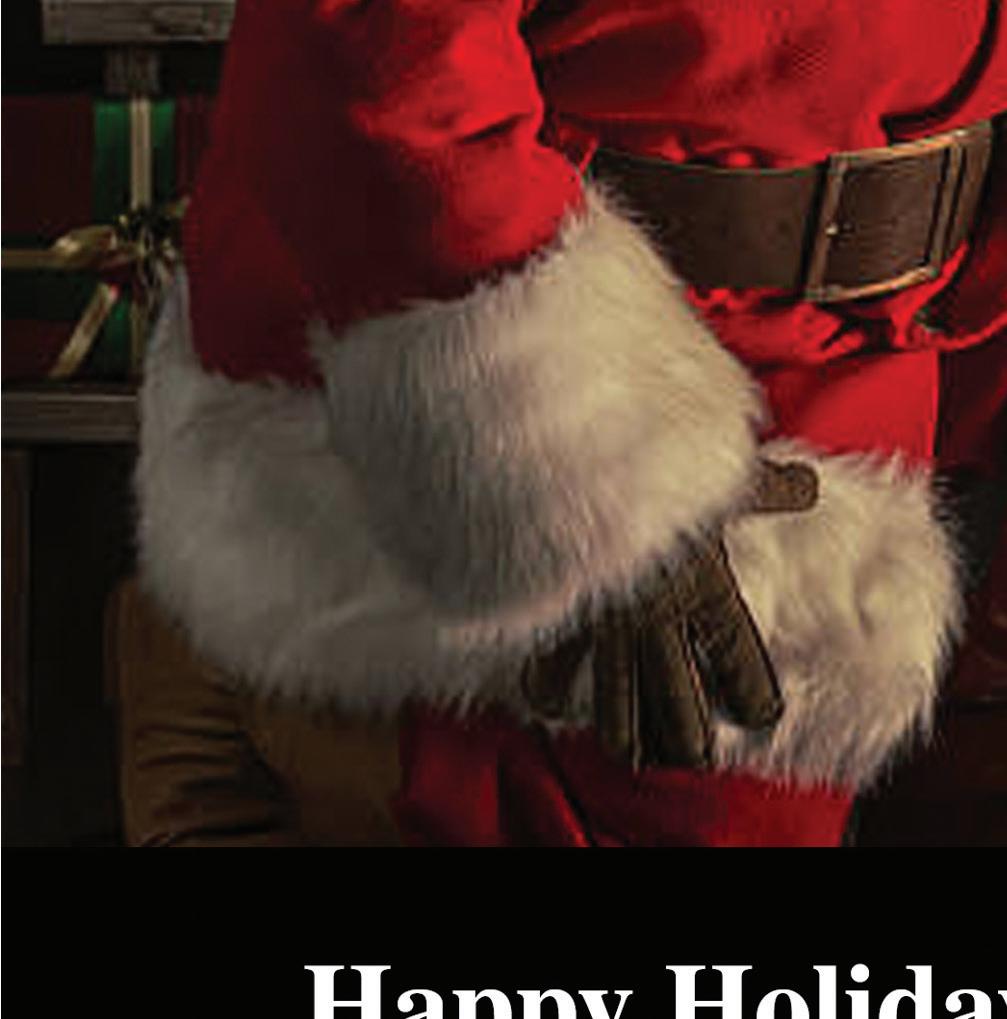
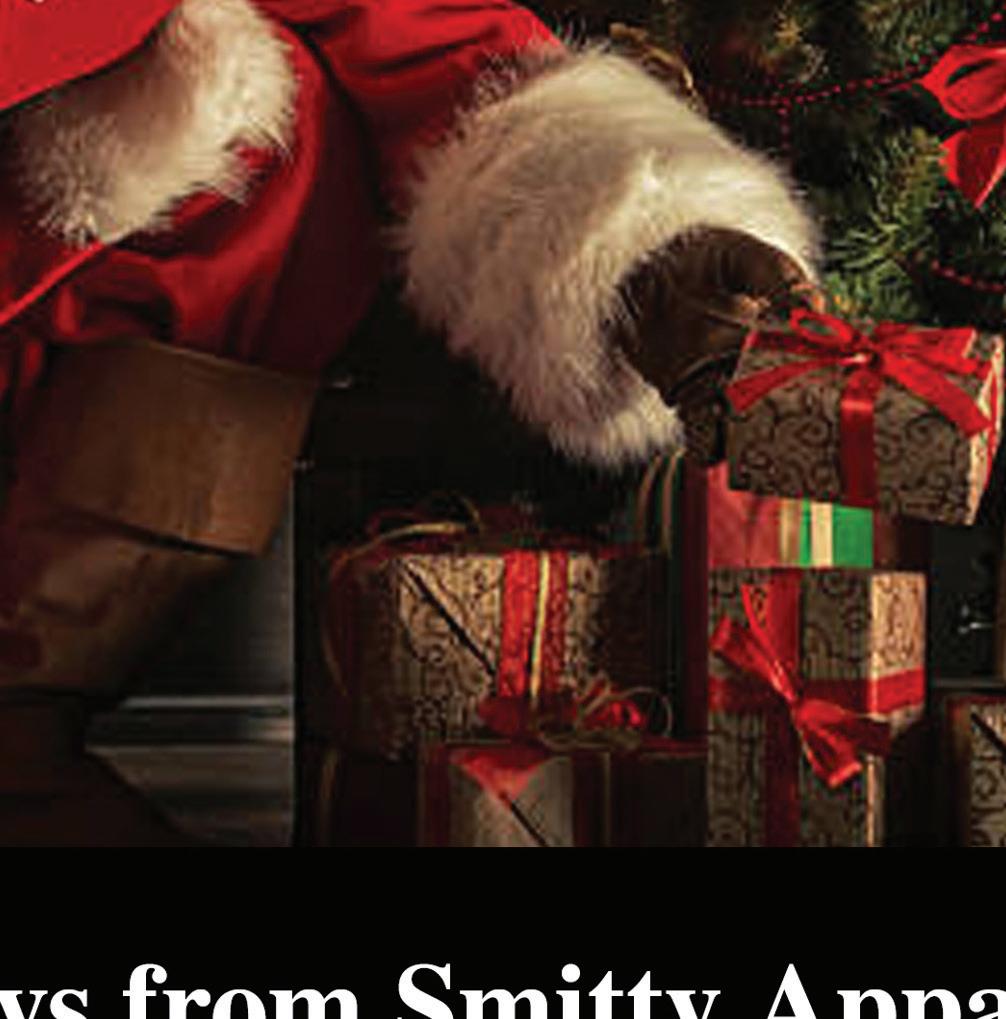


Fitzgerald Takes Role in NBA Officiating Office
NEW YORK — Kane Fitzgerald, a 13-year NBA officiating veteran, left the floor to become the NBA’s new vice president of referee operations and replay center principal, the league announced in September.
He officially started in the role on Sept. 18, taking over for Jason Phillips, another former on-floor NBA official for 19 seasons who left the VP role after three years.
“I’ve always kind of been excited about new challenges, and it’s a rare opportunity that you can come off the floor as a referee and find a position in the NBA of this magnitude,” Fitzgerald said in an interview with the Associated Press. “I’m excited about the challenge, something new, something different, seeing if I can grow into the role and being as successful as I was on the floor.”
Fitzgerald, 41, began his officiating career working high school games in his native New Jersey. He moved into the college ranks, working in the Atlantic Sun, Big South and Ohio Valley conferences, then transitioned into professional basketball, spending
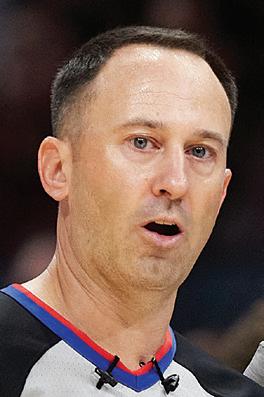
two seasons in the WNBA and four seasons in the G League.
He made his NBA debut during the 2009-10 season and finished his on-floor career working 779 NBA regular-season games. He also worked 66 NBA playoff games, including four Finals games, the last of which came during Game 4 of the 2022 Finals between the Boston Celtics and the Golden State Warriors. He also officiated the 2022 NBA All-Star Game in Cleveland.
Fitzgerald’s new role will include oversight of the day-today operations of the NBA Replay Center in Secaucus, N.J. He will also be involved with referee operations including creating training videos and interpreting the rules of the game for officials, teams, broadcasters and media.
“Kane’s broad experience and distinguished record as an NBA official make him well suited to oversee our efforts to maintain the highest of standards for the NBA Replay Center,” said Byron Spruell, the NBA’s president for league operations, in a news release issued by the NBA Communications Department. “We are fortunate that he will bring his skills and expertise to such an important leadership position.”
NBRA, NBA Ratify New CBA
The National Basketball Referees Association (NBRA) announced on Sept. 15 the ratification of a new collective bargaining agreement with the NBA.
The sevenyear agreement begins with the current 202223 season and runs through the 2028-29 season. Citing league policy, the terms of the agreement were not disclosed.
The NBRA said in a news release the contract addressed salary, travel, pension and marketing rights issues and was ratified by an “overwhelming majority” of the NBA referees.
“We are pleased with the outcome of the negotiations,” said Marc Davis, NBA referee and NBRA executive board member, in a news release. “The league has made clear that they value the contributions we make to the game’s integrity, and we look forward to a long and prosperous relationship together. We are all excited to start the new season.”
See “New CBA” p.11
High School Referee Quits Mid-Match
A high school soccer official in Michigan, apparently fed up with heckling from the stands and comments from players and coaches during a contentious match between Gaylord and Traverse City Central high schools on Sept. 13, called it quits mid-match. ThePetoskey News-Review reported the departing official told his fellow
officials, “I don’t need this,” before walking off the field not to return. The score was tied, 3-3, in the second half. The two remaining officials and head coach met before deciding to finish the match with a reducedsize crew. Before the match continued, the Gaylord coach spoke with the team’s fan base, asking them to respect the remaining referees. Traverse City prevailed, 5-3.
SoCon Joins Officiating Consortiums
The Southern Conference announced in late September it had joined with the SEC and other conferences in officiating consortiums in two sports. The SoCon joined the SEC, ASUN, Ohio Valley, Southland, Southwestern
Athletic and Sun Belt conferences in a women’s basketball officiating consortium and with the SEC, ASUN, Ohio Valley and Sun Belt conferences in a baseball umpiring consortium. The SoCon has been a member of the SEC’s football officiating consortium since the 2020 season and a member of the SEC men’s basketball officiating consortium since the 2020-21 season. The
THE NEWS THE WIRE 12 | REFEREE December 2022
TODAY
SOURCE: NBA.COM BRIAN WESTERHOLT/USA
SPORTS
THE ONLY OFFICIAL COLLEGE MECHANICS MANUALS













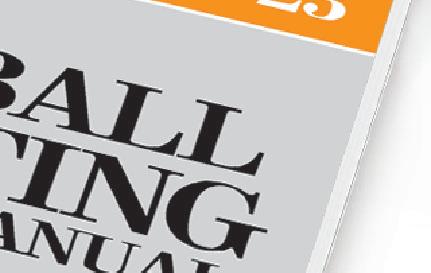


The CCA officiating manuals are the only official source for college basketball mechanics. When you pair your rules knowledge with advanced mechanics, illustrated with MechaniGram® graphics from Referee, you will confidently be in the right place at the right time to make every call.





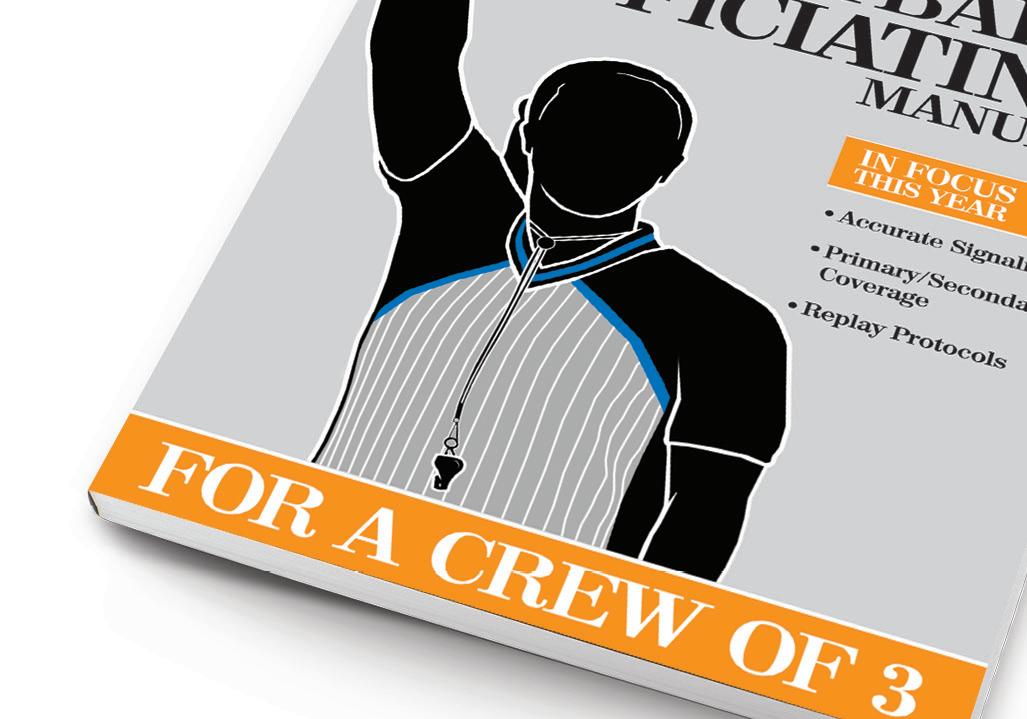
Pages: 192 Pages: 192
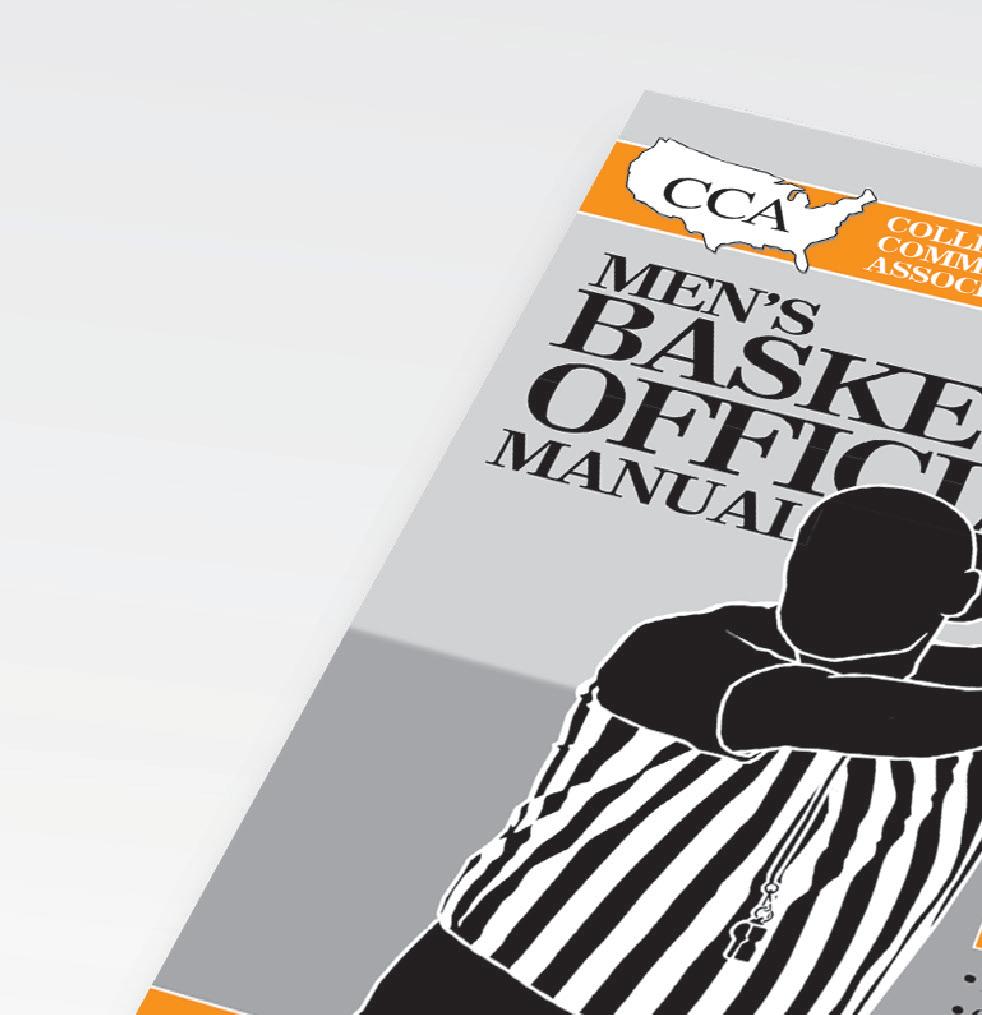
GET YOURS TODAY! // STORE.REFEREE.COM/BASKETBALL
$1995 EACH ONLY ALL NEW FOR THE 2022-23 SEASON!
Youth Baseball Umpire Assaulted in Kentucky
OWENSBORO, Ky. — A 30-year-old Owensboro, Ky., man was arrested Sept. 15 for punching an umpire during a Southern Little League baseball game involving 6- to 8-yearold players.
Glendle Cain faces charges of assault of a sports official and alcohol intoxication.
According to the Owensboro Police Department, Cain attempted to enter one of the team’s dugouts while watching a game involving his son. He was asked to leave, but refused. Umpire Craig Crawford then asked Cain to leave the premises. Cain became belligerent and struck Crawford in the face, knocking him to the ground.
Cain was then restrained by offduty Kentucky State Trooper Alec Winters, who was attending the game.
Crawford told WEHT-TV that he next remembered waking on the ground with one of his fellow umpires and a nurse checking on him.
First responders initially thought Crawford’s jaw may have been broken from the punch and photos of his jaw went viral on social media following the event. Doctors later assessed no bones had been broken, but the impact left Crawford’s jaw swollen and bruised.
Crawford said he never expected something like this to happen to him.
“Unfortunately maybe I should,” Crawford said. “Maybe I should be on guard but you know we’re a small community. I’ve never had any situation like this happen.”
According to the Owensboro Police Department, Cain has a long list of previous charges against him, including drug possession, disorderly conduct, alcohol intoxication, as well as other infractions. He was booked into the Daviess County Jail on a $10,000 full cash bond.
Crawford, who has been umpiring for more than 20 years, returned to umpiring shortly after the incident. Coaches and players welcomed him back.
“As I was walking towards the field, a 7-year-old walked up to me he goes, ‘Are you Mr. Craig?’ I said, ‘Yeah,’” Crawford said. “He goes, ‘I’m super glad you’re OK.’ He reached up and gave me a big hug.
“Tears were running down, I was like, ‘Oh my goodness.’ Next thing I know they bring all these homemade cards, get well cards, thank you cards. Just making sure that I was OK.”
SOURCES: WEHT-TV, WBKO-TV, OWENSBORO TIMES

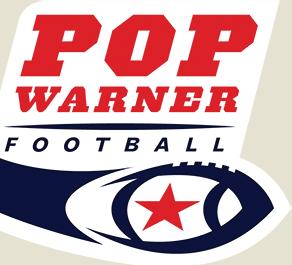
Youth Coach Arrested on Assault Charge
MATTAPAN, Mass. — A youth football coach was arrested and charged with assault and battery with a dangerous weapon on an individual over the age of 60 for allegedly throwing a football at a referee during a 14-and-under Pop Warner football game.
Police said the assault happened at a Sept. 25 game between the Malden Cyclones and Mattapan Patriots at MacDonald Stadium in Mattapan.
The referee, Tom Abruzzese, told a local TV station that the coach objected to a penalty against one of his players, was ejected and then threw the football at him.
Abruzzese, 66, said after being hit by the football he went down on one knee and was shaken up and tended to by an on-site EMT. He was not seriously hurt.
“On behalf of all officials, I want this man prosecuted to the full extent of the law,” Abruzzese said. The coach who was charged in the incident — Dana Jones, 55, of Roslindale — told the TV station that he wasn’t trying to hit anyone with the ball, but did throw it in anger.
THE WIRE
consortiums were established to allow the conferences to collaborate on all officiating matters related to recruitment, education and training, scheduling and evaluation of officials. Veteran umpire Paul Guillie will serve as the SoCon’s baseball coordinator of officials. Lisa Mattingly, a longtime former NCAA women’s basketball and WNBA referee, will serve as the SoCon’s women’s basketball coordinator of officials.
High School Player Made to Remove Beads
A high school freshman volleyball player said she was forced to remove beads from her hair in order to play in a Sept. 20 game at Jersey Village High School in Texas. Effective this season, NFHS volleyball rules allow hair adornments such as beads as long as they are securely fastened and do not endanger other players. The girl and her family went to the news media
following the game saying it was a case of hair discrimination. They are demanding an apology from the referee.
“She was telling me, and the ref was telling me, yelling at me in my face that I needed to take all my beads out or else I couldn’t play,” said Santana Harris, a student from Cy-Creek High School, to KPRC-TV. “And (the referee) was saying I knew I couldn’t play with them and that I was doing it on purpose.”
Pay Deal Saves Start of Season
Western New York sports officials and Section VI of the New York State Public High School Athletic Association ended a pay dispute Aug. 29 that had threatened the start of the fall sports season. Officials had been threatening to sit out games after their contract expired Aug. 31. Officials wanted a bigger pay increase than was being offered.
THE NEWS 14 | REFEREE December 2022
State Soccer Interpreter Issues Apology
WILSONVILLE, Ore. — The Oregon School Activities Association (OSAA) soccer state rules interpreter issued an apology Sept. 23 for issuing a bulletin three days earlier to athletic directors, coaches and officials that called for treating boys’ and girls’ games differently.
Patrick Duffy, who has been the state rules interpreter for 17 years, issued a follow-up bulletin after objections were raised to his original one that had noted: “There has been a huge upswing in red cards in girls’ games this season and a lot of them are for violent conduct. Do not referee a girls’ game the same way you would a boys’ game. Girls are much less likely to want to play through some contact with opponents that boys typically want to shrug off.
“If you hear a player shouting at an opponent, hit the whistle immediately and loudly! Do not wait to see if advantage is going to develop,” Duffy wrote. “If you do not stop play immediately for this, there is a very high probability that a fight is about to start. In my experience, high school girls do not shout like that without provocation, either. At least one and probably two cards need to come out quickly, so the players can (go) to the bench and calm down.”
After a backlash from coaches who complained the bulletin was sexist, Duffy and the OSAA reissued the bulletin with an apology from Duffy and revised language.
“The NFHS Soccer Rule book does not differentiate between levels of play or those playing the game,” Duffy wrote. “The comments I made unnecessarily segmented populations. My goal was not to compare, contrast or rank soccer between boys and girls. My goal was to describe the nuances that go into each game, but I failed in the attempt to communicate that. I realize now that my comments were hurtful to some and shed a negative light upon the OSAA, the sport of soccer, officiating and myself. I will work diligently to regain the trust of the Association, schools, players and officials around the state.”
Duffy was required to undergo additional training to remain as state rules interpreter.
New CBA continued from p.8
The previous collective bargaining agreement was ratified in mid-August 2015 and ran through 2022. That was also a seven-year agreement, and replaced the last year of a previous agreement. For the 2020-21 season, the NBRA ratified a letter of agreement modifying the collective bargaining agreement to address operations amid the COVID-19 pandemic.
The NBRA, which was established in 1973, is the union representing NBA referees. In August 2016, the
“In conversations with Patrick since it was released, it was clear that he understood the offensive nature of his written words and was remorseful,” OSAA Executive Director Peter Weber told OregonLive.com. “As an educationbased activity association, OSAA actions in this instance are grounded in education and training. Patrick understood and supported our mandate that he complete both the NFHS implicit bias and OSAA equity training courses in order to continue in his role at this time. It remains to be seen if he’ll be able to regain the trust of the schools, players and officials around the state.”
WNBA referees joined the NBRA for purposes of representation in collective bargaining. The most recent collective bargaining agreement between the WNBA and WNBA referees was ratified in April 2021. It was a three-year agreement running through the 2023-24 season.
In 2017, the NBRA began representing the G League referees, with the first collective bargaining agreement — a two-year agreement — ratified in October 2017. The latest G League agreement was ratified in October 2019. It was a three-year deal running through the 2022-23 season.
“Appreciative of the work of Section VI & the Western NY Sports Officials to ensure students are afforded the opportunity to play! Both groups agreed in principle on a 5-year contract this evening. High school sports benefit students, schools, and communities,” Dr. Robert Zayas, executive director of New York State Public High School Athletic Association, wrote on Twitter.
Details of the new contract were not immediately available.
Referee Banned for Impromptu VAR
Serbian referee Stefan Lazovic faces a lifetime ban by Serbian soccer officials for using a fan’s phone to overturn an offside decision during a lowertier Serbian soccer match in mid-September. Video of the situation, where Lazovic reviews the play on a fan’s phone for
half a minute before reversing his decision, went viral. Lazovic, who had no assistant referee for the match, received support on social media platforms, including from high-level Serbian professional soccer player Nemanja Matic.
Olympic Boxing Referee Says Offered Bribes
Former Olympic boxing referee Bill Phillips told The (U.K.) Times he was offered two prostitutes
as a bribe to fix matches at a qualifying event in Kazakhstan in 2008. He sent them away. Later in that same trip, he declined the offer of an envelope containing $500 cash, he said. Phillips, a British referee who retired after the 2008 Olympics in Beijing, said he believes corruption remains an issue in the sport. He refereed 102 international tournaments in his career.
REFEREE December 2022 | 15
THE SUN,
SOURCES: PETOSKYNEWS.COM, WCVB-TV,
THE (U.K.) DAILY MAIL, KPRC-TV, WNYNEWSNOW.COM
SHARING IS CARING
It’s Often OK to Verbally Communicate on the Court
By Scott Tittrington
As a three-sport official, the manner in which I communicate with my fellow officials varies greatly depending on the season in which I find myself.
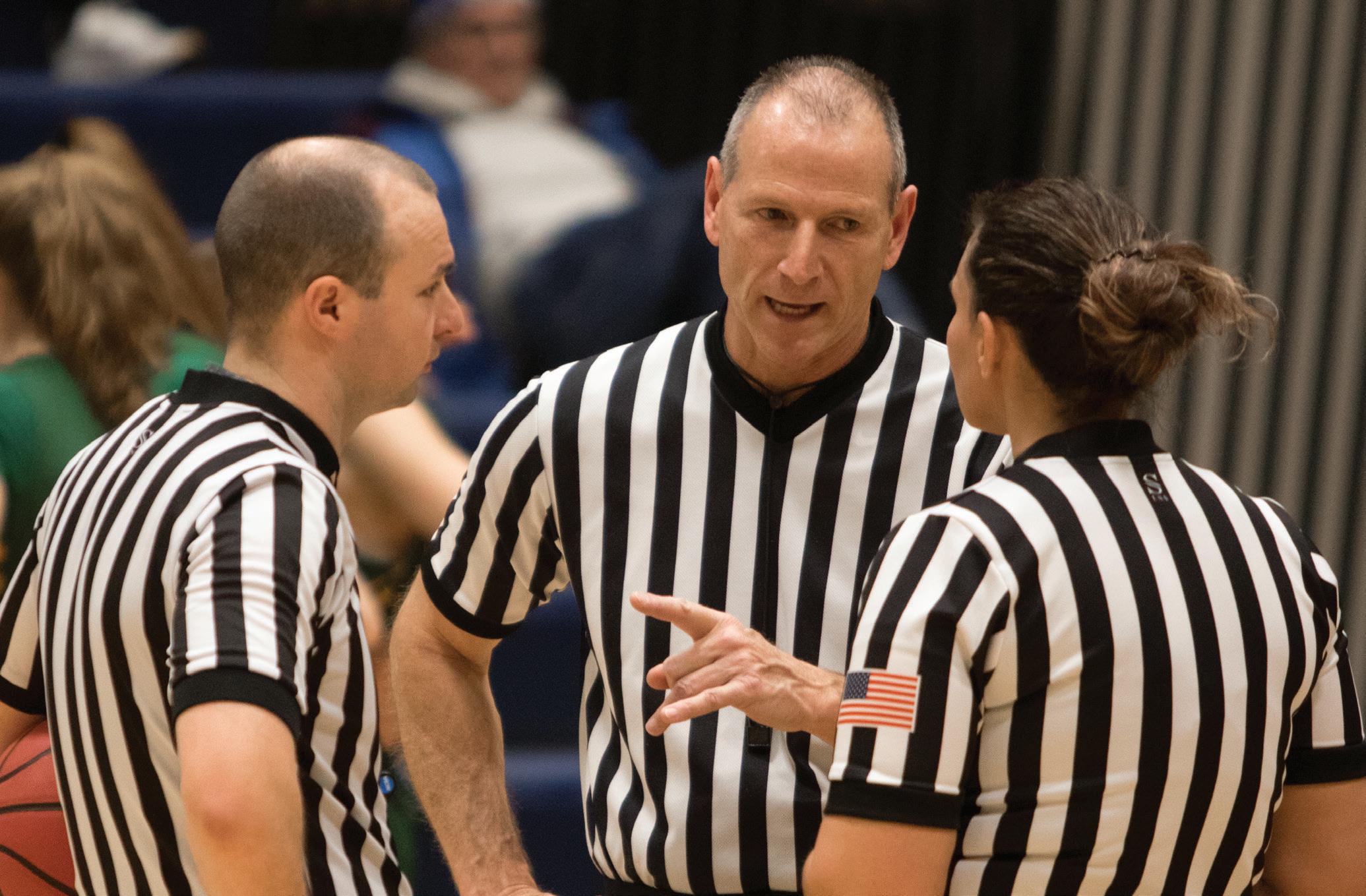
On the baseball diamond, I often go entire games without verbally saying a word to my crewmate. If it’s a two-person game and I am the base umpire, and there are no questionable rulings we need to get together to discuss, the only communication between my partner and myself will occur through pre-pitch signals. We don’t shout at each other about what we are doing, and we don’t get together between innings to have a
chat, unless a rare situation calls for doing so.
On the football field, at least at the level I work, verbal communication is also limited, due in part to the large distances between any two officials. If I am the referee, there are brief bits of information shared between me and the umpire, and I will need input from any official who throws a flag about the penalty and its proper enforcement. However, a line judge might not say a word to a head linesman for an entire game.
On the basketball court, it’s a much different story. With two or three officials working in a relatively confined space, and with officials constantly rotating and switching on
the floor during the course of a game, we are afforded a prime opportunity to spend time in one another’s orbits. As such, it makes perfect sense that basketball officiating would allow for, and embrace, both a “show” and “tell” mentality when it comes to communicating with your partners.
This doesn’t mean we should all be overly chatty with one another while working a game. We have a job to do, and we lose an air of professionalism and focus if we are engaging in regular jocularity with a fellow official during a game. That communication needs to be saved for the locker room, well after the final whistle has sounded.
However, there are several
BASKETBALL RULES, MECHANICS, PHILOSOPHY 12 | REFEREE December 2022 EDITOR: SCOTT TITTRINGTON stittrington@referee.com
There is no reason for officials to keep secrets on the basketball court. Here the crew of, from left, Chris Oakes, Toledo, Ohio; Tony Capasso, Cleveland; and Amanda Bender, South Bend, Ind., come together to share information that will assist them in officiating the game.
RLPH ECHTINAW
situations during the course of a game that demand officials use their verbal communication skills with one another in addition to the official signals that have been prescribed for the level they are working.
Free-throw administration. It shouldn’t be lost on any basketball official that four of the five correctable errors listed in the NFHS and NCAA rulebooks deal directly with free throws and their enforcement. That should be a pretty good indicator these situations are ripe for miscues, and as such, are moments when great care should be exercised by all members of the officiating crew to get them correct.
The first verbal exchange occurs soon after the foul is called and the reporting official heads to the scorer’s table to report. “White 32 is our shooter.” This can be the ruling official letting partners know who is shooting, or a non-reporting official responding in kind the shooter has been identified while working to line up two teams for the ensuing free-throw attempt(s). This brief give-and-take does wonders in helping head off the wrong player stepping to the line.
Next, there should be no doubts among all members of an officiating crew about how many free-throw attempts are being awarded when a player steps to the line. Strong physical signals, mechanics and eye contact should be accompanied by verbal confirmation among all members of the crew. “One shot!” “Two shots!” “One-and-one!” If you are a perimeter official and the words you hear from the administering lead official are not correct, hit your whistle and make sure the entire crew is on the same page.
Relaying pertinent information. One of the issues I always cover in my pregame with my partners is when a player or coach has received a warning, the official who issued it needs to tell all the remaining crew members. This avoids allowing a problematic coach to have three different cracks at three different officials, each blissfully unaware a partner has already talked to a coach about the behavior.
Sometimes, this verbal communication is between the
administering official and every person in the gym. I’ve handed out bench conduct warnings where my actions, including instructing the official scorer to mark it in the scorebook, make it clear to everyone, including fans in the last row of the bleachers, what has happened. Other times, it requires huddling the crew together during a timeout to share the information.
“OK, I’ve given the blue team’s coach a warning and told him no more discussion about handchecking. If he brings it up again, whack him.”
The same goes for sharing information about plays and players that have developed early in a contest. “Red 42 is struggling to set legal screens. Keep an eye on her whenever she gets near the elbow.” “I’ve found our gamewrecker, and it’s Green 55. I’ve talked to him about the need to tone down the rough play.” This isn’t meant to be a siren call to the crew to go looking for trouble. However, it keeps everyone aware and informed so there are no surprises the next time it happens.
Late-game situations. The officiating crew should not be huddling every time a timeout is called during a basketball game. We have responsibilities to attend to and places on the floor where we have been instructed to stand. If we are having to forego those mechanics to have a crew discussion on every extended stoppage of time, something is amiss.
However, late in a tight ballgame is exactly when a crew should be coming together to ensure everyone is on the same page. Clock status, which team is in the bonus, which team has the alternating-possession arrow, which teams have timeouts remaining and how many — these are all pieces of information that should be shared and discussed.
Good officials are good communicators — with game personnel, with players and coaches, and with one another. The basketball court provides an environment where we can use our voices for good. Don’t be afraid to do so.
Scott Tittrington is an associate editor at Referee. He officiates women’s college and high school basketball, college and high school baseball, and high school football.
BY THE NUMBERS
Perhaps no year has had a more lasting impact on how basketball is played at the NFHS level in the modern era. During the 1985 NFHS rules meeting, the committee approved the use of a 19-foot three-point arc by state adoption, approved the alternating-possession throwin procedure for all held-ball situations except to start the game or any extra period, and approved a basketball for use in the girls’ game that is one inch smaller and two ounces lighter than the boys’ version.
THEY SAID IT
“We call him Jay Kill-us.”
— NCAA men’s basketball official John Higgins, about ESPN television personality Jay Bilas, who is often critical about college basketball officiating
SOURCE: OMAHA.COM
TOOLS
Rules By Topic
Ever wish you could have the NFHS rulebook and casebook together in one place for easy rules study? If so, High School Basketball Rules By Topic should be on your bookshelf. The 330page manual breaks down the NFHS rulebook by topic instead of rule number and uses official NFHS caseplays and comments to provide a comprehensive rules education for officials. The manual costs $10 and is available at store. referee.com/ basketball.
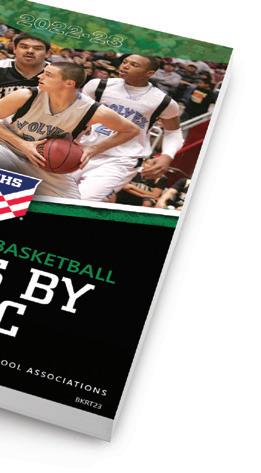

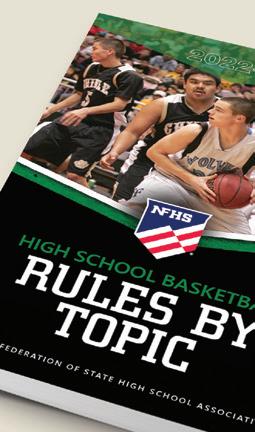

REFEREE December 2022 | 17
1985
| 13
TEST YOURSELF
In each of the following, decide which answer or answers are correct for NFHS, NCAA men’s and NCAA women’s rules, which might vary.
Solutions: p. 85
1. All of the following are guidelines (NFHS) or requirements (NCAAM/W) for the display of the shot clocks, except which?
a. A shot clock shall exist on each end of the court.
b. The shot clocks shall be mounted on the backboard supports.
c. The shot clocks shall be recessed behind the backboard.
d. LED lights shall exist around the shot clock.
2. All of the following result in no reset of the shot clock, except which?
a. A1 is holding the ball, defender B2 also grabs the ball, a held ball is called, and team A has the possession arrow.
b. A1’s try does not strike the ring or flange, A2 and B2 grab the rebound simultaneously, and team A has the possession arrow.
c. A1’s try does strike the ring or flange, A2 and B2 grab the rebound simultaneously, and team A has the possession arrow.
d. A1 is holding the ball, and an official inadvertently blows the whistle.
3. Which is true of setting a screen on a stationary opponent outside that opponent’s visual field?
a. The screen may be set just short of contact.
b. The screen must allow the opponent to take one normal step without contact.
c. The screen must allow the opponent time and distance to avoid contact.
d. The screen must allow the opponent the ability to stop or change direction to avoid contact.
4. Which of the following is true of the color of arm sleeves and full-length tights for team A, who is wearing blue uniforms with yellow trim?
a. Both can be yellow.
b. Both can be blue, but the color of the arm sleeves must match the color of the tights.
c. The arm sleeves can be yellow and the tights blue.
d. A1 can be wearing black arm sleeves and tights, and A2 can be wearing blue arm sleeves and tights.
e. Both a and c.
Know When to Color Outside the (PCA) Lines
By Tim Sloan
It was late in a hard-fought girls’ varsity game last season, with the outcome still in doubt.
I was the lead official when an offensive player drove down the lane line in front of me, suddenly stumbling forward and knocking the girl guarding her on her rear end. I popped out with a charge signal but noticed my crewmate, the center official, out of the corner of my eye coming toward me on urgent business. He told me the offensive player had been shoved from behind by another defender, causing her to crash into the first one. This was news to me, not being Clark Kent. As my partner explained what he had seen, I noticed coaches and players standing by with wait-and-see looks, confirming that I hadn’t seen the whole event. So, I deferred to my partner. He reported the foul, there was the odd murmur from the crowd, but life went on.
The situation I described evokes a range of reactions in the officiating community, coaching fraternity and around the office water cooler come Monday. Strictly speaking, at the NFHS level, the center official has responsibility for the weak side of the lane; the lead’s lane line isn’t in that area. Meanwhile, the trail official has a 60/40 split with the lead, but would have been 20-30 feet away in this case, while the lead was within reach of the crash.
Some officials would be irked at the center official poaching in his area. “I don’t need any help,” would be the quote; the thought process being that their personal control and command of the game would be compromised by admitting some kind of error here. Others would wonder why the trail didn’t help, instead of the center. Some coaches and players, who actually know what the officials should be covering, would see an opportunity to start shopping for the
best calls among a crew apparently so eager to help one another.
A third reaction, in the same situation, would depend on what had gone on in the game to that point: If the officials were on top of it from the get-go, this event would properly go down as “good officiating.” If, instead, it was the latest oddity in the crew’s work — right or wrong — it might have brought down the house.
Primary coverage areas (PCAs), as laid out in the mechanics manuals, are a good start in making sure all the elements of the game are being monitored by someone at all times. They shouldn’t be taken as absolutes, however, as the case we’re addressing illustrates. There are times when the covering official is too close to a play to notice a critical element. Sometimes traffic or another distraction has an official looking elsewhere, making that official the only person in the building who wasn’t a witness. In these cases, the prudent approach is for a fellow official to step up, right the obvious wrong and help assure the participants that the crew’s “got” this one.
In my experience, there are times when a well-oiled crew should be ready to hop across the dotted lines in the mechanics manual and help a crewmate. Here are some thoughts:
Traveling: I see this most when an offensive player is in the lane with the ball, struggling to put back a rebound. The lead is going to be focused on the hands and arms around the ball and might not have the player’s feet in view while he or she dances into position. That’s a great time for the trail or center to step up with the violation. The lead has the major issue (illegal contact), while partners have the minor issue (illegal footwork).
Rebounding: In general, court mechanics are designed for the two nearest officials to be viewing this activity at 90 degrees to one another, so someone is always looking between players. There are still going to be
BASKETBALL 18 | REFEREE December 2022
times when a shirt-grab or a shove has to be called, but neither official gets a clean look. Done in moderation, the third official should never hesitate to come and help when game control is threatened by doing nothing. If a crew finds this is becoming a habit, however, it should look at why this is happening; it’s often a case of too much ball-watching.
Transition: When a team is pushing the ball up court, particularly under a press, the officials are in transition, too. The process of the old lead having endline responsibility but becoming new trail with sideline responsibility isn’t always prompt enough to keep up with unfolding













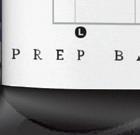



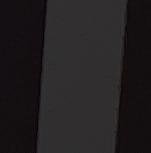







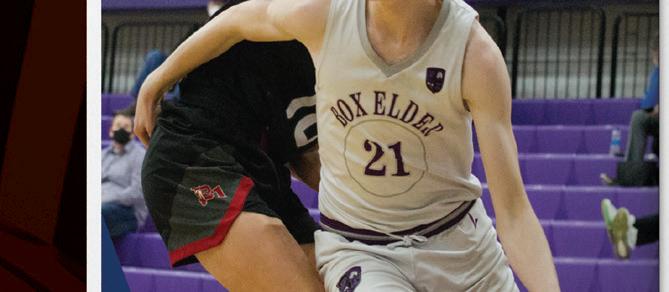















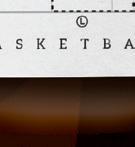







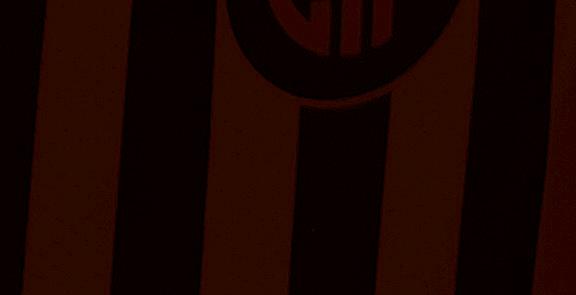



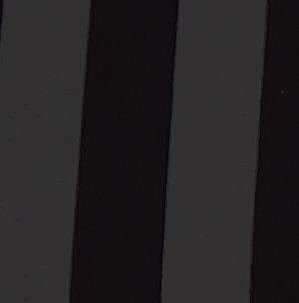




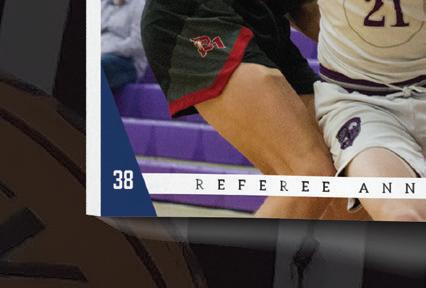

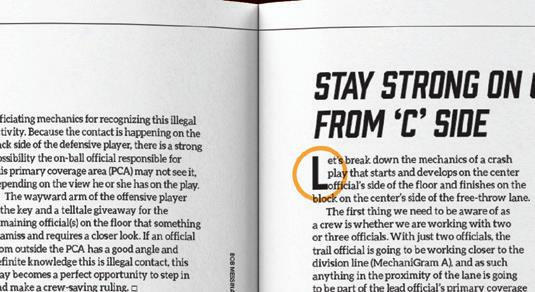

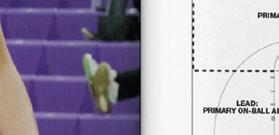

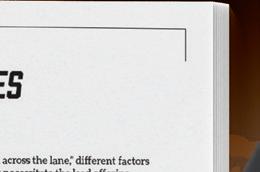
These are the primary coverage areas for officials in the frontcourt using threeperson NFHS mechanics. However, they are not absolute. An official must be willing to go into a secondary area to make a call if it’s the right thing to do for the game and the crew.

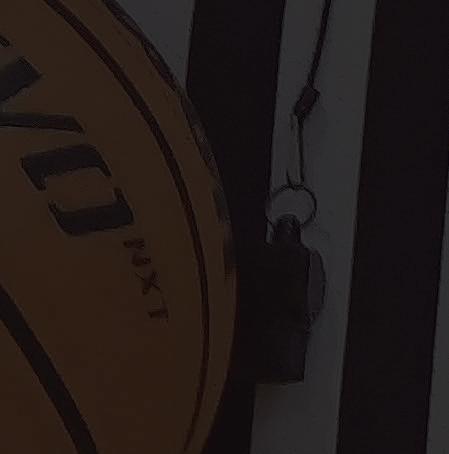
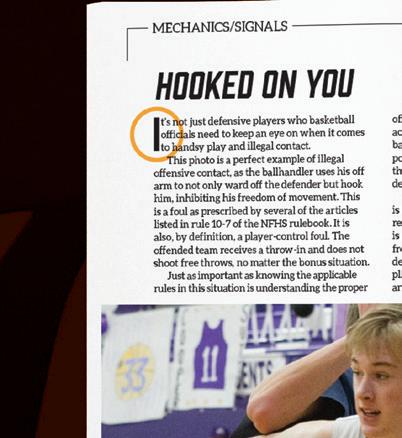
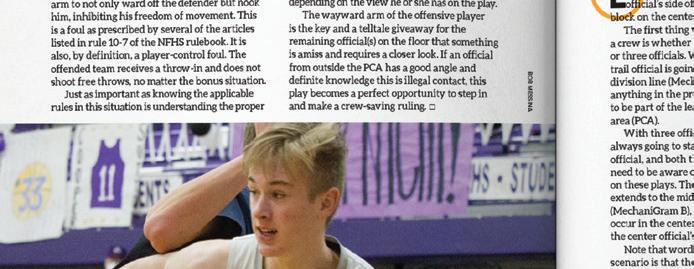
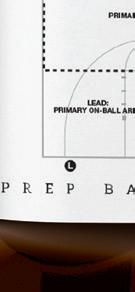
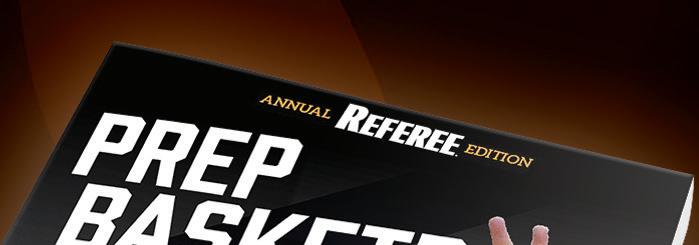
basketball season
This is the comprehensive guide you need to be ready to work High School basketball this season. All new and recent rule changes broken down, Points of Emphasis clarified and tough situations made simple - all in a full-color, magazinesized annual guide. Includes hundreds of caseplays and quiz questions!

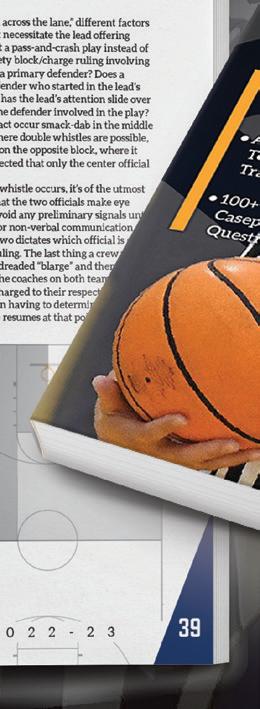
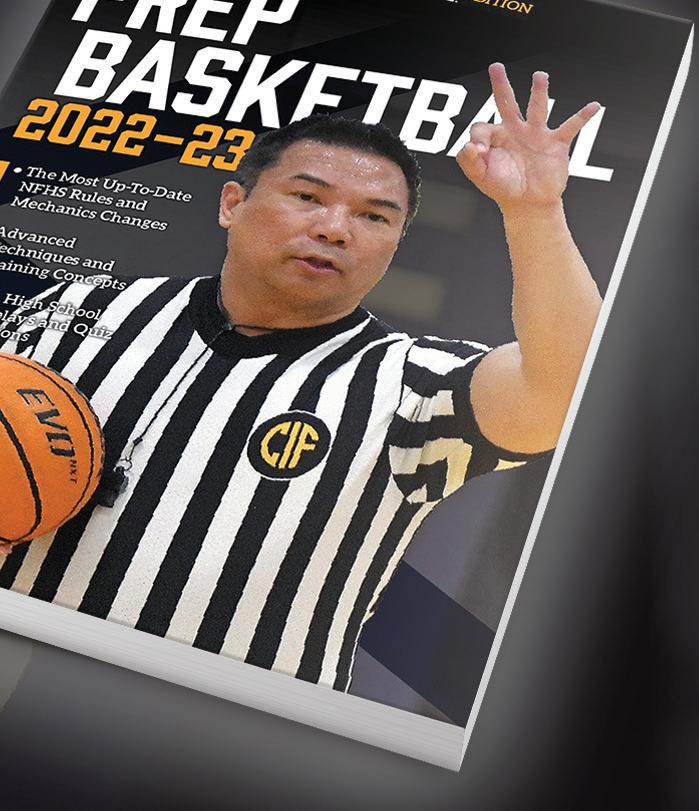
HOME
L
T
SCORER & TIMER
C
learn more at STORE. /BASKETball *NASO member discount available. $1795 * $2395 $1895 *
to
NEW for 2022 SIZE: 8”X11” 96 PAGES
complete guide
CASEPLAYS
Throw-in to Wrong Team Play
: After a traveling violation by A1 in team A’s backcourt, team A is granted a timeout. Following the timeout, the administering official mistakenly awards the ball to team A for the throw-in. Thrower-in A1 (a) is still holding the ball, or (b) has completed the throw-in by passing the ball to A2, when the officials realize the mistake, and an official blows the whistle to create a dead ball. Is it too late to correct the throw-in mistake? Ruling: In NFHS and NCAAW, when the ball is awarded to the wrong team for a throw-in, the error must be rectified before the throw-in ends. In (a), since the throw-in had not ended, the mistake shall be corrected by awarding a throw-in to team B. In (b), since the throw-in ended when A2 touched the ball, it is too late to correct the mistake. Team A shall receive a throw-in at the spot nearest where A2 had the ball (NFHS 7-6-6, 7.6.6; NCAAW 7-6.13, AR 231). In NCAAM, when the ball is awarded to the wrong team for a throw-in, the error must be rectified before the first dead ball after the ball becomes live. Therefore, the mistake can be corrected in both scenarios. The official shall award the ball to team B at the original throw-in spot, and in (b), shall correct the time on the game clock to the time when team A’s violation occurred (7-6.13, AR 191).
Throw-in in Backcourt
Play: A1 attempts a three-point try that hits the ring, and the long rebound bounces back toward the division line. In an attempt to secure the rebound, players from both teams bat the ball toward team A’s backcourt. A2 is the last player to touch the ball and the ball ultimately goes out of bounds on the sideline in team A’s backcourt. Where shall the throwin spot be, and how much time shall be put on the shot clock?
Ruling: In all codes, the ball is awarded to team B for a throw-in at the spot where the ball went out of bounds. In NFHS, the shot clock shall be set to 35 seconds (2-14, Shot Clock Guideline 6). In NCAAM, the shot clock shall be set to 20 seconds (2-11.6.d.6, AR 30). In NCAAW, the shot clock shall be set to 30 seconds (2-11.6.b.9).
events. “Blarges” or questionable screens take place in that blind spot the center — clear across the floor — can easily witness. He or she should go and get that call. If it comes across as a “cadence” whistle, that official is on solid ground. A cadence whistle is one blown only after the covering officials had a chance to make the call, couldn’t, but should have, and someone else helps.
Backing up center: I often describe the center official as the “freedom of movement person” whose job is to keep players off the ball honest. There will be times throughout the game, though, when the center is suddenly the person on the ball, with contestants coming out of the walls. Obviously, the trail or lead should be monitoring and jumping on illegal activity as the play moves away from them even if they have yet to rotate.
Secondary coverage is a kind of tipping point in officiating mechanics. It balances proper management of assigned areas as a part of full court coverage against the impression of

papering over weak or indecisive play calling. If your crew’s philosophy is to avoid secondary coverage, you’re more likely to be judged “inconsistent” rather than “disciplined” by not calling obvious infringements that aren’t “yours.” If you find yourselves “helping” too often, it’s an indication you’re not policing your primaries well enough; things like ball watching, poor positioning and lack of conditioning tend to play into this. These are all correctable but might not happen before your credibility is lost.
Appropriate secondary coverage is about common sense. Call the obvious foul or violation only after your primary had the chance and didn’t or couldn’t, as opposed to wouldn’t. You control the game as a crew and having each other’s backs in this way is an excellent way of affecting that.
Tim Sloan, Davenport, Iowa, is a high school football, basketball and volleyball official, and former college football and soccer official.
BASKETBALL 20 | REFEREE December 2022
DALE GARVEY
Sometimes, two officials will blow their whistles on the same play. That means someone went outside of their primary coverage area to make a call. If it’s in the best interest of the game and the crew, that’s an acceptable thing to do. Brenda Pantoja, Long Beach, Calif. (back to camera) and Danielle Johnson, Oakland, Calif.
Flops Again Draw NCAAM Attention
While the 2022-23 season is an off year in the rules cycle for both NCAAM and NCAAW basketball, that doesn’t mean significant change isn’t in place for one side of the game this season.
The issue of flopping by players, an ongoing thorn in the side of basketball officials, has been addressed in NCAAM play with a new tool for 2022-23. A rule change states that any player who commits a flop will be assessed a Class B technical foul, removing the required initial warning provision previously in place (4-10.2).
The rationale for the rule change, approved by both the NCAA Men’s Basketball Rules Committee and the
An NCAAM rule change for the 202223 season states that if the defensive player on this play is ruled to have flopped, he will be assessed a Class B technical foul. No longer is such an action first penalized with a warning.
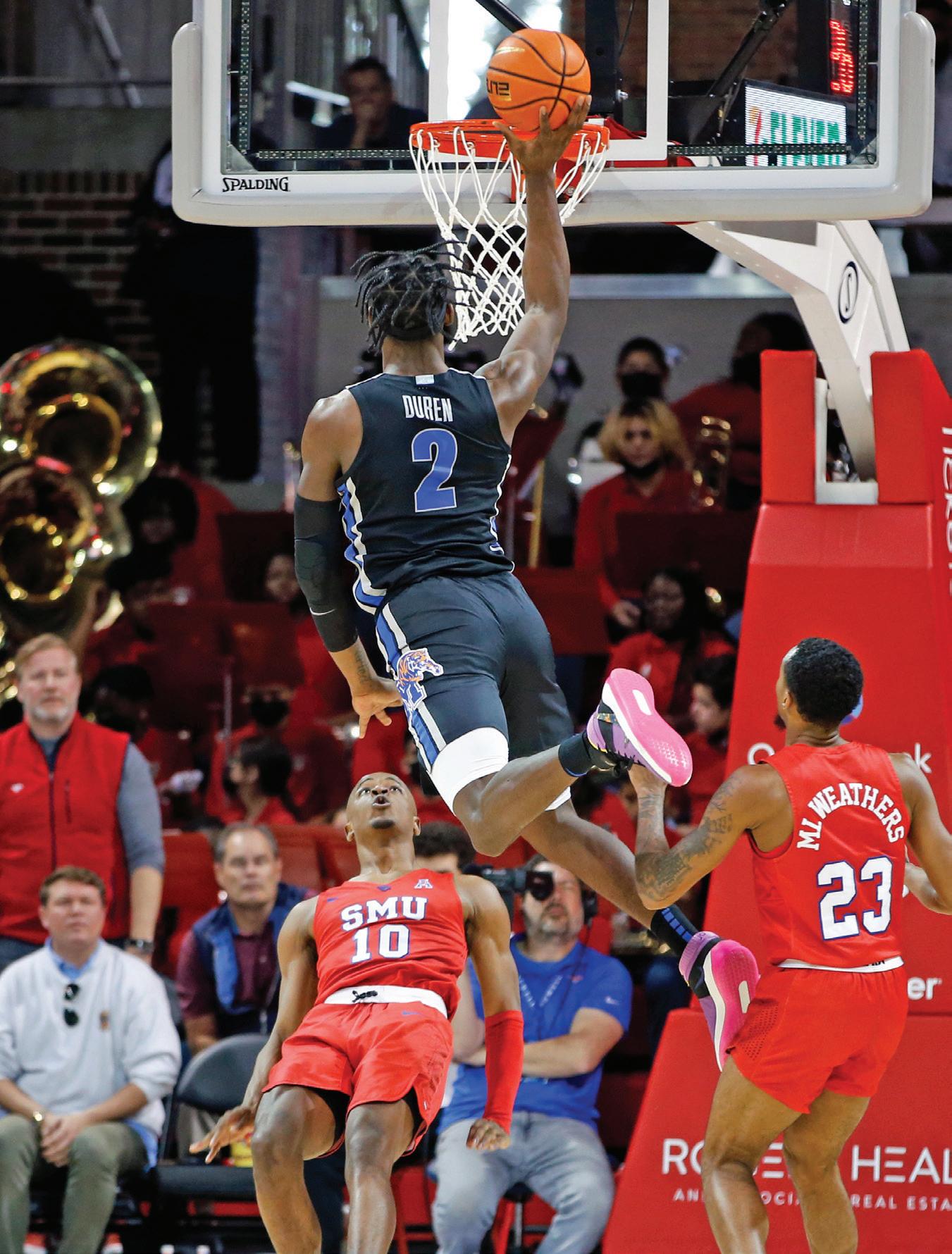
Playing Rules Oversight Panel (PROP), is as follows: “Flopping continues to be a major concern in our game, and the rules committee felt that the current penalty of an initial warning for flopping has not deterred players from continuing to flop. An immediate penalty for flopping is needed to curb this behavior. The rules committee will also provide additional guidance to players, coaches and officials to better define flopping.”
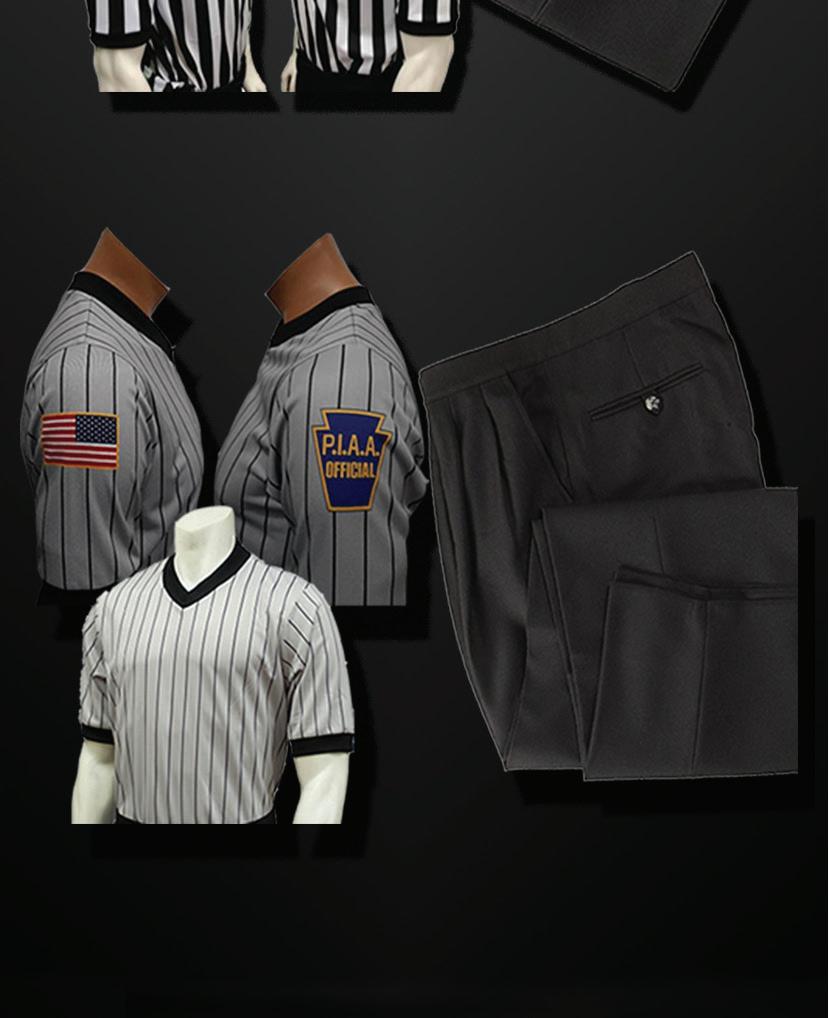

The penalty associated with a Class B technical foul is one free throw awarded to any member of the offended team, after which play will resume at the point of interruption using the procedures spelled out in rule 7-3.2. Any such infractions

TIM HEITMAN-USA TODAY SPORTS
count toward ejection but do not count toward the team-foul total or disqualification (10-4.1 Pen.).
NCAAW Interpretations
While NCAAW made no rule changes for the 2022-23 season, three rule interpretations have been published to provide additional guidance to officials.
The first is in response to a rule change last year that allowed officials (in the final 2:00 of the game) or coaches (by an appeal at any time during the game) to use replay to determine whether a goal should count or not when an off-ball foul occurred (11-3.2.b, AR 28).
Last season, the foul was considered to have occurred when the official signaled. This season, the revised interpretation is that the foul occurs when the illegal contact occurs. As such, the game clock shall be adjusted to the time of the illegal contact.
The second interpretation is also in response to a 2021-22 rule change that causes a replay review to trigger the electronic-media timeout and the timeout not starting until the review was completed (AR 179). The change in the interpretation is the review and the timeout now run concurrently.
The interpretation affects how substitutions are handled during this timeout. If the electronic-media timeout would have ended before the officials completed the review (when both head coaches have been informed of the results and the officials have finished their communication with the table), the timer is instructed to sound the horn, followed by a second horn 15 seconds later. All substitutes must report before the second horn. If the review is concluded before the end of the electronic-media timeout, substitutes must report before the warning horn.
The final interpretation, while not new, reinforces the legality of the clear, pliable plastic retainer that players may wear to prevent a narrow piercing hole from closing (1-26.7, AR 22). Officials have been told the retainer must be clear and any player wearing one that is not clear is not permitted to participate.
5 MINUTES WITH NATASHA CAMY
Resides: Swedesboro, N.J.



















Experience: Nine-year NCAA D-I women’s basketball official working several conferences, including the ACC, Big Ten, Big 12 and SEC. Advanced to the Sweet 16 of the 2022 NCAA women’s tournament.
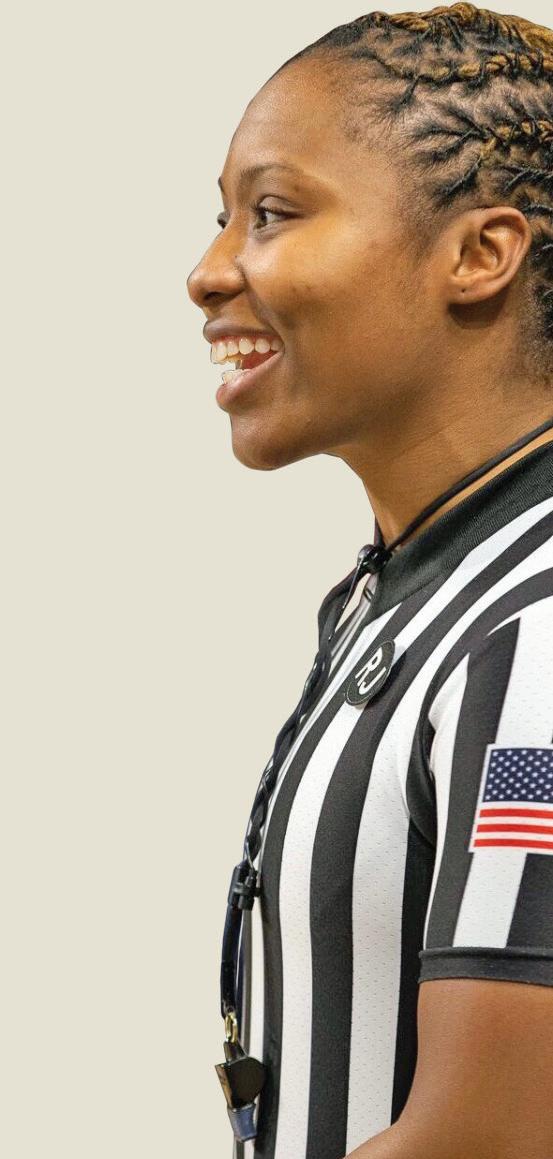

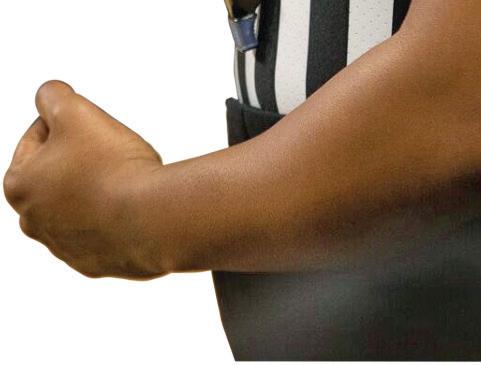
REFEREE: When I say “clock awareness,” what does that mean to you as an official?
CAMY: The first thing I think when you say clock awareness is just focus, right? The game can’t be played without time and it’s our most important thing. It’s definitely one of my top three things that I focus on throughout the entire game because the importance is there. It’s something I have to consistently remind myself throughout the duration of the game.
REFEREE: How does your crew address clock awareness during its pregame discussions?
CAMY: Depending on the level you’re working, there are rules for how you can fix time, how you can add time and then the different timing mechanics you’ll have. So, whether you’re doing high school and your high school has the shot clock or not, or whether you’re aspiring for college and they have a shot clock as well, if the shot clock is available, if your clocks are visible, where are they located? Depending on the gym you’re in, how visible is it? Is it only on one side of the floor? Obviously, the mechanics may say one thing, but depending on where you are we might have to assist in another position on the floor, right? So those are things that I try to go over in pregame based off of where we’re located and what we have as tools to our advantage.
REFEREE: Do you have anything that you specifically do mentally each possession to make sure you’re staying checked into clock awareness throughout the game?
CAMY: Yes, I wouldn’t be an official if I wasn’t diligent in that way, right? We’re all a little type A, so we all have our nuances, our musts, that we must do to feel comfortable. Anytime I’m putting the ball in play and I’m the person who’s putting the ball in play, I’m immediately checking the clocks first. Because normally where the clocks are there’s multiple things of information. Not just the clocks — we have the score, we have team fouls, we have the possession
arrow normally. So I’m not just checking the clock for a time, but I know it holds a lot of information when I’m going to look to make sure there’s a ball in play.
REFEREE: So when I say “clock awareness,” it’s about officials needing to understand what’s happening in the game related to the clock, that it’s not just about the numbers that are showing up?
CAMY: Before you’re even giving that ball to the inbounder, you’re saying to yourself, “OK, this is how much time I have, this is where we are in the game. These are some scenarios that could happen.” And, again, maybe this is part of your halftime speech. During a timeout, we might talk about this when officials get together, again, talking about clock awareness. But you’re bringing all the information to yourself and to your crew to say, “OK, guys, this is what we have. This is what could possibly happen.”
REFEREE: Can you discuss the need for all members of a crew to be aware of what’s happening with the clock, and not just whichever official is responsible according to the mechanics manual?
CAMY: When you think about clock awareness and who is responsible, you’ve got to understand when you’re in those positions where you would like assistance as a trail or the center. You would love for your partner to be aware that you have a lot going on, and that any help and assistance with the clock, especially because you can’t look at that and two or three players in your primary, would be great. Yes, the mechanics talk about who is responsible, who should be the designated person. But we have to understand the game is very quick, it has multiple players in a very small space and there’s only three of us right now. So with that being said, we have to use everything we can we have control over to say, “OK, how can I assist at this point?”
BASKETBALL 22 | REFEREE December 2022
NCAAW official shares thoughts for improving clock awareness.
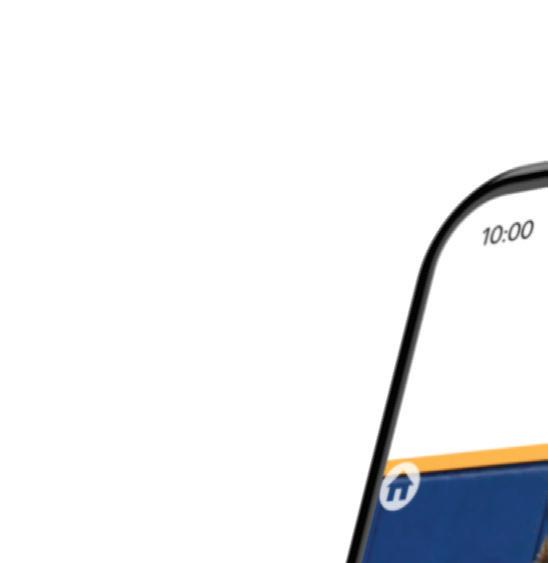

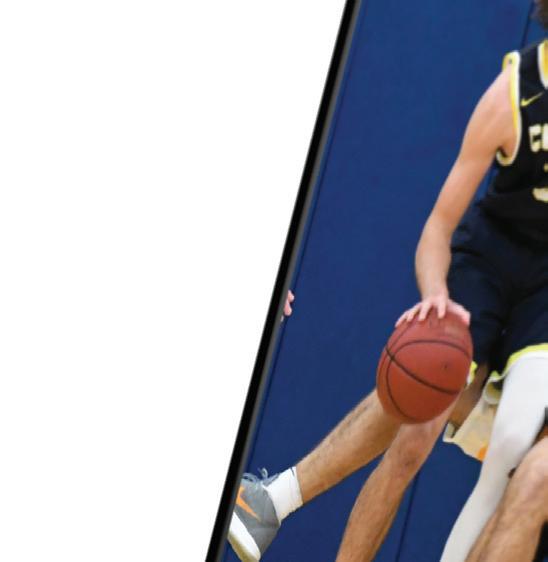





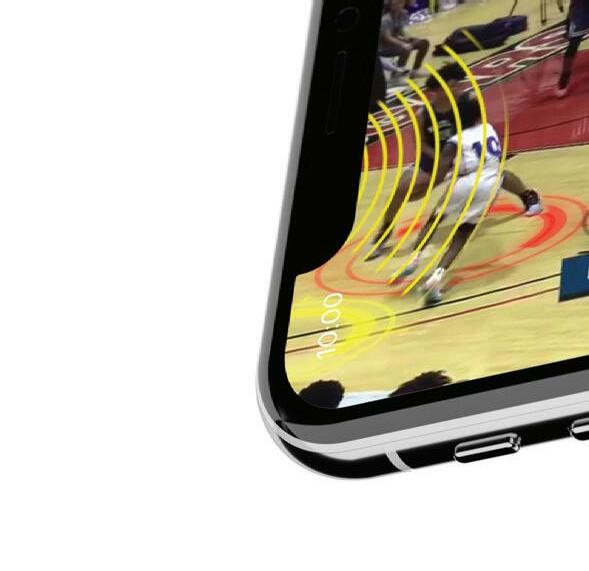
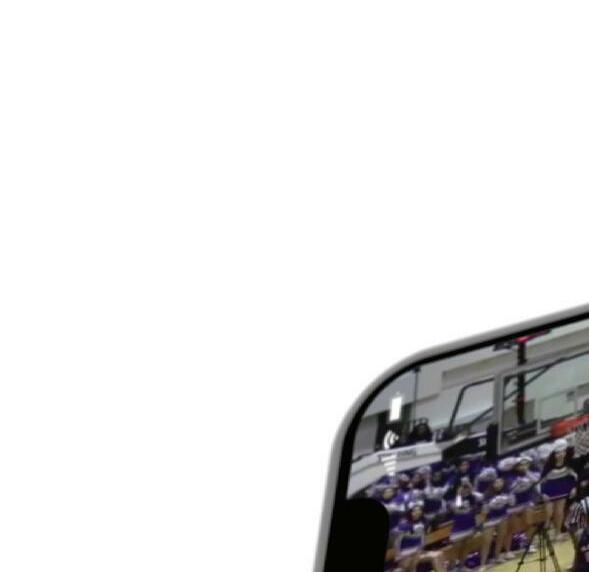

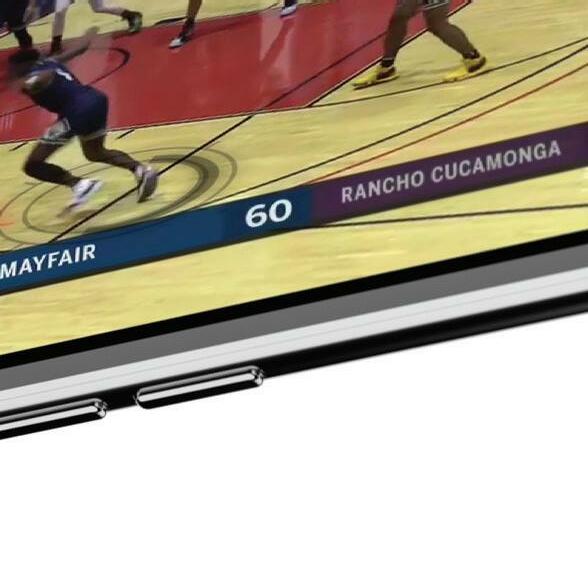
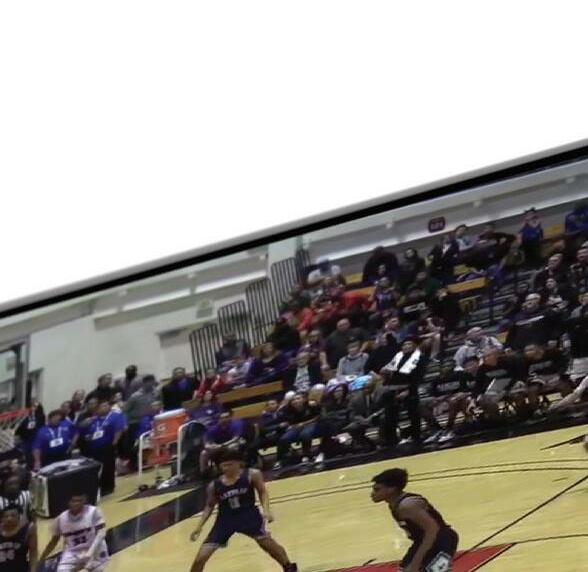
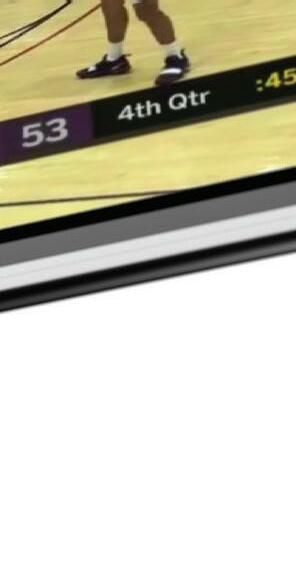
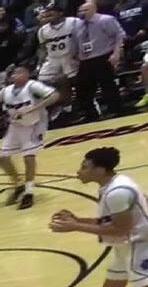
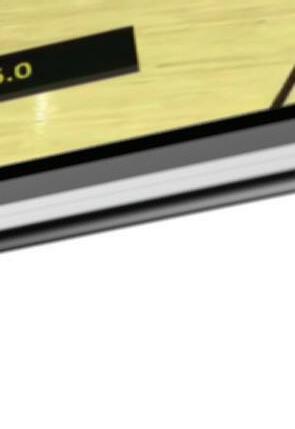
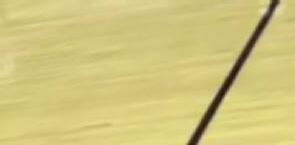
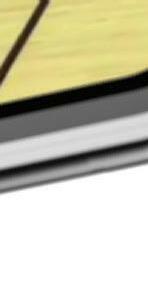













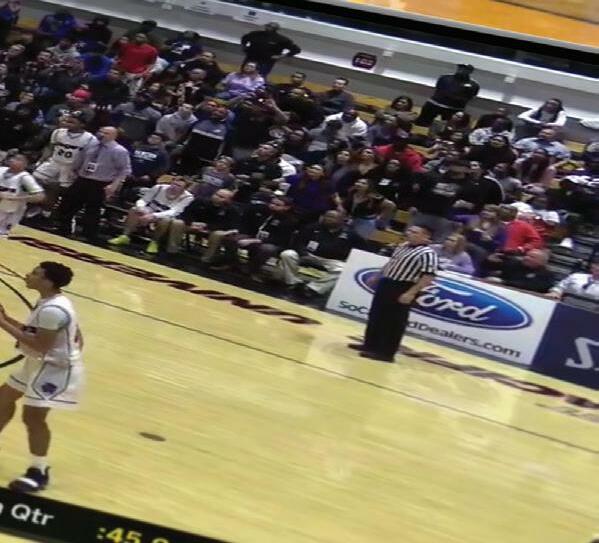
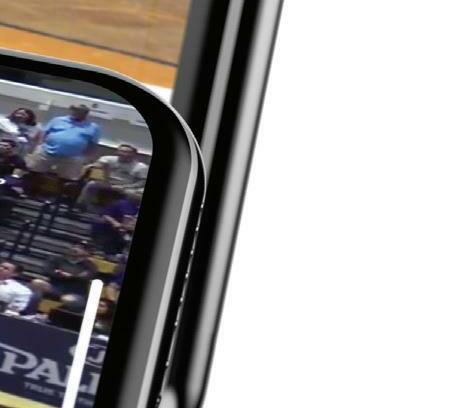
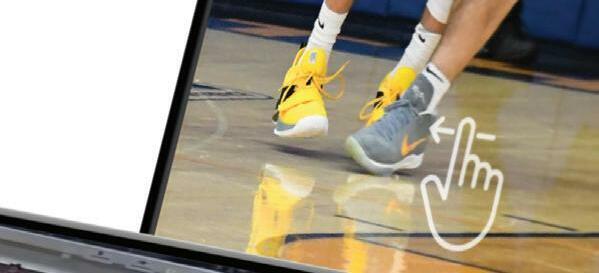
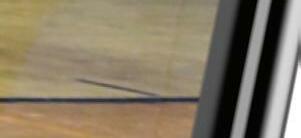


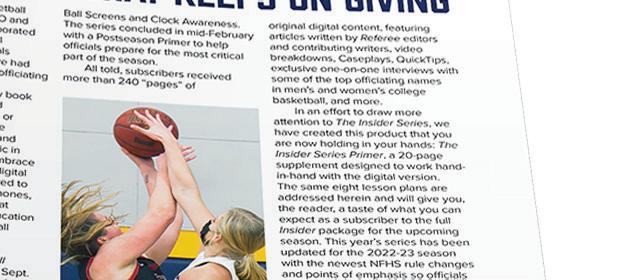
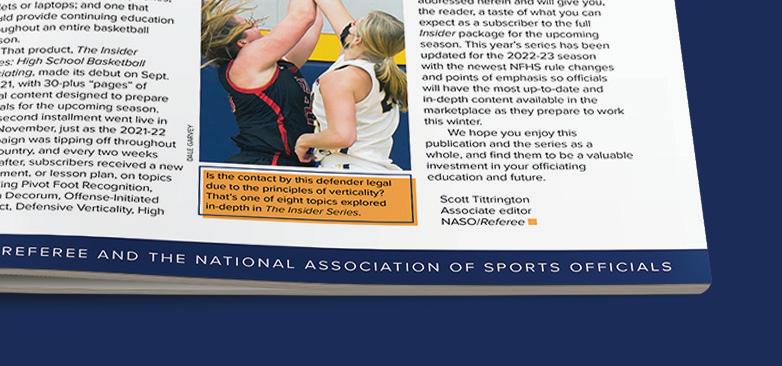
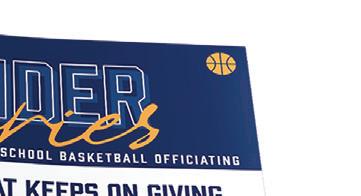
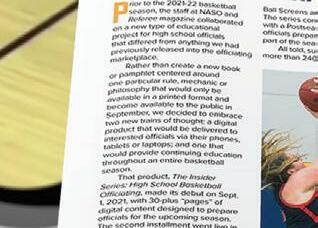
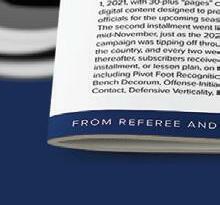
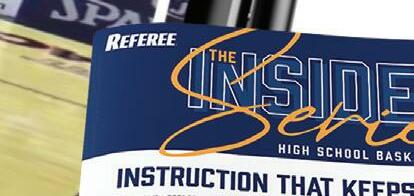
ORDER TODAY AT /BASKEtBALL FAST•EASY•DIGITAL THE SMART WAY FOR BASKETBALL OFFICIALS TO STAY FOCUSED IN THE OFFSEASON Featuring EIGHT fully immersive units, these interactive multimedia study guides deliver a massive amount of training right from your phone or tablet. You’ll get tons of video, snapshot graphics and quick-hitting tutorials in every unit to keep you fresh, focused and at the top of your game all year long! ON TOPIC DIRECT TO YOU SMARTPHONE/TABLET Topics Include: Pivot Foot Recognition In-Depth All About Bench Decorum Offense-Initiated Contact: The Essentials Defensive Verticality: What You Need to Know! Everything on High Ball Screens Clock Awareness and You! Focus on Preseason & Postseason $2495 ONLY for all 8 units! PLUS PRINTED GUIDE
GIVE ME
By Martin W. Spencer
EEach morning before work, I grab a cup of coffee and read something. That habit led me to a passage in The Daily Stoic titled, “Some Simple Rules.” And that passage led to some ancient wisdom that I found quite relevant to my officiating.
In the passage, authors Ryan Holiday and Stephen Hanselman cite five rules identified by Marcus Aurelius in his Meditations, 8.51. Aurelius says, “In your actions, don’t procrastinate. In your conversations, don’t confuse. In your thoughts, don’t wander. In your soul, don’t be passive or aggressive. In your life, don’t be all about business.”
Rephrased, the five simple rules are:
1.Do not procrastinate.
2.Do not be passive or aggressive.
3.Do not confuse others in conversation.
4.Do not allow your thoughts to wander.
5.Do not be all business.
These rules resonated with me as I reflected upon a past officiating season. It amazes me how five simple rules developed by a Roman emperor and Stoic philosopher thousands of years ago apply to officiating and life today. Let’s take a closer look at how these five simple rules relate to officiating and how they offer a path to improvement and continued excellence.
24 | REFEREE December 2022
Ancient wisdom from a Roman emperor and philsopher provides smart guidance to modern-day officials.
WWe may think of procrastination as putting something off until the last minute or apathetically waiting to complete an undesirable task. It’s like when we were in college and waited until the night before to cram for an exam or putting off that work assignment or home improvement project until it is urgently due. Think of procrastination in relation to our call selectivity in a game. The points of emphasis (POEs) are emphasized for a reason.
What happens in a basketball game when we allow defenders to reroute ballhandlers all the way up the court or if we allow post displacement and/or ward-offs?
In football, if we don’t enforce the sportsmanship POE and allow taunting, we risk losing control of the game later.
Instead of procrastinating on these types of plays and situations, we must take care of business from the very beginning. This doesn’t mean officials should be overly strict in enforcement. There’s no substitute for good judgment. Good officials know the difference between plays that should get a flag and those where there wasn’t enough to warrant enforcement.
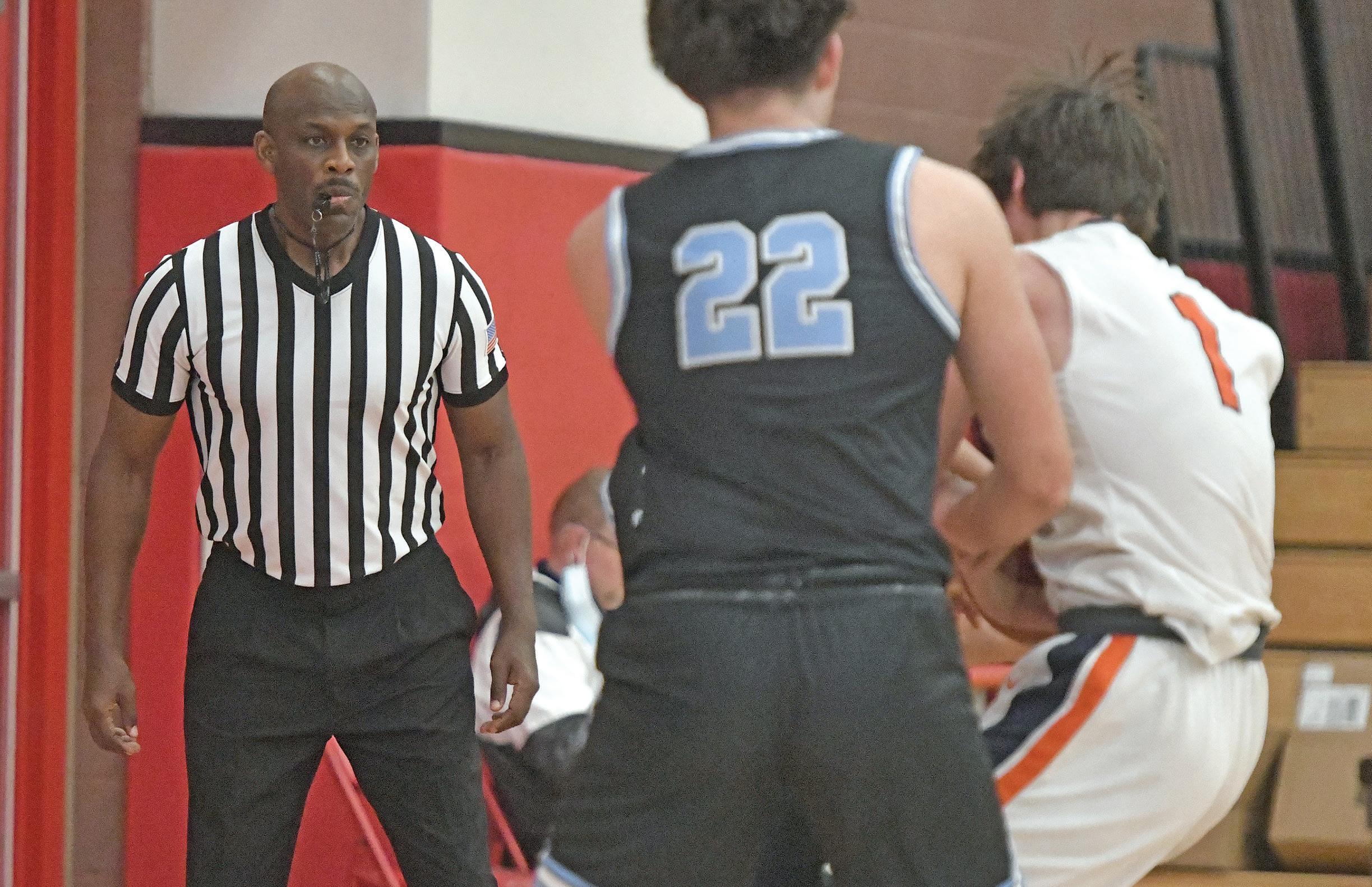
But procrastinating on calling rough play can lead to more rough play, which makes it extremely difficult for officials to control the game.
When it comes to management of players and benches, do we procrastinate or do we address unsporting conduct early? If a competitive matchup exists and players are trash-talking, we must address this early instead of thinking the trash talk will fizzle out on its own. You can verbally communicate a “problem matchup” with your partners so everyone in the game knows the crew is aware of the matchup. Taunting is not an infraction that requires a warning. As soon as it occurs, it must be addressed, because otherwise it will escalate. Depending on the sport, do we allow bench personnel to consistently stand? Do we allow head coaches to comment on each play or disregard the coaching box? Or do we firmly, but fairly, address the behavior? Al Battista, longtime official, mentor and current NBA scout, has said officials cannot have the attribute of avoidance. This leads to the next simple rule.
DO NOT PROCRASTINATE
HESTON QUAN (RODNEY GOWENS, NORWALK, CALIF.)
DO NOT BE PASSIVE OR AGGRESSIVE
TThe information in the previous section does not suggest we immediately administer technical fouls or assess other rulebook-outlined penalties as a reprimand or form of punishment. But when a coach or player breaks our concentration, we must address this behavior instead of ignoring it. This does not require us to act as drill sergeants. We can respond to reasonable questions without raising our voice or using sarcasm. Look the individual in the eye and use a calm, neutral tone. This defuses situations. If a coach or player excessively complains on each possession or play, we can professionally remind the coach or player he or she must allow us to referee. Keep hands at waist level if using hand signals as a defusing technique. We should not give an emphatic stop sign directly in an individual’s face. If we provide a warning, the coach or player must know the next infraction will result in the appropriate penalty and then we must have the courage to assess the proper penalty thereafter. It is important for everyone involved in a game to understand technical fouls or penalty assessments are not personal. These are rules in the rulebook.
DO NOT CONFUSE OTHERS IN CONVERSATION
After we assess a penalty or administer a technical foul, do we then become passive and fail to call the rules as written? Envision this scenario: We just assessed a technical foul to the head coach of team A for excessive complaining, so the next trip down the court we no-call an obvious foul against team A to appease the coach to whom we just gave the technical. All this does is reinforce the coach’s belief coercing us will get the calls or non-calls he or she wants. What do we think this says to the other coach? The coach of team B may believe he or she must complain to receive favorable calls or no-calls. Now you may have both coaches engaging in unwanted behavior instead of just one.
Officials must build rapport to avoid communicating passively or aggressively. Ed T. Rush Sr., former NBA referee and supervisor of officials and co-founder of Court Club Elite, reminds officials to find the voice of reason. If we can find a player on a team with whom we have built or can build a rapport, it can help our games. Ask the voice of reason to positively influence his or her aggressive teammates during intense situations. Also remember we can speak to players in positive terms. We don’t always have to tell players to “stop” doing something. For example, if a football player helps an opponent off the ground, we can commend the gesture.
Aggressive behavior in officials often comes from feeling defensive. We may miss a play, which brings doubt into our minds. When we receive push back, our natural reaction is to immediately and defensively respond because we don’t want to be wrong. Remember, we can admit a mistake to a coach or player. It humanizes us and helps us build rapport. In other situations, we can find something to agree on with a coach or player. For example, “You’re right, coach, the pitch hit the batter. But the batter swung, so it’s a strike.”
Never undermine the importance of listening. If we can listen first, without interrupting or thinking about what to say next, we can then respond with empathy, improving our communication with coaches and players.
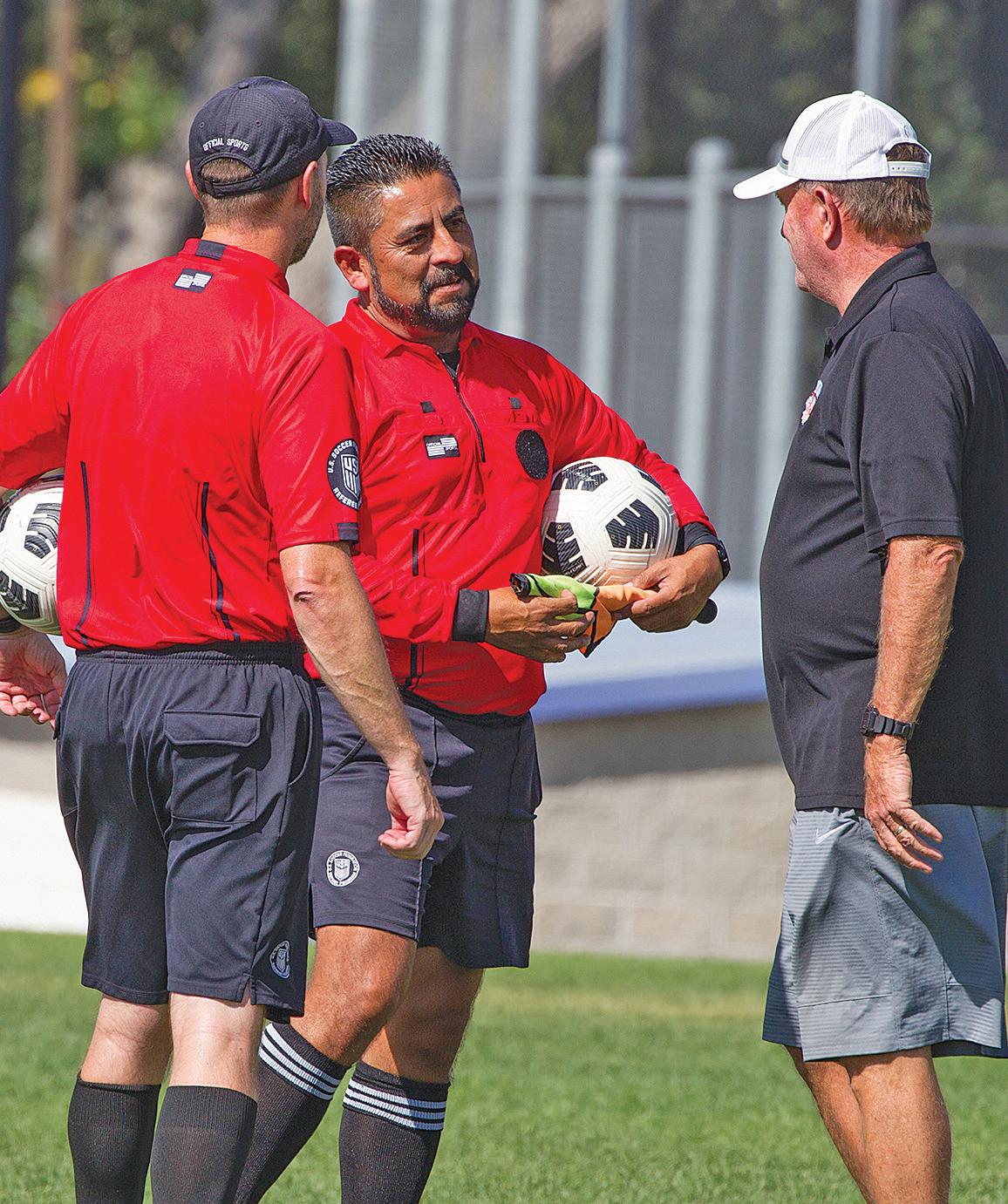
26 | REFEREE December 2022
BOB MESSINA (JOSE JIMENEZ, KAYSVILLE, UTAH)
GIVE ME FIVE
IInhis book the 7 Habits of Highly Effective People, Stephen R. Covey discusses empathic listening, which encourages people to seek to understand and then seek to be understood. If we truly listen with the intent to understand a coach or player’s perspective, we can respond more effectively. When we engage in dialogue, we must not confuse coaches or players. This is when rules knowledge becomes paramount. How can we expect coaches and players to trust us if we spew out confusing verbiage? Once we empathically listen, we must respond using clear and concise rulebook terminology.
In softball, a coach might make an inquiry like, “How can that not be a catch? She had it in her glove for three seconds before it dropped out.” An umpire can respond: “Coach, the initial action of the catch had not been completed and she did not demonstrate secure possession and intentional and voluntary release.”
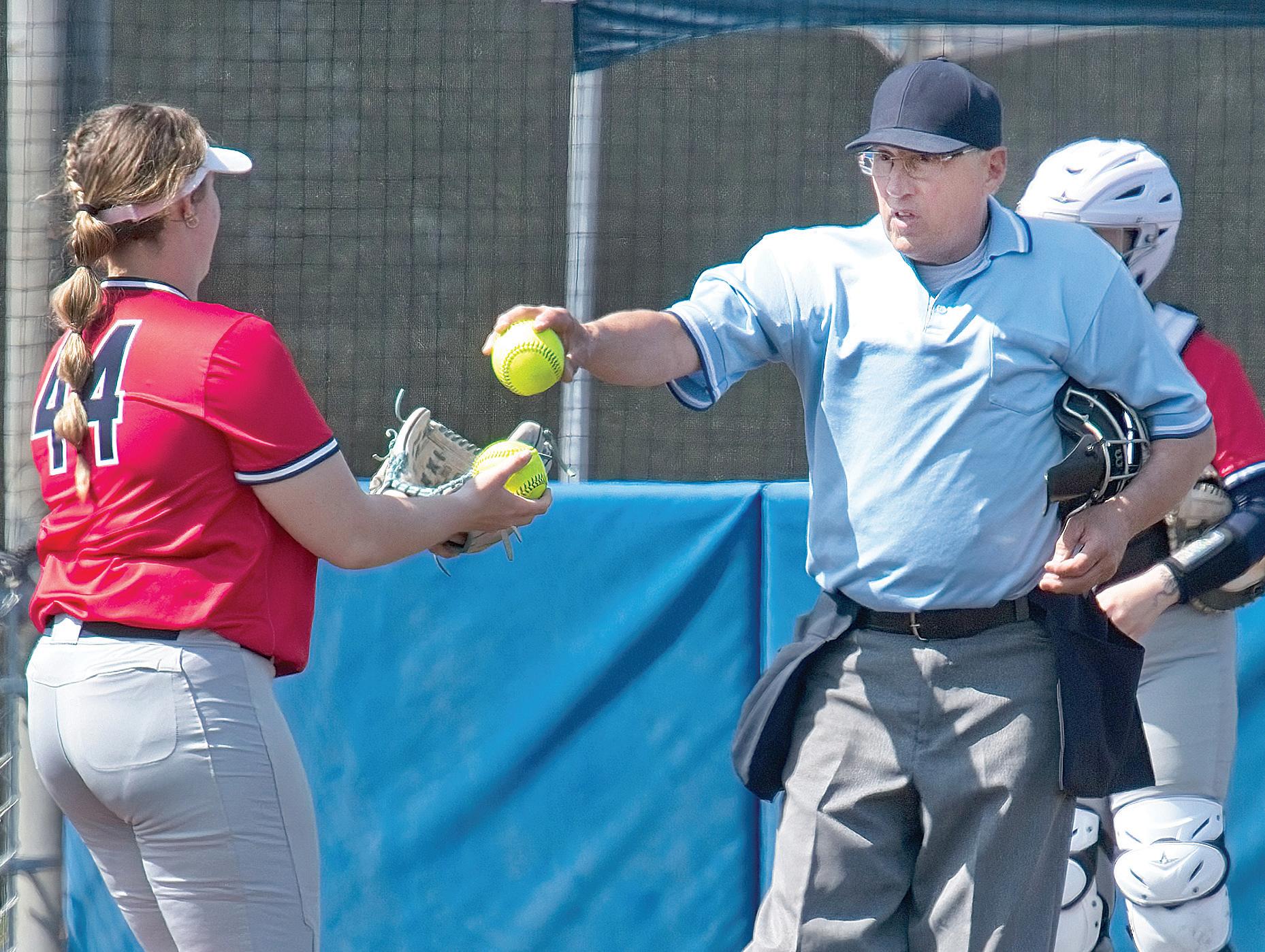
A basketball coach may ask, “Why is that a travel?” A good response might be, “Coach, your player lifted the pivot foot before releasing the ball to start the dribble.”
Speak in your sport’s terms — a language coaches, players and officials all understand. These are only a few examples of many, but the rule of thumb is to use rulebook language, because it becomes more difficult to question or challenge rule-based responses. If we try to argue our point by making things up or trying to justify a clearly incorrect call, we lose trust and we lose credibility. Again, if we are wrong, we can admit a mistake.
DO NOT CONFUSE OTHERS IN CONVERSATION
DALE GARVEY (JERRY FOLKNER, DUVALL, WASH.)
DO NOT BE PASSIVE OR AGGRESSIVE
DO NOT ALLOW YOUR THOUGHTS TO WANDER
IImagine how much better we would be if our thoughts never wandered. Over the years I have come to realize how much more of officiating is mental than physical. So many times I have been in the proper position, looking in the right spot and I have still missed an obvious play. Maybe I was thinking about the dinner I wanted after the game or what I dealt with at work earlier in the day. I could have been thinking about the message I received on my phone earlier. Why do we miss plays when we’re in the right position, our eyes are in the right spot and we have accurate knowledge of the rules? A lack of focus or concentration is the answer. We must bring focus, awareness, concentration and energy/effort to literally every play. So how do we keep focus and concentration instead of allowing our thoughts to wander? While I am certainly no mental-training expert, some strategies I learned may help officials.
We can self-talk. This self-talk must be positive, present and process driven, according to Brian Cain in his book The Daily Dominator. What does positivepresent-process mean? Instead of, “Wow that was awful how I just kicked that play,” acknowledge you missed the play, but self-talk, “Next possession. Referee this primary defender all the way to the basket from trail.” Or, “Reset. Let’s focus on tracking this next pitch all the way into the glove.”
You can say to yourself, “I am a really good official during end-of-game scenarios, because I’ve prepared myself for them.” When we continue to think about the plays we missed into the next possession, pitch or play, it has a snowball effect and we miss more plays. Another mantra to use is “recognize, release, re-focus,” which also came from Cain’s book. When we can recognize we made a mistake, we then let go of the mistake, then focus on the next play at hand.
Another strategy is to officiate in segments and find physical points in the arena, gymnasium or field to help reset. The segments can be as big as taking the next few minutes on the clock or the next inning or as small as the next snap, trip down the court or next pitch. To reset, pick a point that helps you regain your focus. In soccer, look at a corner flag; in baseball or softball, the top of the foul pole; in football, the down box — it can be anything that works for you. Briefly look at that item and take a deep breath to prepare for that next segment.
Breathing seems simple, but it can be overlooked even though it is such a vital tool to help us stay focused. Whenever we feel like the game is moving too fast, we are losing focus or external factors are distracting us, it helps to take a deep breath. Pay attention to the inhale and exhale. This puts us in the present moment in preparation for the next play.
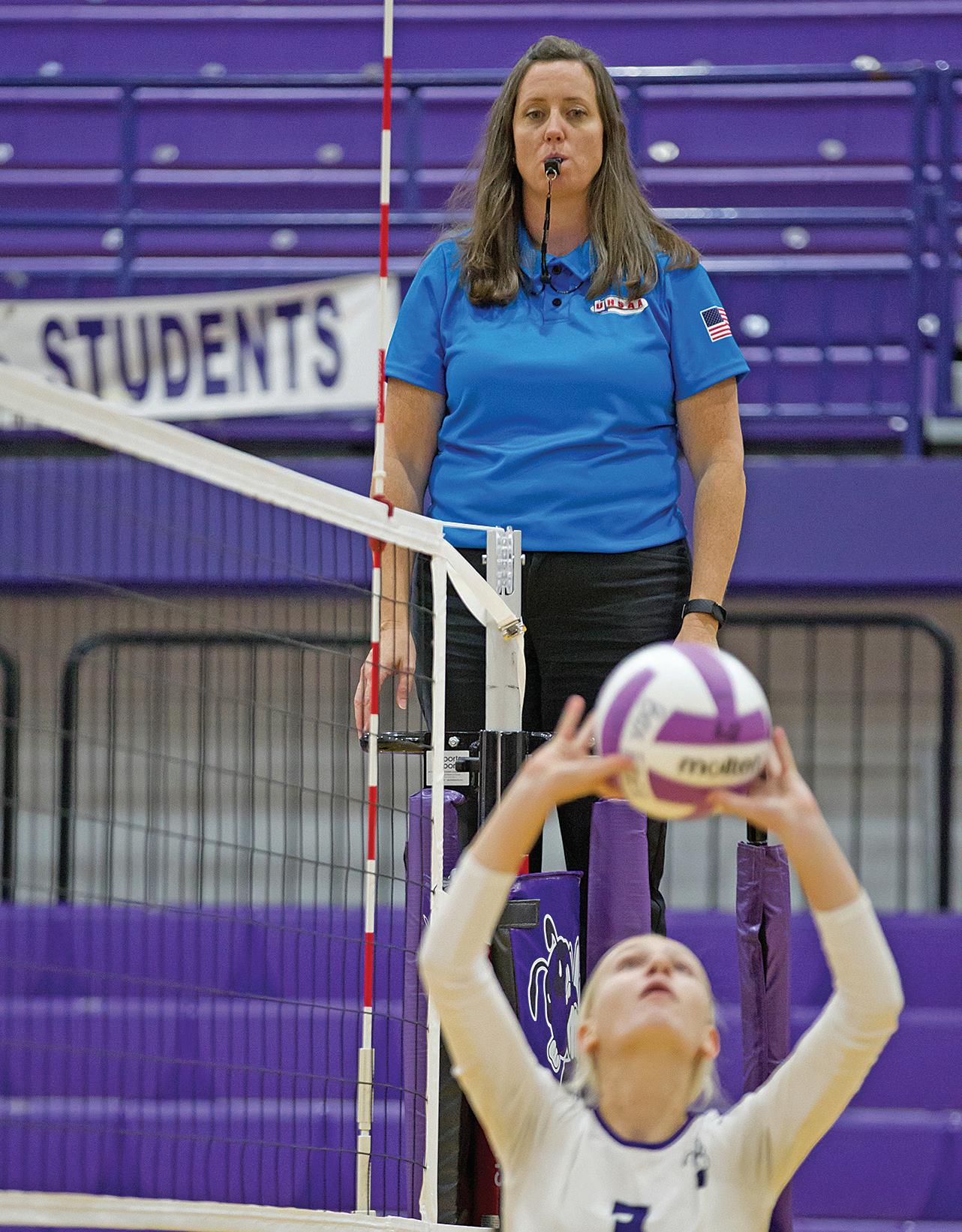
XXX 28 | REFEREE December 2022
BOB MESSINA (KAREN JACOBSON, LOGAN, UTAH)
GIVE ME FIVE
DO NOT BE ALL BUSINESS
OOfficialsmay receive criticism that they look unapproachable, need to communicate or need to show personality. This type of criticism certainly has value, but I do not believe most officials are truly unapproachable, do not want to communicate or do not enjoy the craft. I believe this criticism stems from officials’ desire to be right as often as possible and service the game or match the best they can. What we must constantly remind ourselves is perfection in officiating and in life is unattainable.
We must strive for perfection but accept excellence with the understanding we will never call every play correctly.
We must remind ourselves the game comes first, the crew comes second and ourselves last. Family, friends and career come before officiating. We must also remind ourselves to have fun with the craft and smile. Otherwise, why would we all commit the time, effort and energy so many of us give to this endeavor? Many of us desire to become top-level officials, but too often with the primary focus on reaching a certain status or officiating a certain game. These goals involve aspects out of our control and prioritize an outcome focus. Process goals keep us humble and allow us to focus on what we can control. Officials should enjoy the process of rules study, video breakdown, proper fitness, proper nutrition and the games we officiate. But we should also enjoy our interactions with players, coaches and school personnel. Most importantly, we must remember to enjoy the journey and the camaraderie with our brothers and sisters in officiating.
Martin W. Spencer lives in Coatesville, Pa. He officiates high school and collegiate basketball.
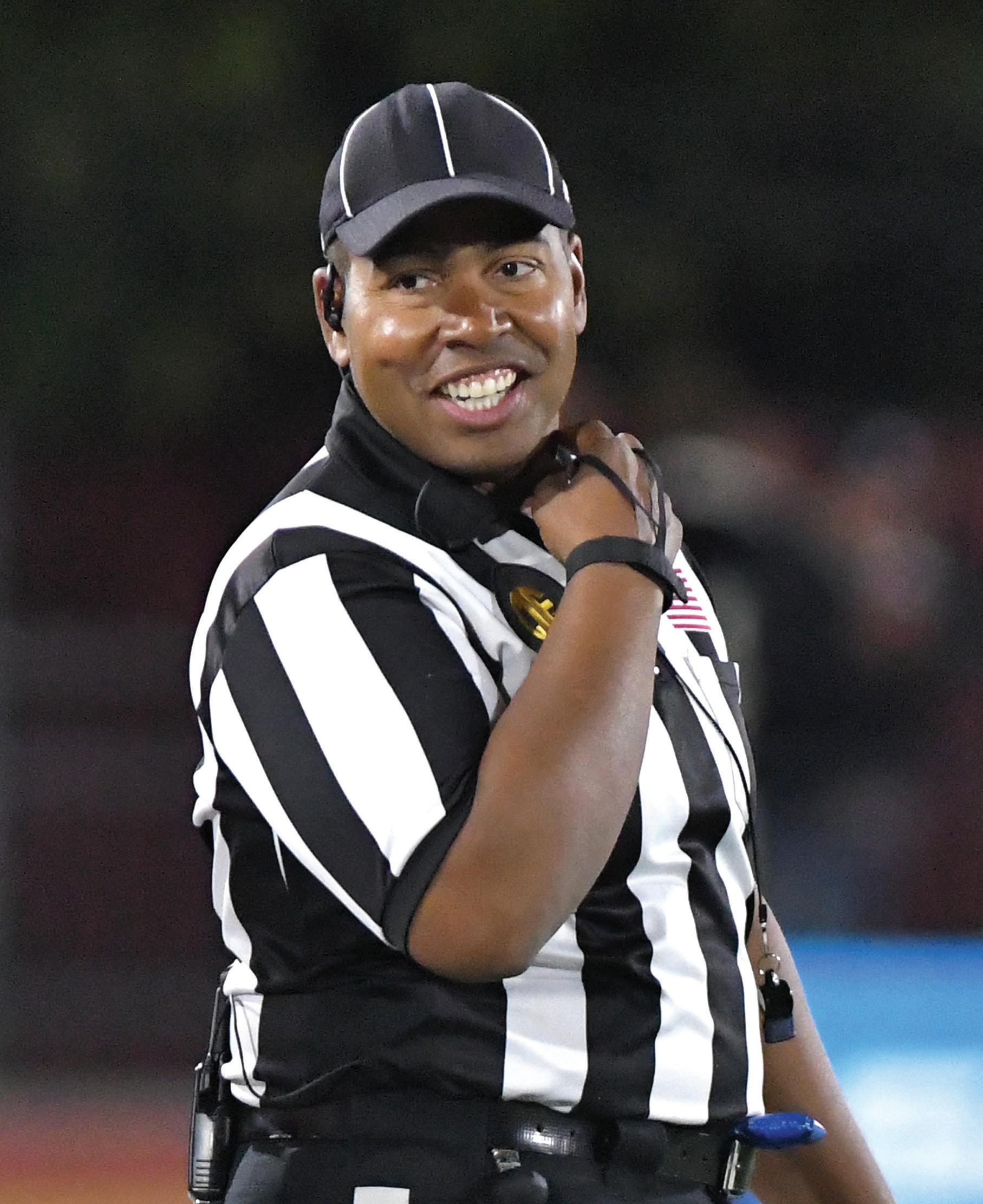
REFEREE December 2022 | 29
HESTON QUAN (AMOS WELLINGTON PALMDALE, CALIF.)
DO NOT ALLOW YOUR THOUGHTS TO WANDER DO NOT BE ALL BUSINESS
THE FOUR C’s OF PROFESSIONALISM
Take Your Refereeing to New Heights
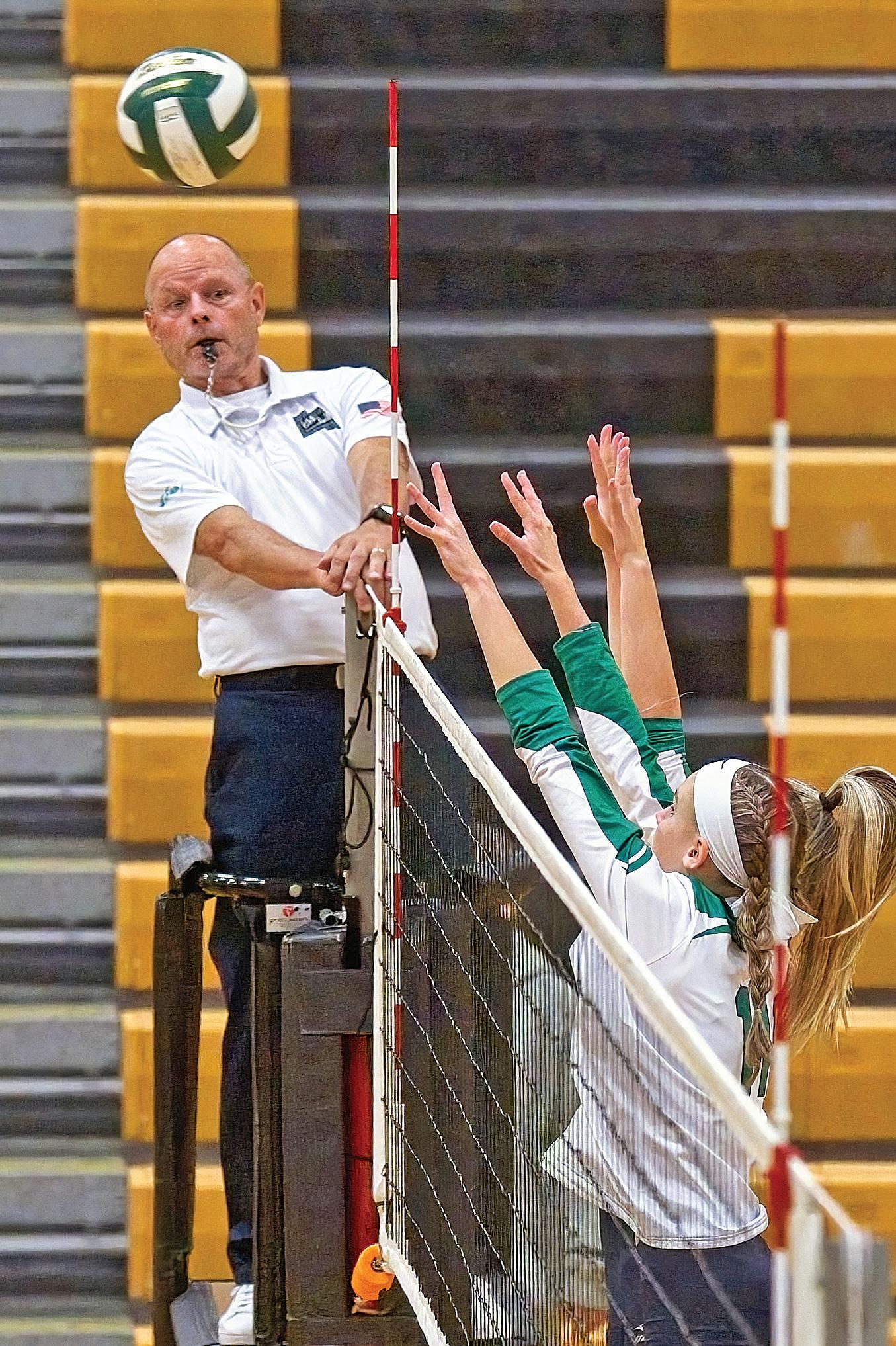 By Tonya Houston
By Tonya Houston
Over time, the meaning of professionalism has become more subjective. Arguably, a term once uniformly recognized by metrics of appearance (standard of grooming and attire for the job), competence (knowledge and skills of the job), behavior (words, attitudes and interactions), and communication (display of kindness and respect), are now sometimes more challenging to identify.
Professionalism is a powerful quality — it is a standard, one that is essential for officials. In fact, professionalism is a tool — a vital tool, much like our rulebook, official’s bag and flags. Similar to never showing up to a match without our official’s bag, we should never show up to a match without professionalism.
Can you think of a time you were a spectator at a youth sporting event and after only a few minutes of play you thought, the official “seems shaky,” or “is unqualified,” or “is only here to collect a paycheck”? Sadly, many have answered at least one, if not all of, those assertions with “Yes.” Applying the four C’s of professionalism addressed in this article will help improve the professionalism of volleyball officials.
Competent — Knowledge of Rules and Proper Mechanics
Referees who practice professionalism are marked by their knowledge of the rules, rule changes and use of proper mechanics. Regardless of how many years of experience, depth of knowledge is continuous. Review the rulebook every season. It is essential officials
VOLLEYBALL RULES, MECHANICS, PHILOSOPHY 30 | REFEREE December 2022 EDITORS: BRAD TITTRINGTON btittrington@referee.com
DALE GARVEY
Being professional at all times during the match is critical — and mastery of the rules is the first step in demonstrating your professionalism. Duane Sanchez, Kenmore, Wash.
demonstrate both knowledge of rules and the application of proper mechanics. When combined, respect and consideration from coaches, players and fans are natural byproducts.
Choose one or two rules as professional points of emphasis for the season. For example, by rule, you are knowledgeable of what a back-row attack means. However, regarding the application of the rule, as a professional who’s always striving for improvement, you know you do not pay close attention to where the player is in proximity to the attack line when the ball is attacked by a back-row player. For this season, you set a goal to make this rule a point of emphasis. Watch a set of a match you are not officiating to train your eye to recognize the position of the feet of the back-row player prior to contact of the ball so that when you are on a match, it becomes instinctual.
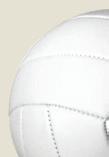
Whether you have officiated for two years or 15 years, officials should be students of the game, thereby continuously setting goals to expand the depth and scope of professional knowledge and skill.
Consistent — To Thine Own Self Be True!
Yes, this classic Shakespearian quote from Hamlet also applies to referees. Be yourself, officiate the match within your scope and depth of knowledge and understanding. In many ways, a good official can assess the level of skill in conjunction with the level of competition during warmups. Use your knowledge and awareness of self to establish and maintain a consistent rhythm of officiating.
Ballhandling is a judgment call. Make the same judgment call consistent on both sides of the net. Ask veteran officials for help on how to become more consistent when applying judgment decisions. Watch matches and “call the game” from your seat. Can you keep the same ballhandling in the first set as in the third set? If you are watching the match on television, feel free to mark each ballhandling call and play them



all in a row. Are they all the same line of doubles or are they inconsistent throughout the match?
Consistency is difficult, but a referee who is striving for professionalism will work hard on being consistent.
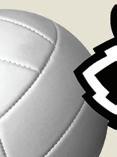

Confident — Know What You Know Confidence is a hallmark of professionalism. However, do not mistake confidence with arrogance. While confidence fosters trust and mutual respect among officials, players and coaches, arrogance may dismantle mutual trust and respect. Self-assured referees use their knowledge and skill to influence and strengthen professional discourse.
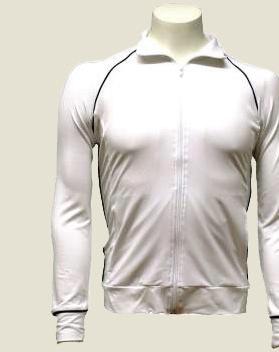
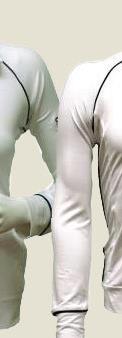
Don’t second guess yourself, rely on your knowledge of the rules and apply the rules as written.
Look the part. In officiating, appearance before, during and after the game matters.
Use concise mechanics and signals.
Use explicit language from the rulebook to communicate to captains and coaches.
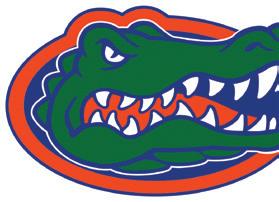
Composed – Remain Poised at All Times
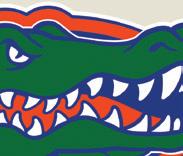
“Keep your head about you when all about you are losing theirs and blaming it on you.” Though it is safe to say that Rudyard Kipling did not pen these lines of the poem with referees in mind, the words are particularly appropriate when applied to officiating. The atmosphere of competition can bring out the best and the worst in participants, including officials.
Never appear rattled by a disgruntled player, coach or fan even if you are.

Develop a very short-term memory. Every whistle marks a fresh start.
Address players, coaches and your work team with a respectful tone and body language.
Be responsive, not reactive, to misconduct. Remember, what you permit you promote.
Concentrate on the match, not the score, team or coach.
Smile, enjoy the game.
TOOLS
PAVO Certified Official’s Jacket
Are you constantly cold inside the gym during your collegiate matches and looking for a way to stay warm. The PAVO certified men’s and women’s official’s jacket is the perfect apparel for you. The jacket is the only approved outerwear for collegiate matches and can be purchased from your favorite volleyball officiating apparel retailer for $63.95.

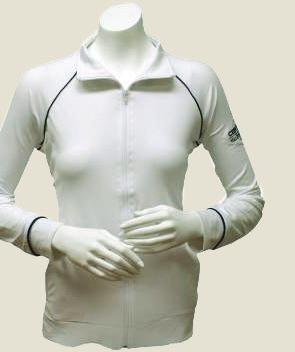
QUICKTIP
Always bring your line judge flags with you to your match. Never anticipate the school or another official will supply flags. If all else fails and no referees bring flags, line judges are permitted to use hand signals. However, flags are preferred and look more professional. Make sure the flags are in your bag each day when you leave your house. It is better to have all referees bring their flags than have none.
BY THE NUMBERS

16,833

The number of spectators for the Wisconsin vs. Florida match on Sept. 16 at the Kohl Center in Madison, Wis. It is the largest regular-season volleyball-only crowd in NCAA history. Florida won, 3-2. The officials for the match were:
Jim Kuziela (R1)
Devonie McLarty (R2)
Mark Berman (LJ1) Scott Prox (LJ2)
REFEREE December 2022 | 31
TEST YOURSELF
In each of the following, you are given a situation and possible answer(s). You are to decide which answer(s) are correct for NFHS, NCAA or USAV rules, which might vary Solutions: p. 85
1. Team B’s back-row attacker jumps with one foot touching the attack line and attacks the ball while it is completely above the top of the net. Team A’s collective block, which includes team A’s back-row setter, touches the ball, and the ball lands in team A’s court.
a. Double fault; replay.
b. Illegal (back-row) block on team A; team B wins the rally.
c. Illegal (back-row) attack on team B; team A wins the rally.
d. Ball in; team B wins the rally.
2. As the second referee acknowledges a substitution request by team A, the second referee notices the team A substitute is wearing multiple hoop earrings.
a. Allow the player time to remove the illegal jewelry and accept the substitution without penalty.
b. Charge the team with unnecessary delay and allow the substitution.
c. Allow the substitute to enter the game as the jewelry is legal.
d. Charge the team with a timeout and allow the substitution at the end of the timeout.
e. Assess an unnecessary delay/ delay sanction to the team, deny the substitution and do not allow the player to enter the set until the jewelry is removed.
3. Prior to the start of the match, the second referee is measuring the ball pressure of the game balls. Each ball measures 4.1 pounds per square inch.
a. The game balls are legal.
b. The second referee should add air into the game balls until they are between 4.3 and 4.6 pounds per square inch.
c. The second referee should remove air from the game balls until they are between 3.7 and 4.0 pounds per square inch.
d. The second referee should add air into the game balls until they are between 4.26 and 4.61 pounds per square inch.
4. Which of the following may request a team timeout?
a. The head coach.
b. The playing captain.
c. Any assistant coach.
d. Any player on the court.
As the saying goes, “Professionalism is not the job you do, it’s how you do the job.” Applying the four C’s of professionalism offers a framework for how to maintain professionalism as an official. When officials strive to be professional, fans will enter
the match and notice these four C’s and feel confident the match will be refereed fairly.
Tonya Houston, Goose Creek, S.C., is a high school and USAV referee. She is an associate professor in the College of Education at Charleston Southern University.
Reservations About Re-serves
By Rick Brown
One of the most important aspects of volleyball is serving. Prior to every rally a serve takes place and it is important for referees to know the rules regarding the serve, especially if working multiple codes. Some codes and levels allow a re-serve while others do not. Here is a breakdown of those rules and the variances within the codes and some philosophical reasoning on the rules. Let’s start with the younger age group and work our way up.
USAV
For its 14-and-under levels of play, USAV allows five seconds for service contact with a re-serve option if the player releases the ball for service and there is no contact between the player and the toss before the ball hits the floor. The player is granted an additional five seconds to contact the ball for service, and this time the service must be contacted or an illegal service fault is whistled. This can occur every other time the ball is released for service. While the rule indicates the ball should be released from a hand or hands in executing the service action, first referees are guided to not be unduly concerned whether this actually occurs. Given the ages of the players and the focus on facilitating the ball being put into play so more rallies can occur, this approach is understandable. Referees are advised to not be strict in timing seconds and whistling a delay of service. After all, it’s all about the
kids at this development level and having as many rallies as possible to help with player enjoyment of the game and learning to execute the skills the coaches are teaching. No one came to watch a first referee whistle a delay of service; the goal is to have serves put in play and go over the net. In light of being given five seconds to contact the serve, referees wait for servers to get to their desired serving positions before whistling/signaling for service.
For levels of play 14 and older, players are allowed eight seconds to contact the ball for service with no re-serve option permitted, the same as NCAA, which will be examined later.
NFHS
NFHS rules are used for both middle school matches where the players are 14 years old and younger and high school matches where players are typically 14 years of age and older. Giving a server five seconds to contact the ball for service with the ability to serve from out of hand or after the ball is released for service and a single re-serve during each term of service appears to be a reasonable option for seventh- and eighth-graders playing a “developmental level” of volleyball. NFHS rules are considered more lenient in that they allow a ball to be released for service and caught or, if the server makes an effort to contact the ball for service but misses and there is no ball-player contact, the first referee issues a re-serve one
32 | REFEREE December 2022 VOLLEYBALL
time in the server’s term of service. Options for the server include tossing and catching the ball, tossing and dropping the ball to the floor (as shown in PlayPic A) and tossing the ball and swinging but missing and the ball not contacting the server before hitting the floor. All may lead to a re-serve being issued. If the server has not been awarded a re-serve during that same term of service, an illegal service has not occurred.
The USAV and NFHS have taken different approaches to younger age groups in terms of facilitating serving. Both organizations appear to have the same basic intent of encouraging the ball to be put into play, allowing more rallies — two different approaches, same basic objective. But what about the levels of play that involve either higher age ranges or younger players
whose skill levels have resulted in them playing “up”? For USAV, these players are given eight seconds to contact the ball for service and — once the ball has been released for service — the ball must be contacted, or an illegal service fault has occurred.
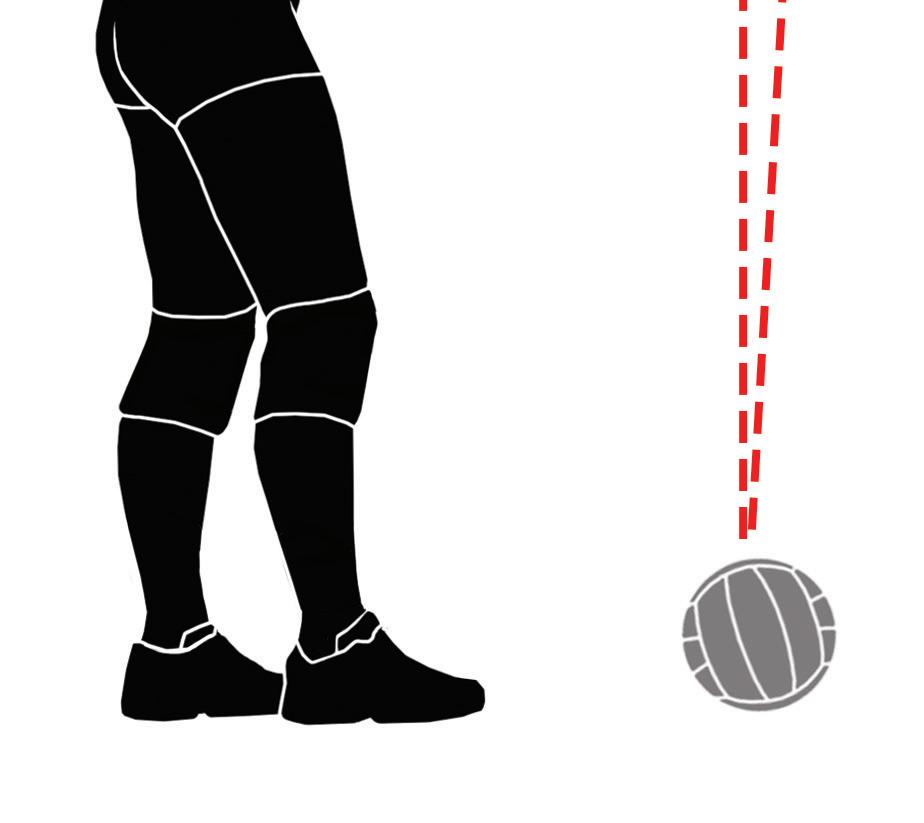
NFHS Re-serve Rules
NFHS rules under 8-1-6 define how a re-serve is intended to work. If a re-serve hasn’t previously been “called” or issued previously in the same server’s term of service, the first referee “shall cancel the serve and direct a second and last attempt at serve.” There is no guidance offered regarding how quickly to direct the second and last attempt to serve, but most first referees do so within a couple of seconds unless the ball has contacted the server and rolled away.

The first referee whistles and signals “two thumbs up” (as shown in PlayPic B) to indicate a re-serve has been authorized. The first referee’s signal is mirrored by the second referee, who ensures the scorer properly records a re-serve (RS) and not a replay (R), both of which use the same signal. How could a re-serve signal possibly be misinterpreted? Let’s look at an example.
The first referee whistles and signals for service. Immediately after the second referee hears the signal for service, the receiving team coach requests a timeout. As the second
referee attempts to communicate with the coach the timeout request was made too late, the server is confused by what is occurring between the irate coach and the second referee where the coach reacts verbally to not being given the timeout. The server either tosses the ball into the air to buy additional time for service with a re-serve or does not serve within five seconds. What is the fairest way to resolve this situation? The first referee should issue a replay rather than issue a re-serve as the distraction to the server was not the server’s fault. This may require the first referee to wait until the second referee has finished dealing with the upset coach. A replay, just as with a re-serve, is considered to be part of a single attempt to serve. No requests (timeout, service order, lineup check or substitution) may be recognized until a completed rally has occurred. In addition, neither team may make a libero replacement.
NCAA
B
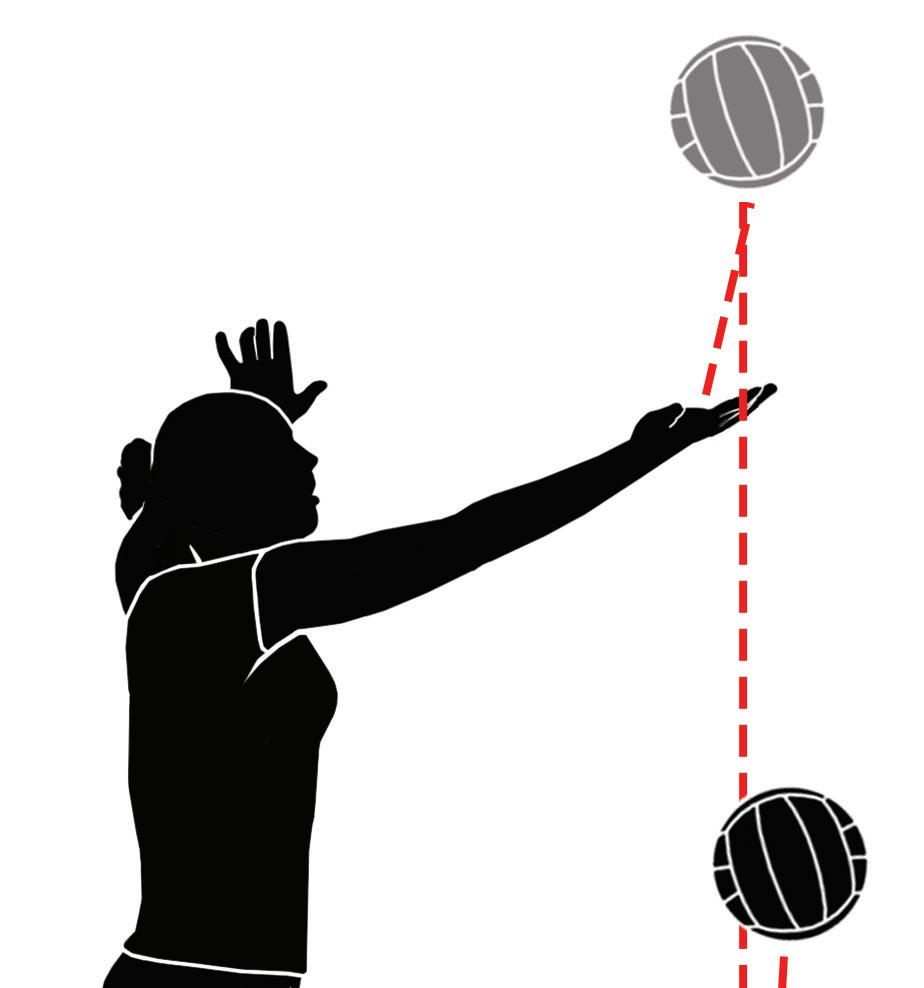
NCAA volleyball involves players who are older and allows eight seconds to contact the ball for service with no re-serve option. The ball must be released for service. Most first referees strive to authorize service within about seven to eight seconds from the end of the previous rally, assuming no interruption requests, with the intent of establishing a reasonable pace of play and keeping energy in the match. Consistent pacing is intended to give teams a reasonable and predictable amount of time to get into position and avoid delays in play that are not perceived as benefiting the game.
It is important for referees to know the differences between the three codes, especially if working all three, in order to not allow a team an unfair advantage. It also could prevent a protest.
Rick Brown, Westerville, Ohio, is a longtime girls’ and boys’ high school volleyball referee, working 22 state tournaments. He is a state and local rules interpreter, USAV Regional Referee and formerly a PAVO National Line Judge, working multiple D-I postseason matches.
REFEREE December 2022 | 33
A
CASEPLAYS Make Time for Table Talk
Centerline Fault?
Play: After playing the ball, A1 falls to the floor and slides across the centerline. A1’s entire right leg is touching the opponent’s court, but the left foot is still on the centerline. A1’s location does not present a safety hazard or interfere with the opponent. Ruling: In NFHS, it is a centerline violation. A player may only touch the opponent’s court beyond the centerline with one or both hand(s) or feet provided part of the encroaching hand(s) or feet are on or above the centerline (NFHS 9-5-7). In NCAA and USAV, there is no violation and play continues. NCAA and USAV rules allow this play provided some part of the encroaching player’s body is on or above the centerline and the encroachment is not a safety hazard or interference (NCAA 15.2.4.2; USAV 11.2.2.2).

Ball Crosses Under Net
Play: Team A’s first contact is passed poorly and is traveling underneath the net. A1 reaches beyond the centerline to play the ball before it completely crosses the lower space under the net.
Ruling: In all sets, that is legal contact. In all rule sets, the ball remains in play until it completely crosses the lower space under the net (NFHS 9-3-3h; NCAA 15.1.1.1; USAV 8.4.5).
Camouflage Numbers
Play: Team A’s jerseys are white, and the numbers are a light and dark blue camouflage and are outlined in dark blue.
Ruling: In NFHS and NCAA, the numbers would be illegal as the uniform numbers must be solidcolored (NFHS 4-2-4c; NCAA 7.1.2.4). In USAV, the rules do not state that the number must be a solid color. Provided the number, taken in its entirety, is clearly contrasting in color and brightness from the jersey, and the number is clearly legible at all times and from all angles on the court, such numbers are legal (4.3.3.1c, d).
By Bill Thornburgh
There are so many things to think about and do on the day of a match.
First, we must prepare to leave. What time should we depart? What route should we drive? Will there be traffic? Do I have my uniform cleaned and ready? Do I have all my referee gear?
Second, when we arrive onsite, it’s time to check the equipment and examine the facility. Here is a long list of obvious items on the referees’ to-do list: Is the net height correct? Are the game balls properly inflated? Are the antennae attached and in good position? Are there towels available? Is the referee stand secured and at the right height (if it’s adjustable)? Is everything padded that should be? Are there any overhead obstacles or playing area concerns? Is the Challenge Review System (CRS) in use? If so, how many cameras are there, what is the quality and zoom capability, is the technician experienced?
Third, it’s time to focus on the crew. The R1 and R2 have plenty of time to talk from courtside arrival until the match begins. It is wise to use this time to discuss techniques, preferences, sanctions and communication. During this pre-match time, the R1 should have a discussion with line judges and assign them positions (unless they have been by an assigner). Additionally, review the match protocol sheet for information on promotions, confirmation of timeout length, time between sets and any special events. Finally, take a few minutes to know who’s who at the table — who is in charge of music, who is announcing, is there a timeout coordinator (TOC), where are the stats people and where will the game day administrator be during the match?
While the R1 is gathering important information about the upcoming match, the R2 should also be hard at work. In a college match, the R2 needs to know where the stats people are located in case there is
a protest, what the TOC will do to indicate when television is ready, who controls the music in case there is an issue and who is the CRS technician. Most importantly, though, who is keeping score and tracking the libero (and challenges in NCAA matches)? Of course, both the R1 and R2 should introduce themselves to the scorers when they arrive on court; however, the R2 will be the primary point of contact throughout the match and must spend time talking to them at all levels of play.
This is an area where referees can improve. Let’s discuss some do’s and don’ts when it comes to talking with your table crew.
Introductions. Say hello, introduce yourself and take time to exchange pleasantries.
“Hi, I’m Bill. How are you? I’m excited to be here, it’s been a while since I saw you last.”
Be kind. Table crews are often locals who work at the school throughout the season and they do so because they enjoy it. At some levels of
34 | REFEREE December 2022 VOLLEYBALL
HESTON QUAN
Talking with the table crew and making sure the scorers are comfortable is an important job for referees. Fetu-Ao Alailima, Long Beach, Calif., makes sure the table is ready before giving the court back to the first referee.
play, it may be players from a previous or later match. We are visitors in “their home,” so be nice.
Make eye contact, smile, share small talk, and/or make an offer (e.g. take trash away, ask if they need a drink, ask what you can do for them).
Listen first, ask questions second. Take the time to find out their experience level and how they work together. Don’t start out by barking orders about what you want, especially if it’s very different than what they are used to doing. We want the scorers to be comfortable, accurate and work within an efficient system. Ask them, “How long have you been keeping score and/or working at this school? Do you work together often?”
“Do you (the assistant scorer) call out sub numbers for him/her (the scorer)? How will you let me (the R2) know you are ready to go?
“When will you start telling me how many substitutions each team has taken? I don’t need to know until
(insert number based on rule set), but if you see a coach is asking often, go ahead and update me after each one.”



“If you need more time on subs or have any questions, just let me know and we’ll slow down. It’s better to be a little slow and correct in order to avoid issues later.
“Will you (the assistant scorer) let me know verbally or with hand signals whether the liberos are in or out?”


Be inclusive and supportive. In NCAA matches, if CRS is in effect, be sure to communicate with the scorers first — what the challenge is and what the original call was. Then, let them know the final result before turning to the court to deliver the decision.
If a sanction is given, communicate clearly with the table and allow them to record it without telling them how to do it. If you see they need help, provide it.
During timeouts and between sets, review their work. If it’s good, let them know. If something is going well, give
them a discrete thumbs up and express your appreciation.
At the college level, invite them to participate — “If you’d like, you’re welcome to join us in the locker room for our post-match conference.”
Just before the match ends, or as it ends, say thank you and/or shake their hand.
Please take this advice and consider how you interact with scorers. The right “table talk” will create a more positive relationship, you’ll be perceived as a team player, they will feel included and valued, and they will enjoy working with you on future matches. Plus, you lose nothing by following these simple rules. So, it’s a win-win situation for everybody involved.

Bill Thornburgh, Shelbyville, Ky., is a National USAV and PAVO referee, as well as a FIVB International referee. He works in the Big Ten, Atlantic Coast, Southeastern and other D-I conferences around the Midwest.
PREP VOLLEYBALL
This magazine-sized annual guide features all the latest rules changes and points of emphasis, along with play-calling techniques and more than 100 caseplays and quiz questions. It’s the ultimate resource to prepare you for immediate success!
all about libero
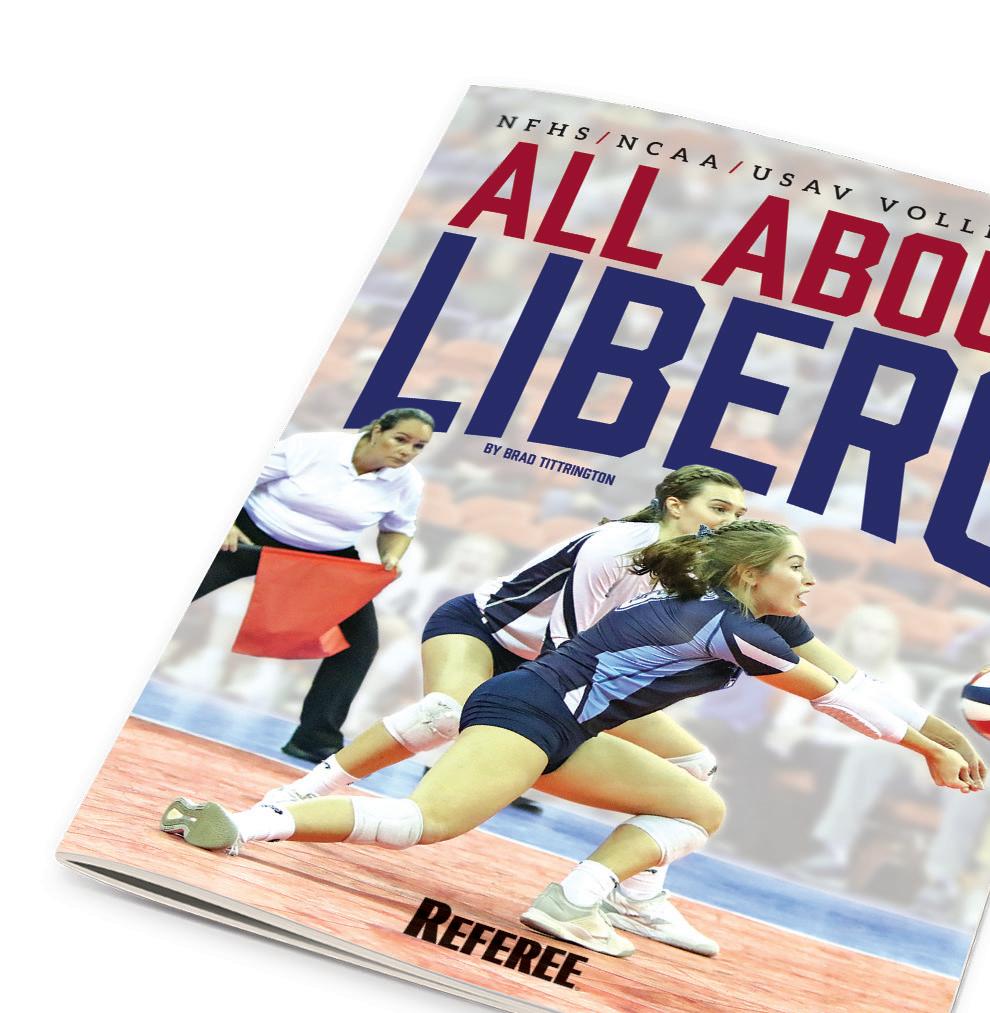
One of volleyball’s most unique rules is also one of the most difficult to master. This full color, magazine-sized guide is a perfect tool to refine the skills of experienced officials and to teach newer officials the ins and outs of libero play fast.
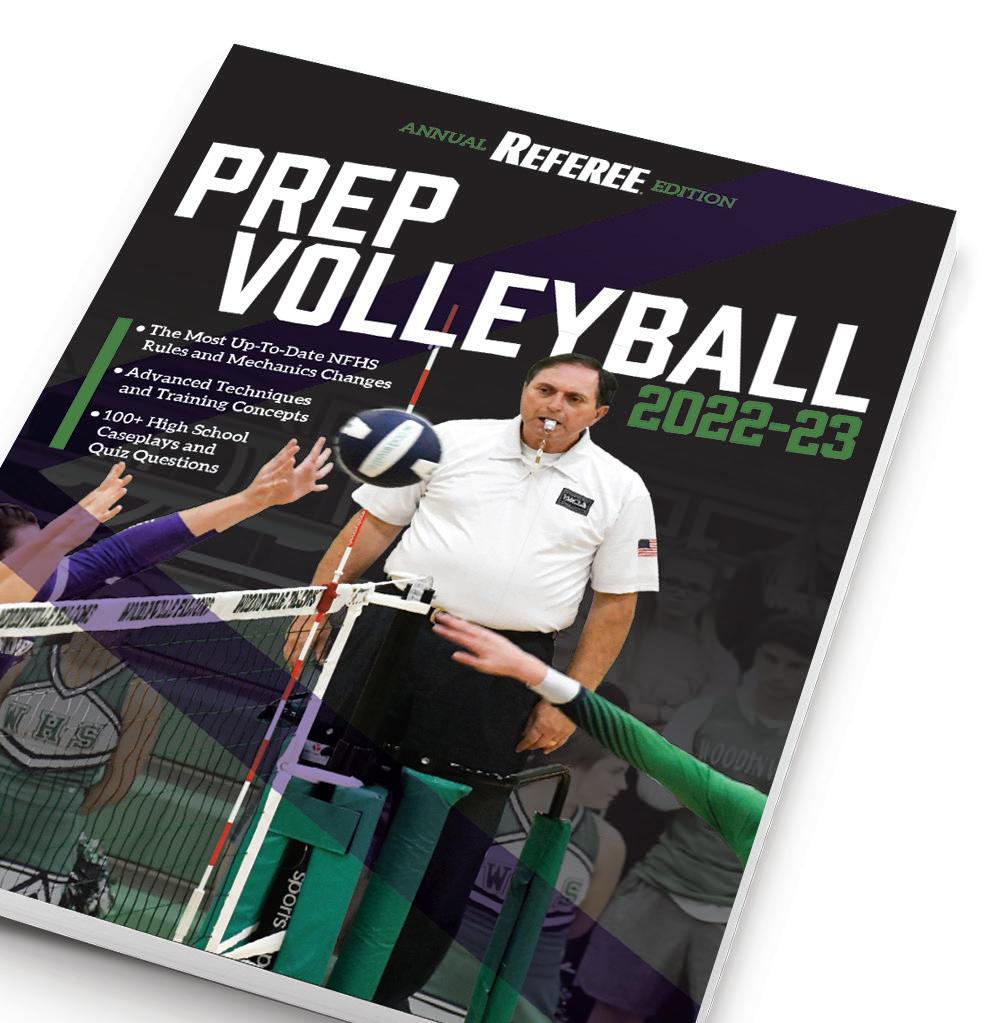
GREAT
OFFICIALS
VOLLEYBALL
START HERE
*NASO Member Discount Available. $1795 * DIGITAL PRINT $2395 COMBO $1895 * *NASO Member Discount Available. $1095 * DIGITAL PRINT $1695 COMBO $1295 * GET YOURS TODAY STORE. /volleyBALL new FOR 2022
ABSOLUTELY TRUE
NO ARGUMENT LIST OF OUR OPINIONS
It’s time for our annual opinions feature — our chance to add a little levity and express our thoughts on the world of officiating. Let us know your opinions at letters@referee.com.
By the Referee editors
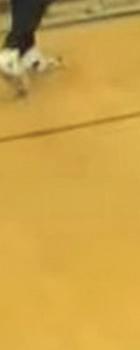


THINGS WE’RE TIRED OF SEEING ...
ASSAULTS ON SPORTS OFFICIALS


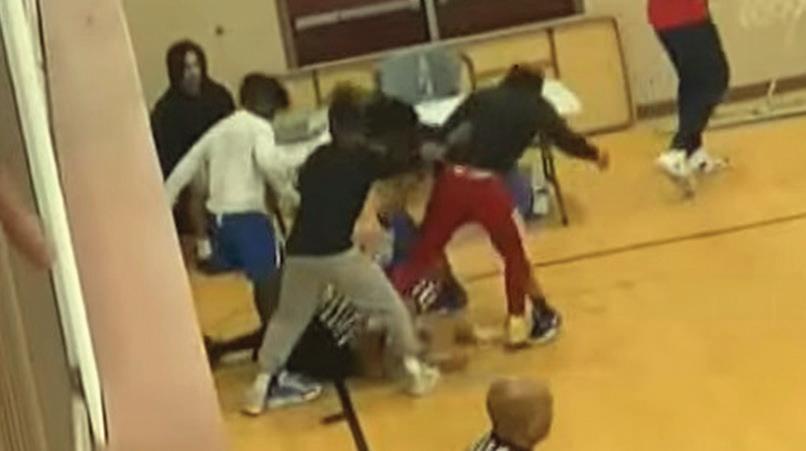


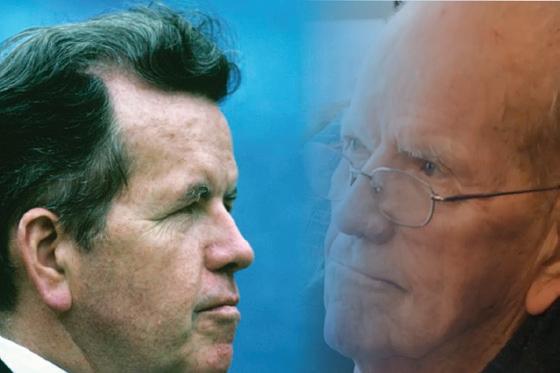

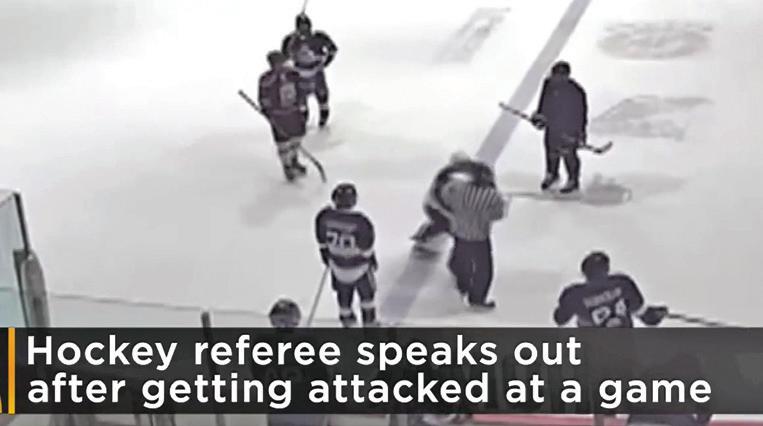
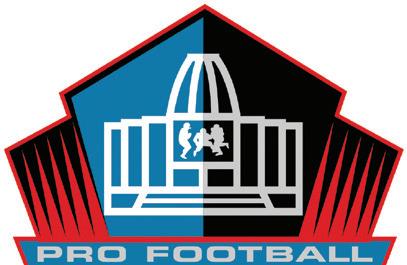
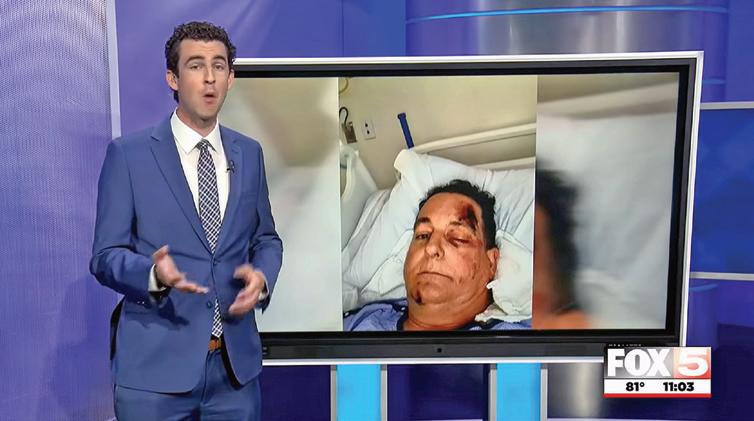
Enough already! The frequency with which assaults are happening to officials is horrendous. Schools, governing bodies, tournament organizers, etc., need to do more to keep us safe.

ART MCNALLY
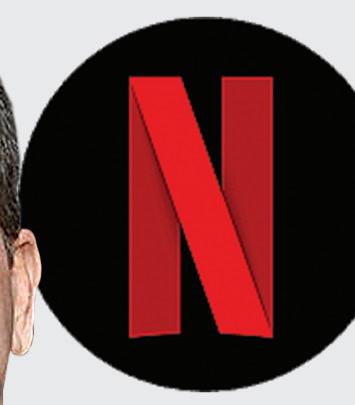
Becoming the first onfield official inducted into the Pro Football Hall of Fame. Welldeserved. And there are definitely others who should be considered for the future! (Hint, hint, HOF selection committee and voters.)
TIM DONAGHY

The convicted felon and disgraced NBA referee continues to seek the spotlight, participating in a Netflix documentary.

36 | REFEREE December 2022
THINGS THAT ARE GOOD
YOUTUBE: CBS PITTSBURGH; YOUTUBE: 11ALIVE; YOUTUBE: FOX5 LAS VEGAS; YOUTUBE: VALLEY NEWS LIVE
TASO TAKES A STAND

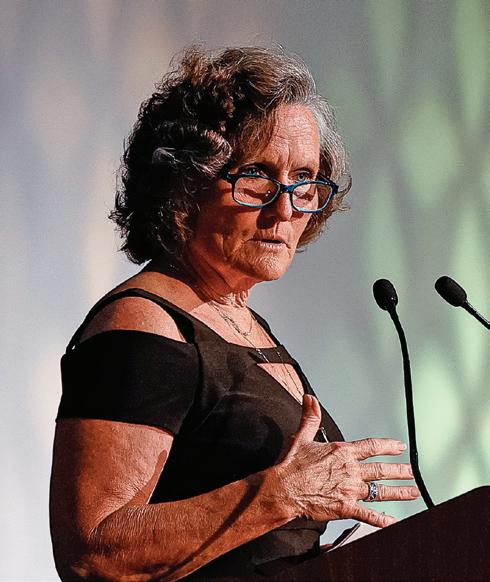





The Texas Association of Sports Officials (TASO) taking a stand against poor sportsmanship and abuse against officials by designing a response that will withhold assigning officials to schools that aren’t taking care of business.
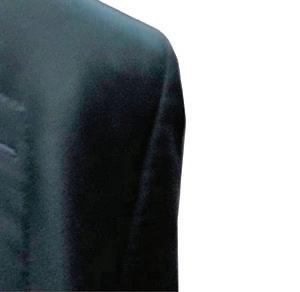
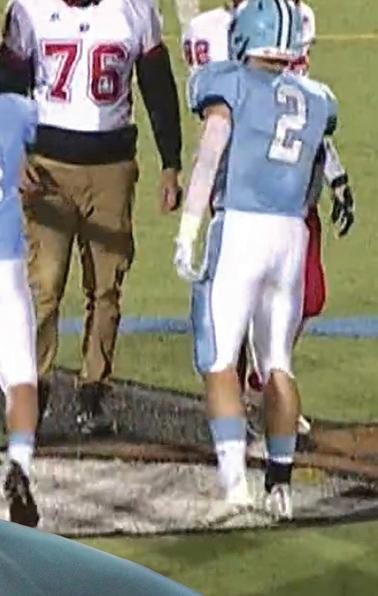


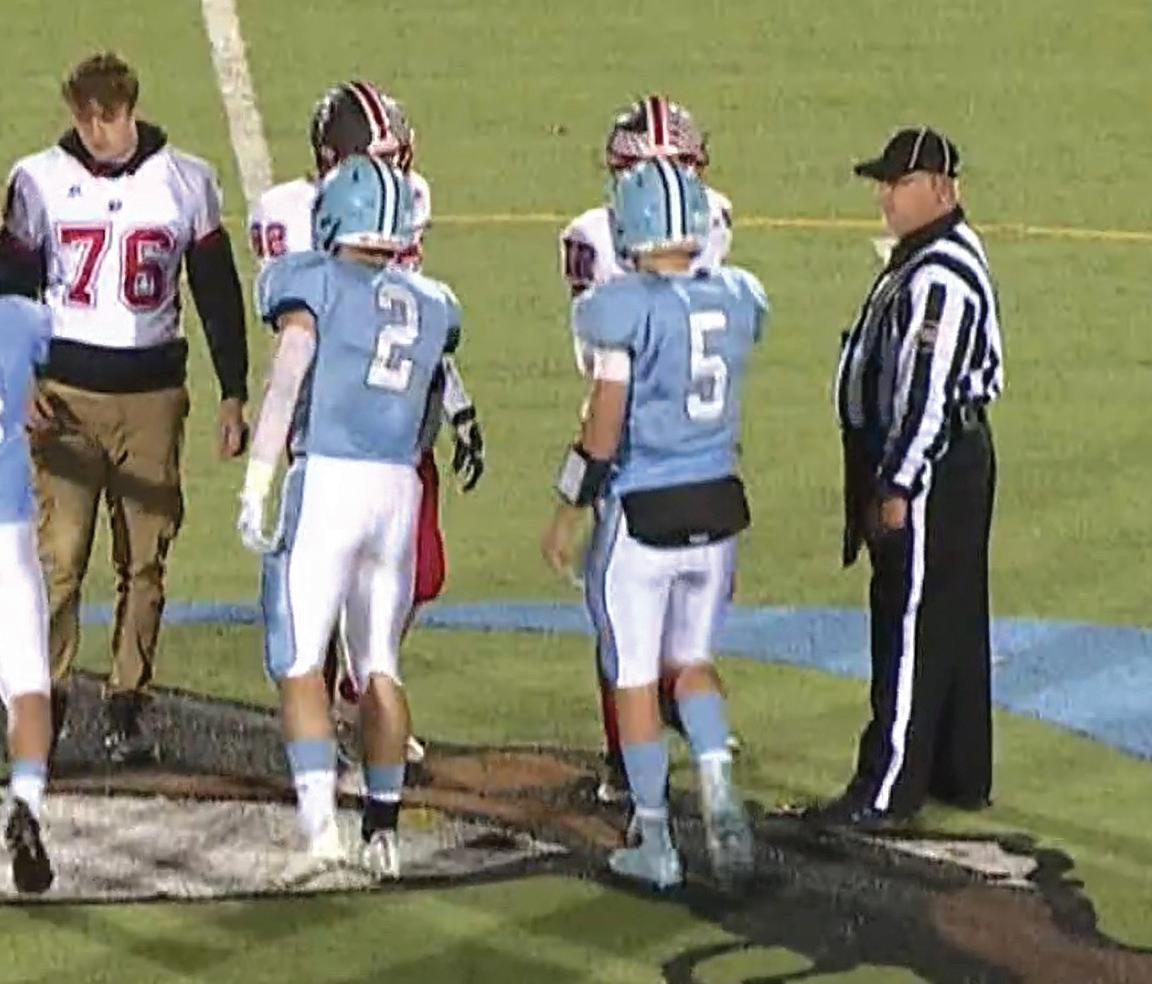
NASO SUMMIT RETURNS IN 2022
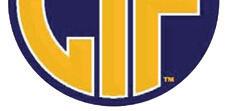
NASO Sports Officiating Summit returned in-person after a pandemic pause shifted the annual event to the virtual world for two years.
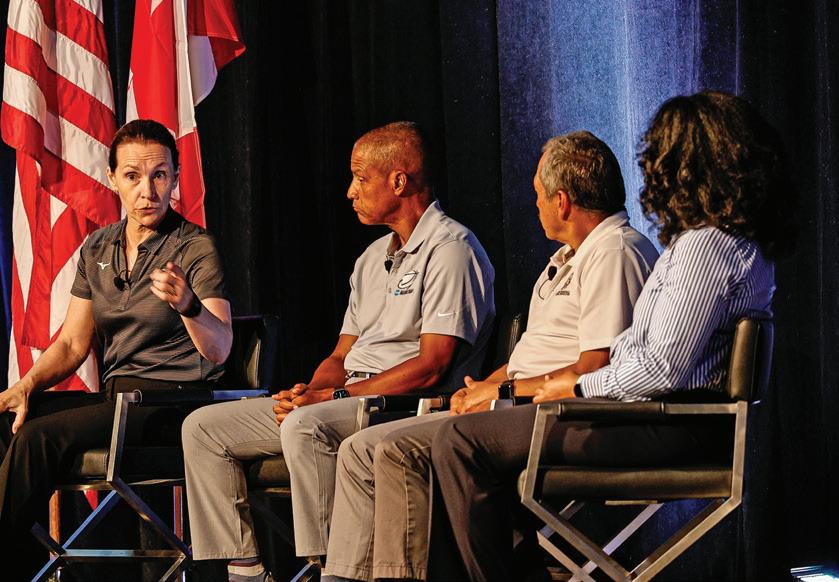
HOLD HARMLESS/INDEMNIFICATION
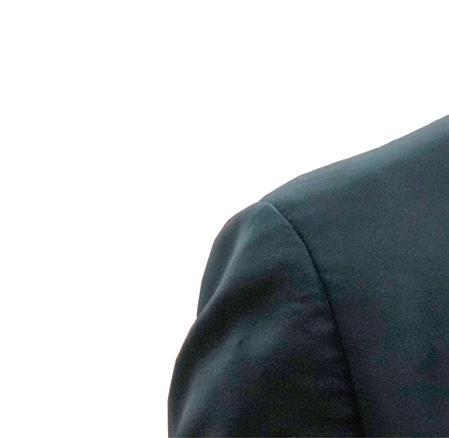
LIABILITY WAIVERS TO OFFICIALS
Those running events need to quit pushing their legal liability onto officials, who shouldn’t be responsible for things beyond our role. It’s not right.
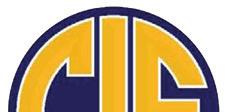

JAY BILAS
His personal crusade attacking men’s college basketball officiating and its leadership has gotten … personal. Using his outsized platform as an allknowing analyst, Bilas relentlessly went after national coordinator J.D. Collins, who retired this year. How exactly does the NCAA allow him to be on their version of a “competition committee” when he’s constantly bashing NCAA leaders? ESPN has created this mess. Bilas has gotten too big and is doing more harm than good.
TAKING STEPS TO INCREASE PAY
Organizations like the Washington Interscholastic Activities Association, University Interscholastic League (Texas), Louisiana High School Athletic Association and California Interscholastic Federation-Southern Section are increasing officials’ pay. Sure, there are aspects of these increases that don’t please everybody, but there are sizable increases for many officials. It’s a big step in the right direction and about time our largely stagnant wages got some attention amid the demands of this avocation.
A LACK OF SPORTSMANSHIP
REFEREE December 2022 | 37
Can’t amateur sports be one place in society where we can demonstrate some civility toward each other?
GOOD TO SEE ...
REFEREE December 2022 © ADAM CAIRNS / USA TODAY NETWORK; REFEREE
OPINIONS
MIC DROP FUNNIEST GAME INTERRUPTION






















MLB put mics on umpires this year so fans could hear the results of replay reviews. It was a great move overall, but here were a few glitches of course. Adrian Johnson, for example, got caught dropping an expletive during one announcement. NFL referees have been announcing penalities for years, although even they aren’t flawless. Even now-retired referee Ed Hochuli, known for his loquaciousness, had his moments on the microphone. Who said explaining things was going to be easy?
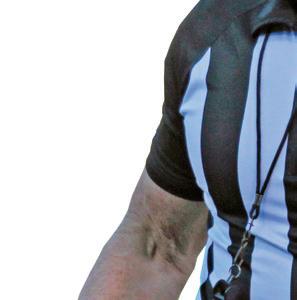
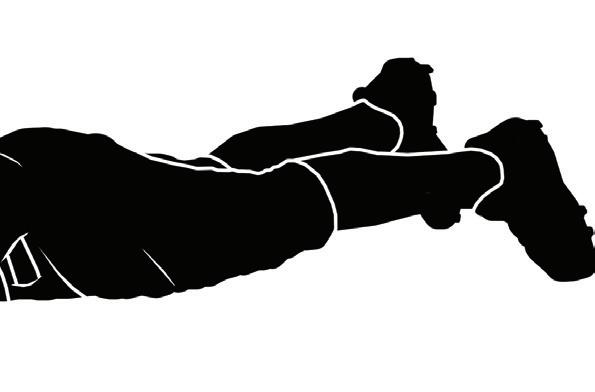
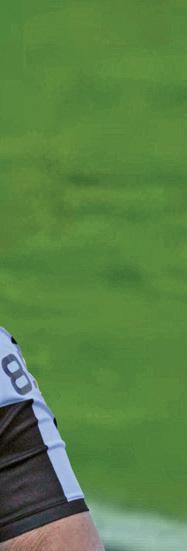
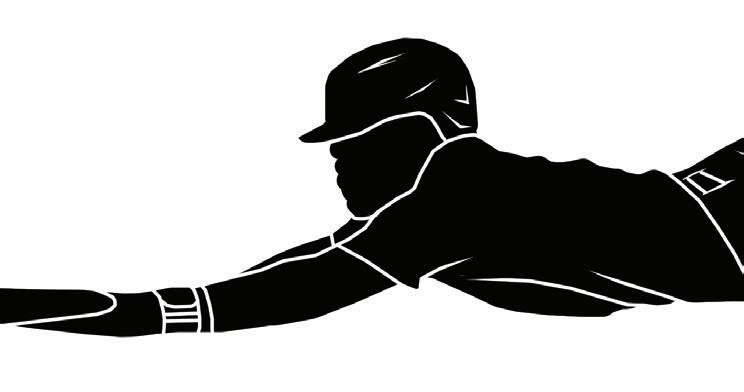
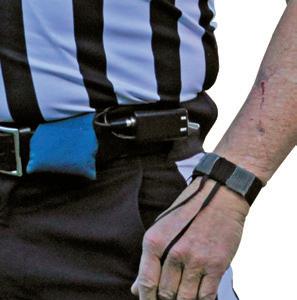
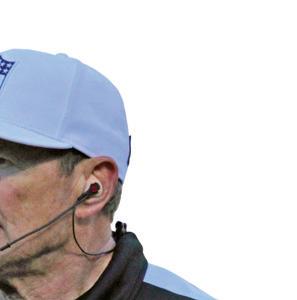
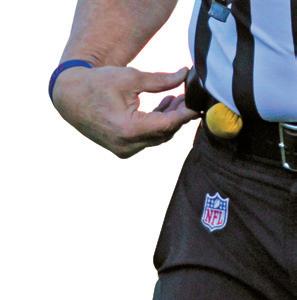
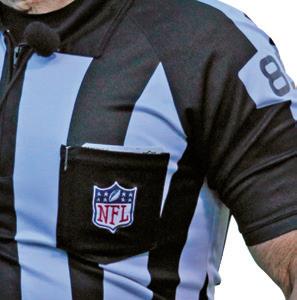
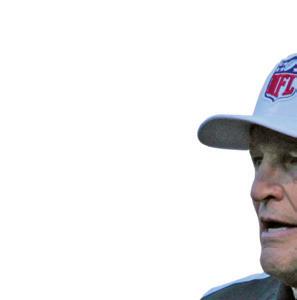
“The pass is incomplete. Before the pass was complete, the ball was being touched by the defender, who was out of bounds. Therefore, the loose ball, before the completion, was touching a player who was out of bounds. Therefore, by rule, that’s an incomplete pass.”
“Personal foul. Roughing the facemask. Defense.”
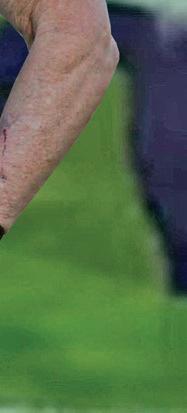
“There are two fouls on the defense. Offense … Er, correction. I’m sorry. Offside defense.”
“Yes, there are penalties in the Pro Bowl.”
“To reverse in replay there must be clear, uncontrovers … Er, uncontroverted evidence that the ruling on the field was wrong. In other words, we’d have to be certain. Here, the ruling on the field stands.”
The referee was among those on the field who gave belly rubs to a dog that invaded the field and interrupted a June 25 soccer match between Venezuela and Chile in Curicó, Chile. The playful pup was eventually carried off by a Chilean player.
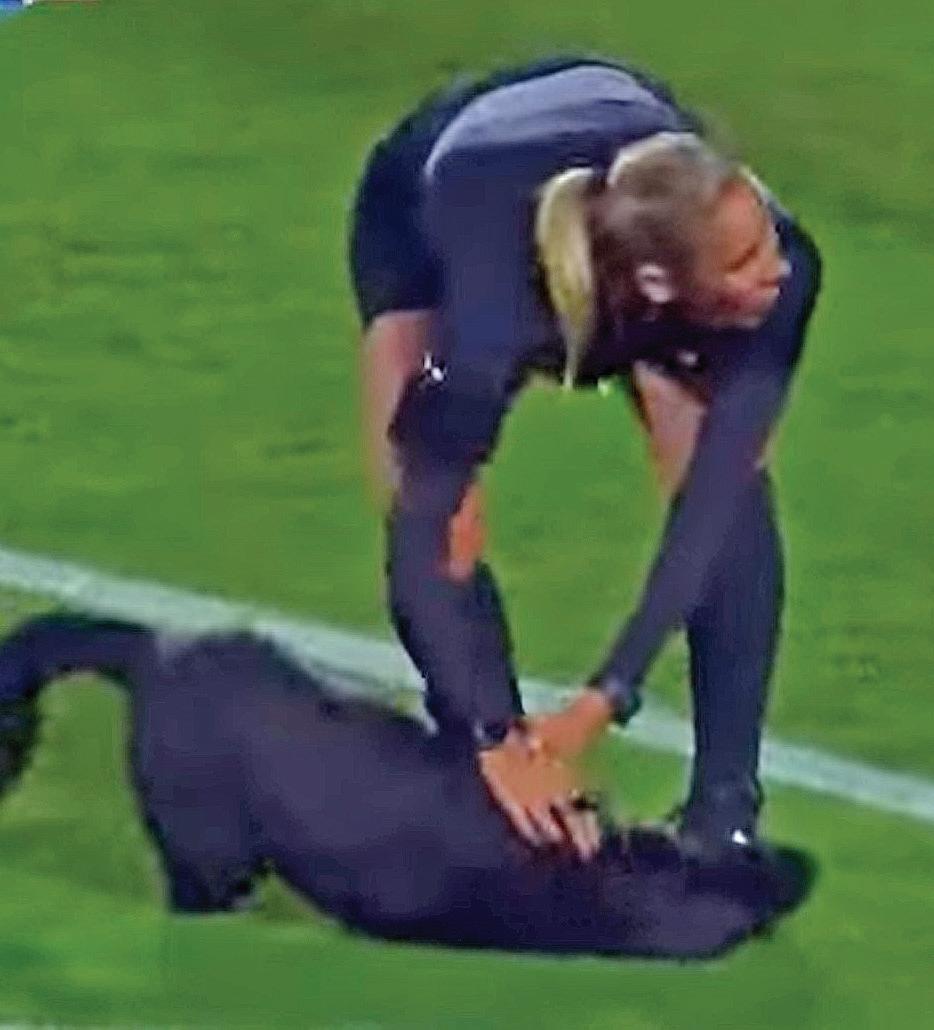
AT WHAT POINT IS IT STILL BASEBALL? BASEBALL
MLB is putting a clock on pitchers, banning defensive shifts and making bases bigger starting in 2023. Maybe we’re just traditionalists, but it seems they’re messing with some fundamentals of the game.
38 | REFEREE December 2022
ABSOLUTELY TRUE
NO ARGUMENT LIST OF OUR
BILL NICHOLS; YOUTUBE: INSIDE EDITION
Thanks to the shortage of officials, schools are being forced to play on unconventional nights and times. Off nights turned off.
WEIRDEST EJECTION
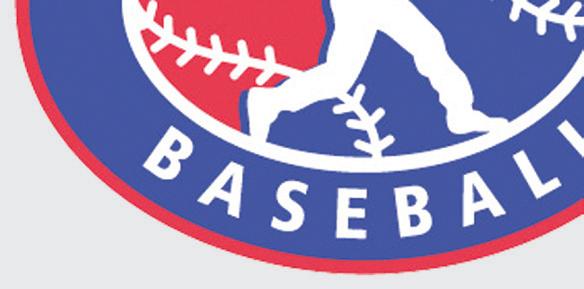
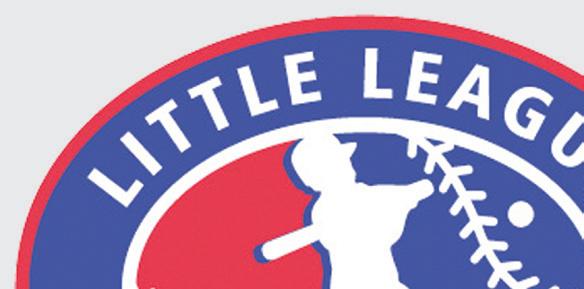

Before an Aug. 26 football game, Union Local (Ohio) High School’s first-year band director berated the referee because the officiating crew walked behind the band while it played before the game. His reaction initially drew an unsportsmanlike conduct penalty charged to the home team. When his tirade continued, he was ejected.














Horse’s Ass of the Year




















 J.Bilas -
J.Bilas -





 Angel Hernandez Ted Valentine Scott Foster (mostly Suns fans)
Angel Hernandez Ted Valentine Scott Foster (mostly Suns fans)
REFEREE December 2022 | 39
LEAGUE
INCORPORATED
LITTLE
BASEBALL
BY THE NUMBERS*
NIGHT
Total revenue: $22.4 million (including $8.1 million broadcasting rights fees and $2.6 million from World Series Tournaments) Net assets: $81.9 million Game fees to umpires working the Little League World Series: $0 * From IRS Form 990 Filing for fiscal year ending in 2020 ANY
LIGHTS
Seriously, you’re wondering why we’re struggling to have enough officials?! Treat us like garbage Pay us poorly Worsening sportsmanship COVID-19 Pandemic Provide
security or
administration support
+ BAD MATH
little
game
x x x
Officials Fans Hate to Love
NEVER BETTER LATE
When Contact Out of Bounds Merits a Flag
By George Demetriou
Whether or not a runner is hit after he goes out of bounds seems cut and dried, but the seemingly simple topic can involve a large degree of judgment. Some hits out of bounds are intentional — the
tackler wants to inflict punishment and does not care about the consequences. Most out-of-bounds activity is accidental — the defender does not recognize the play has gone out of bounds. That could emanate from carelessness or over-exuberance. Officials must be able to determine
the location of the runner when contact is made, but as we’ll see that isn’t always the total story. If a foul is called for a late hit out of bounds, the penalty is 15 yards and carries an automatic first down if by team B in an NCAA game (NFHS 9-4-3b; NCAA 9-1-7b).
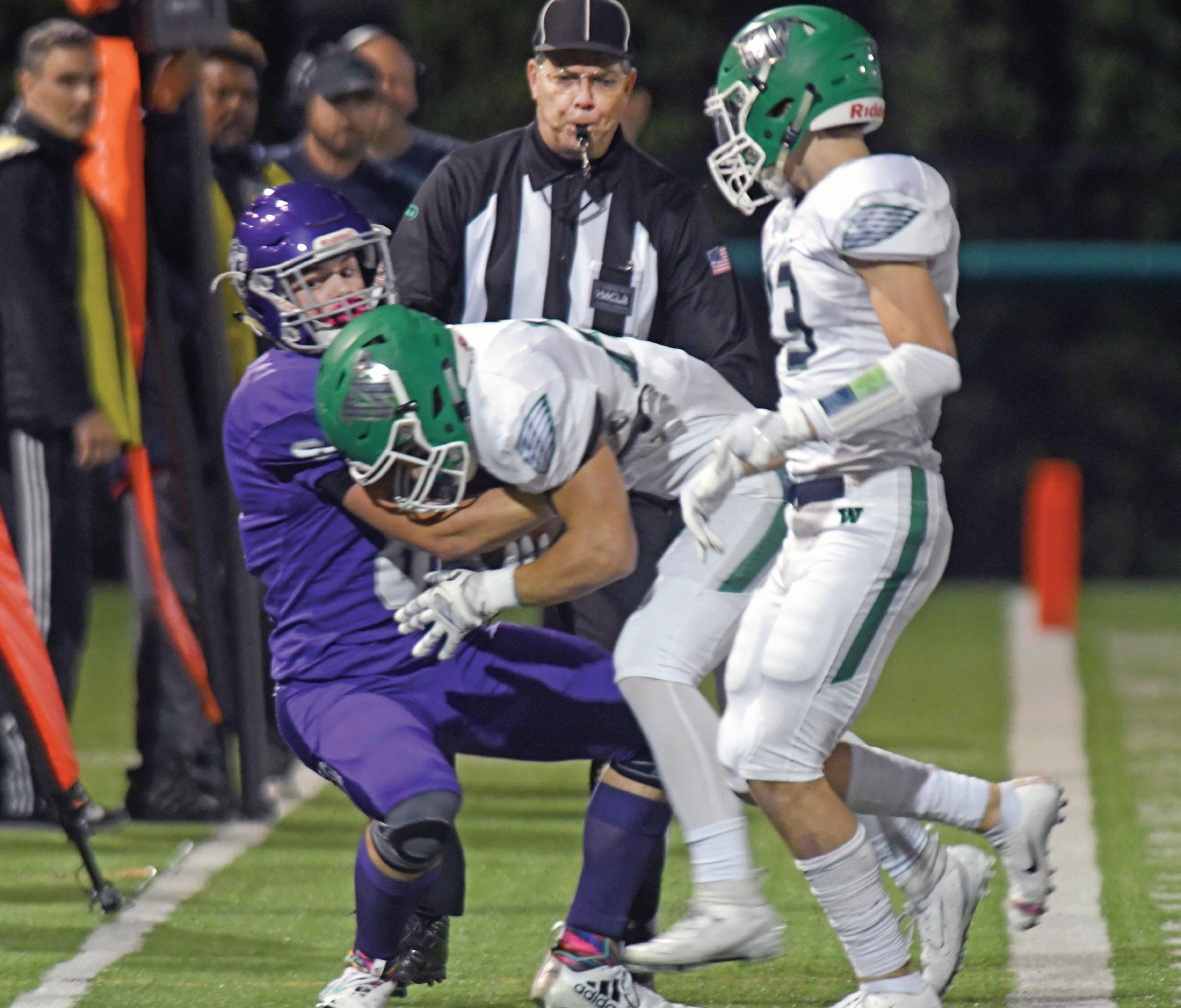
FOOTBALL RULES, MECHANICS, PHILOSOPHY EDITOR: JEFFREY STERN jstern@referee.com 40 | REFEREE December 2022
Depending on how this contact started, and how and if it continues, Patrick Howard, Lynnwood, Wash., may have to throw a flag for unnecessary roughness.
DALE GARVEY
Renewed effort. When Jerry Seeman was the NFL’s senior director of officiating, he popularized the term “renewed effort” to describe a second effort by the defense after the runner is clearly out of bounds. Whether it’s referred to as a renewed effort or a second effort is inconsequential; the important part is to look for intentional additional energy because that indicates it is highly likely a foul has occurred.
One scenario for renewed effort is when the initial contact is clearly after the runner has gone out of bounds. That scenario is relatively easy to observe and flag. The more subtle form of renewed effort occurs when contact begins inbounds and is maintained while the runner goes out of bounds. If the runner is taken to the ground as a result of the original contact, even though the takedown is clearly beyond the sideline, there is no foul. However, if the tackler originates an intentional new energy even though contact is continuous, it is a foul. The second effort can be a shove or simply completing a tackle that is avoidable. The quickness of the whistle indicating the play has ended can be a consideration. Although a tackler may not immediately know he and the runner are out of bounds, ignorance of the runner’s location is not a valid excuse.
Surrender. By rule a player is out of bounds when he touches anything out of bounds including an official or team box personnel. In most cases a runner is out of bounds when a foot touches on or beyond the sideline. If the defender makes contact simultaneously with that act, a foul has technically occurred, but that would be an officious call. In fact, while the time of the contact with respect to the point in time the runner was out of bounds by rule is certainly a point of consideration, the point in time the defender committed to the tackle is much more important. So, if the defender reaches the point of no return in making a tackle while the runner is inbounds, but the contact occurs after the runner is out of bounds, no foul should be called.
A complication arises when the runner is giving up. Hitting such a runner while he is still inbounds is legal by rule, but could be judged as unnecessary roughness. Whether or not a cheap shot has taken place is clearly a judgment call; severity and location of the contact are likely the main criteria. That type of play is inconsistently called and is a “must have” topic for the pregame.
Avoidable contact. Another aspect of the play to be considered is determining if the contact was avoidable. A defender who puts his head down to make a wrap-up tackle should get the benefit of doubt. A tackler who is upright can see if the runner is out of bounds. If the defender makes an effort to stop, he should get credit for that especially if he tries to grab the runner to prevent him from falling. A player who uses his arms or shoulder to deliver a blow while out of bounds has no excuse.
Forcible contact. The runner going to the ground is a good indicator of forcible contact, but it is not absolute. Significant contact that causes the runner to stumble or stagger without falling could also be considered forcible. Also worthy of a foul is contact that causes the runner to crash into an obstacle such as a bench or trainer’s equipment. Team boxes have several items that can be hazardous and the bottom line is there is not supposed to be any forcible contact outside the sideline.
Intensity of the game. Marginal contact in the fourth quarter of a well-played game with minimal fouls is more likely to be excused than similar contact early in a game full of hostilities. Early in a game, officials have a choice to make. It’s usually OK to pass on marginal contact at the outset, but there can also be a benefit to setting an early no-tolerance bar. There are no absolute guidelines. As experience is gained, officials will learn to consider the nature of the opponents in deciding what to tolerate. Pregame warmups are usually a good indicator of how the game is going to be played and if
DID YOU KNOW?
Goalposts on an NCAA field have been 18 feet, six inches apart since 1991. Before then, the distance was 23 feet, four inches, the current standard for
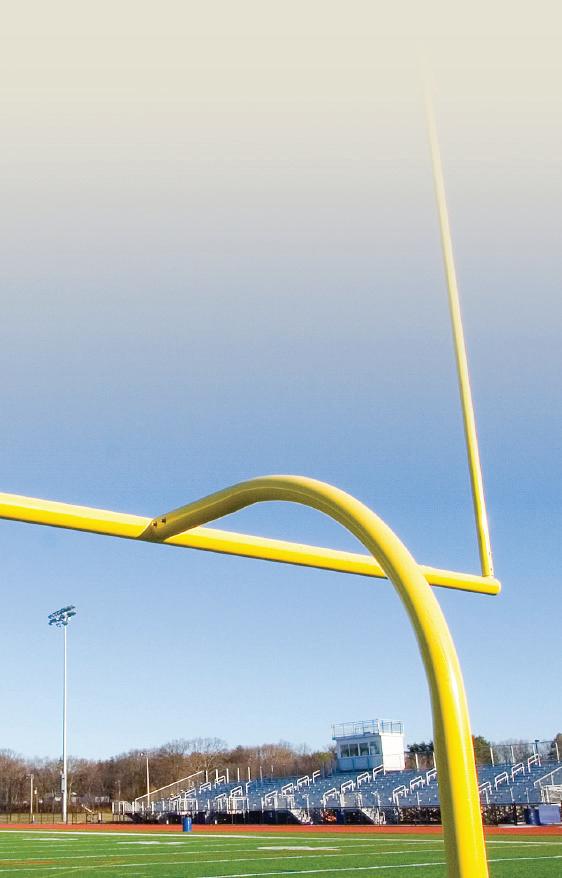
THEY SAID IT
“You have to listen to and observe the veterans and the officiating supervisors. When I was coaching, that’s what I demanded and expected from the players. Listen, observe and do it. That’s all there is and don’t make any excuses.”
— The late NFL umpire and college coach Ron Botchan, on how to improve as an official
BY THE NUMBERS
19
NFL record for fewest penalties by a team in a season (Detroit 1937)
163 37 0
NFL record for most penalties by a team in a season (Oakland 2011)
NFL record for most penalties by both teams in a game (21 by Cleveland, 16 by Chicago, Nov. 25, 1951)
NFL record for fewest penalties by both teams in a game (Four times; last by Pittsburgh and Philadelphia, Nov. 10, 1940)
REFEREE December 2022 | 41
TEST YOURSELF
In each of the following you are given a situation and at least two possible answers. You are to decide which answer or answers are correct for NFHS and NCAA rules, which might vary. Note: In kicking situations, K is the kicking team, R the receiving team. Solutions: p. 85
1. Fourth and two at team B’s six yardline. A1 fumbles at team B’s eight yardline. The ball rolls to team B’s six yardline, where A2 falls on it. B3 piles on after the ball is dead. The next play will be:
a. First and goal for team A from team B’s two yardline.
b. First and goal for team A from team B’s three yardline.
c. First and 10 for team B from team B’s two yardline.
d. First and 10 for team B from team B’s three yardline.
e. First and 10 for team B from team B’s four yardline.
2. K1 punts on fourth and 10 from his own 20 yardline. R2 catches the kick at team K’s 45 yardline and advances. During R2’s run, R3 gives a fair catch signal.
a. That’s not a foul.
b. That’s a foul.
c. The ball remains live.
d. The ball is declared dead.
3. Third and 20 from team A’s 10 yardline. A1 is roughed while completing a pass to A2. A2 advances to team A’s 12 yardline, is hit and fumbles. The ball rolls into team A’s end zone and across the endline. Team A accepts the penalty. The next down will be:
a. First and 10 for team A from its 15 yardline.
b. First and 10 for team A from its 25 yardline.
c. First and 10 for team A from its 27 yardline.
d. First and 10 for team A from its 35 yardline.
4. With 7:13 left in the first quarter, A1 is flagged for intentional grounding.
a. The penalty is loss of down at the spot of the pass.
b. The penalty is five yards from the spot of the pass and loss of down.
5. On a try from team R’s three yardline, team R has 12 players on the field at the snap. The kick fails. After the ball is dead, K2 commits a personal foul.
a. The penalties cancel.
b. Both penalties are enforced and the try is replayed.
c. Only the penalty for team R’s foul is enforced.
d. Only the penalty for K2’s foul is enforced.
it will start with chirping. When in doubt, a foul should be called.
Mechanics. Deciding whether or not to call a foul does not end the official’s tasks. Plays that end with players out of bounds deserve special attention. It pays to note which bench the runner has plunged into. If that sideline belongs to the runner’s team, he will be safe from further harm, but vigilance on the tackler is necessary. Efforts by team box personnel to restrain the defensive player from further contact may be misunderstood and additional infractions may occur.
The other side of the field is no different except roles are reversed. A runner who ends up among the opponents may be in harm’s away
and/or subjected to verbal abuse. The wing official must turn and watch the players while holding the spot. With a five-person crew, the back judge and/or referee must get there quickly, carefully avoiding the other players in the bench area. The back judge must always be there. The referee only has a realistic chance of helping if the play goes to the passing-arm side of the quarterback. With a seven- or eightperson crew, the deep sideline officials and/or referee or center judge can assist. The opponents must be brought out of the bench area visually, if not physically. Then and only then may the officials retrieve the ball.
George Demetriou has been a football official since 1968. He lives in Colorado Springs, Colo.
Watch Out for Murphy Law?
By Jay Rowan
You must be in the game on every play. You can’t take a play off because that is when something always happens. Murphy’s Law states, “If something can go wrong, it will go wrong.” Anticipate the play (not the ruling) and be ready for anything.
For example, if you anticipate an onside kick on every free kick, you will never be fooled when it happens. If you anticipate the quarterback will spike the ball to stop the clock but the offense runs a kicker onto the field at the last second, you will recognize a field goal is going to be attempted and you may need to adjust your position. Anticipating a foul when you see some contact or something that doesn’t look just right can lead to trouble. If you are saying to yourself, “I think that’s a foul,” it isn’t. An exception might be a situation in which a player could be injured. In those cases, err on the side of safety and call a foul.
Your foul-calling progression should be to see the entire play; make your decision; if it’s a foul, throw your flag to the spot of the foul (if it is not a foul at the snap); don’t stop
officiating (continue to the end of the play).
Reporting a foul. When reporting a foul, the referee should be told the foul that has occurred; the offending team (offense or defense, kickers or receivers); the offending player’s number; status of the ball at the time of the foul (live or dead); the spot of the foul; result of the play; and how the penalty will be enforced (yardage, spot of enforcement).
Other officials’ responsibilities. Non-reporting officials must stay informed. That is easier if the crew is using official-to-official communication devices. If not, observe the referee’s signals. The head coach of the offending team should be told the number of the offending player. In NFHS, a designated representative (usually the head coach) decides whether or not to accept the penalty.
If anyone on the crew believes something is being done incorrectly, it should be pointed out before the ball is put back into play.
Don’t let Murphy become the extra member of your crew. Do things correctly all the time.
Jay Rowan is a veteran high school football official from Pittston, Pa.
FOOTBALL 42 | REFEREE December 2022
Playing the End (Zone) Game
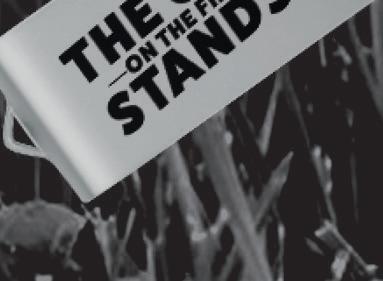
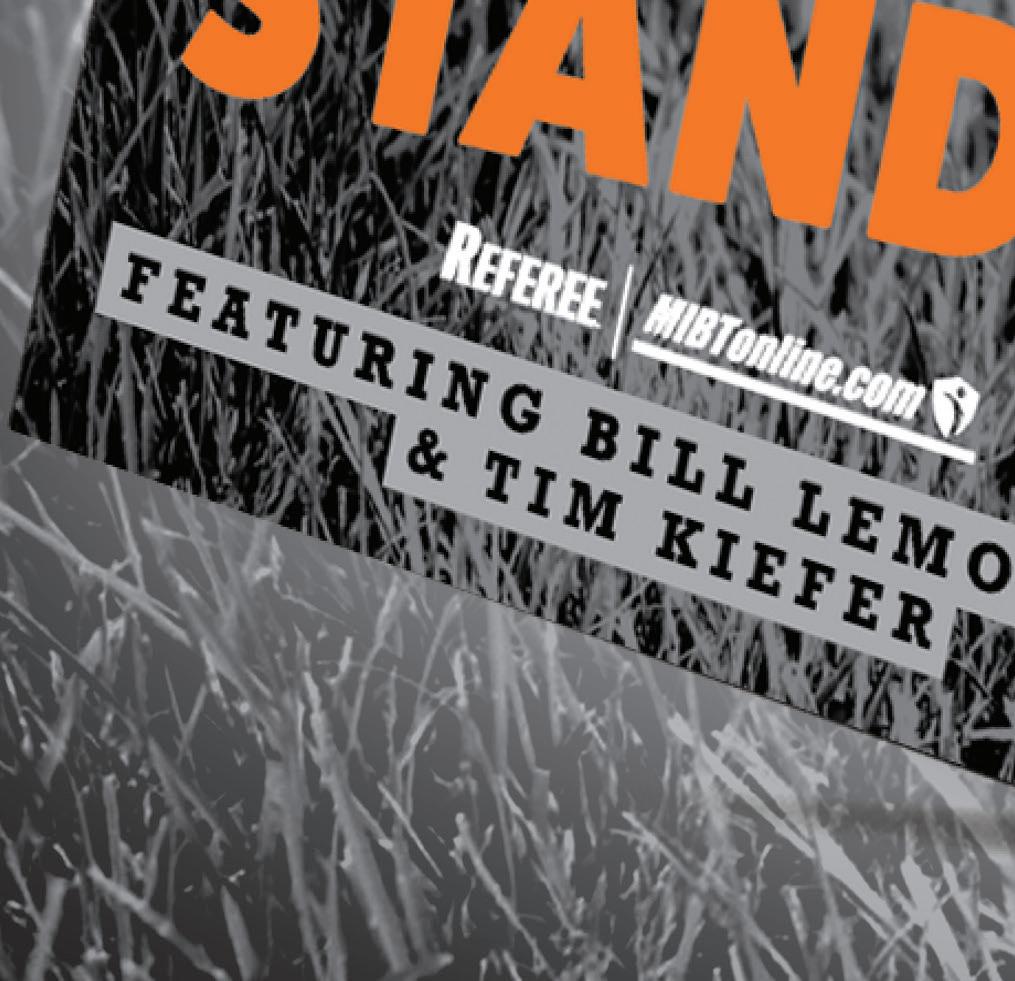 By Judson Howard
By Judson Howard
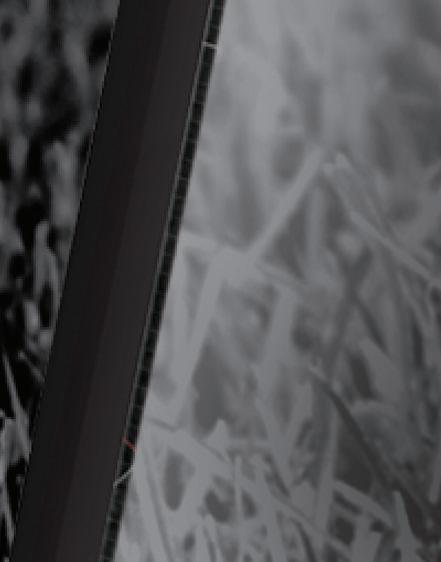

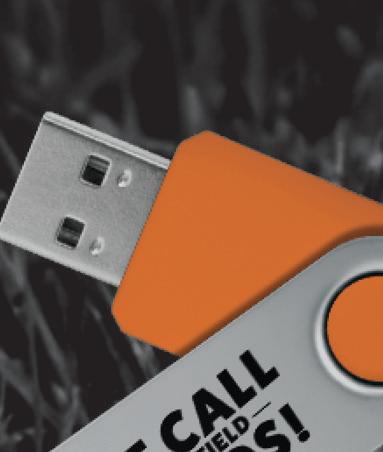
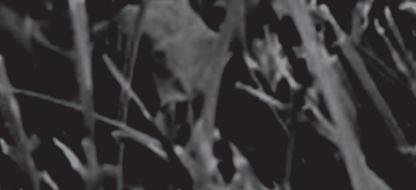
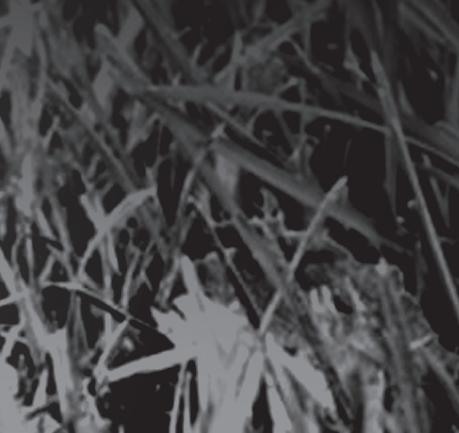
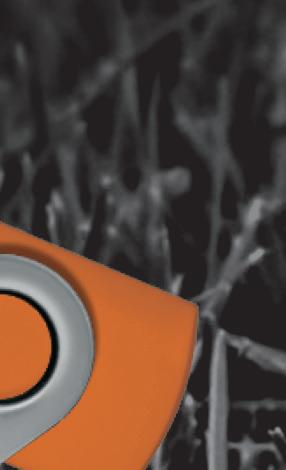

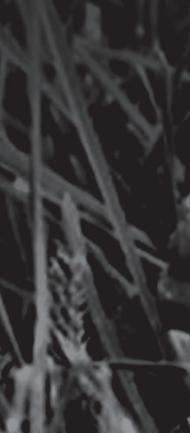

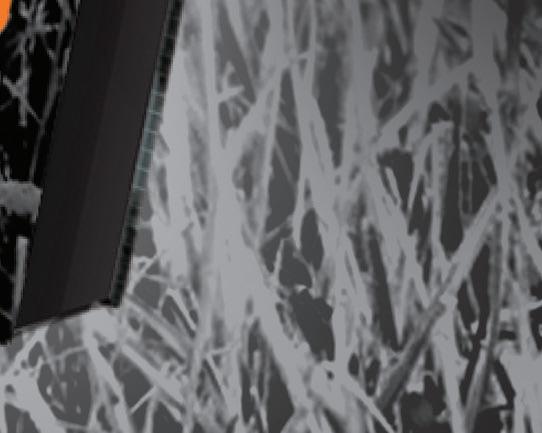

There’s a foul during a live-ball play that results in a score. How is it handled and what are the factors to consider? There are similar considerations for fouls committed in the end zone or while the ball is in the end zone.





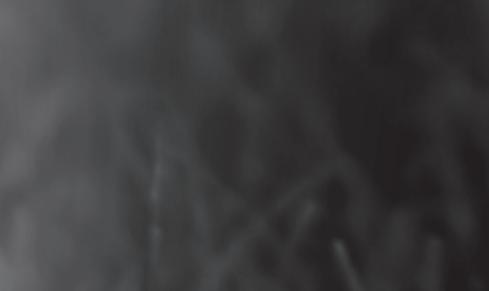








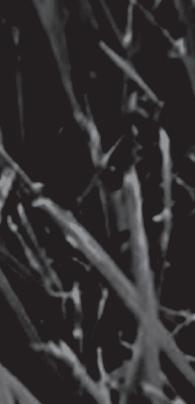



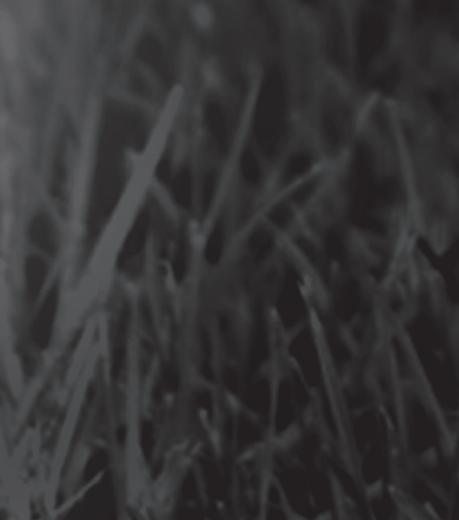


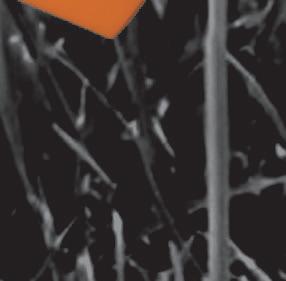


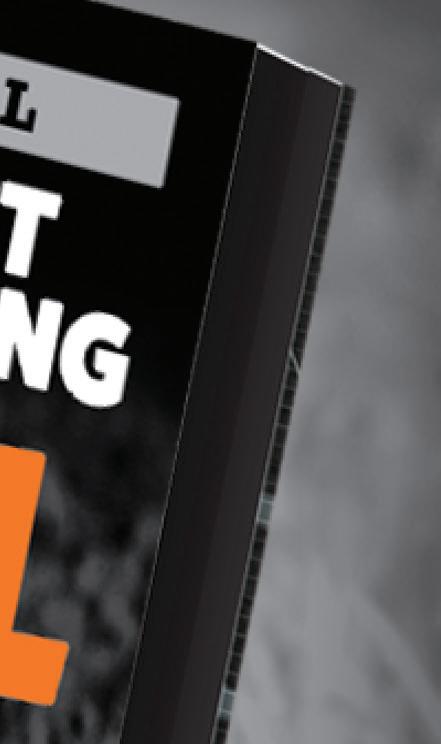






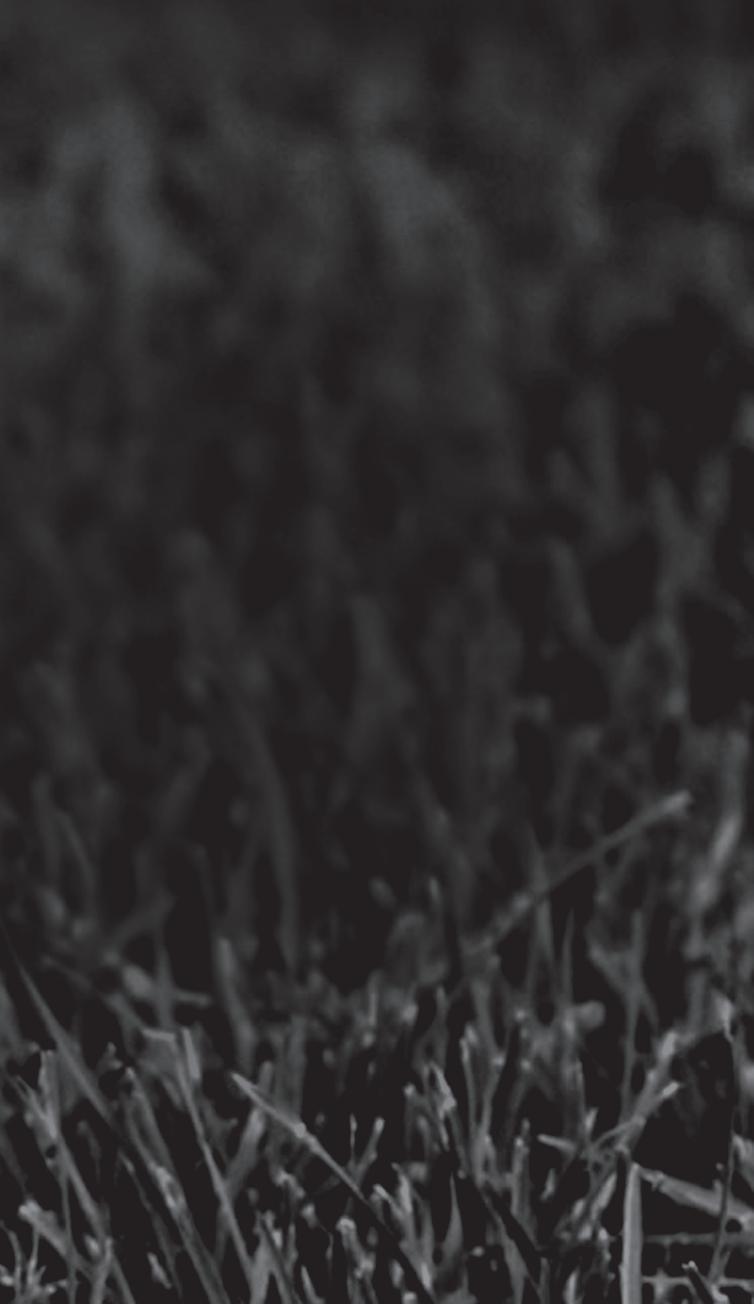








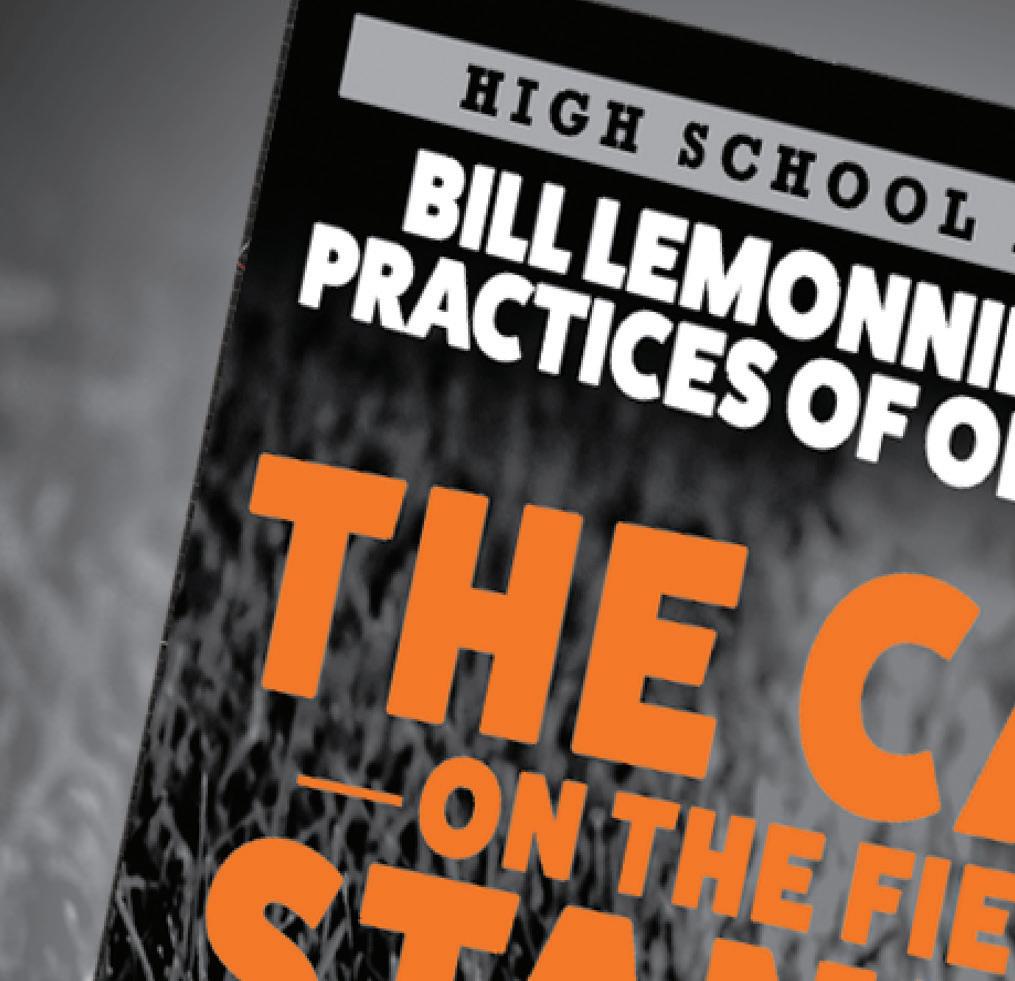


































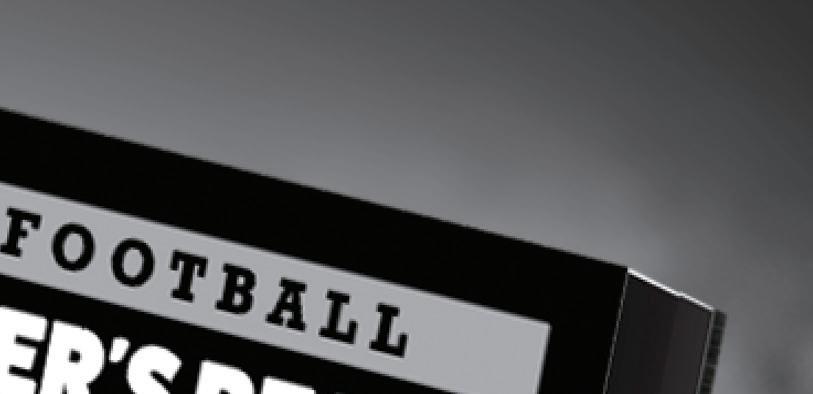
What happens when there is a foul by the opponent of the team scoring a touchdown?
Play 1: A1 scores and team B was flagged for (a) holding, or (b) roughing the passer. Ruling 1: In NFHS, team A gets six points and can have either penalty enforced on the try or kickoff (8-2-2). In NCAA, in (a) five- and 10-yard penalties by the non-scoring team are declined by rule. In (b), personal fouls or unsportsmanlike conduct fouls can carry over to the try or kickoff (10-2-5a-1, 10-2-5a-2).
But what if either team commits a
dead-ball foul after a touchdown and before the try?
Play 2: R1 returns a punt for a touchdown. After the ball is dead, (a) K2, or (b) R3 is flagged for a personal foul. Ruling 3: In either case, the offended team may choose to have the penalty enforced on the try or kickoff (NFHS 8-2-5; NCAA 10-2-5c).
What about in overtime or extra periods?
Play 3: B1 commits a personal foul during a touchdown during the first possession of overtime or extra periods. Ruling 4: Team A can opt to have the penalty enforced before the try or have the penalty enforced on the opponent’s first possession. If the latter option is chosen, team B would start its series at the opponent’s 25 yardline (NFHS) or 40 yardline (NCAA).
Here’s a case where a play is near team B’s end zone and either team fouls in team B’s end zone.
Play 4: A1 passes from his own end zone. During the pass, A2 is flagged for holding in the end zone. The pass is (a)incomplete, or (b) intercepted by B3, who is downed at team A’s 10 yardline. Ruling 4: A spot foul in (a), resulting in a safety if the penalty is accepted. In (b), team B will likely decline the penalty and begin a new series at team A’s 10 yardline.
Play 5: Punter K1 muffs the snap at his 20 yardline and kicks the loose ball backward and over the endline. Ruling 5: Foul for illegally kicking the ball. Team R may decline the penalty and score a safety. In NFHS, if the 10-yard penalty is accepted, it is enforced from the spot of the foul. In NCAA the 10-yard penalty includes loss of down. Judson Howard, Los Angeles, is a replay official in the Pac-12 Conference. He officiated more than 20 years, many at the NCAA Division I level.
YOU MAKE THE CALL High school officials don’t have replay. Whatever call is made, that is the call. For the first time, we have a section of plays that we run through first without replay and no commentary in real time, having you - the official – decide on your call. Then we go back and break down each play. Most of these plays are tight and can go either way. But no matter the call, the call on the field stands! new FOR 2022 Enhanced HD Video delivered via USB Drive $2495 MORE THAN 1.5 HOURS OF ENHANCED HIGH SCHOOL VIDEO PLAYS LEARN MORE STORE. /FOOTBALL
CASEPLAYS


Player Out of Bounds
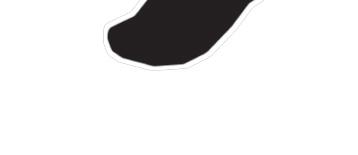
Play: First and 10 on team A’s 20 yardline. A1 fumbles at team A’s 30 yardline. The ball remains inbounds. A1 deliberately runs a few steps out of bounds, returns inbounds, picks up the ball at team A’s 34 yardline and runs for an apparent touchdown. Ruling: Under NFHS rules, no player may intentionally go out of bounds during the down and intentionally touch the ball, influence the play or otherwise participate. The penalty is 15 yards for illegal participation and is enforced under the all-but-one principle. The spot of the foul is where the player returns (9-6-1, 9-6-2 Pen., 9.6 Cmt. 4, 9.6.1 A-C). Legal in NCAA. Players who go out of bounds during a down may legally reenter and participate during the down. Exceptions: A team A player who voluntarily goes out of bounds during a kick down may not return during the down, and no eligible offensive player who goes out of bounds during a down may touch a legal forward pass in the field of play or in the end zone until it has been touched by an opponent (6-1-11, 6-3-12 Pen., 7-3-4).
Succeeding Spot
Play: Team A scores a touchdown on the first series of overtime (NFHS) or extra periods (NCAA). After the successful two-point try, B1 is flagged for a dead-ball personal foul. Ruling: The penalty is enforced from the succeeding spot. In NFHS, team B will have first and goal from the 25 yardline. The line to gain is always the goalline regardless of where a new series begins. In NCAA, a series in extra periods begins at the 25 yardline. Thus, team B will start its series first and 10 from the 40 yardline (NFHS Resolving Tied Games 5-3-1; NCAA 3-1-3g-1 Exc.).
Fake Punt
Play: Team K, in scrimmage kick formation on fourth down, sends substitutes wearing numbers 21 and 33, respectively, into the game. They are positioned on their line of scrimmage between the ends. K1 takes the snap and completes a forward pass to K2, who was positioned on the end of the line and wearing number 88. Ruling: Legal play as long as numbers 21 and 33 did not go downfield prior to the pass (NFHS 7-2-5 Exc., 7.2.5D; NCAA 7-1-4a-3 Exc., AR 7-1-4 IV).
In Order to Get It Right
Arelatively easy penalty enforcement occurs when both teams foul. In the vast majority of those situations, the fouls occur while the ball is live. The penalties offset and the down is replayed.
When each team commits a dead-ball foul, things can get trickier. In NFHS, equal number of 15-yard penalties cancel. Any remaining 15-yard penalties are enforced (10-2-5b). The concept is the same in NCAA, unless unsportsmanlike or dead-ball personal fouls by each team are reported to the referee before any of the penalties have been completed. In that case, the fouls cancel regardless if one team has more fouls than the other.
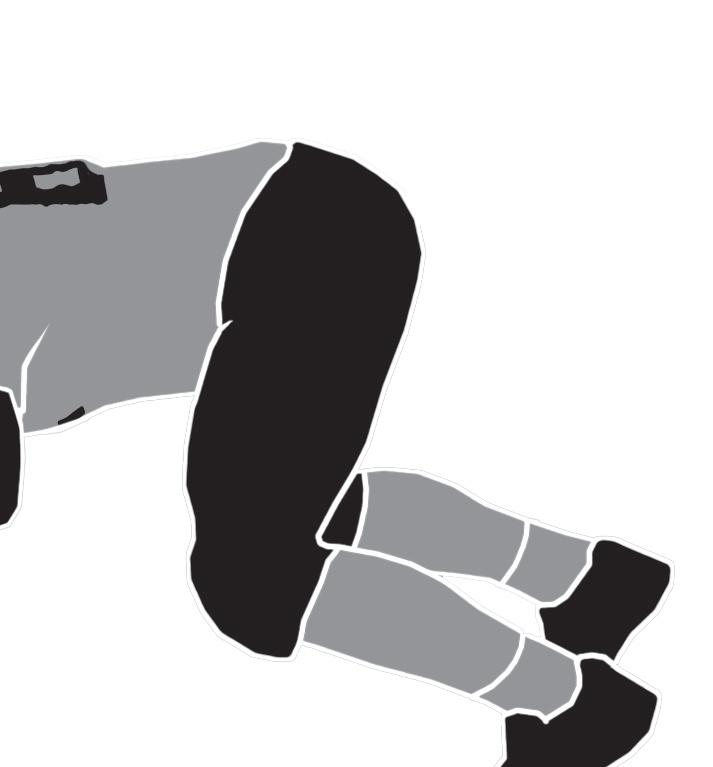
But the situation illustrated in

the PlayPics is altogether different. In PlayPic A, the team B player at left has entered the neutral zone. In PlayPic B, the team A player reacts by violently contacting the opponent. The penalty for team B’s dead-ball foul is five yards while the team A personal foul results in a 15-yard penalty. In that case, the penalties are administered separately and in the order of occurrence (NFHS 10-2-5a; NCAA 10-1-5).
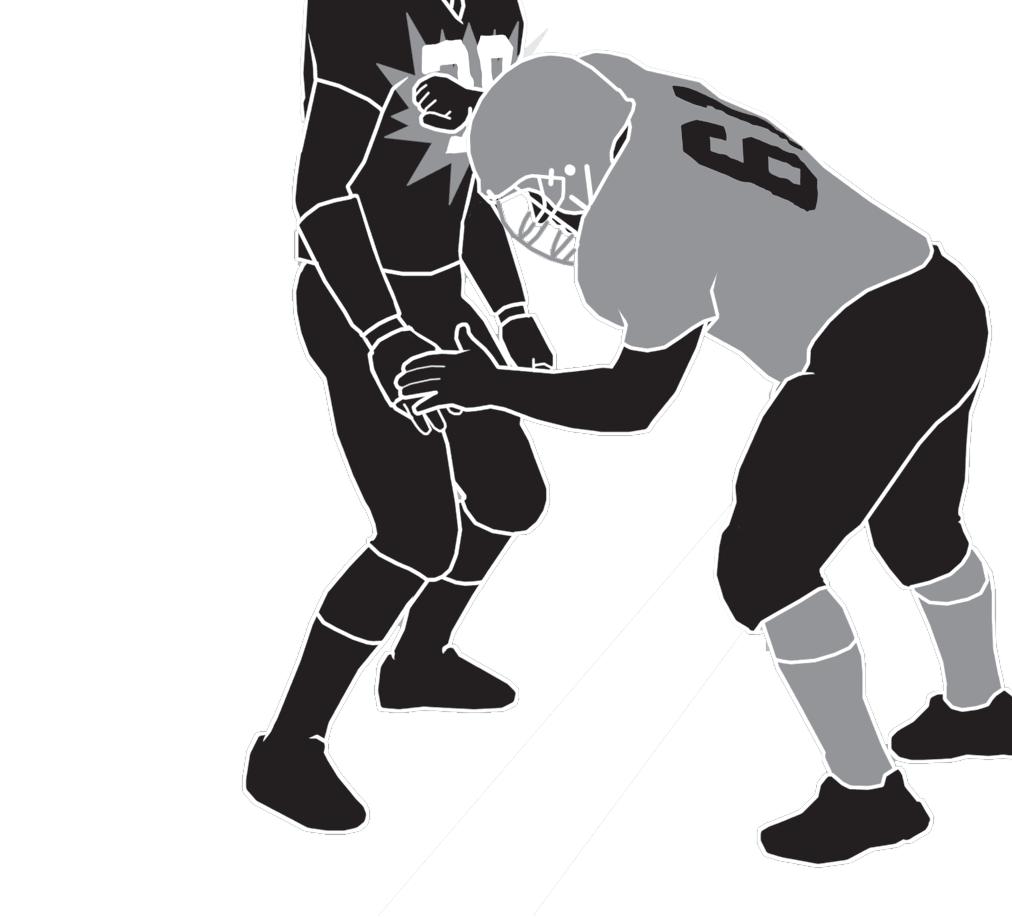
If team A had five or less yards to go for a first down, a new series would be awarded after enforcement of the team B penalty. The 15-yard penalty would cost team A yardage, but the line-to-gain would still be 10 yards from the spot where the penalty left the ball. In other words, first and 10, not first and 25. A
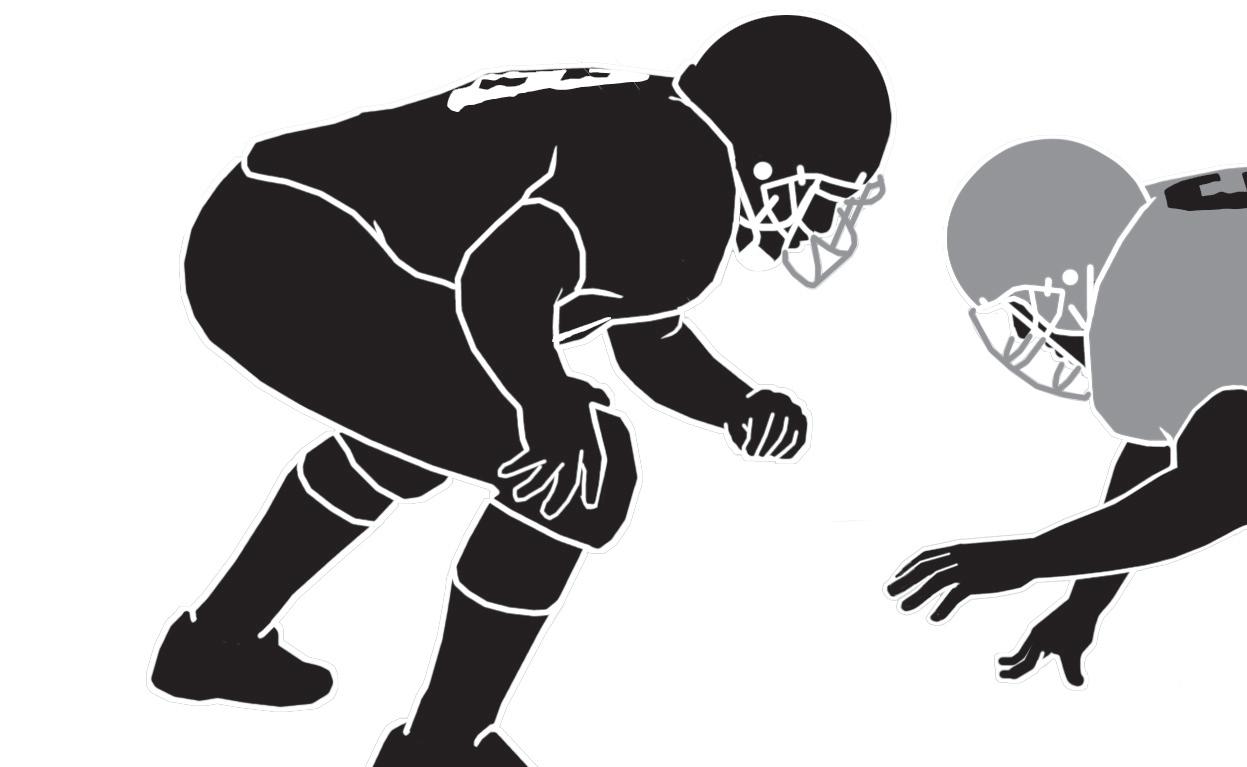
FOOTBALL 44 | REFEREE December 2022
B
Flag Doesn’t Mean Stop Officiating
Acommon foible for newer officials is giving up on a play when a foul occurs. In the MechaniGram, the line judge has properly followed the play as A1 advances. But the official stops after flagging A2 for clipping. A1 continues to advance until he is brought down by B3. The problem is, because officiating stopped at the spot of the initial foul, the facemask foul that occurred at the end of the run went unseen.
Granted, the back judge in a crew of five should see the facemask. But a four-official crew doesn’t have the luxury of an official close enough to the play to get a good look at it.
If handled properly, the fouls would offset and the down would be replayed. If the facemask went undetected, team A would come up on the short end of this enforcement.
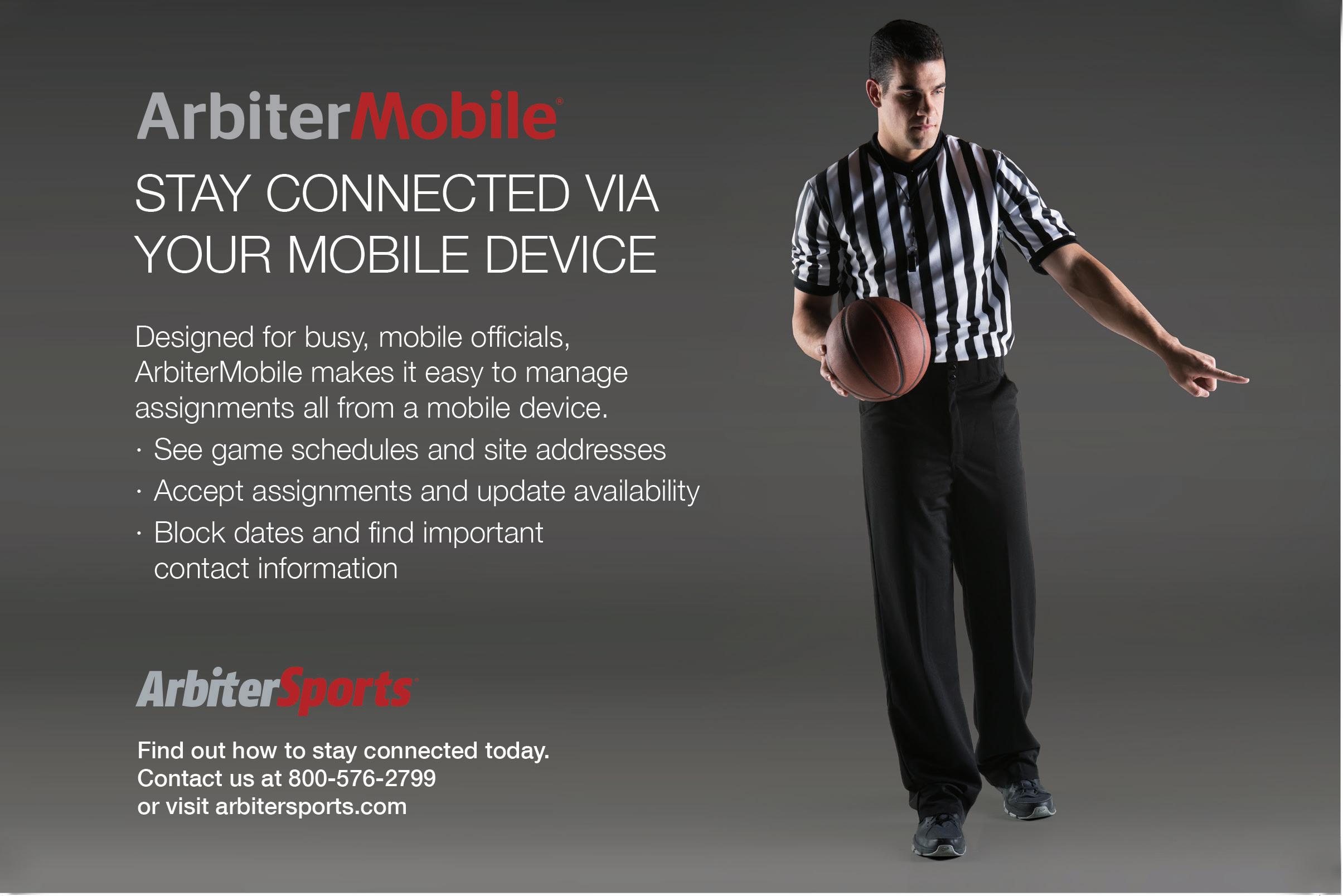
B4 B4 GRASPS AND TWISTS FACEMASK
A2 CLIPS
B3 A2
A1 A1
Touchdown With a Catch
Judgment and rules knowledge combine on this situation, which involves a one-on-one battle between receiver (white uniform) and defender.
1The defender has made early contact, playing through the back of the receiver. Despite the foul, the receiver has managed to get a grasp on the ball.
to maintain control of the ball when he comes to a standing position. If he falls, he must survive the ground.
3
The receiver is airborne over the end zone. The sideline isn’t an issue, so if he alights upright, the position of his feet won’t be a consideration.
2
In order to complete the catch and score a touchdown, he will only have
The catch is complete: two feet on the ground and control of the ball in the end zone. It’s a touchdown. Under NFHS rules, team A would have the choice of having the penalty for pass interference enforced on the try or on the succeeding kickoff. In NCAA, the penalty is declined by rule.
The defender has wrapped his hands around the opponent’s head. The right hand appears to be grabbing but at this point not twisting the facemask. Potentially the defender could wrench the opponent to the ground by the head, which would qualify as a personal foul. If a personal foul is ruled, in both codes, team A may opt for penalty enforcement on the try or succeeding kickoff. If it’s a dead-ball foul, in NFHS, both penalties could be enforced.

4
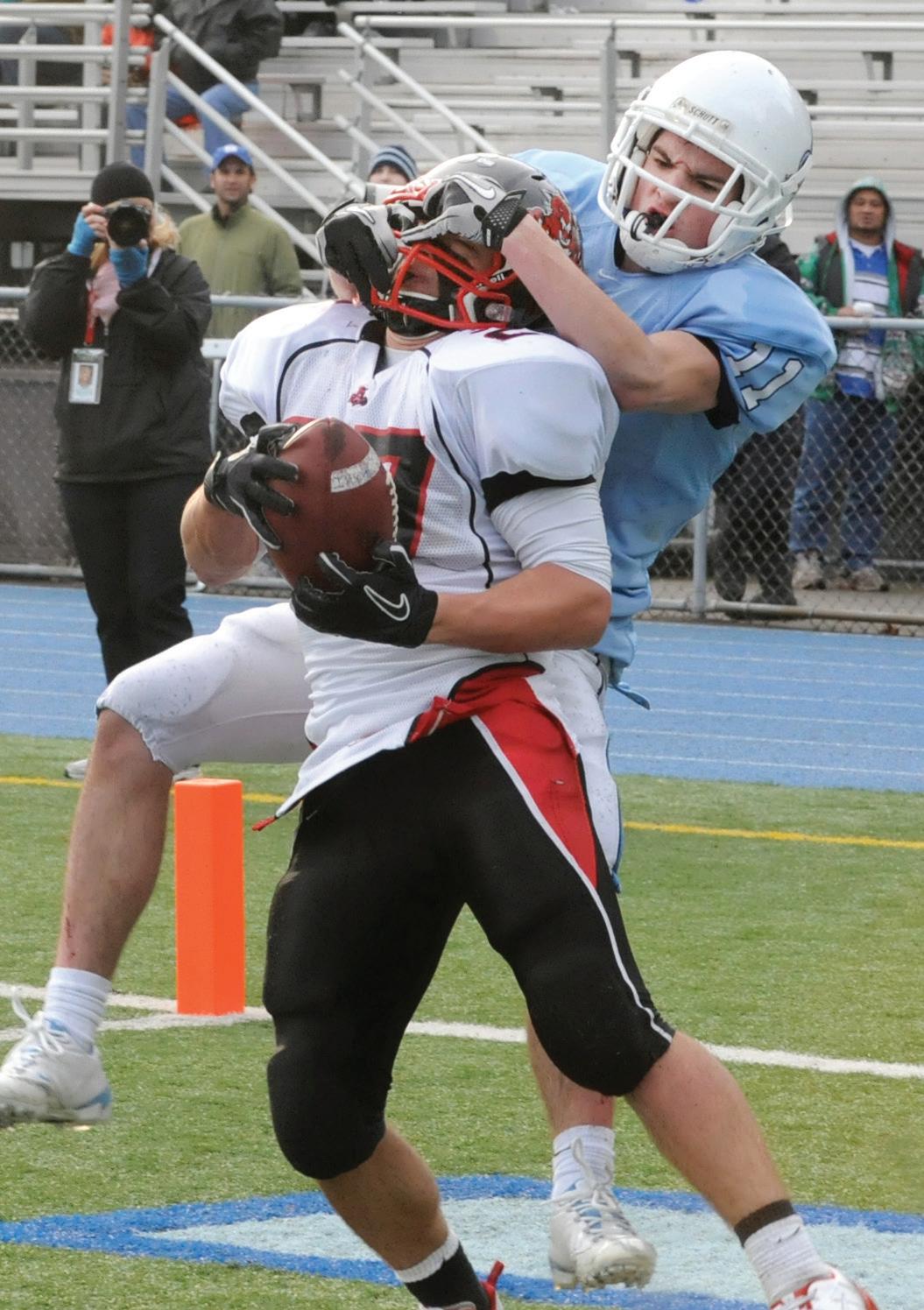
FOOTBALL 46 | REFEREE December 2022
DALE GARVEY
1 2 3 4
VISIONINACTION




If You Assign Games of Any Sort, You May Be at Risk
There aren’t many officials who would step onto a field, court or rink without general liability coverage like the kind the National Association of Sports Officials (NASO) provides to every member of our organization as a free benefit of membership. But that type of insurance doesn’t cover incidents in which no bodily harm is done.
When assigners are sued, general liability doesn’t typically apply which means that there are many assigners who willingly go about their business without any sort of protection at all.
In our litigious society, people are sued all the time for their decisions (and nondecisions!). Assigners – even officials who assign just a few games locally in any given season – are wide open for litigation in many instances.
When such events happen, NASO provides protection for our members.
Just a few seasons ago in New York a basketball referee was demoted by his college assigner based on observations and evaluations. Pretty normal stuff. But in that case, the referee sued the assigner and the case went to court. The assigner soon realized his college conference would not provide any help to him or to an observer who was also
named in the suit. The assigner hired an attorney at his own expense on behalf of himself and his observer.

Unfortunately the assigner was not an NASO member at the time of the occurrence. If he had been a member, he would have been able to access NASO’s unique assigners coverage, a free member benefit available to every NASO member, which would have covered the cost of his attorney.


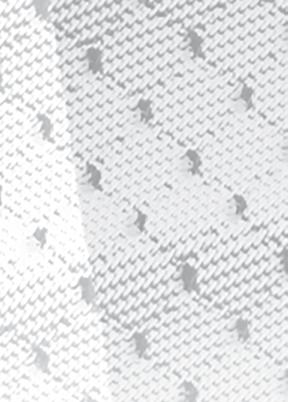




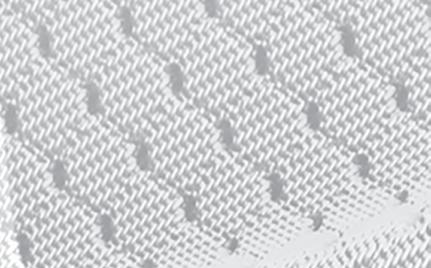




That protection is referred to as “Assigners and Game Call” insurance and it comes free as a benefit of NASO membership. The insurance provides $100,000 coverage specifically to protect assigners and assigning activity.




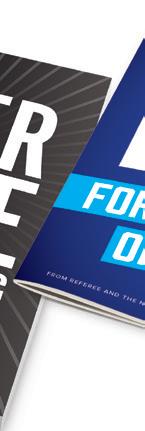

We’re aware of no other officiating insurance that provides such protections.
That $100,000 protection is in addition to NASO’s premium $6 million per occurrence liability insurance protections, which provides excess coverage for claims for bodily injury, property damage and personal injury during your officiating activities, including working games, running or attending camps and clinics or assigning activities.

If you do any assigning work whatsoever, you can’t afford not to carry the protections provided by NASO membership.
WE’RE ALL IN THIS TOGETHER!
THESE ORGANIZATIONS SUPPORT OFFICIALS
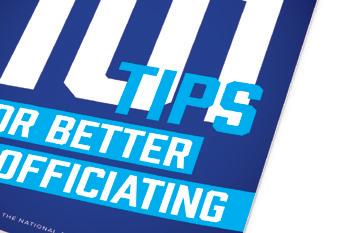
ATTENTION REFEREE MAGAZINE SUBSCRIBERS
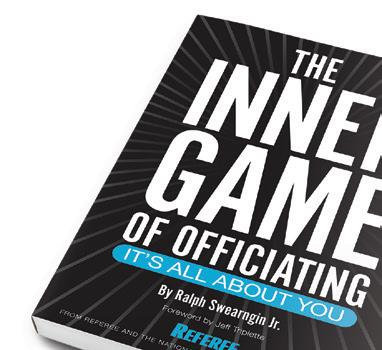



It’s time to join the rest of us in the National Association of Sports Officials. Not only will you continue to receive the world’s #1 officiating publication, you’ll enjoy all of the additional benefits NASO members enjoy.
Go to naso.org/upgrade2022 to join NASO for the special introductory price of $114 and receive these two FREE books!
NATIONAL ASSOCIATION OF SPORTS OFFICIALS
FOR NASO MEMBERSHIP INFORMATION OR TO SIGN UP, GO TO NASO.ORG, CALL
OR EMAIL CSERVICE@NASO.ORG
262-632-5448
$ 114 JOIN TODAY
ASSIST, NOT INSIST
Assistant Referees Must Yield to Referee’s Ultimate Judgment
By Ross Meloan, Ph.D.
The referee is sprinting downfield, 10 yards behind the attacking team’s breakaway, going toward goal. The attacker has the ball at the feet and has demonstrated spectacular skills, even outmaneuvering one defensive player who fell to the ground. The referee follows play deep into the opponent’s defensive third of the field and makes a quick scan to determine how this attack will play out.
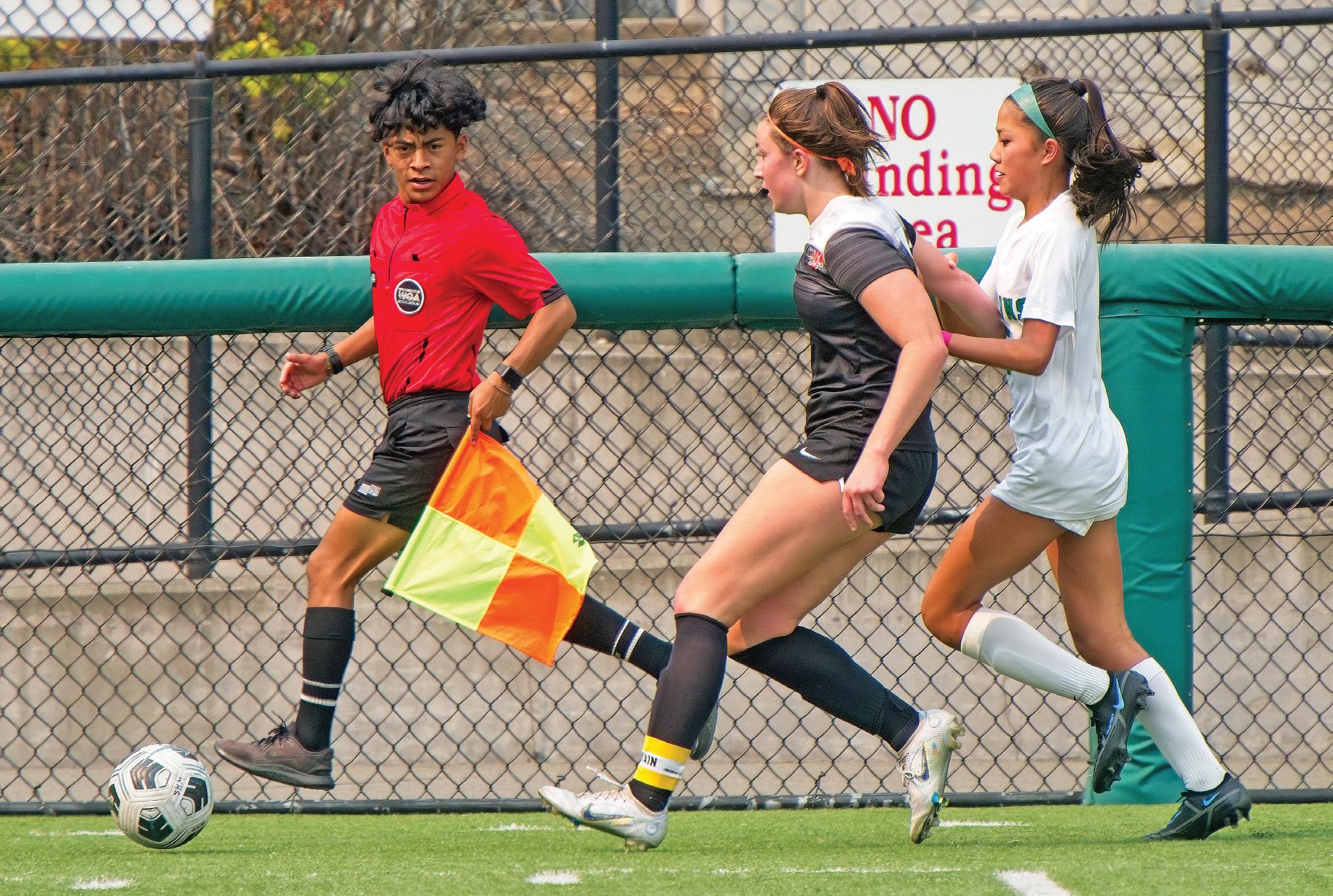
Much to the referee’s chagrin, the scan reveals the assistant referee (AR) out of the corner of the eye emphatically waving the flag to attract the attention not only of the referee but everyone in the stadium. The AR is stationary 15 yards behind the play.
Oh no, now what? The referee’s reluctance to address the AR’s obvious observation begs the decision to allow play to continue.
At the same time, the referee remembers the official
of professionals, all experienced and respected for each other’s decisions. Hesitantly, the referee sounds the whistle, stops play and destroys what would soon become the equalizer.
As expected, the place becomes unglued as the referee quickly backs away noting the spot for the restart and direction of the upcoming kick.
A quick review of the time indicates halftime is soon at hand, which cannot come quickly enough. The referee sounds the whistle and DALE
SOCCER RULES, MECHANICS, TECHNIQUES 48 | REFEREE December 2022 COORDINATOR: JOHN VAN DE VAARST jvandevaarst@referee.com
team consists
GARVEY
When assistant referee Ryan Maldonado, Redmond, Wash., observes the action, Maldonado not only has to consider the ball’s position in relation to the touchline, but any possible contact between the two opposing players. While the assistant referee should certainly have an opinion on this play, the ultimate decision-making is up to the referee to accept or reject the assistant referee’s input. Match officials can take strides in developing a positive working relationship through the pre-match conference.
hustles off the field to the usual cacophony of displeasure from the home team fans, since the referee was publicly found guilty of an “official’s DOGSO.”
During the first 15 minutes of the contest, the referee notices an unusually high number of calls emanating from AR2. After the fourth stoppage for what most would consider a dubious foul call, the referee decides to run past the AR to determine if the calls are really being missed from the onfield position. At the next dead ball, which graciously included a substitution, the referee assumes a position close to the AR. The AR advises the desire for the game to be called closer, yielding many more calls against the attacking team. The referee carefully considers the assistance from the AR but is careful to inject the AR’s feelings into the game.
A Suggested Remedy




Referees come to each game with a variety of experiences. Some as former players, others from other areas of the game and still others who not only played but also coached. But on game day, officials are the same. They are card-carrying, registered, licensed officials and even have the badge to prove it. So how can the game day officiating crew come together to provide the competent officiating players, coaches and spectators have come to expect and, more importantly, deserve? As one might expect, the answer lies with the entire officiating crew and can be discussed during the pregame conference.
The Importance of the Pregame Conference
Newer officials are not always responsible for unwanted or “insisting” calls from the touchline. However, in many cases, those calls can be traced to a lack of preparedness or experience as new officials are assigned to high intensity contests. These games require the officiating crew to work as a team with the referee assisted by the ARs. That is not to say ARs are restricted
in their ability to make a call, but there are acceptable protocols in place to not only make the call but when to make it.
It is particularly important for less experienced referees to get the benefit of working with experienced officials. During those games, “rookies” will obtain valuable time on the field and quickly determine “what is” and “what is not” considered acceptable player behavior through the lenses of fellow officials. If they are fortunate enough to work many games as ARs, examples of both good and bad officiating methods will help shape their style and tolerance for their future officiating assignments.



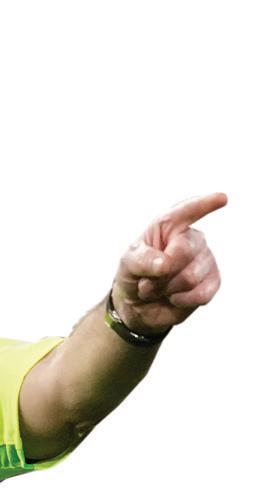
Experienced officials must provide the guidance, training and patience to ensure that gameday expectations are not only at the highest levels but are also met. To avoid situations like those described earlier, concentrate on game descriptions of similar scenarios and accurately explain your expectations. Some other topics to cover during your pregame may include:
Area of responsibility. Give guidelines for the physical area of the field for which the AR is responsible. Offside. If play is in the referee’s area of the diagonal, be sure to get that all-important eye contact just in case a defensive player made a play on the ball.
Penalty area. Many referees have their own methods for how to handle potential fouls in this area of the field. If a referee should state the AR is not to call a penalty kick, even though this is very bad advice, the AR should not make this call no matter what the circumstances are during the match.
During the pregame, the referee may advise the ARs to observe the type of fouls the referee is calling during the first few minutes of the match. If certain actions are not considered fouls, the AR is not to call them. If the referee is consistently calling a certain type of play a foul, the assistants should also call it a foul.




The ARs must listen carefully during pregame conferences to
BY THE NUMBERS
51 of 51
All 51 state high school associations sponsor both boys’ and girls’ state soccer tournaments, according to the 2022-23 NFHS Handbook. Other sports in this category include basketball, cross country, tennis and track and field.
QUICKTIP
When there is a foul that results in a penalty kick, the referee must be relatively close to the situation and in good position to make the decision. Also, a very firm whistle and strong point to the penalty spot tells the players there is no doubt about the decision. The next step for the referee is to retreat and backpedal to an area away from the penalty spot. Most players who want to argue the call will automatically head toward the spot. If the referee is not there, the players have to turn and then move toward the referee. This allows time for the players to calm down and the referee to tell them to stop approaching.
THEY SAID IT
“It’s disappointing for me as this was one incident in an otherwise very good weekend from our officials. Decisions are debated — that’s the life of a referee. There were perfectly officiated games elsewhere, like Liverpool against Crystal Palace on Monday night which capped a great weekend of Premier League football.”
— Mike Dean wrote in an op-ed for The Daily Mail, admitting he made a mistake in an Aug. 14 match between Chelsea and Tottenham, which ended in a 2-2 draw.

FLETCHER/ACTION PLU/NEWSCOM
JOHN PATRICK
TEST YOURSELF
In each of the following you are given a situation and at least two possible answers. You are to decide which answer or answers are correct for NFHS, NCAA or IFAB rules/ Laws. Solutions: p. 85
1. Kicks from the penalty mark must be taken to determine a winner. The referee does not receive a list of the order of kickers from each coach. What is the proper procedure?
a. An order of kickers need not be provided from each coach. The referee must make sure a kicker does not kick a second time until all players have participated.
b. The referee is provided a listing of 10 kickers from the coach.
c. The referee is provided a listing of five kickers from the coach.
d. The same player may take all the kicks.
2. Upon arrival at a field, the referee observes there are no goal nets attached to the goals.
a. Allow the match to be played.
b. If nets can be installed before the match, play the match.
c. Leave the field and report the problem to the proper authorities.
3. The visiting team arrives at the field wearing white jerseys and blue socks. The visiting team’s school colors are blue and white.
a. Legal.
b. Socks must be white.
c. Legal, provided they do not conflict with what the home team is wearing.
4. The visiting team wins the coin toss and chooses to defend the north end of the field. The home team captain advises the referee the home team does not want to kick off.
a. The team losing the coin toss must take what is left.
b. The home team has the option of not kicking off.
c. The referee flips the coin again to resolve the problem.
5. A1 is about to take the kickoff after the referee has signaled. A2, who is near the touchline, begins to run downfield. A1 plays the ball toward A2.
a. Allow play to continue.
b. Stop play and have the kick retaken.
c. Award an indirect free kick to team B.
determine how they can assist in the management of the game. That may be a subtle way of suggesting that trifling calls from the AR, especially outside of their quadrant and 60 yards away, are not only unnecessary but definitely unwanted.
Risk Management
In Free Kick Restarts
As you read the “referee DOGSO” scenario earlier, you were probably thinking, “Wow, this is a clear example of an AR being over-involved and insisting versus assisting.” Maybe, but let’s play a few scenarios in our head, and in each scenario, keep the risk in mind.
The ball was placed a yard away from the true spot of the foul. ARs should not insist the ball be placed at the exact blade of grass for the restart. Be verbal and give guidance to the team kicking the free kick, but I would argue that in almost all scenarios, three feet is not enough to warrant stopping the game to retake the kick.
Say a free kick in the defensive penalty area is taken five or more yards from the spot of the foul. What is the advantage gained by taking a free kick 105 yards from goal instead of 110? Little to none and the risk is low. Again, this is not a situation where an AR should insist.
If a free kick in the attacking third is taken five or more yards from the spot of the foul, risk management comes into play once again. Is there an advantage taking a free kick from 25 yards out when the foul occurred 30-35 yards out? Absolutely. This is where we need to use our voice and ensure the kick is from the proper spot. Hopefully, the referee will then key in on your management and you both have eyes on the play. If the referee’s back is turned and he or she does not notice your voice or the incorrect spot of the kick, get the referee’s attention through the use of the flag, or even yell, “Referee. Hold the kick.” Note: Never call the referee by name.
When a player attempts a free kick with the ball outside of the field of play, a corner kick is taken with the ball outside the arc or a goal kick
is taken with the ball clearly outside the goal area, AR assistance must take place because those are technical violations.
Say a free kick is taken 20 yards from behind the spot of the foul. You are probably thinking, “Well, what is the advantage here? The team taking the free kick put itself at a disadvantage by taking the free kick so far back.” If the ball is played back to the goalkeeper, there is little to no risk and there is little danger.
But imagine the scenario where all players are looking at a specific area for a free kick to be taken, and a free kick is taken in their blind spot. Now imagine that free kick taken 20 yards from behind the spot of the foul is boomed 60 yards up field to an attacker in a one-on-one situation. The defender fouls the attacker, or worse, a goal is scored in the next two touches. Do we want to accept this risk? Can the AR be the one to save the crew if the referee’s back is turned?
In all scenarios, consider risk management. Does the potential exist for AR involvement which is not needed? Or can AR involvement save the crew? This is the assistance referees all want and expect in every match they officiate. In the situation addressed at the beginning of this column, you were thinking the AR ruined a scoring opportunity, but was the AR actually saving the referee crew?
A word of advice to veteran referees: Take a moment during the game to send those especially important positive visual messages to your ARs. At the same time, negative responses need explanation as soon as possible. Keep in mind negative thoughts about certain calls need to be fully explained prior to leaving the locker room.
The combination of a quality pregame conference including open dialog among all officials, in addition to feedback during the game, will obtain more “assisting” and less “insisting” necessary for today’s game.
Ross Meloan, Ph.D., Murray, Ky., is a NISOA National Clinician and NISOA’s liaison to NFHS.
50 | REFEREE December 2022 SOCCER
Timely Reminders on Time-wasting
By Dan Rudlofff
Time-wasting is a coaching tactic, gamesmanship if you will, that occurs in sports where time determines the length of the contest and the outcome. Generally, timewasting is mitigated by the presence of the play clock in American football and the shot clock in basketball. But soccer is a timed sport with a tradition of time-wasting.
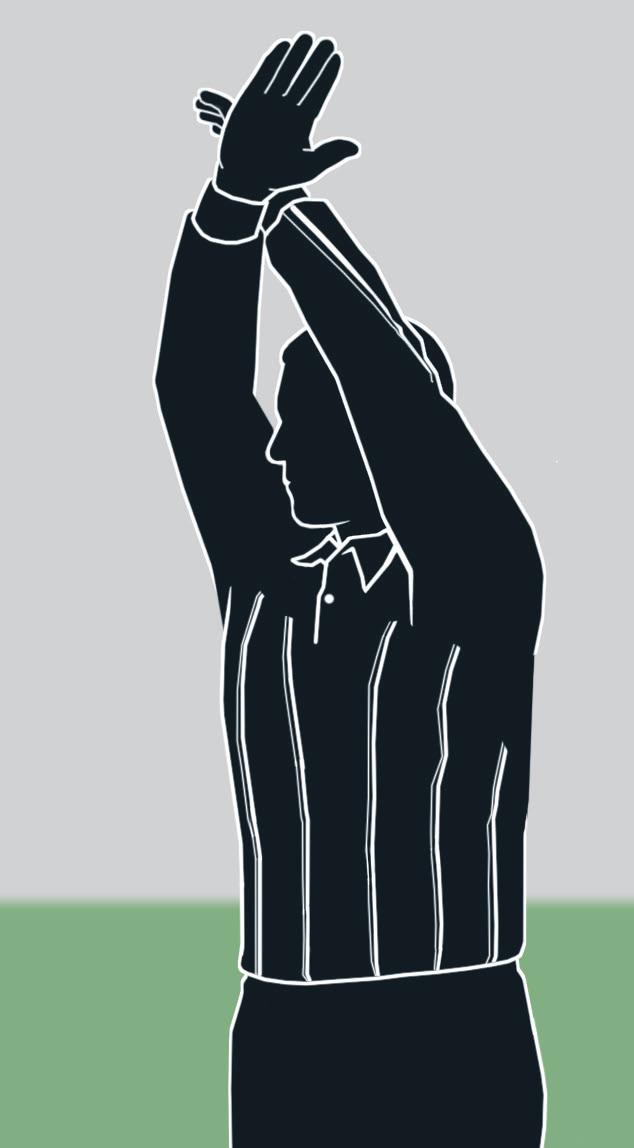
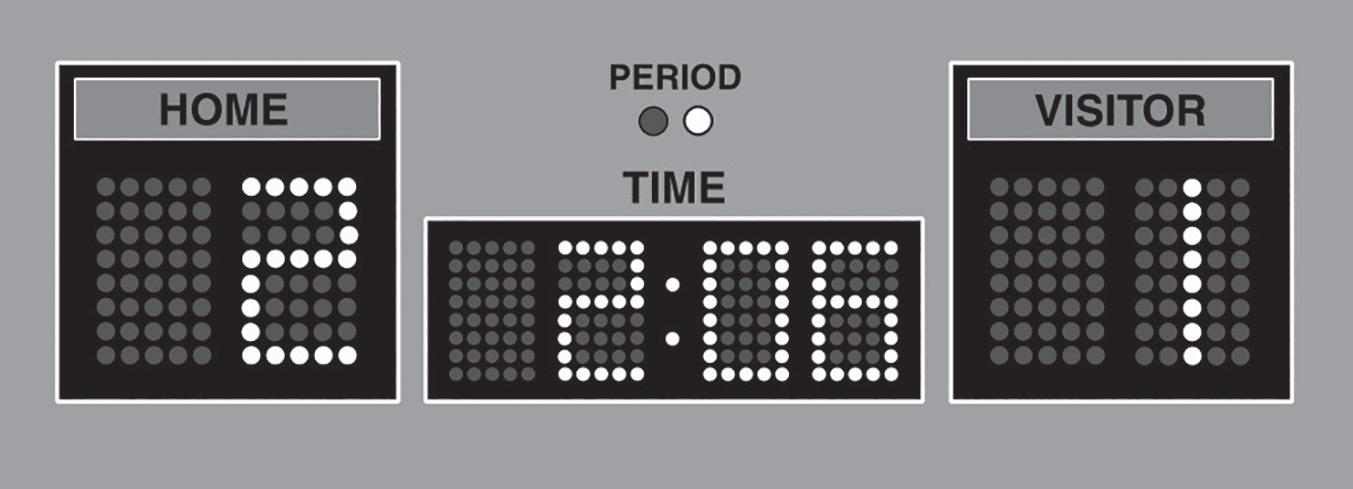
Soccer matches without a public scoreboard with the referee keeping time makes time-wasting more difficult. But where the clock is visible to everyone, referees need to avail themselves of tactics to resolve the problem.
In a game with unlimited substitutions, coaches can substitute at every legal opportunity while the clock is running. The most substituted position is often the one farthest from the bench with neither player in a particular hurry to get on or off the field. If a team is nursing a one-goal lead (as in the above PlayPic), five to 10 seconds off the clock at every chance to substitute can add up to significant non-playing time. These intervals can help a team sustain its best defensive efforts or break up the momentum of an intense attack.
Players are also instructed to “take their own sweet time” restarting the game with free kicks and throw-ins or retrieving balls to put them in play. Lacking ball possession with the clock ticking away, the opposition can only wait for the ball to be put in play. This can lead to teams taking inordinate risks to regain possession, possibly resulting in rougher play and tactics, which can lead to more severe problems for the officiating crew. For example, the team in the lead is awarded a corner kick. Now the defender from the far side of the field is told to take the kick. This individual jogs slowly toward the corner, repositions the ball, directs teammates, then finally kicks the ball. A considerable amount of time is lost.
A team that is motivated to waste time can accomplish its goal
without technically breaking any rule. However, a competent and attentive officiating crew has its own bag of tricks.
Time-wasting should be on the short list for discussion between the officials before the game begins. For example, the officials need to be on the same page regarding “kicking or tossing the ball away” to gain an advantage. A verbal warning the first time it happens, even in the opening minutes, notifies each team “we’re not going to allow that today.” Much like the first caution in a game sets the bar for future conduct, a verbal warning for delay can deter that behavior later in a close game when it really matters. If it doesn’t, the precedent has been established for stopping the clock or booking a player.
Another often overlooked pregame aspect is instructing the ball persons if they are being used. “Thanks for your help today. You play an important role. Here’s what I would like you to do. Obviously, have a ball in hand at all times if you can and retrieve those errant balls as quickly as you can. Please do not throw the ball to the player coming to put the ball in play. Just put it on the ground as near to where the throwin should occur, and let the player pick it up. Throwing often results in not catching, which slows down the game. For corners, place the ball near the corner or roll it there. Goal kicks will likely need to be rolled as well. I really appreciate your assistance today.”
What about the constant substitution or the slow walk to replace a player or be replaced, as
well as being unnaturally slow to put the ball in play? Although the NCAA re-entry rule makes the substitution tactic a little tougher to use at the collegiate level, it still can rear its ugly head and be effective. Even if the time is kept on a scoreboard, the referee can stop the clock any time the referee deems fit. An effective method is stopping the scoreboard clock (see PlayPic signal above), approaching both benches and verbalizing in a strong voice, “We are going to play this game at approximately the same pace as we have for the past ‘X’ minutes. Unduly delaying this game could result in a yellow card.”
REFEREE December 2022 | 51
CASEPLAYS
Corner Confusion
Play: Team A is awarded a corner kick. A1 places the ball in the corner arc and steps back to take the kick. After being directed by the coach, A2 runs forward to take the kick. While walking into the field, A1 inadvertently touches the ball with the foot and it moves forward. B3 runs to the ball and begins to dribble upfield. Ruling: The referee is to allow play to continue. Once A1 moved the ball, it was legally put into play (NFHS 17-1-3; NCAA 17.2.4; IFAB 17.1).
Negative Charge
Play: A1 is moving downfield near the team benches. B2 makes a legal shoulder charge and knocks A1 off the ball. Team A’s coach loudly claims this was a foul and continues to dissent for an extended period of time. During the next stoppage, the referee cautions the coach for the actions. Later in the match, the coach dissents to the assistant referee regarding a close decision on an offside situation. During a stoppage, the assistant referee advises the referee what was said. Ruling: The referee displays a yellow card and then a red card to the coach. The coach must leave the coaching area and have no more participation in the match. Failure to leave the area will result in the referee terminating the match and advising the league officials in writing about the situation (NFHS 12-8-1c; NCAA 12.4.3.3; IFAB 12.3).
Broken Attack Play: A1 is on the attack inside team B’s penalty area and along the goalline. B2, the goalkeeper, moves out and attempts to gain control of the ball through a sliding maneuver. A1 pushes the ball around B2 and steps off the field to move around B2. B2 gets up, steps off the field and strikes A1. Ruling: The referee is to stop play and eject B2 for violent conduct. Team B may replace B2 with a field player or remove a field player and have a new goalkeeper enter the game. Since the foul occurred off the field of play, the game is restarted with an indirect free kick for team A at a point nearest where the action occurred (NFHS 8-2a; NCAA 2.7.4.8; IFAB 12.3).
Burying the ball in the corner with no intention of playing further is another common tactic. If it occurs on the assistant referee’s side of the field, the assistant needs to be within feet of the corner with a sharp eye to a foul, exceedingly rough play or an out of bounds, either goalline or touchline. If it occurs on the far side from the assistant referee, the referee needs to be there for the same reason. Using one’s voice, “I’m right here, take it easy. Don’t be silly,” puts the players on notice they are being watched carefully.
For youth, amateur and professional matches, the referee has the option of adding time for the amount wasted. Unless there is a fourth official with an official notification for how much time to add, the referee has sole discretion as to when the match ends. The referee can inform the players from the team behind in the score in a time-wasting situation. When players are complaining the opponents are
wasting time. The referee only needs to reply, “I have the control of the clock.”
The referee and crew have the tools to mitigate time-wasting. While it probably cannot be stopped entirely, they can reduce it to ensure the fairness of the game. A secondary benefit is to prevent the contentiousness that may result.

Team A successfully stalls while team B seethes. Frustrated team B plays more frantically and physically. Sooner rather than later, something bad happens, and control of the game can be lost in a heartbeat. And if it does, the referees may have to share the blame. Being passive about what is obvious to everyone erodes one’s effectiveness in managing a close game. And no one wants that.
Dan Rudloff, Chester, Pa., is a NISOA National Referee Emeritus and longtime high school soccer official who has officiated numerous high school state championships and NCAA playoff matches.
Don’t Pick Up the Rope
By Devan McCammack
Even newer officials can recognize many soccer referees do not have the ability to de-escalate a situation with any other tool except administering cautions or ejections. This method usually results in even more tempers flaring. It is unfortunate people management skills are not always present when they could be used to resolve a problem on the field or calm a coach during a heated moment.
The reality is when a coach, parent or anyone disagrees with an official, there is an opportunity to pick up the proverbial tug-of-war rope and begin a power struggle. Sadly, many officials go onto the pitch with the idea their authority is not to be questioned, thus making the game about themselves rather than the players and automatically creating a power struggle between referee and the players and/or coaches.
It is the official’s job to ensure the players play safely and the rules/Laws of the game are followed. A longtime soccer referee always reminds coaches, players and fellow officials that soccer (like other sports) is a game. Games are meant to be fun. If the officials put themselves in situations that make the game no longer fun, they set themselves up to be abused. This is not meant to say all coaches and especially parents of younger players are perfect. There are bad coaches and terrible parents, and they are fully responsible for their actions, as are the officials.
Soccer officials are equipped with so many tools other than cards that can and have de-escalated situations with parents, coaches and players alike.
Building a rapport with coaches as soon as the officiating crew arrives at the pitch is key. Invest in them and their teams. Ask about how their seasons are going and ask the coaches
52 | REFEREE December 2022 SOCCER
how they are doing. In fact, it’s always good to share a laugh. This approach, if used properly, immediately builds mutual trust and respect.

Another important item is allowing the assistant referees (ARs) to have their own voice. When an AR is seen as the “beta” or an assistant in the crew, they will be “eaten alive” by coaches and by parents because “they must not be as qualified.” When the crew is viewed as a unified crew, trust and respect are earned.

















Again, a sense of humor goes a long way. Learn to laugh things off. Players often think parents are just as ridiculous as the referee does. Share in that little bond and build on it while on the pitch. Agreeing with a player who is laughing about a parent’s comment lets the player know you are interested in the game and are interested in the players.











When the first instinct is to issue cautions and ejections left and right without using any other tools, a referee

is set up for a miserable 90 minutes. The match will not be enjoyable for anyone including the players, coaches and spectators. Ignoring comments or using people management skills are better tools to lower the temperature of the match.
Most referees officiate because they love the game and enjoy it. Making the decision to go on a power trip by engaging unruly fans and barking back at coaches will lead to burnout a lot sooner than it should.
Those officials who have succeeded in laughing things off usually are the most successful. Officials who have had struggles tend to put themselves in situations that can be avoided. They create the controversy by escalating the problem with the issuance of a card or challenging a player, fan or coach in a derogatory manner.
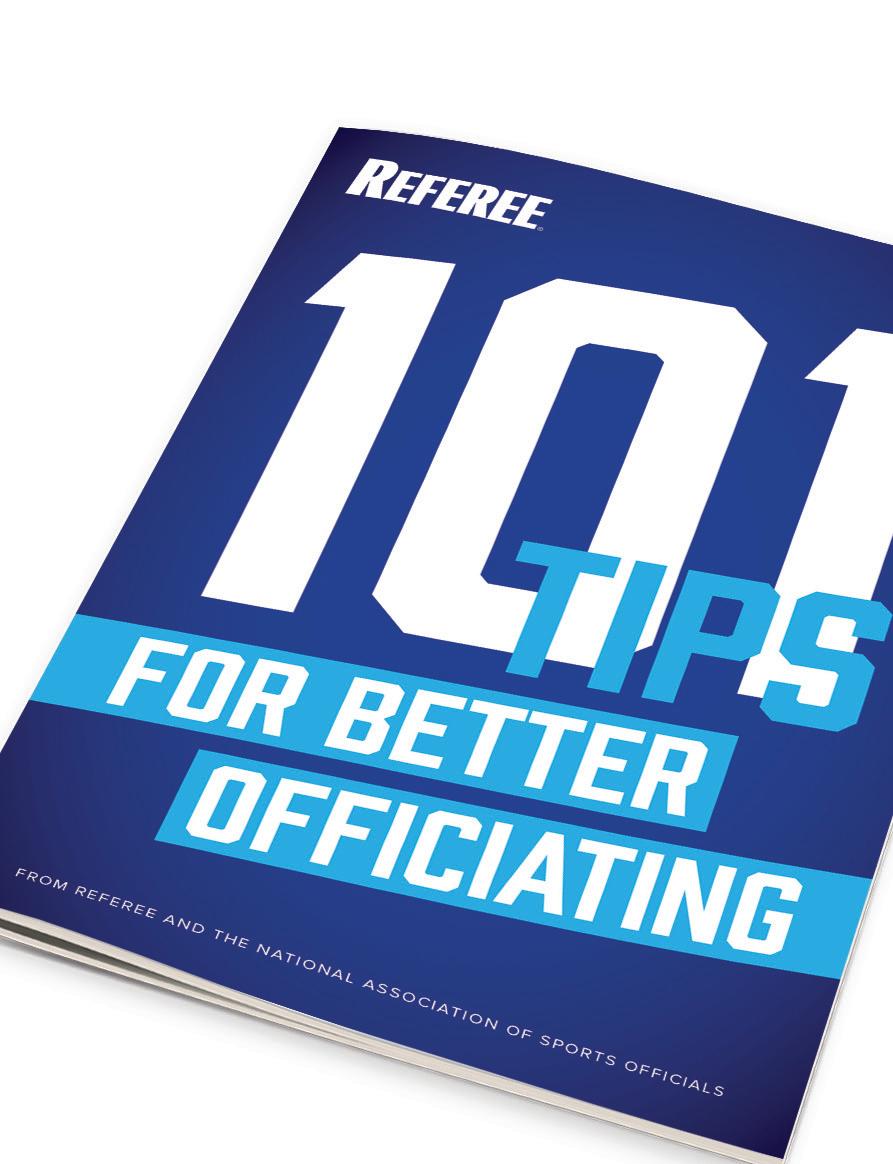

The referee has to be quick to use the voice in a professional manner and have conversations before picking up the rope and using red cards. Give
coaches the opportunity to approach in a calm manner. Tell them, “I’m not going to yell at you, so I expect that to be reciprocated.” If the respect cannot be reciprocated, disengage by letting them know the way they are communicating is unacceptable and will not be tolerated.

Most officials love being referees. It is heartbreaking every time young officials hang up their whistles before they even really start or when older officials say they can’t take it anymore.

Obviously, parents and coaches are not getting better any time soon. The officiating team has the burden to be better at what they do. If we want the game to continue, on top of knowing and properly interpreting the rules/Laws, the referee must now take on the task of becoming behavior interventionists as well.
Devan McCammack, Joliet, Ill., is a special education official and has been officiating soccer for more than five years.
everything from the basics to navigating networking and politics, to advice on how to manage difficult games, to practical information that blows up generally accepted officiating myths, this book for better officiating WHAT EVERY OFFICIAL NEEDS TO KNOW Officiating has it all! 5.5” x 8.5” 48 Pages $595 THESE low cost OFFICIATING GUIDES ALSO AVAILABLE 27 common errors and how to avoid them YEAR ONE WHAT TO EXPECT IN THE FIRST 12 MONTHS what now? practical answers to tough situations no argument managing in-game exchanges SAYYESTOOFFICIATING.COM there are many reasons to become an official Love of Sports Make Extra Money one WHAT TO EXPECT IN THE FIRST 12 MONTHS OF YOUR OFFICIATING COMMON ERRORS & HOW TO AVOID THEM TRAINING CENTER TRAINING CENTER AVAILABLE 24/7 STORE. 5.00 save how to listen how to respond MANAGING IN-GAME EXCHANGES argument NO THE WORLD S LARGEST OFFICIATING LIBRARY $5.00 OFF YOUR NEXT ORDER store.referee.com 5.5” x 8.5” 32 Pages 5.5” x 8.5” 32 Pages 5.5” x 8.5” 32 Pages 5.5” x 8.5” 32 Pages $595 $595 $595 $595 SHOP ALL THE GUIDES AT STORE.REFEREE.COM/SMALL-PRICE
On the back and left shoulder of every NFL game official is a key identifier — a uniform number. When officials join the league, assigning them a number is a very early order of business.
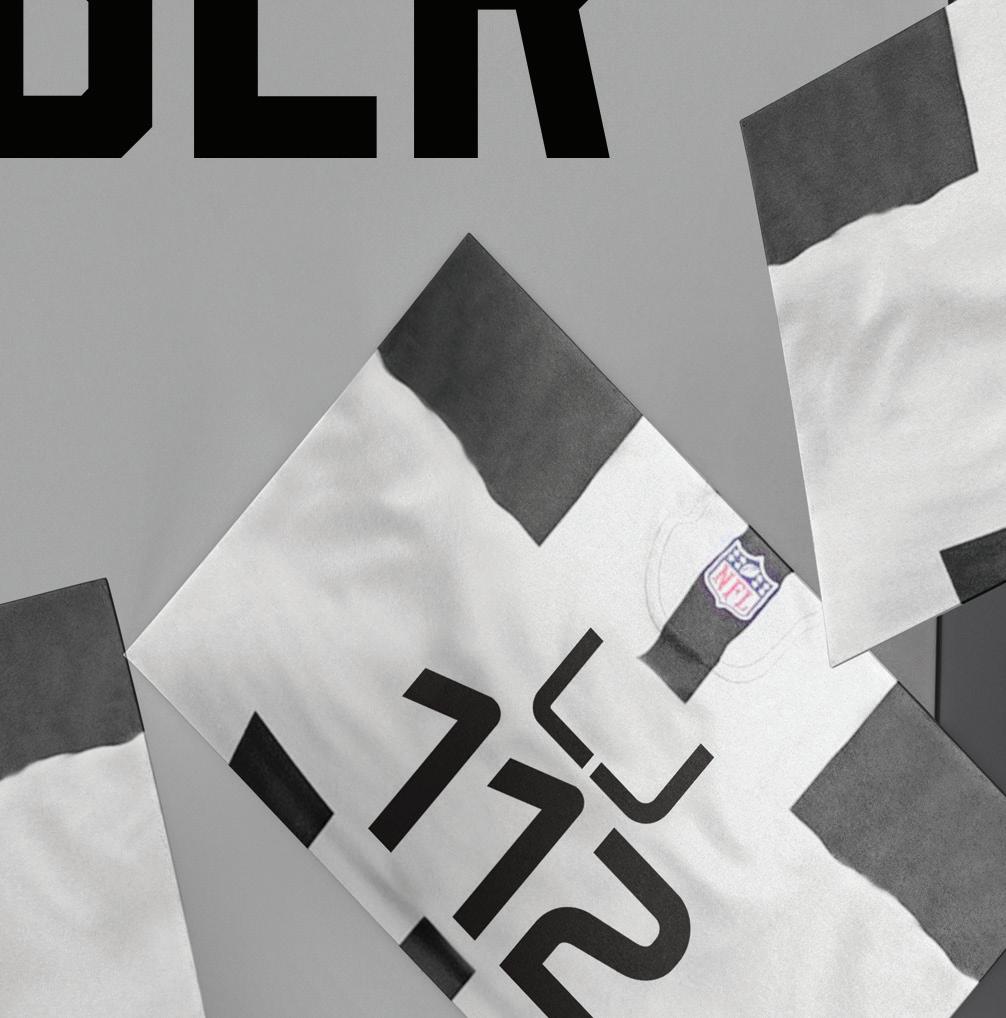
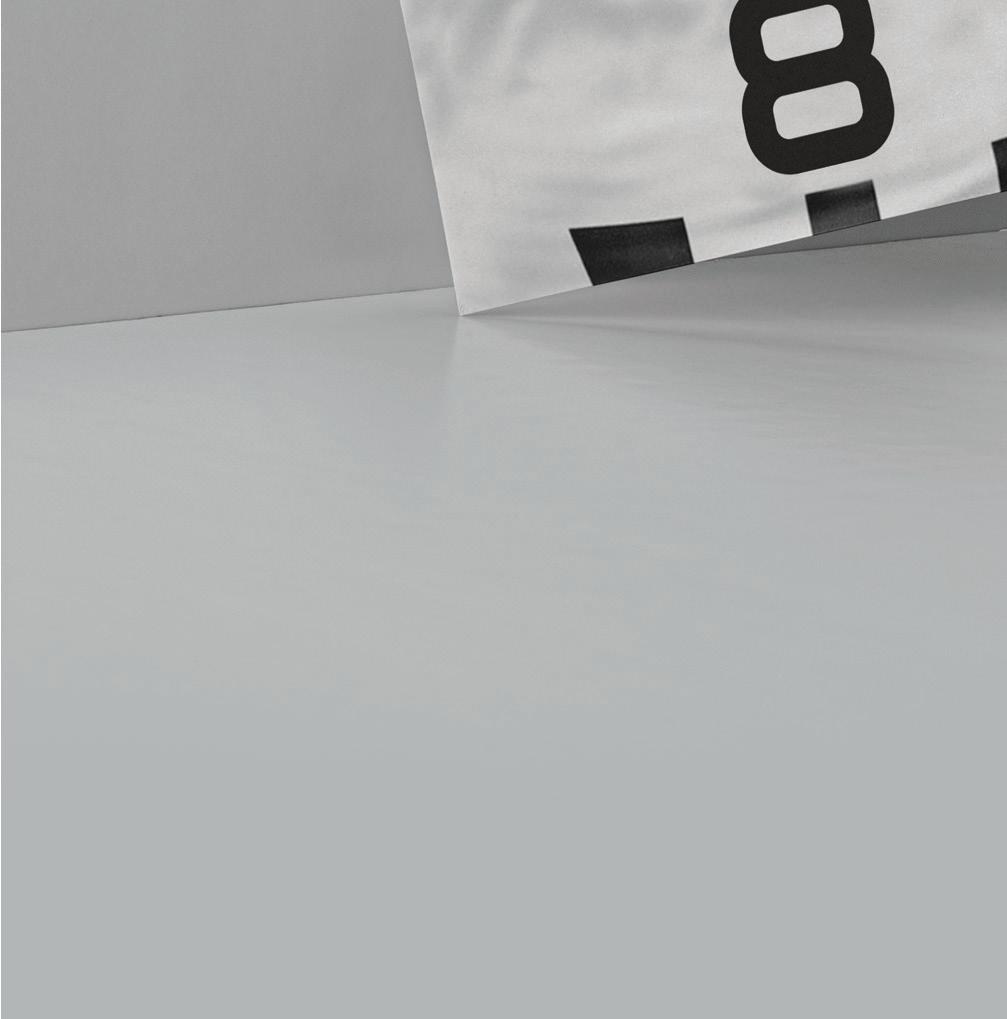

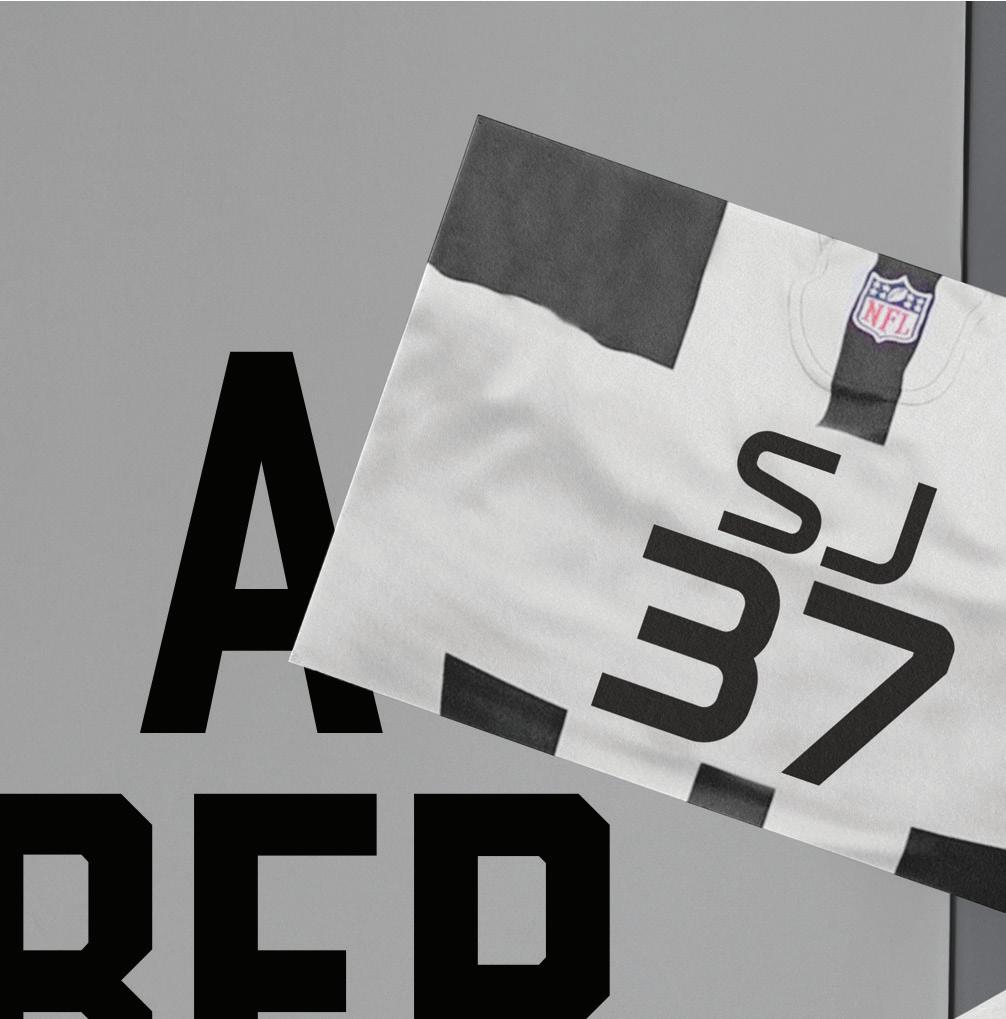


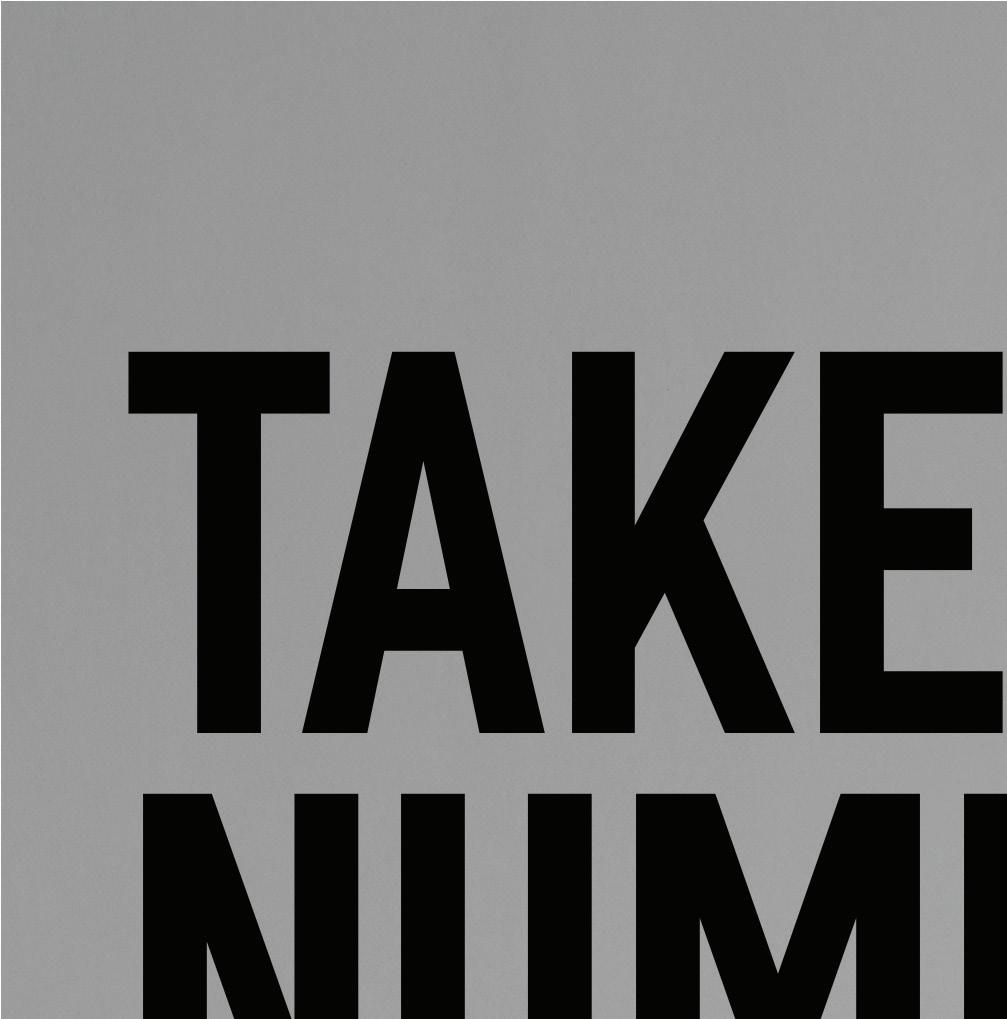
The number — worn by NFL officials since 1942 — gives the official an identity beyond the black-and-whitestriped shirt. Ask any NFL official and there will likely
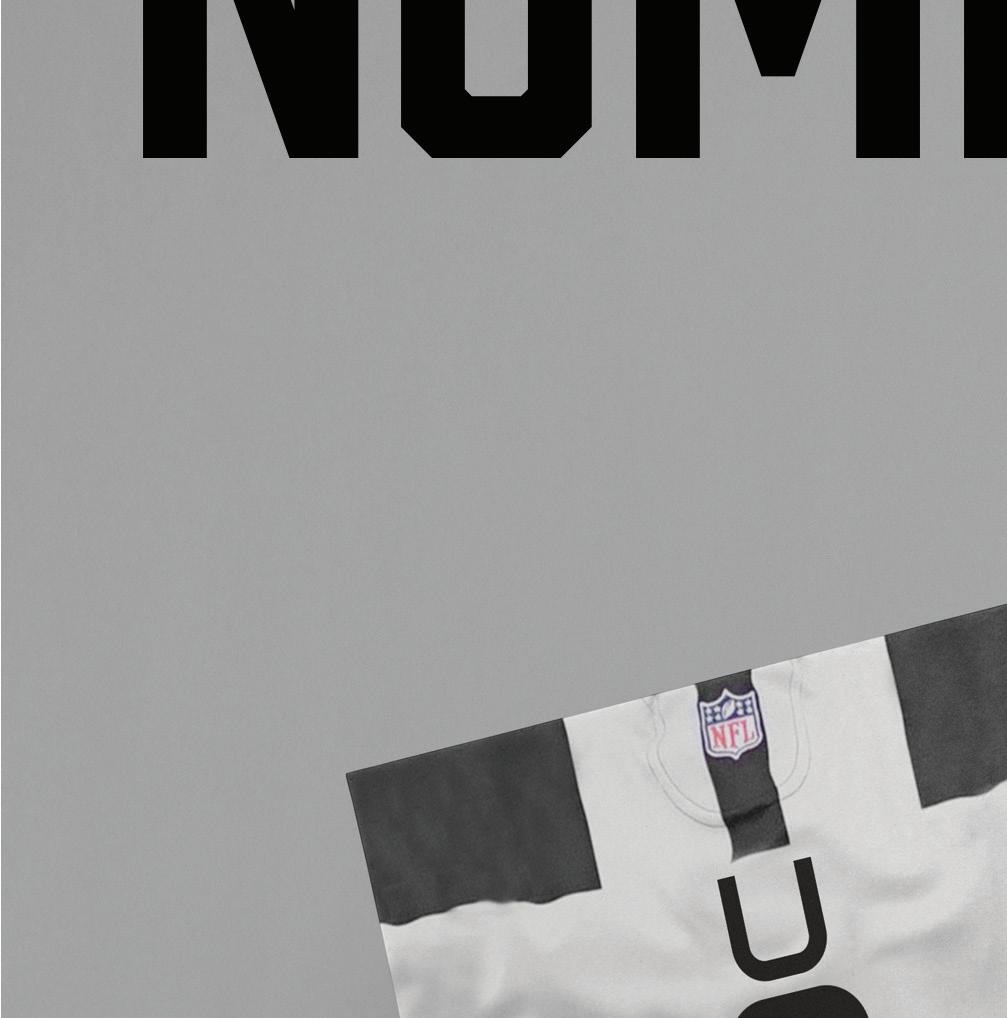

be a story on how he or she obtained the number or some other personal connection to the digits. It also serves as another way to know which official ruled on a particular play when assignment details are not readily available or recalled by memory.
“You know who’s assigned to the game, but it does save a step,” said Dean Blandino, NFL vice president of officiating from 2013-17. “If someone sent
BY LUKE MODROVSKY
me a play, while I knew who was assigned to the game, it was immediate in identifying the official.”
Numbers worn in the NFL have included 1 all the way to 142, with some exceptions.
In the first Super Bowl — then known as the NFL-AFL Championship Game — three officials represented each league. Each of the officials' numbers ended with 0 and the backups' numbers ended with 1.
54 | REFEREE December 2022
What's in a number? You'd be surprised how some NFL officials wound up with their uniform numbers, and the history behind those identifying digits.
Thus, referee Norm Schachter was number 10, umpire George Young was number 20, head linesman Bernie Ullman wore number 30, line judge Al Sabato sported number 40, field judge Mike Lisetski was assigned number 50 and back judge Jack Reader was number 60.
But it wasn’t always that simple.



Beginning with the 1979 season, the NFL flirted with an

eventual failed experiment — duplicate numbers assigned by position. That season, the NFL assigned numbers by position, predominantly from 3 through 20, excluding 13. So, with seven game officials across multiple positions, but not on the same regularseason crew, could there ever be a problem?

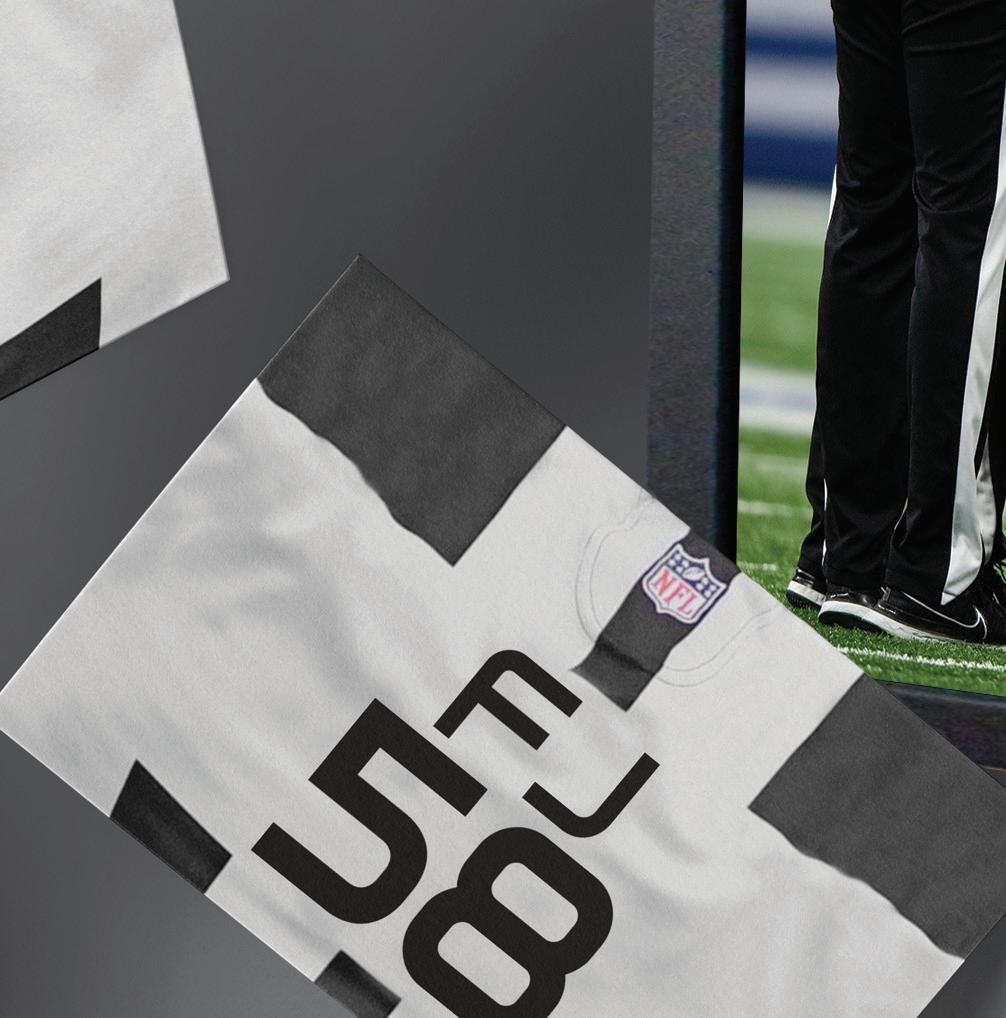
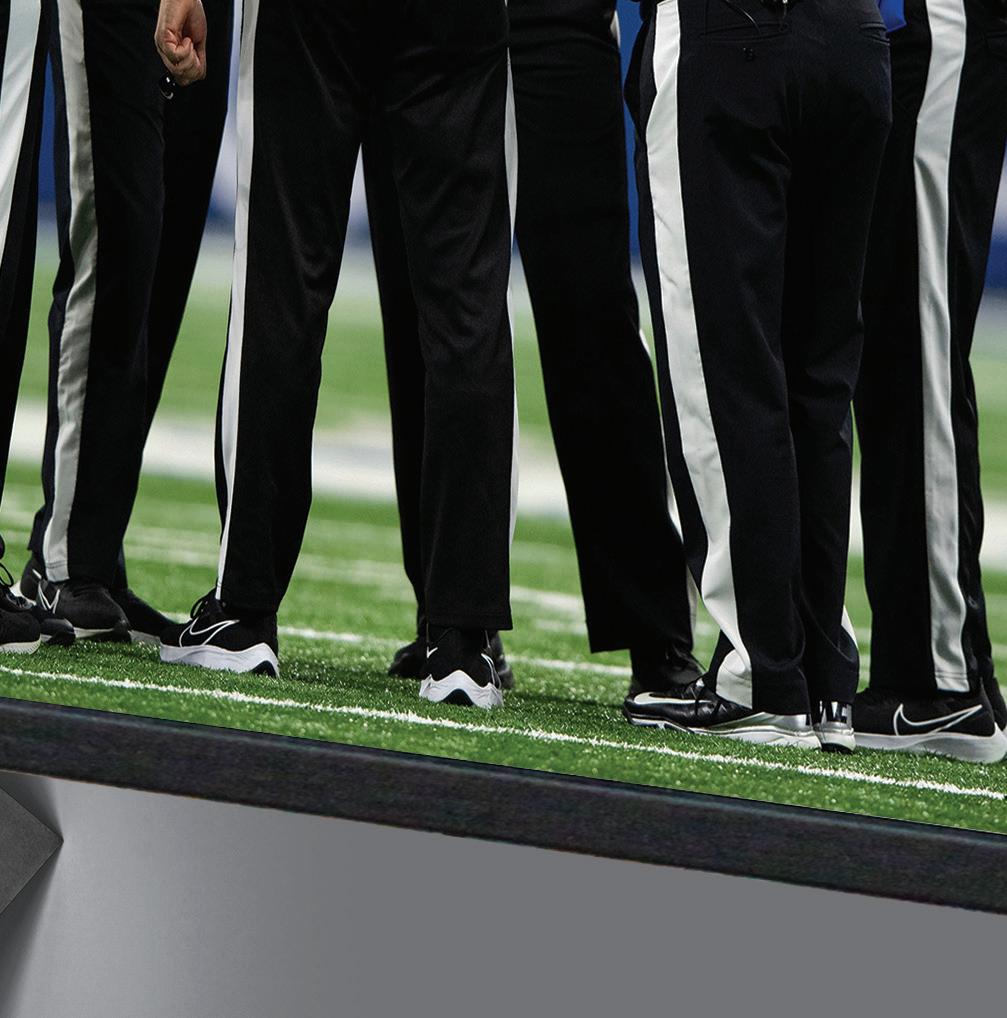

In back-to-back Super Bowls, number 7 caused a problem for the NFL. Fred

Silva and Al Conway both wore number 7 during the regular season and were assigned to Super Bowl XIV. Fortunately, Silva wore a black hat as the referee and Conway wore a white hat as the umpire, but they wore identical numbers during the game.
Head linesman Tony Veteri Sr., line judge Tom Dooley, back judge Tom Kelleher and field judge
REFEREE December 2022 | 55
Players wear numbers on their backs, but NFL officials sport their number and position.
ZACH
BOLINGER/AP/SHUTTERSTOCK (NFL CREW)
take a number
Fritz Graf all wore number 7 during the 1980 season and were assigned to Super Bowl XV.Instead of doubling down on the previous year’s debacle, Kelleher was the only number 7 during the game, based on his seniority. Veteri, Dooley and Graf were given different numbers for the game. Veteri wore 8, Dooley wore 10 and Graf wore 17.
The experiment ultimately would be short-lived and most officials went back to unique numbers for the 1982 season.
“WE’LL SAVE A SPOT FOR YOU”
Retired down judge Ed Camp wore number 134 and did so proudly despite stereotypes of it being a bottom-of-the-barrel, tripledigit number.
“I was crushed,” Camp said when he learned of his number assignment when he joined the league. “But it’s grown on me.”
Camp did not hold the highest number, however, as Pete Morelli sported number 135.Only field judge Dave Warden and back judge Perry Paganelli have worn higher numbers in the history of the league. Warden wore number 137 during the 1998 season before switching to number 27 for his final four seasons, while Paganelli wore number 142 in 1998 and switched to number 46 after that season.
As if to molify him, Camp was told 134 is only 100 digits away from longtime referee Gerald Austin (34), who was assigned to three Super Bowls.
“We’ll save a spot for you,” Camp said he was told by college officiating peers when he told them his NFL number assignment. “You’ll be back.”
Camp, in the league since 2000, was assigned as the down judge for Super Bowl LIII — never returning to his former NCAA stomping grounds.
Now, after Camp’s retirement at the end of the 2021 season — culminating
with his third assignment as a Super Bowl alternate — Robin DeLorenzo wears number 134 after being hired into the NFL for the 2022 season.
DeLorenzo referenced Camp as her first mentor in the New Jersey Football Officials Association North (NJFOA) in a Facebook post when Camp was slated to work the 2022 AFC Championship game as the down judge — presumably his last assignment before being selected as a Super Bowl alternate two weeks later. DeLorenzo met Camp on the first night of her cadet class in an effort to become a high school football official in New Jersey.

“Throughout my college career, there are always three calls that go out when I get a promotion or a special game: my parents, Tom (DeLorenzo’s husband) and Ed Camp,” DeLorenzo said in the post.
“Between the cadet classes every week where (Camp) would show us hours of film, to the study sessions, to coming to our games, to showing up to clinics to share his experiences. The man dedicated his whole life to football and making sure the NJFOA North (and other groups) had the most prepared officials around!” she wrote.
THE OFFICIAL BEFORE ME
When Jerome Boger joined the NFL in 2004, he was fortunate enough to choose his number — initially picking number 109 from a batch of unassigned numbers. But another number caught his eye — 23.
That’s because it previously belonged to Johnny Grier, the NFL’s first Black referee. Boger and Grier developed a bond and Boger shared a wish with Grier.
“JG, when you retire, I want you to tell me so I can tell the office I’d like your number,” Boger said he told Grier in 2004.
Two years later, that wish came true when Boger wore number 23 beginning with the 2006 season. “He’s always been special to me,” Boger said of Grier.
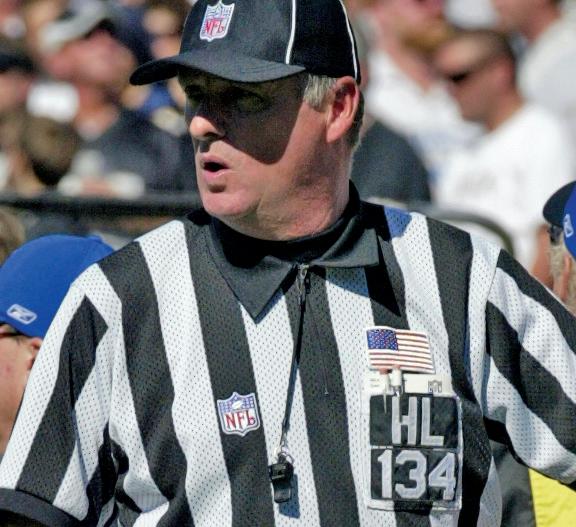
“When there is a request, we would certainly honor a request where we could,” Blandino said of his tenure. That was not the case under all NFL officiating leaders, however, as others merely assigned numbers.
Blandino said the process is a bit “random.”
Boger said he continues to enjoy his number as a tribute to Grier but said the number carries added meaning when talking with players.
He said he’ll seek out players on the field wearing the same number as his
BILL NICHOLS (CAMP); FRED KFOURY III/ICON SPORTSWIRE/NEWSCOM (DELORENZO)
56 | REFEREE November 2022
Ed Camp (left), Robin DeLorenzo (right) sport triple-digit numbers.
during the pregame and share a moment, usually saying, “I’ve worn this number for 15 years. Hopefully, you can do the same.”
That conversation, Boger said, is another avenue to have a human conversation with players before everything gets crazy.
Boger’s son, Tra, was hired into the NFL for the 2022 season and wears number 2. Jerome and Tra become the first father-son duo to work in the NFL at the same time since Steve and Brad Freeman were onfield officials through the 2019 season. Steve Freeman opted out of the 2020 season and subsequently retired.
OFF LIMITS
While no numbers have officially been retired by the NFL, some administrators have given certain numbers a “cooling-off period” after a retirement or transition.
When Al Riveron joined the league office after the 2012 season, Blandino said the league would not assign his former number 57 unless Riveron felt there was an official deserving. Since Riveron’s departure from the field, number 57 had not been worn until the 2020 season, when it was assigned to field judge Joe Blubaugh.
That has not always
been the case as referees like Jerry Markbreit and Jim Tunney, working a combined seven Super Bowls, did not see their numbers — 9 and 32 respectively — put on hold.
For the longest time, numbers 1 and 13 were kept on the shelf. Under Blandino, then-incoming field judge and now referee Scott Novak was assigned number 1 and incoming down judge Patrick Turner was assigned number 13.
“My birthday is 13,” Blandino said of his birthdate. “It hasn’t been unlucky for me.”
Sixty-nine, however, remains off limits allegedly due to its sexual connotations.
ALL IN THE FAMILY
A number of family members have been selected to officiate in the NFL — some concurrently and others years apart. Some family members have had the opportunity to honor their family history in the NFL by wearing a number “in the family.”
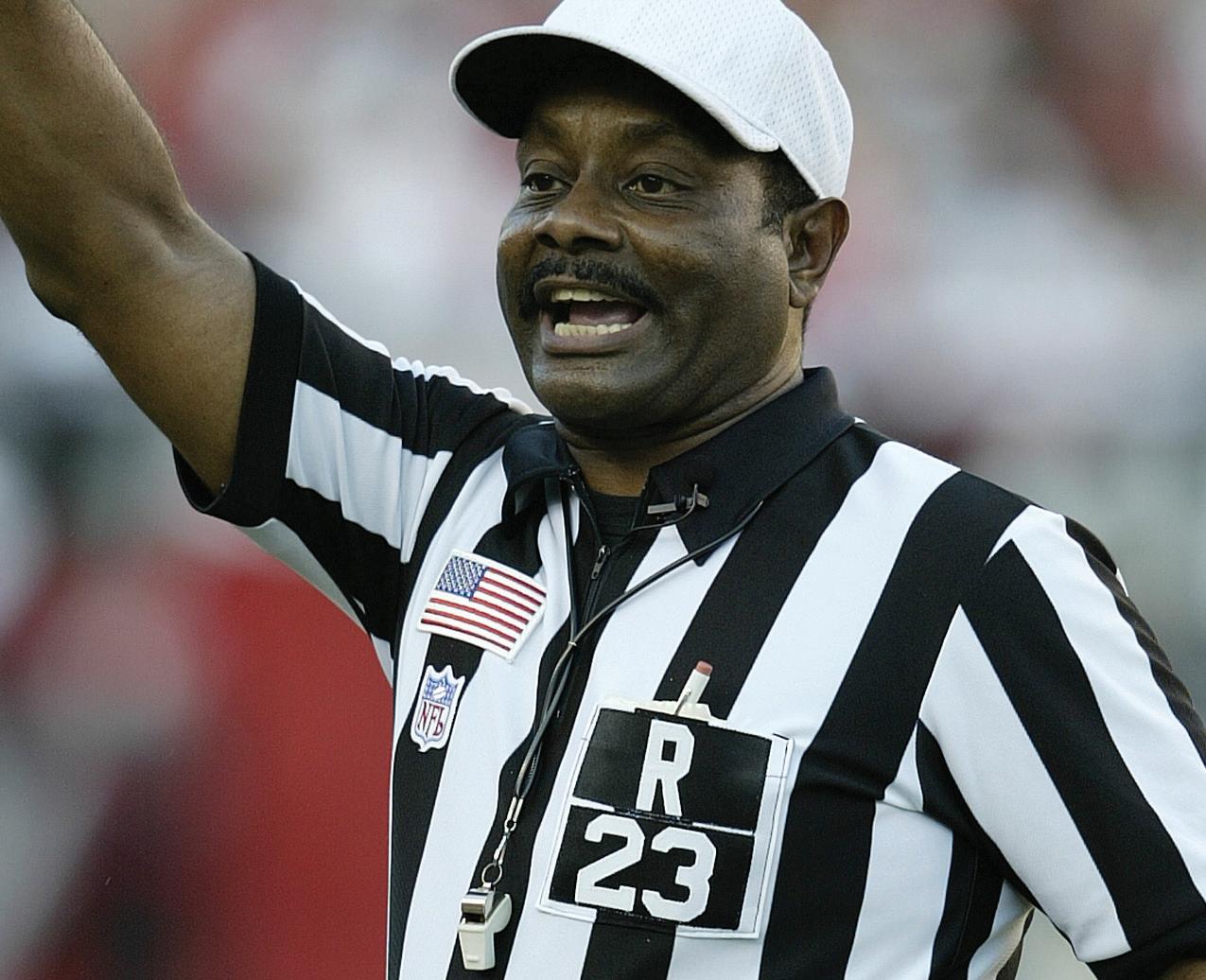
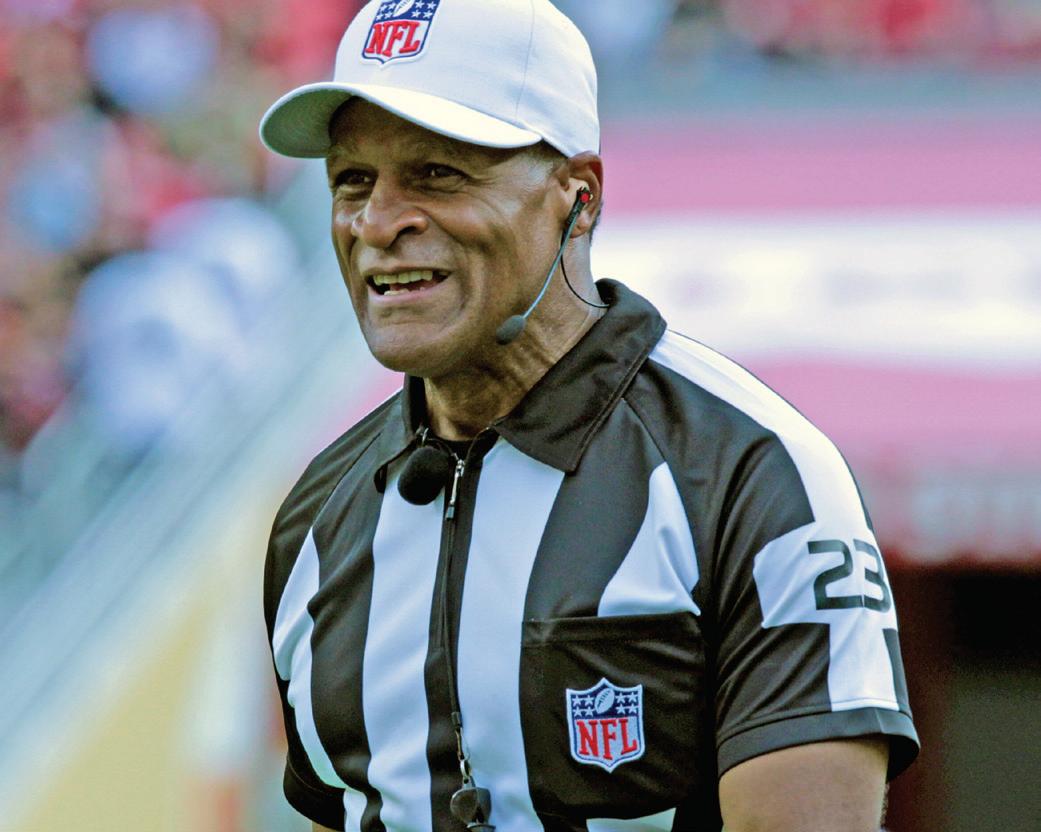
Walt Coleman spent his entire career as number 65.When Walt IV joined the league in 2015, he wore number 87. But following Walt’s retirement after the 2018 season, Walt IV was able to change to number 65, which continued a family tradition dating back to 1989 — the longest such streak in NFL history.
The Baynes family has a similar legacy, but not continuous. Former side judge and line judge Ron Baynes wore number 56 throughout his career. When Baynes’ career came to a close after the 2000 season, number 56 sat vacant until 2008. That’s when Allen Baynes, Ron’s son, joined the NFL and number 56 became a perfect fit.
But when Rusty Baynes, Ron’s other son joined the league in 2010 as a line judge, he was out of luck, since Allen already captured the “family number.” Rusty secured a nearby number, 59.
Jim Quirk Sr. spent more than 20 years in the NFL as a line judge and umpire wearing number 5. But in the 2009 season, with Quirk no longer in the league, John McGrath switched from number 120 to 5.
That led to an interesting conversation when Jim Quirk Jr. was hired into the league. Initially, Quirk Jr. wore number 63, but toward the end of McGrath’s career. McGrath said to Quirk Jr., “When I retire, you should take this number back.”
And that’s exactly what happened. Quirk Jr. has worn number 5 since the beginning of the 2017 season, when McGrath left the field.
Luke Modrovsky, Indianapolis, officiates five sports at the high school level. He also works small college football and volleyball.
REFEREE December 2022 | 57
STEVE JACOBSON (GRIER); BILL NICHOLS (BOGER)
Jerome Boger (right) paid homage to Johnny Grier by adopting Grier's no. 23.
Golf for a Good Cause
By Brad Tittrington
In the world of sports, coaches and officials do not always see eye to eye.
However, when it comes to fighting cancer, the two sides are definitely on the same team. One prime example is the Kay Yow Cancer Fund. The nonprofit charity was founded in 2007 from the vision of the organization’s namesake, Kay Yow, the North Carolina State head women’s basketball coach who ultimately lost her fight to cancer in 2009. The fund has allocated $7.88 million to scientific research in support of women’s cancer research and related programs.
almost $500,000 and more than 30 officials participated.
“Even coming out of COVID, we’ve had phenomenal participation the last couple of years,” Vaszily said. “Having Dee and me on the board helps that cause. This year was great because we got some West Coast officials. We are trying to broaden it obviously. Many of the people who are coming to the outing had never officiated Kay when she was a head coach back in the 2000s. For those of us who have, it’s an important cause.”
This year’s cause was even more emotional for the officials as Charlene Curtis, former ACC coordinator of women’s basketball officials, died from cancer just prior to the event. The reception at the Golf Classic featured a moment where all the basketball officials in attendance were brought onto the stage.
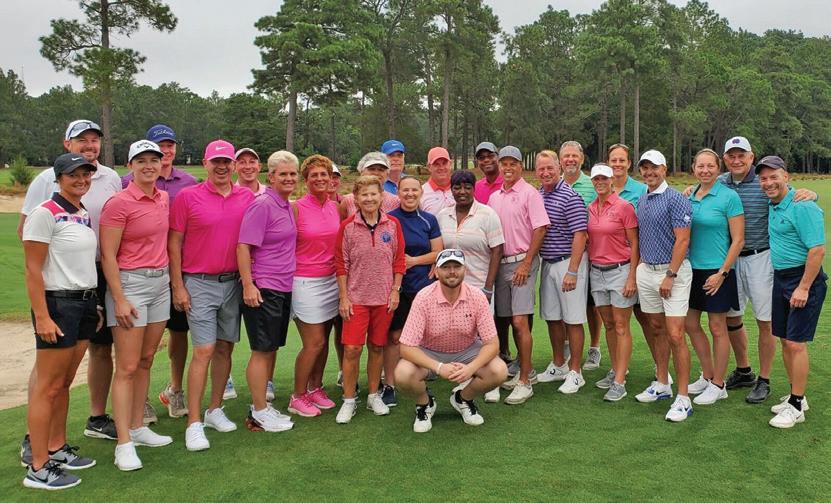
“It was kind of the last step in her basketball journey,” Vaszily said. “It was particularly special for all of us who were able to be there.”
The response from the officiating community to the Golf Classic and the other fundraising endeavors throughout the year are not lost on the those involved with the fund either.
The fund also features two basketball officials on its board of directors — Dee Kantner and Joe Vaszily — both of whom have worked numerous NCAA women’s Final Fours and national championships and had the opportunity to officiate Yow’s games on several occasions.
“This is an amazing fund,” Kantner said. “If you read about Kay or do any kind of research, you will see the impact she had.”
One of the premier fundraising events for the Kay Yow Cancer Fund is its Golf Classic. This year’s event, the 12th annual, took place in Pinehurst, N.C., in August, and several basketball officials took part. From its inception in 2008, the Golf Classic has grown each year. This year, the event raised
“The officiating community has responded unbelievably, amazingly well,” Kantner said. “In the fall, we have pullover drives and we are raising money and we have really impressed everyone in the Kay Yow Cancer Fund. We are just getting started, I know it. We have an amazing group of people who are responding to their call to duty, if you will, to fight all cancers in women.”
Kantner said she often jokes with coaches on the board that they should appreciate the officials instead of treating them like pariahs.
“We are good people,” she said. “We just have a job to do that sometimes turns out to be adversarial. Who we are at the core are really good people who have responded amazingly to this call.”
Brad Tittrington is an associate editor for
Referee
Lacrosse Lionheart
Charlottesville, Va., lacrosse referee
Jim Loffredo, 50, never could have imagined the training he received as a fourth-grade teacher would ultimately help him on the field. However, while working a Men’s 65-plus Division game at the Lake Placid (N.Y.) Classic in August, Loffredo had his training put to the test.
While running up field following a play, Loffredo heard players yelling for help at the other end of the field. When he turned around, Loffredo noticed a player for one of the teams lying on the ground. Loffredo stopped play and ran to the other end of the field.
“As I arrived, another player was already doing chest compressions on the fallen player,” Loffredo told USA Lacrosse. “Since I have had CPR training, I relieved him and continued doing the compressions.”
Loffredo’s CPR and the on-site AED ultimately saved the player, Peter Tracy, 70, of Lutherville, Md., who spent one night in the hospital and was discharged.
SOURCE: USA LACROSSE
NFHS, Iowa Battle Behavior
The NFHS and the state of Iowa are teaming up to try to quell the tide of bad behavior at high school events and the impact it has on the officials shortage plaguing the country. NFHS CEO Karissa Niehoff, Iowa High School Athletic Association Executive Director Tom Keating and Iowa Girls High School Athletic Union Executive Director Jean Berger have combined to write and distribute an opinion piece that warns of the negative behavior witnessed at recent sporting events.
“Officials are leaving the profession faster than new ones are entering it,” the authors said. “This is a serious concern for us. If it continues, we may eventually see games and competitions canceled due to a lack of officials.”
The three called for everyone involved in high school athletics to turn their focus to supporting the athletes and stay away from criticizing officials.
SOURCE NWESTIOWA.COM
Have you heard an inspirational or motivational officiating story? Send your ideas to GettingItRight@referee.com
COURTESY OF BRANDON LAWSON (UMP-ATTIRE)
Officials across multiple sports joined together for the Kay Yow Fund Golf Classic at the Pinehurst Resort in Pinehurst, N.C.
58 | REFEREE December 2022
GETTING IT RIGHT INSPIRATION, MOTIVATION, ELEVATION
BASEBALL UMPIRING

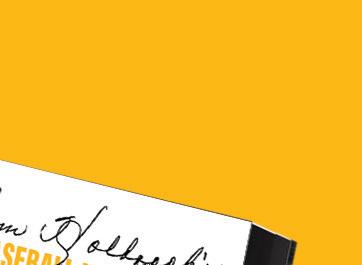



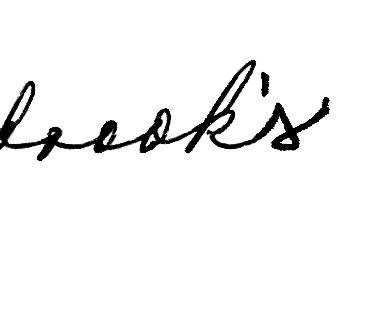




















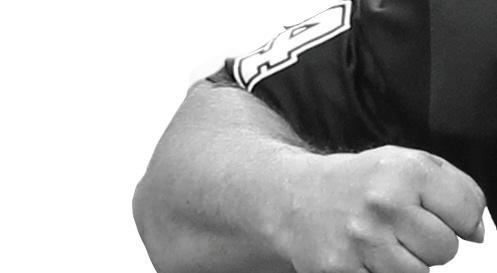
MECHANICS FUNDAMENTALS


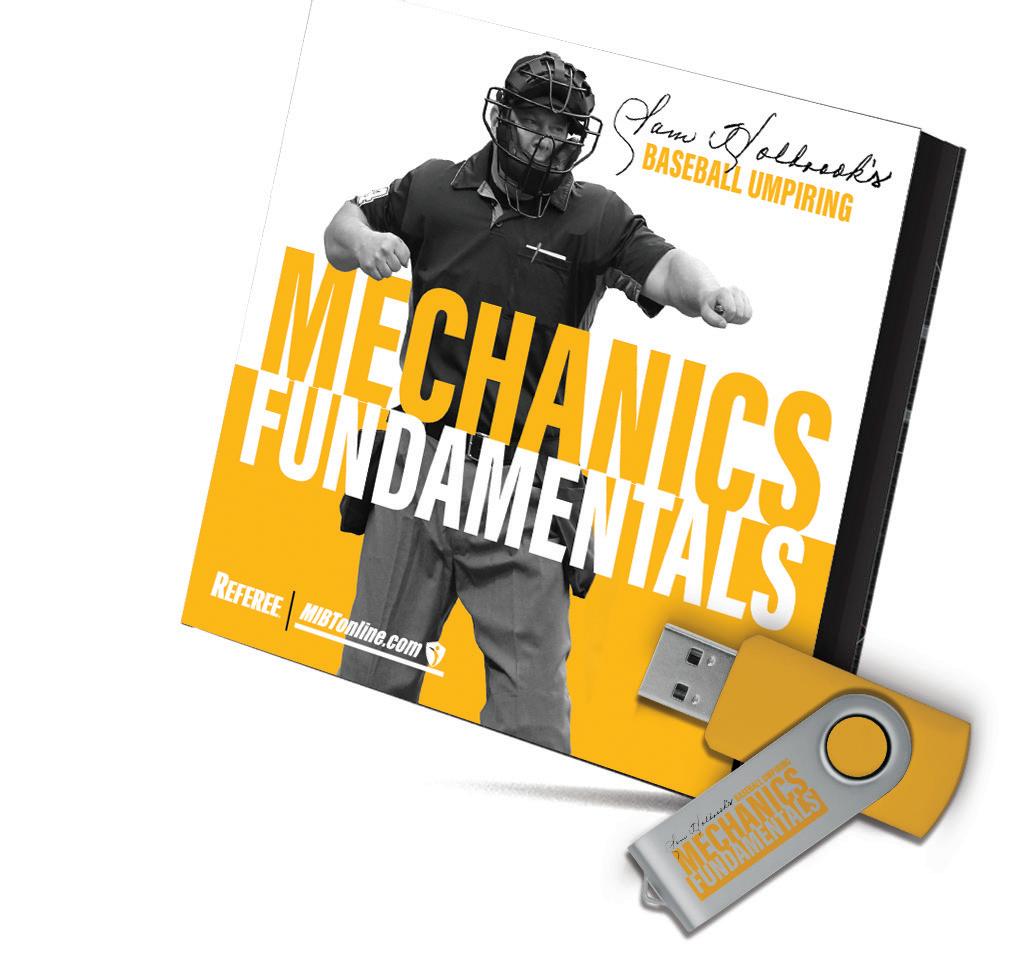
Veteran MLB umpire Sam Holbrook brings his years of onfield and umpire school experience to this new video focusing on the mechanics that will take you to the next level in your umpiring career. The three-time World Series World Series veteran brings years of experience from instructing at one of the top umpire schools in the county, and now he is bringing that experience to you!
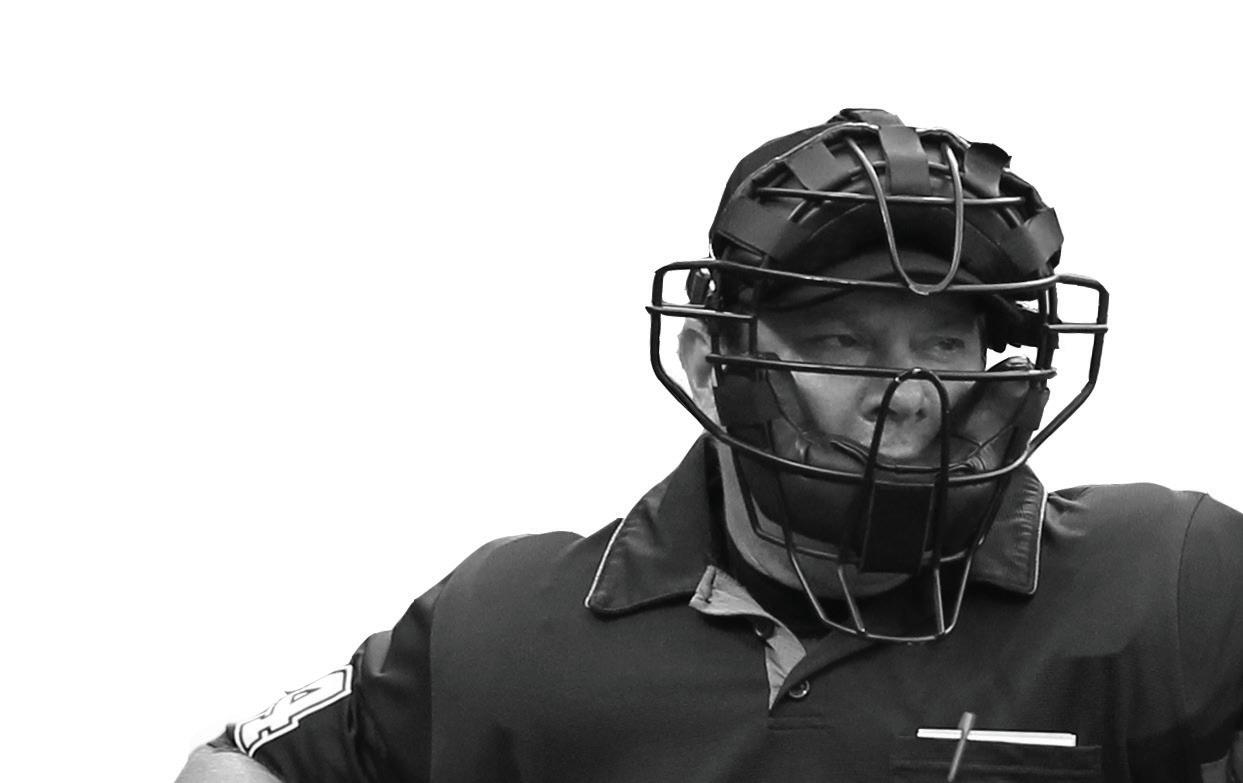
LEARN MORE STORE. /baseball $2495
coming soon
LET’S CHAT ABOUT CONFERENCES Rules Governing Mound
Visits Differ by Level
By George Demetriou
Visits to the mound were at one time a very simple matter. In NFHS, a coach got three free visits to be used anytime with no ifs, ands or buts. The MLB rule was also fairly basic with one free visit per pitcher per inning. NCAA was a cross between the two.
The NFHS simplicity has survived, but MLB has made recent tweaks in an effort to improve pace of play and that has resulted in a laundry list of exceptions to the basic rule. Except where noted, the material
applies equally to NFHS, NCAA and pro rules.
Entitlement
The basic allowance in NFHS is three charged conferences for a regulation game to allow for a coach to confer with defensive players. In NCAA, each team is allowed six defensive conferences per game, no more than three of which may include a coach. In both codes, once the allowed conferences are used, the pitcher must be removed on any subsequent visits to the mound. In extra innings, each team
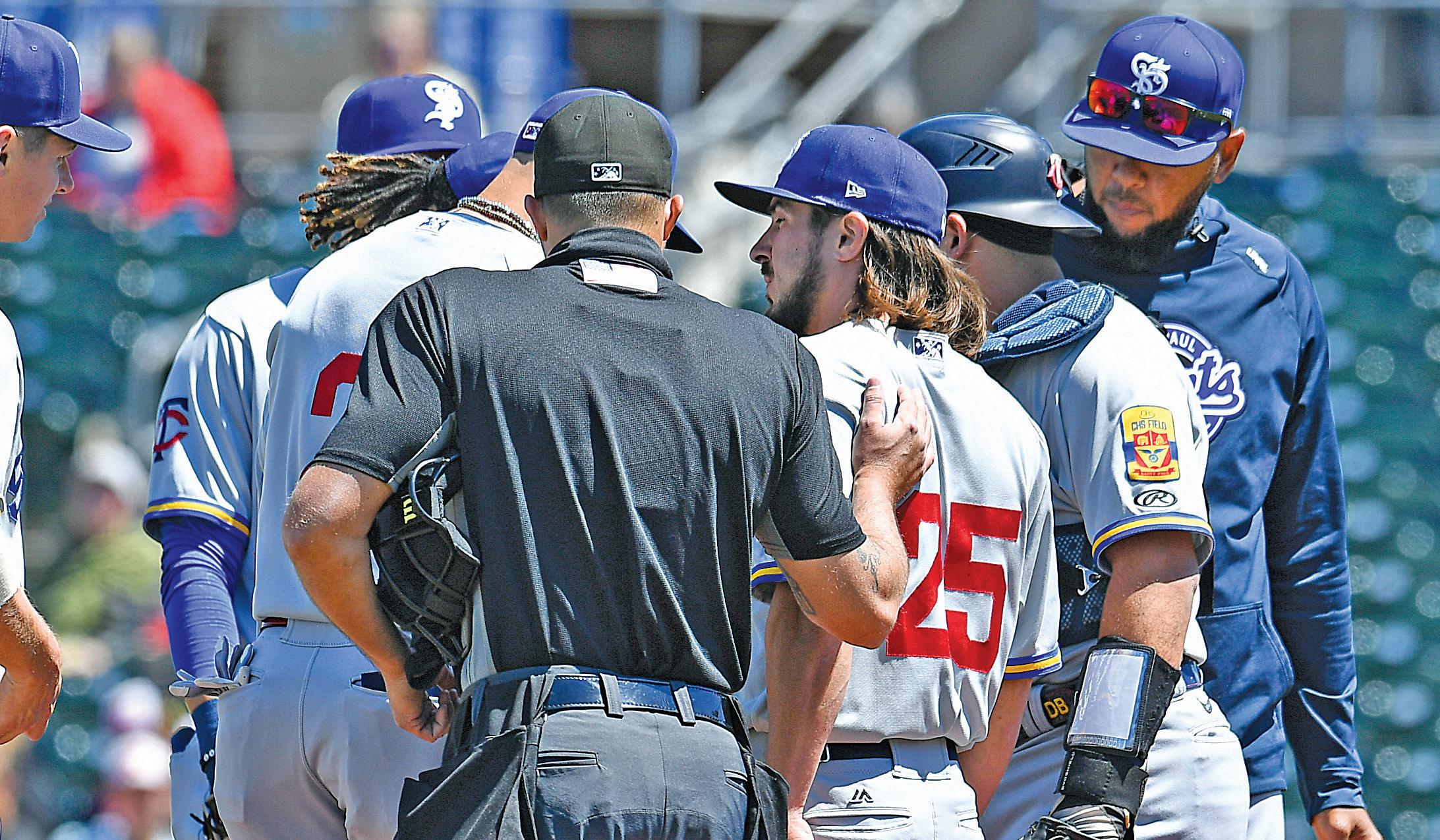
receives an additional conference per inning and only in NCAA do the unused conferences carry over from regulation play (NFHS 3-4-1; NCAA 6-5f, 9-4a). In pro, a second visit by the manager or coach to the same pitcher in the same inning triggers the pitcher’s automatic removal from the game (5.10l2).
In NCAA and pro, there is also a limit on chats between pitchers and position players. The rule was instituted to cut down confabs between the pitcher and catcher. The NCAA defensive conference rule listed above covers this ground. In DENNIS HUBBARD
BASEBALL RULES, MECHANICS, TECHNIQUES EDITOR: SCOTT TITTRINGTON stittrington@referee.com 60 | REFEREE December 2022
When minor league umpire Justin Robinson, St. Louis, allows a defensive coach to visit the mound, he must know the rules and whether this visit is “free” or if it is going to require the pitcher to be replaced.
pro, mound visits without a pitching change are limited to five per team, per nine innings. In extra innings, the rule is one visit per inning with a carryover of unused trips from regulation play (5.10m1).
Play 1: In the first extra inning, Smith, whose coach (or team) had two charged conferences in regulation play, gets another visit. Smith continues to be wild and when the next batter comes to plate, the coach makes another trip and brings in Green. Later in the same inning, the coach comes out to visit Green. Ruling 1: Green may remain in the game in NCAA and pro. In NCAA, the visit to Smith was that team’s third conference (which carried over from regulation). The visit to Green is the additional conference for the extra inning. In pro, it is the allowable visit for the extra inning and if there are any additional charged trips in that inning, they would count against the carryover. In NFHS, Green must be replaced. The regulation conferences do not carry over and the visit to Smith used the extra inning conference.
What constitutes a visit?
A mound visit that results in a pitching change is not a charged conference — the so-called “free visit.” Any visit by a coach with any defensive player is a charged conference regardless of whether or not that player subsequently talks to the pitcher. In NCAA and pro, a player leaving his position to confer with the pitcher, including a pitcher leaving the mound to confer with another player, is a visit, regardless of where the visit occurs or the length of the visit. If a manager or coach confers with another player who then meets with the pitcher before there is a pitch or another play, that visit also constitutes a trip.
If the pitcher appears to be injured, the coach may request permission to check on him. A good example is immediately after the pitcher has been struck with a batted ball. Such a trip is not a charged trip or conference, but the umpire should monitor the discussion to ensure strategy, etc., is not discussed. Any
such chat should be immediately stifled and the coach warned that a visit will be charged if it continues.
Additionally, the following are not considered visits to the mound: discussions between pitchers and players that occur between batters in the normal course of play and do not require either the player or the pitcher to relocate; visits by players to clean spikes in rainy conditions if there is no discussion with the pitcher; visits immediately after the announcement of an offensive substitution; visits by position players after a home run, provided the player returns to his position before the runner crosses home plate; visits by position players during an inning break or pitching change, provided the game is not further delayed; visits during any suspension of play, provided the game is not further delayed; or any other incidental communication. Also, if anyone joins a mound visit already in progress it does not constitute an independent visit.
Bonus visit
In pro, if a team has exhausted its allowed number of mound visits, and the plate umpire determines the catcher and pitcher had a cross-up in signs, he may allow a brief mound visit.
Start and end






















A coach conference with the pitcher begins when the coach crosses the foul line on his way to the mound. In NFHS and NCAA, it ends when he goes back across that line. In pro, the visit ends when the manager leaves the 18-foot circle surrounding the pitching plate. Also, in NFHS a coach who has been restricted to the bench may participate in a conference by having the pitcher or other defensive player(s) come to the vicinity of the dugout. Such a conference ends when the player(s) begin to return to their positions (3-4-4). If a coach visits with his pitcher between half innings, it doesn’t count as a trip unless the game is delayed. If there is a delay, it is recommended the coach be warned that he will be charged with a trip on the next occurrence (3.4.1H). In NCAA, such a visit is permissible
BY THE NUMBERS
The number of balks called against Miami Marlins pitcher Richard Bleier during the eighth inning of a Sept. 27 game against the New York Mets. All three balks came during the same at-bat, making Bleier the only pitcher since 1900 to accomplish that ignominious feat.
SOURCE: ESPN.COM
SIDELINE
Hairy Situations
An MLB player’s hair played a central role in two different umpiring situations during the month of September.

During the Sept. 9 game between Minnesota and Cleveland, Twins manager Rocco Baldelli asked the umpiring crew to check Guardians pitcher James Karinchak’s hair for foreign substances after the right-hander repeatedly touched his flowing locks with his throwing hand between pitches. Crew chief Ted Barrett ran his hands through Karnichak’s hair during the middle of an at-bat and found nothing illegal.
On Sept. 25, Cincinnati batter TJ Friedl was awarded first base after a replay review showed a high and tight pitch by Milwaukee’s Aaron Ashby missed Friedl’s face but clipped the hair flowing out from beneath his helmet. According to pro rule 5.05(b)(2), the batter becomes a runner and is entitled to first base when “he is touched by a pitched ball which he is not attempting to hit.” The only caveat covered by rule is that the batter shall not
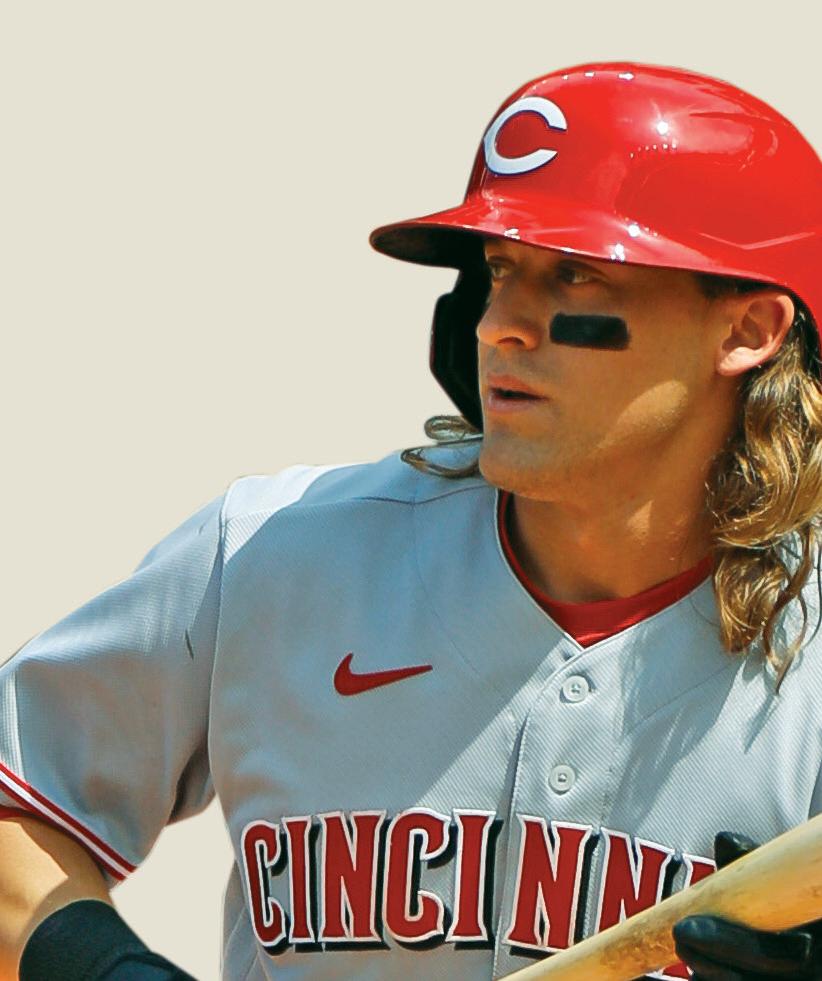

be considered touched by a pitched ball if it only touches any jewelry worn by a player.

BRANDON SLOTER/ICON SPORTSWIRE/NEWSCOM
3
TEST YOURSELF
In each question, decide which answer is correct for NFHS, NCAA or pro rules. Solutions: p. 85
1. With R1 on first base, no outs and a 1-0 count on B2, F1 fails to come to a complete stop and is called for a balk. His pitch is wild and eludes F2, going all the way to the backstop. R1 attempts to advance to third and is thrown out.
a. B2 and all runners who did not advance are awarded at least one base. Return R1 to second base.
b. The play on R1 stands and he is out. The balk is still “acknowledged” and the count remains 1-0 on the batter.
c. Immediately call “time” when the pitcher balks. R1 is awarded second.
2. Daniel is listed as the DH for the pitcher, Baker, in the third spot in the batting lineup. In the fourth inning, Baker bats when it is Daniel’s time to bat and hits a single.
a. This is an illegal substitution. Baker is called out and will be restricted to the dugout. Daniel is substituted for.
b. This is batting out of order. Baker’s time at bat is nullified, Daniel is out, and the next proper batter is the player who follows Daniel.
c. This move is legal. The DH role is terminated for the remainder of the game and Baker will continue to bat in the third spot.
d. This move is legal. Baker can become the P/DH and continue to bat in the third spot.
3. With R1 on first base, F1 accidentally delivers a pitch off the side of his leg. The ball rolls 20 feet from the mound and stops before crossing the foul line.
a. Balk.
b. A ball is called.
4. With R1 on first base and R3 on third base and two outs, B5 hits a slow ground ball back to F1. F1 fields the ball and throws it to F2. R3 is ruled safe on the tag play at home, but F2 quickly makes a play on B5 going to first and B5 is out.
a. Score the run as this is an intervening play.
b. Do not allow any runs to score.
subject to the 120-second count (App. F). In pro, it is a charged visit.
If the offense asks for “Time,” and a coach visits the pitcher, it counts as a trip or conference in NCAA and pro, but not in NFHS. However, NCAA rules specifically allow a coach to chat with his pitcher during a prolonged injury timeout without a charged conference. In a prep game, the coach may come out and talk to his pitcher during an offensive conference as long as the game is not delayed. In pro, there are no exceptions — all defensive visits are charged (NFHS 3-4-5; NCAA 9-4a6; pro 5.10m2).
Restrictions and repercussions
In NFHS, available conferences can be used at any time including during the same at bat with the same pitcher. However, if the visit mandates the pitcher’s removal, he must be removed from the pitcher’s position for the duration of the game (3-4-1). In pro, a second trip can be made in the same inning to talk to the same pitcher, but the pitcher must be removed from the pitcher’s position for the remainder of the game (5.10l2). A second trip cannot be made in the same inning to talk to the same pitcher while the same batter is at bat, except if there is a pinch hitter, then the second trip is legal, but the pitcher must be removed from the game. For purposes of this rule, the next batter is the batter as soon as the previous batter finishes his at bat (5.06l3, 5.06l4). The coach need not wait for the new batter to step into the box before coming out. NCAA is the same as pro, and the removal parameters also apply if it is the fourth conference for a coach. The pitcher need not be removed from the game, but must be removed from the pitcher’s position for the remainder of the game (9-4b, 9-4c).
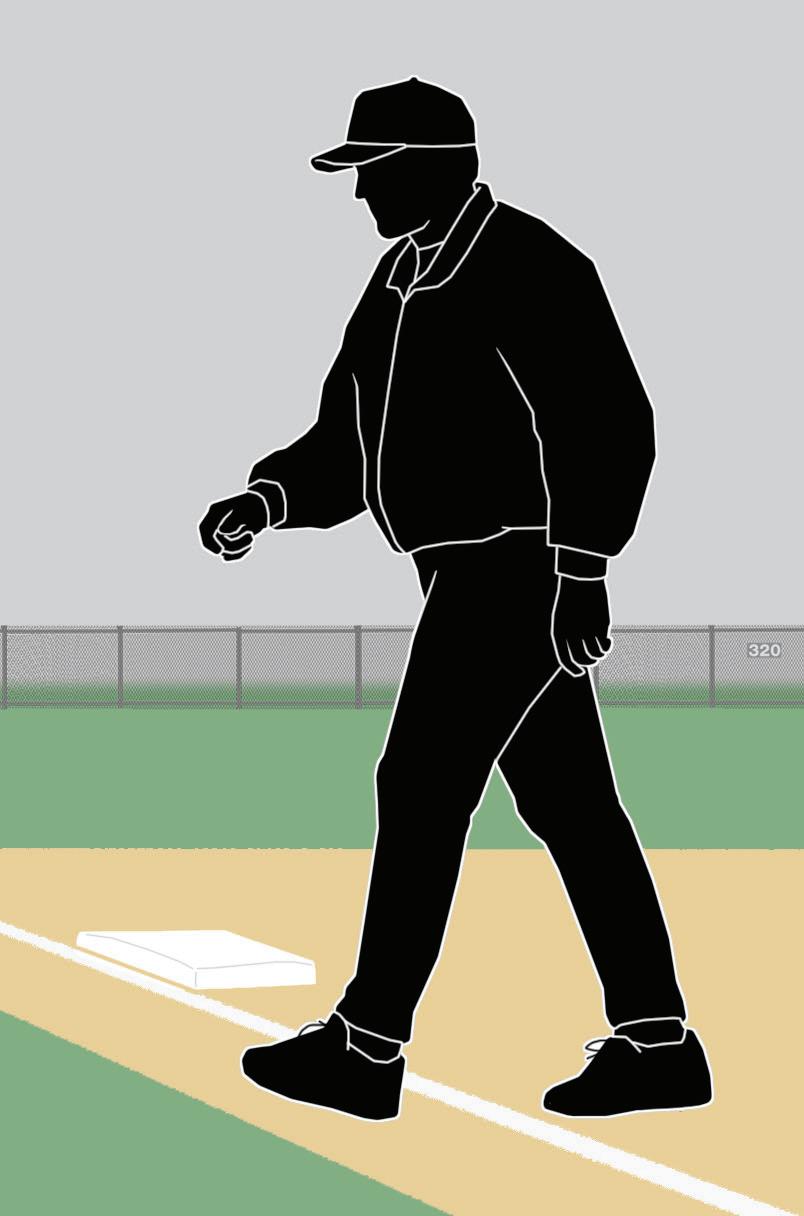
Play 2: B5 draws a walk to load the bases. As B6 steps to the plate, the coach comes out to visit F1 for his first conference. F1’s next two pitches to B6 are in the dirt; the coach returns. Ruling 2: Legal in NFHS, but not in NCAA or pro.
If an attempt is made to visit the pitcher in violation of the rules, the
In NFHS and NCAA, a defensive conference between a coach and pitcher ends when the coach crosses the foul line on the way back to the dugout. In pro, the conference ends when the coach leaves the 18-foot circle surrounding the pitching plate.
umpire should so advise the coach. If the coach continues to the mound, the only recourse is ejection. If the coach is mistakenly allowed to go to the mound for a conference that dictates removal of the pitcher, there is no penalty. In either case the pitcher may remain until the batter completes the turn at bat and the umpires should announce the consequences so a new pitcher can warm up.
In NCAA and pro, if the noncoach conferences have been used and an infielder requests time to talk to the pitcher, the umpire should remind him no conferences remain. Preventive officiating is paramount and it’s important for base umpires to know the number of visits taken. Inadvertent conferences should be immediately stopped without penalty. If an extra conference is held, the non-pitcher is removed from the game; however, if a player continues to confer in defiance of authority after an umpire has advised no visits are remaining, the player is ejected.
George Demetriou, Colorado Springs, Colo., is the state’s rules interpreter.
62 | REFEREE December 2022 BASEBALL
NFHS POEs for 2023
The following points of emphasis (POEs) for the 2023 season were crafted by the NFHS Baseball Rules Committee during its annual June meeting and subsequently approved by the NFHS Board of Directors in July.
The POEs are all considered to be of equal importance and appear in no particular order.
Sportsmanship
Good sporting behavior is one of the fundamental ingredients to the continued success and enjoyment of education-based high school sports and activities. NFHS playing rules are written to encourage sportsmanship, and participation in these programs should promote respect, integrity and sportsmanship.
There must be a collaborative, working relationship between umpires and game administration to promote good sportsmanship and safely conduct the game. Everyone has their roles to play in creating a positive, sportsmanlike atmosphere at games.
Umpires should focus on the actions of players, coaches and other bench personnel. A positive, open line of communication between umpires and coaches ultimately results in a better game for everyone involved. Umpires should not, however, engage with spectators who are exhibiting unsporting behavior. Once the game begins, school administration is responsible for dealing with unruly spectators. A proactive approach by school administration includes monitoring the behavior of spectators and intervening as needed. If spectators are using demeaning or profane language at umpires, or others in the stands, those individuals should be removed from the contest by school administration.
The use of demeaning language, or hate speech, by students, parents and other fans must cease. High schools must establish a culture that values the worth of every single person — both players on the school’s team and players on the opposing
team. There must be a no-tolerance policy regarding behavior that shows disrespect for another individual.
Obstruction and Interference
There are many nuances to both obstruction and the multi-layers of interference.
Simply stated, obstruction is any act — accidental, intentional, verbal or physical — by any fielder or member of the defensive team that hinders a runner or affects the pattern of play. Interference is very similar and addresses any act, verbal or physical, by the team at bat that impedes, hinders or confuses any defensive fielder attempting to make a play.
Coaches, umpires and players have a role in understanding the rules related to each of these violations. Because both violations are sportsmanship-centered at their core, the penalties — which are some of the sternest in the NFHS rules code — are commensurate to the overarching concern regarding fair and equitable play in interscholastic baseball.
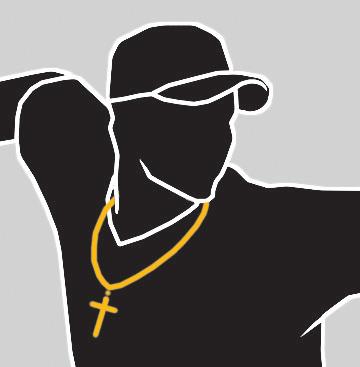
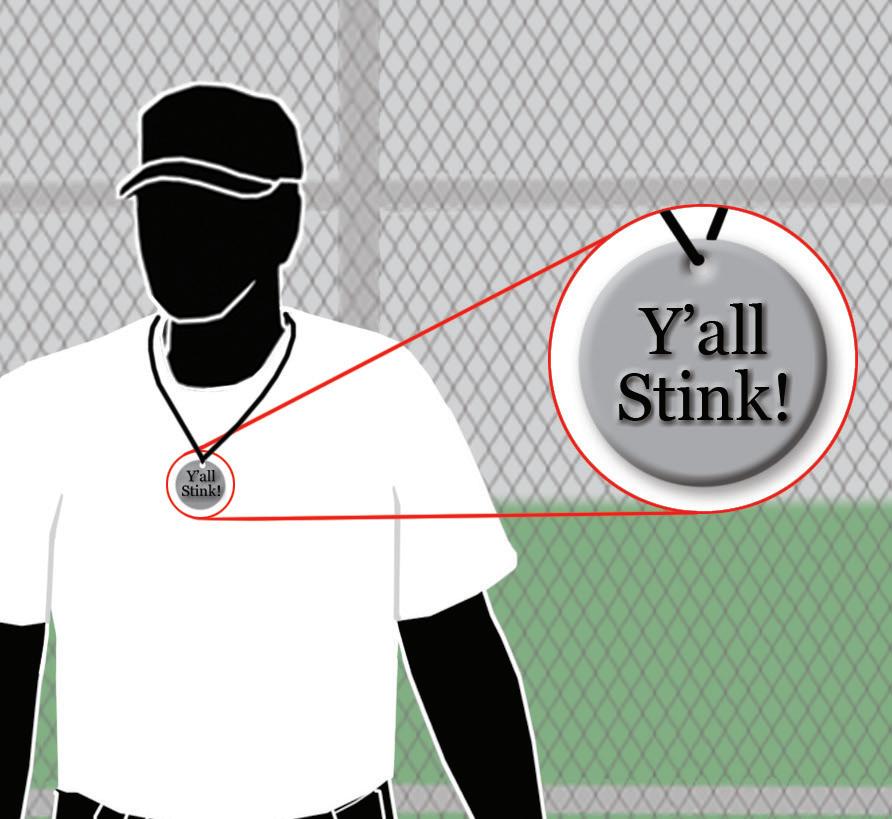
Jewelry
This year’s rule change that eliminates the prohibition against jewelry will permit players to freely wear items including medical alert bracelets and some religious, cultural or tribal adornments (PlayPic A).
However, any jewelry that contains profanity, taunting, language to intimidate or baiting an opponent
is still not allowed under various sportsmanship rules, and bench and field conduct policies (PlayPic B). Rules coverage also remains to prohibit any item that presents a danger to the player, a teammate or opponent.
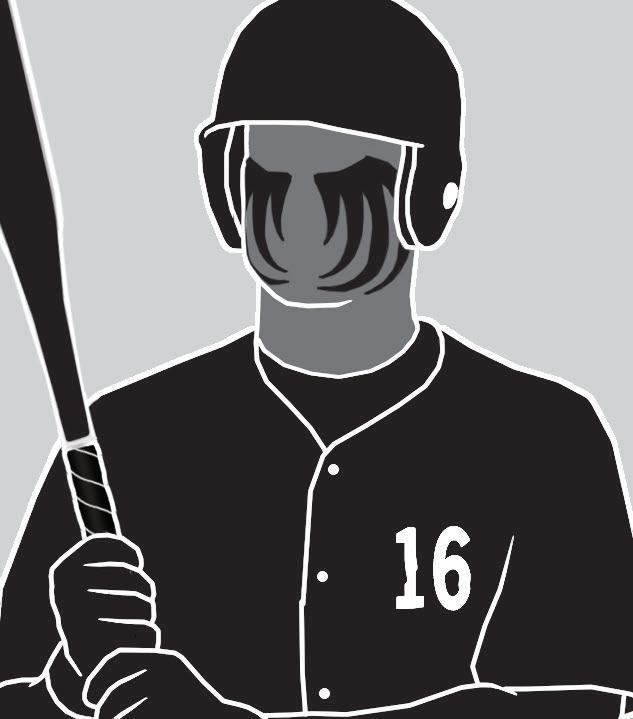
Usage of Eye Black
Eye black was originally introduced to help players reduce glare from the sun. However, the high school game is now experiencing the use of eye black for face decoration, with images and/or sayings being drawn on the faces of players to try to intimidate and/or taunt an opponent (PlayPic C).
There are existing sportsmanship rules available to mitigate any use of eye black (in any version) in an inappropriate or unfavorable way. Coaches are encouraged to direct their players to use this tool in a more productive way.
REFEREE December 2022 | 63
A C B
BASEBALL
CASEPLAYS
No Stop
Play: With no runners on base, F1 is in the set position. During his delivery, F1 changes direction, but does not come to a complete and discernable stop. Ruling: In NFHS, it does not matter if there are no runners, the pitcher must come to a complete stop when using the set position. In NCAA and pro, if the bases are unoccupied, the pitcher need not come to a complete and discernible stop (NFHS 6-1-3; NCAA 9-1b Note 2; pro 6.02a13 Illegal Pitch Definition).
Mad Dash
Play: With no runners on base, B1 takes a called third strike. B1 heads for his dugout, not realizing F2 dropped the pitch. F2 then throws the ball wildly toward first. B1 heads for first and makes the base safely. Ruling: In NFHS, B1 is out only if he reached the dugout before breaking for first. In NCAA and pro, B1 is out once he leaves the dirt circle of the plate area before breaking for first (NFHS 8-4-1i; NCAA 7-11u; pro 5.05a2 Cmt).
Play or Not?
Play: With R2 on second, B2 grounds to F6. F6 fields the ball and chases R2 back toward second. He then swipes at and misses R2, and throws wildly to first into dead-ball territory. Before F6 throws, B1 touches first. Ruling: F6’s throw was the second play by an infielder, so B2 is awarded third and R2 is awarded home. Although chasing R2 back to second is not a play, attempting to tag him is a play (NFHS 8-3-5; NCAA 8-3o3 Note 2; pro 5.06b4G AR).
Costly Assistance
Play: With R3 on third and one out, B3 flies to deep left field. The third-base coach grabs R3 and pulls him back to third to tag up. Ruling: The ball remains live. Regardless of whether or not the ball is caught, R3 is out. If the ball falls in and B1 ends up at second, he may remain there. If the ball is caught, two are out (NFHS 3-2-2; NCAA 2-51, 3-3e, 8-5f; pro 5.03c).
I Like You, You Like Me …
By Jon Bible
In my career I was blessed to have many partners with whom I enjoyed working. There were also a few at the other end of the spectrum. How can we get other umpires to put us in the first group? Here are some thoughts, in no particular order of importance except for the first one, which is No. 1 on my list.
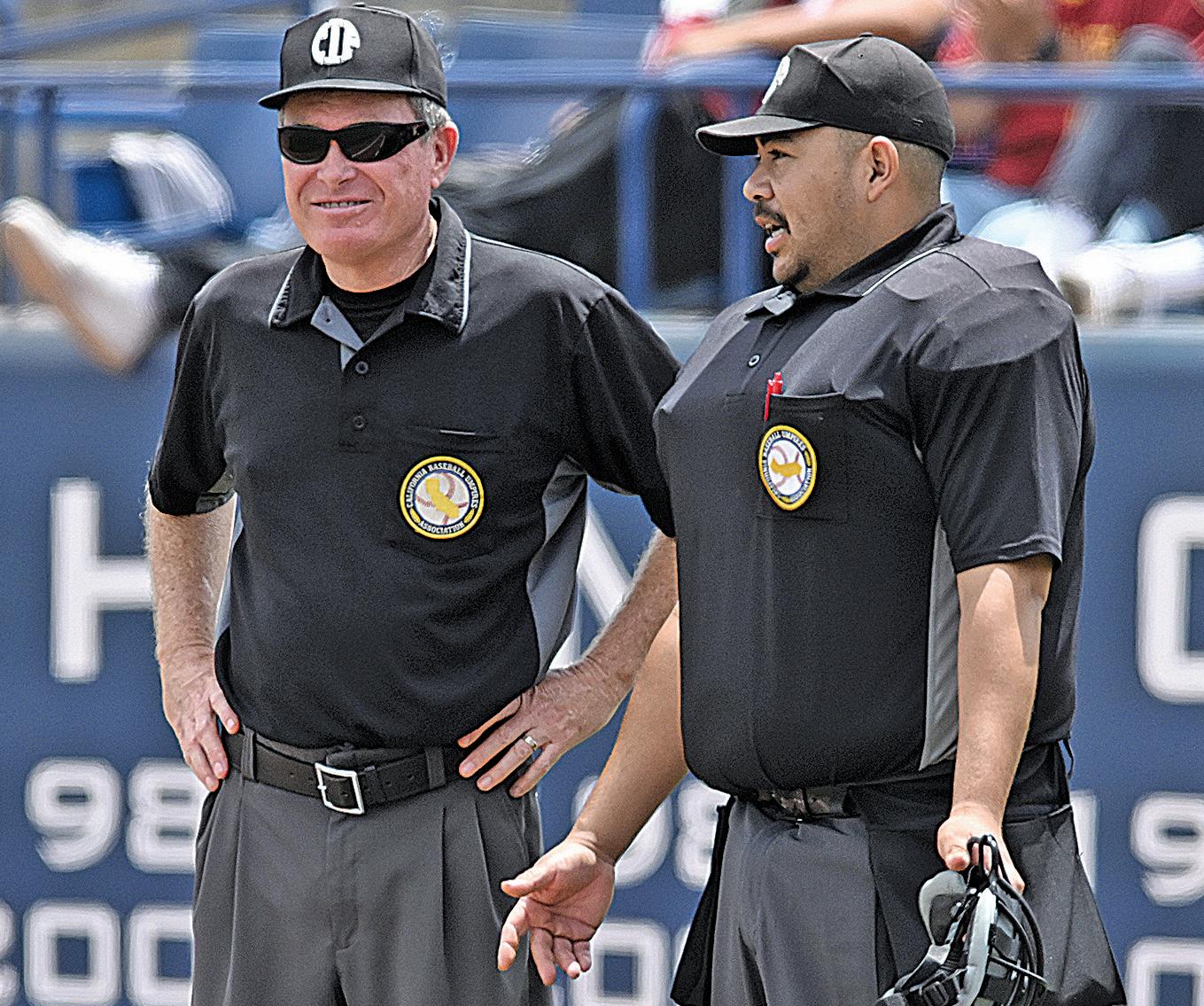
Have your partner’s back
Years ago, I ejected a coach. Instead of leaving, he walked down the thirdbase line, stood there and yelled at me. Eventually, after I threatened to forfeit the game, some of his players dragged him off the field. What did my partner (in a two-umpire crew) do? Nothing. He stood behind first base without moving a muscle. When we got to the dressing room I verbally undressed him; fortunately, I was in a position to ensure I never worked with him again. Want to be the umpire no one wants to work with? Act like that
partner. After I ejected the coach, he should have come in to get him to leave the field, just as he should have policed the dugout if they were giving me grief, which they weren’t. Once, after I tossed a manager in pro ball, it took my partner 28 minutes to get him off the field, but he eventually did.
Take care of business
I don’t want to work with umpires who won’t enforce the rules — not hyper-technically, but in light of their intent, call balks and interference, eject coaches or players when necessary, and the like — because they’re scared of getting the grief that may follow.
If you won’t take care of business, I have to. I can’t count the number of times in my career where I, or someone in my crew, enforced a rule prohibiting X only to have the coach tell me that they’ve done X all year and no one has said anything about it. Who comes across as the bad guy then? Why should I have to take the heat
64 | REFEREE December 2022
See “Good Partner” p.62
HESTON QUAN
Being a good partner means having your partner’s back on the field. If either Jeff Gabrielson, Riverside, Calif. (left) or Carlos Astorga, Canoga Park, Calif., has a troubling situation on the field, the other needs to step up and provide support.
are the critical plays you’re seeing every game. Faster, stronger and moreskilled athletes make for rapid fire baseball plays that test even the most experienced officials. Focus your thinking on the crucial plays you’re seeing every game and get the tools you need for successful rulings every time.
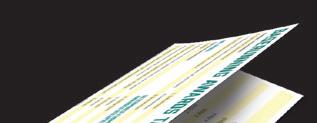
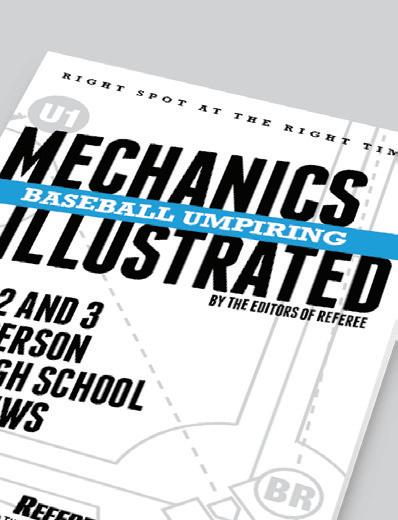




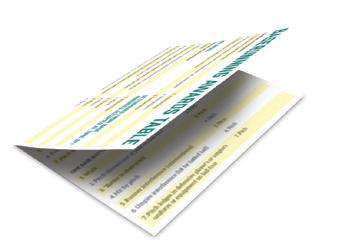







































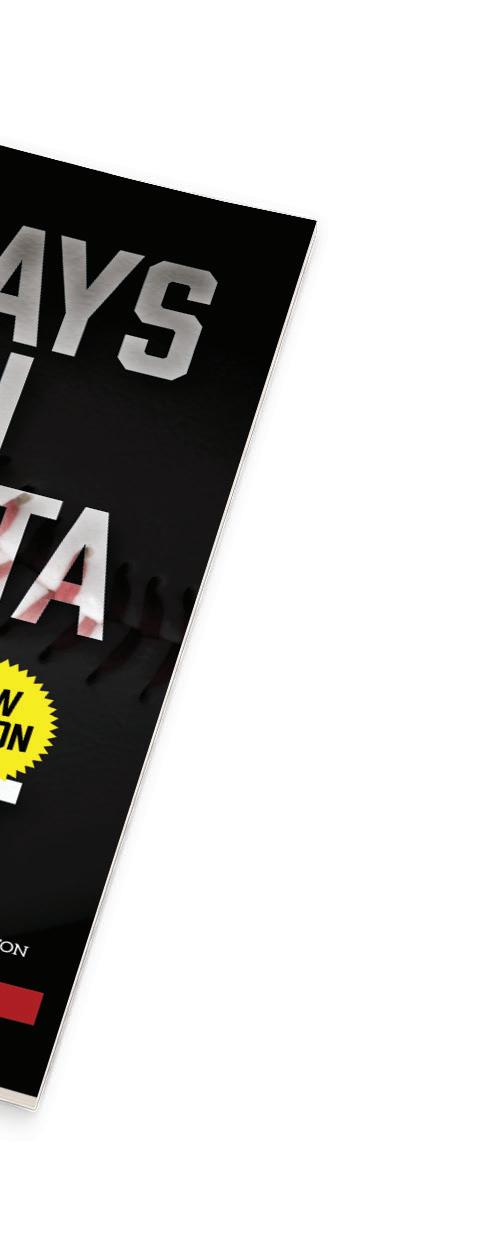
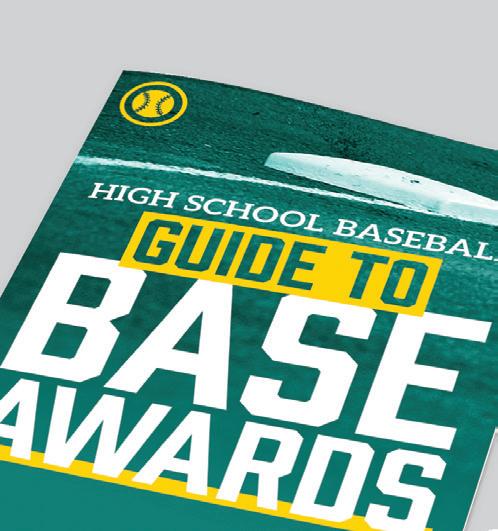
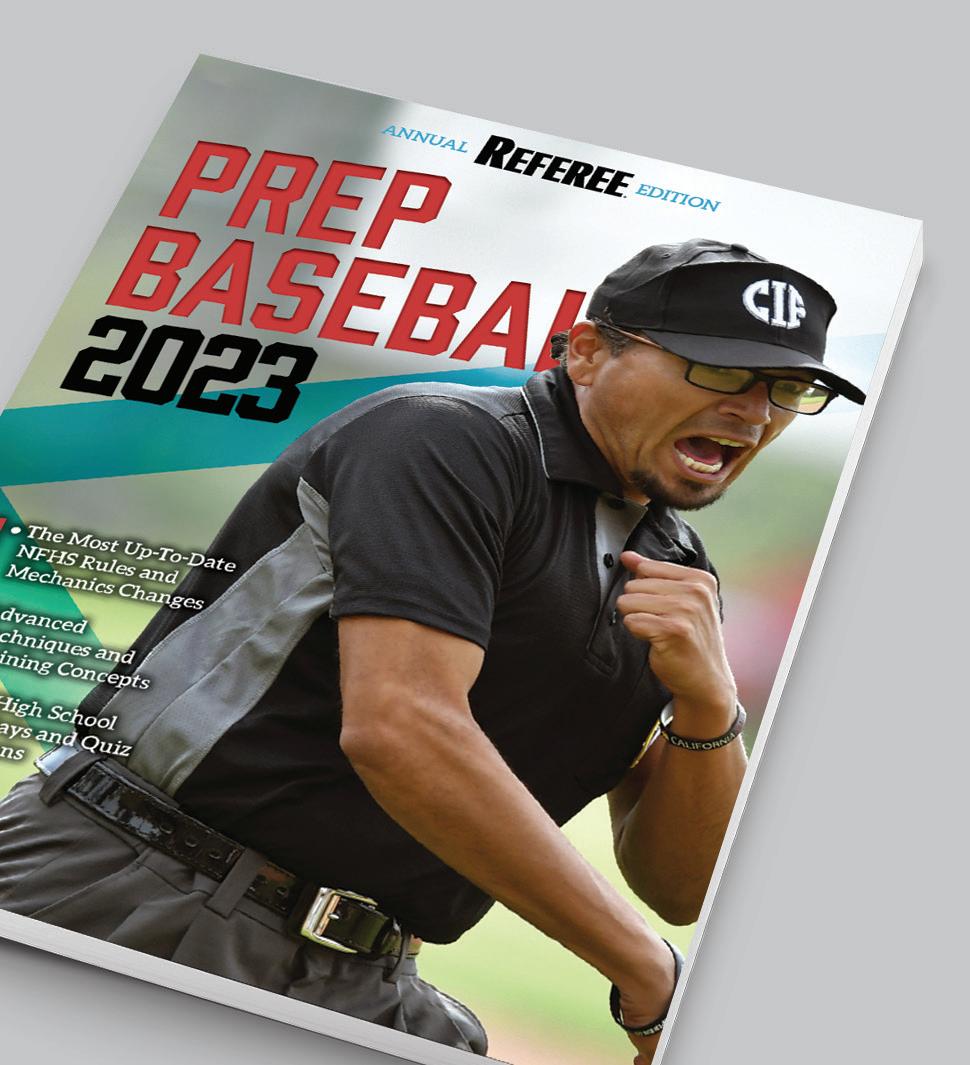
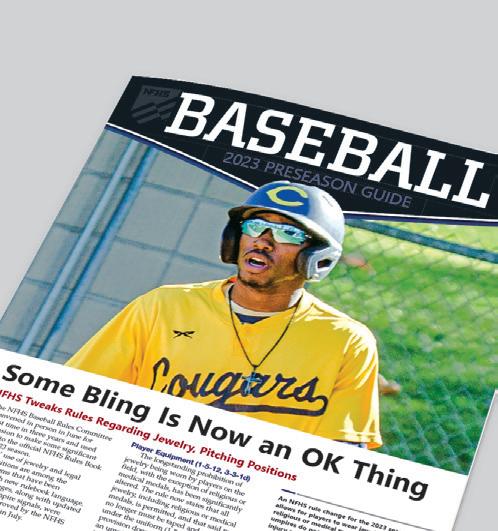
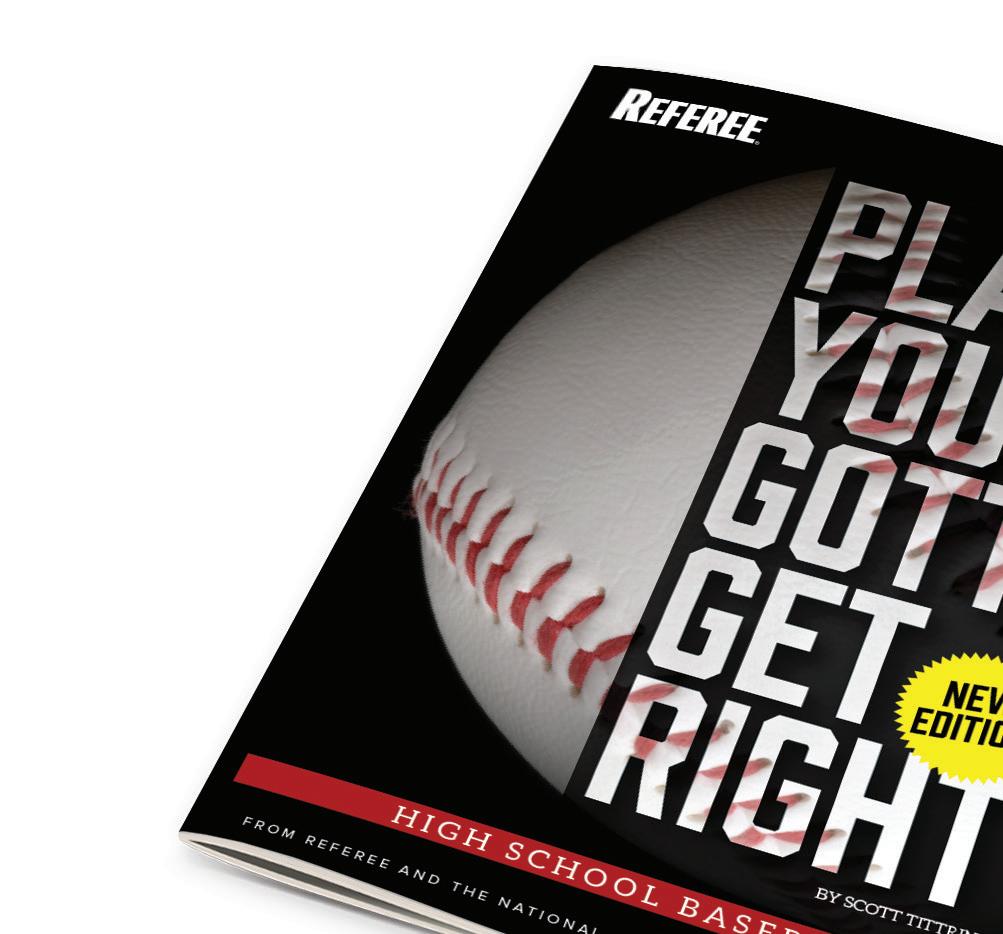
prep baseball DON’T WAIT TO GET WHAT’S NEXT Your complete special annual edition guide for the 2023 baseball season with nearly 100 magazine-sized pages of up-to-the-minute rules, mechanics, techniques and mental preparation. • All recent rule changes reviewed and explained • Mechanics updates and recent changes • Advanced techniques and training concepts • Tips & strategies for tough situations • Quiz questions & answers • Caseplays with rulings *NASO member discount available. $1795 * DIGITAL $1895 * PRINT $2395 COMBO 96 Pages // 8” x 11” plays you gotta get right These
*NASO member discount available. $1195 * DIGITAL $1295 * PRINT $1795 COMBO 32 Pages // 8” x 11” 16 Pages of rule changes, mechanics updates and points-ofemphasis straight from the NFHS. You need to come alive when the ball is dead, and a key part of your job is knowing where to place baserunners in every situation. Handy reference card included. Improve your baseball umpire mechanics and get more calls right. New edition includes all recent changes. 16 Pages 8” x 11” $3.05 24 Pages 5.5” x 8.5” $6.95 200 Pages 5.5” x 8.5” 21.95 also avAilable learn more AT STORE. /BASEBALL NEW FOR 2023 all new edition updated for 2023 AVAILABLEALLITEMSINJANUARY
when you were too gutless to do what needed to be done in the first place?
Use the prescribed mechanics
I had a friend (now deceased) who was a good umpire, but as he gained weight he made his crews use improvised mechanics designed to cut down his running. Because he had seniority, the younger umpires had to go along, and it left a bad taste in their mouths. It also jeopardized their careers, because if someone who could help them advance was at a game and didn’t know the circumstances, that observer might have inferred the crew just didn’t know proper mechanics. This could hurt an aspiring young umpire.
When you won’t use the prescribed mechanics you put everyone else in a bind. Now, instead of reacting instinctively when the ball is hit, people must think, and that can be deadly. X may be the one who messed up, but Y may get blamed for it. Mavericks also create the risk of a confrontation with umpires who want to do the right thing; indeed, I’ve seen things escalate to the point that people almost ended up in a fight. Who needs partners who cause problems like this?
Be on time
When we’re late to the site, our partner(s) may get antsy. I’ve had
people show up so close to game time
I feared I may have to work alone, which is unsettling to say the least and forces us to take the field without a pregame chat. Sometimes we can’t avoid being late, but don’t make a habit of it. Plan things so you get to the field (the right one — partners have gone to the wrong place) in enough time so that everyone is relaxed and there’s time to prepare.
If you know you’ll be late, have your partner’s cell phone number so you can let him or her know.
As an aside, when I was a supervisor I surveyed college coaches about things that irritated them. You may think judgment would top the list. Not so. First was umpires talking too much to their players. Second was umpires showing up so late that their pitchers didn’t know when to start warming up or the game didn’t start on time.
If plate and base assignments haven’t been made so that you and your partner must work it out, arriving late may leave said partner no option but to strap on the gear. Put your partners in a position where they have no choice but to work the plate enough times and you’ll get the reputation that you’re too chicken to handle the hardest part of umpiring. In the same vein, don’t be the umpire who says, “Gee, I forgot my plate gear.” Very little used to tick me off more than being paired with someone who did this.
Don’t badmouth others
Umpiring and gossip go together, but don’t let it degenerate into snarky comments about how X screwed up a call, is in the assigner’s doghouse, etc. If you’re eager to tell your partners about some mess X is in, why should they assume you won’t tattle on them if they pull a boo-boo? Umpires who get labeled as tale-carriers or, worse, backstabbers, aren’t in demand as partners.
Have a good attitude
Umpiring can be tough when a crew member has a crummy attitude. This can drag down the others, and the affected individual may not be as focused as he or she should be. When we show up to work, we should put aside whatever problem is bothering us. If we all take the field with a positive attitude, we’re likely to turn in a better individual and collective performance.
Don’t whine
Don’t complain about assignments or umpires who get games you think they don’t deserve because they’re suck-ups. This is tiresome to those around you. If you start down this road, there will hopefully be some internal mechanism that says, “Shut up!” before it’s too late.
Jon Bible, Austin, Texas, worked seven NCAA Division I College World Series. In 2019, he was inducted into the National College Baseball Hall of Fame in Lubbock, Texas.
Be Careful About the Over-Commit
No one can argue there aren’t flaws in the two-person umpiring system. After all, if there weren’t, there would be no need to work games with three, four or six umpires instead.
With four bases to account for and just two sets of eyes on the field, there are going to be situations where an umpire just doesn’t get the best look at a particular play and must determine what sacrifices need to be made in order to cover all of the action. Here is a perfect example:
Play: Bases loaded, less than two
outs, a fly ball hit to deep right-center field.
Coverage: First, let’s discuss prepitch alignment. The base umpire will be in the C position, on the shortstop side of the infield between the pitching mound and second base.
Next, let’s cover responsibilities on this play. For the plate umpire, it’s pretty simple. PU has responsibility for the tag-up by R3 at third base and any possible plays at the plate. Given this is a deep fly ball to an outfield gap, the ensuing play after the catch is likely not
going to be at the plate, as R3 should score easily.
Things are much more complicated for the base umpire, who has catch/no catch responsibilities while also trying to line up a look at the tag-up of both R2 at second base and R1 at first base. The reality is U1 cannot see all three things at once and must prioritize. The catch/no catch always comes first in the order of operations. Based on the location of the fly ball, the tag-up by R2 at second base is next. So U1 must find an angle to see both of these actions,
BASEBALL 66 | REFEREE December 2022
continued
Good Partner
from p.60
sacrificing any true look at what R1 is doing at first base. All U1 may get is a quick peek at first base after the ball is caught and R2 begins to advance to third base.
However, the fun is just beginning. What if F9, who catches the ball, makes a strong, on-line throw in an effort to retire R2 at third base? U1 does not want to get caught in a position in the working area with nothing but a view of a sliding runner’s backside on a tag play at third base. Ideally, U1 would be able to make progress toward what would be a 45-foot mark between third base and home plate, opening up a great angle for a tag play at third base. So U1 hustles from the working area behind the mound to this spot to get in perfect position … only to have R1 also decide to tag and advance at first base.
The shortstop cuts the throw, sensing a better opportunity to retire R1 than R2, and throws to the second baseman to make a play on R1. U1,
The CCA Mechanics manual is the only official source for college baseball mechanics. When you pair your rules knowledge with advanced Qmechanics, illustrated with MechaniGram® graphics from Referee, you will confidently be in the right place at the right time to make every call.
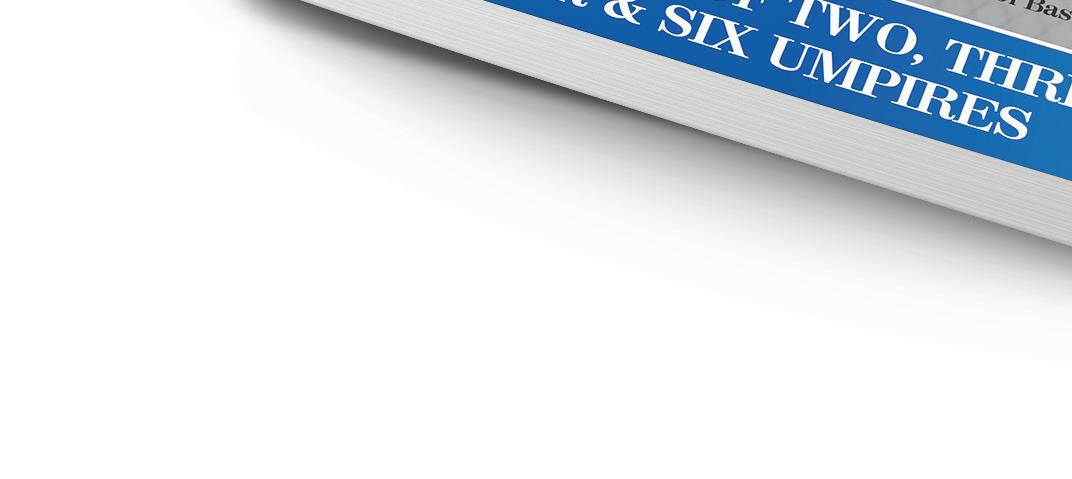
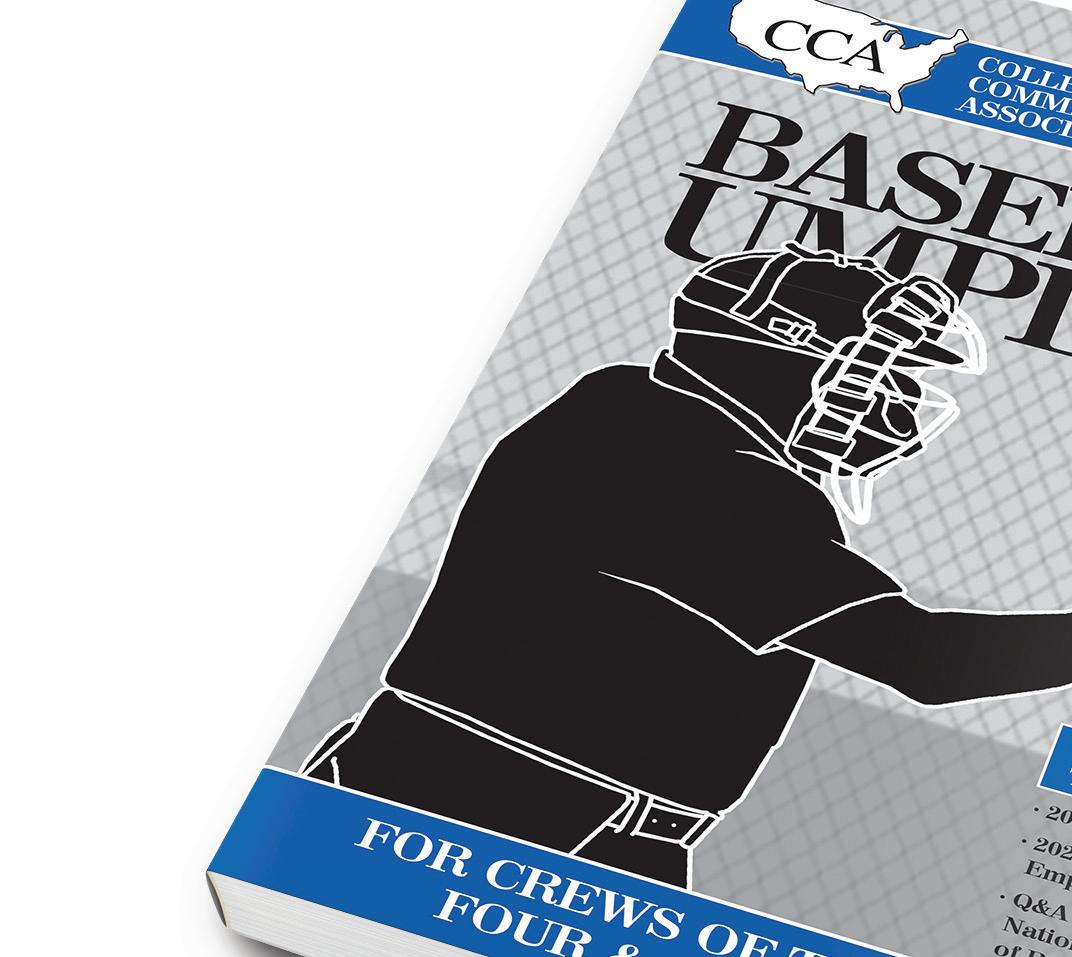
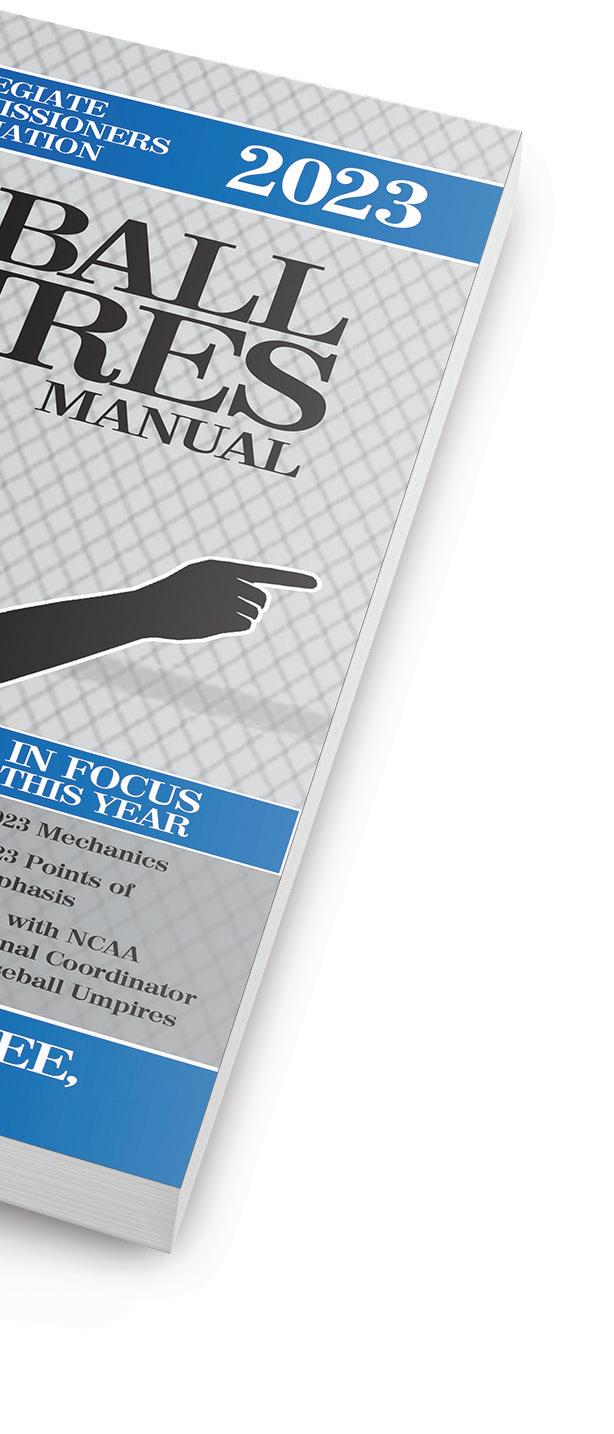
having committed to a tag play at third base, has almost no look at what transpires, but is still responsible for making a ruling from close to 90 feet away. Talk about an “Oh, ---- !” moment.
However, it’s also a great teaching moment, serving as a reminder of how pre-pitch self-talk carries plenty of importance. As the U1, recognize the possibility of this play exists, and mentally prepare yourself to find the best position to rule on all possible plays that may develop. Make the working area your friend and find the best spot where you can rule on plays involving both R2 and R1. Do not overcommit to one play at the expense of another.
It’s not going to be perfect, but in this situation, perfect doesn’t exist. Recognize the flaws in the two-umpire system and work it to the best of your ability. Create a situation where you still have a shot at success instead of having to take a shot in the dark.
R1 BR BR R3 R3 R2 R2 U1 U1 CATCH THROW F9 R1 THE ONLY OFFICIAL COLLEGE MECHANICS MANUAL
$1995 ONLY ALL NEW FOR THE 2023 SEASON! GET YOURS TODAY! // STORE.REFEREE.COM/BASEBALL // 800-733-6100
ONE ON ONE
Keep Additional Coaches Away During Conversations
By Brad Tittrington
Sports are emotional. In the heat of the moment, especially in big games, that emotion is turned up a notch. And when a team perceives a call goes against it, multiple coaches and players may react. In these situations all umpires need to be alert and make sure things don’t get out of hand.
One of the most important things to remember when dealing with these situations is we must do everything we can to limit the amount of participants in the discussion. The head coach should be the only coach we talk to when there is a disagreement about a call. When multiple coaches try to weigh in, it is important we do everything we can to usher the assistant coaches away. When multiple coaches are confronting one umpire, nothing good can come of it.
As partners, it is important to move in quickly and assist in getting additional coaches away from the conversation. A good way of doing so is positioning yourself between the assistant coach and the other umpire and simply directing them away. Verbal commands like, “Coach, step over here with me,” or “Come talk to me over here,” usually work to move the coach out of the way.
If you are the umpire involved in the discussion and multiple coaches approach you, communicate with the head coach and say things like, “Coach, I will only talk to you,” or say to an assistant coach, “Coach, I am only going to communicate with
It is important to only allow one coach to have a conversation with an umpire about a ruling. Pete Tapia, Pomona, Calif., knows he needs to get the second coach away and only deal with the head coach during this discussion.
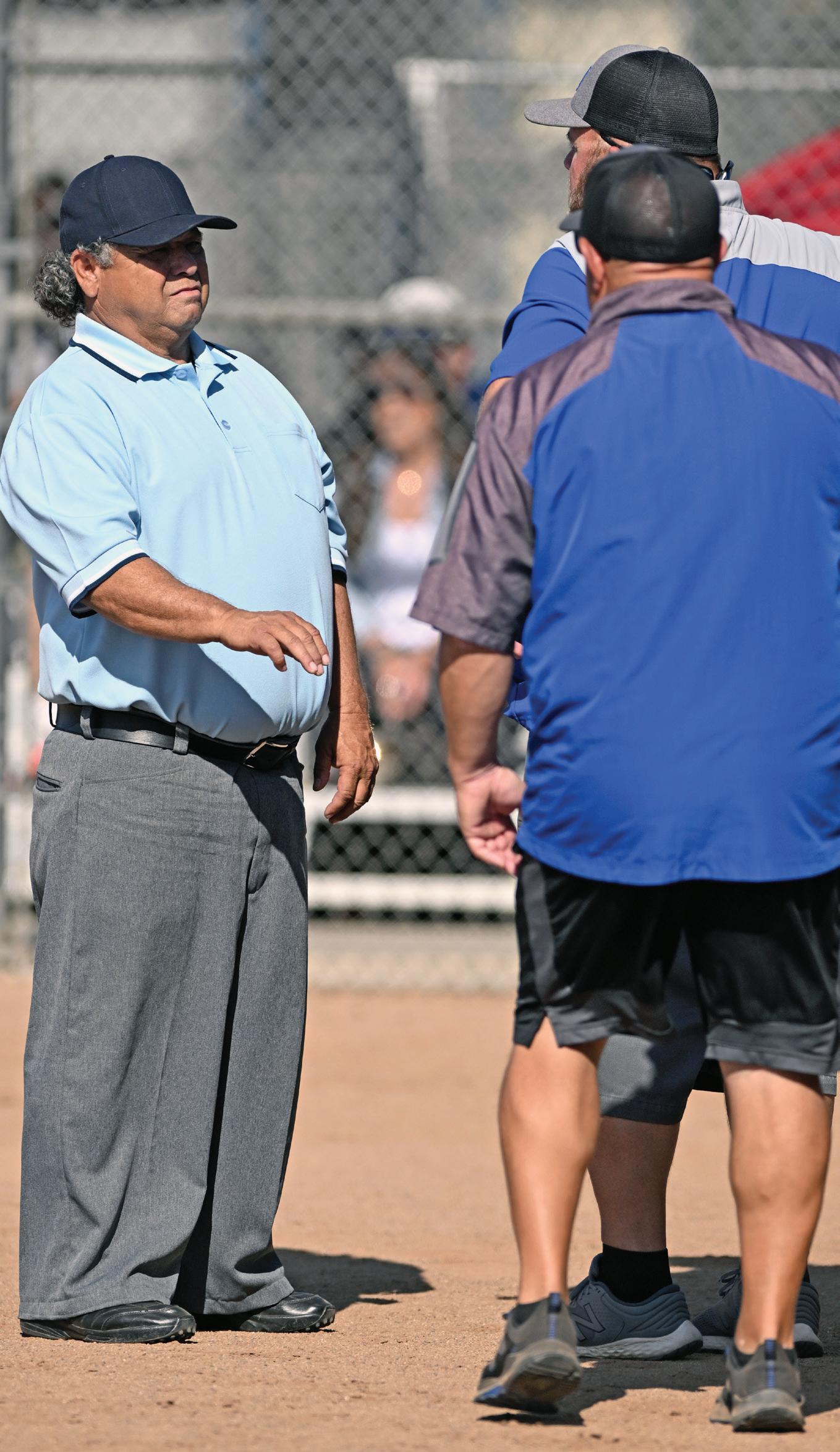
SOFTBALL RULES, MECHANICS, PHILOSOPHY 68 | REFEREE December 2022 EDITOR: BRAD TITTRINGTON btittrington@referee.com
HESTON QUAN
the head coach, please step away.”
Never allow yourself or your partner(s) to have multiple coaches argue or discuss a situation. The calling umpire should only have to discuss the decision with the head coach and the head coach can then relay any messages necessary to the assistant coaches. When multiple coaches are on a single umpire, it is often extremely confrontational and the umpire is now outnumbered. Rarely does it lower the temperature in these situations; often it will quickly explode into a potentially volatile situation if not brought under control quickly.
The one thing to remember in these situations is to never touch a coach. If you are the partner coming in to move a coach away, refrain from putting your hands on a coach. Grabbing an upset coach most likely will make things worse and appear confrontational. Use your body and your voice to direct the coach away. Often, assistant coaches just want to be heard. If you can maneuver them away from the situation, they will be just as happy to voice their displeasure with you as opposed to directing it at the calling umpire.
This does not mean the assistant coach is given carte blanche. If assistant coaches have a legitimate concern, they can talk to you off to the side. However, they do not get complete freedom to bash your partner. One rule of thumb that works relatively well is head coaches get a long leash, assistant coaches get a shorter leash and players get an even shorter leash.
Remember to use the tools in your toolbelt if you need to get a



situation under control. Do not be afraid to give coaches an informal or formal warning and if they continue to cross the line, remove them. Remember, we don’t eject coaches, coaches eject themselves. If an assistant coach or player refuses to move away from a situation or continues to exhibit poor behavior, deal with it. Just because a coach or player is upset with a call does not give them a right to exhibit poor sportsmanship. Hopefully once they are moved away from the situation they will calm down. However, if they continue to violate the three Ps (personal, persistent, public), you need to remove them.
This situation is something that will definitely be talked about in the postgame review. It should also be something discussed during the pregame with your partners. Remember, you are a team on the field and you should have each others’ backs when you take the field. Never allow coaches or players to gang up on your teammate. Whether you agree or disagree with the call, your job in that moment is to protect your partner. Once cooler heads prevail, if your partner needs help on a ruling, that partner can get together with you and discuss the situation. However, when multiple coaches start approaching your partner, the only thing that matters is getting additional coaches away to allow your partner the opportunity to have a discussion with one coach. Brad Tittrington is an associate editor for Referee. He umpires D-I softball and officiates women’s college and high school basketball, college and high school volleyball and high school football.
Watch ’Em Leave
For umpires, one of the most important jobs is watching players leave a base. While some situations are second nature, there are others where umpires need to understand the nuances of the rules to make sure they enforce, or don’t enforce, penalties. Below are some of the times base
umpires need to watch runners leave, the rules involved and the mechanics of those plays.
On the Pitch Base umpires are tasked with watching runners leaving the base on every single pitch. Why? Because
SIDELINE
Venditto Joins WCC
In September, the West Coast Conference (WCC) announced the retirement of Terry Ching, who served as the first WCC coordinator of softball umpires since the conference’s inaugural season in 2014. The conference announced Joanne Venditto to replace Ching. Venditto serves as the softball coordinator of officials for the Pac12 and Big West conferences and serves as a regional advisor for the NCAA Softball Umpire Program.
“We are pleased to add Joanne Venditto to our West Coast Conference team,” WCC Commissioner Gloria Nevarez said. “Joanne brings a wealth of experience and passion to the position.”
QUICKTIP
Practice your signals in front of a mirror. Most umpires don’t know what their signals look like unless they’ve seen themselves on video. Practicing in front of a mirror helps you see exactly what your signaling looks like and allows you to practice until you get it right. Practicing will allow you to develop muscle memory so when you need to make the signal in a game, it will come naturally, your signal will look correct and it will build credibility.
TOOLS
Robic Universal Game Timer

Are you looking for a way to keep track of the time in time-limit games or track time between innings? Then the Robic Universal Official Game Timer is perfect for you. The timer fits securely on your belt and allows you to set both in-game time intervals as well as complete time without needing multiple devices. It features onebutton touch start and stop reset, allows multiple countdown times and has a strong vibrating signal at the completion of time. It can be found at your favorite officials’ gear retailer and sells for $39.99.
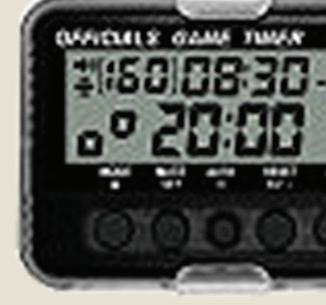
REFEREE December 2022 | 69
TEST YOURSELF
Each of the following includes a situation and possible answer(s). Decide which are correct for USA, NFHS, NCAA or USSSA rules and which might vary. Solutions: p. 85
1. With R2 on second base, B2 singles to center field. As R2 nears third, the third-base coach leaves the coach’s box in foul territory toward home to signal R2 to attempt to score. F8’s errant throw strikes the third-base coach in foul ground just outside of the coach’s box. The coach did not intentionally get hit by the ball.
a. The ball is live and in play.
b. The ball is dead, R2 is out due to interference by the base coach and B2 is placed on the last base touched at the time of interference.
c. The ball is delayed-dead and the umpires may place runners based on their judgment once play ceases.
2. B1 bats a ball in front of the plate. F2 fields the ball and starts to throw to F3 at first base. However, F2 withholds the throw because B1 is running completely in fair territory about 15 feet from first base.
a. The ball is dead and B1 is ruled out for interference.
b. The ball is delayed-dead and it is the umpire’s judgment if B1’s actions prevented the out at first.
c. The ball is live and play continues as a throw must be made in order to have interference.
3. R2 is on second with one out when B3 singles to left field. F7 throws to F2, who fields the ball in a crouched position along the third-base line just to the left of home plate. R2 avoids F2’s tag by hurdling over F2 and landing on the plate.
a. Legal play and R2 scores.
b. R2 is ruled out and the run does not score.
c. R2’s run counts but R2 is ejected.
d. R2 is ruled out and ejected.
4. With R1 on first, B2 hits the ball to right field. On the swing, B2 makes contact with F2’s glove. B2 reaches first base safely and R1 is thrown out at third base.
a. The ball is dead immediately on the swing due to catcher’s obstruction. B2 is awarded first base and R1 is awarded second base.
b. Delayed-dead ball is signaled. Once B2 reached first and R1 reached second, catcher’s obstruction is canceled and all play stands.
c. Delayed-dead ball on catcher’s obstruction. At the end of the play, the offensive coach has the option of taking the result of the play or B2 awarded first and R1 awarded second.
failure to maintain contact with the base prior to the release of the pitch results in a possible penalty. In NFHS, USA Softball and USSSA, if a runner leaves the base prior to the pitcher releasing the ball, it is an immediate dead ball, “no pitch” is declared and that runner is out (NFHS 8-6-18; USA Softball 8-7s; USSSA 8-18k). In NCAA, it is a delayed-dead ball and the defensive coach has the option of taking the result of the play or “no pitch” is declared and the runner is out (12.14.2).
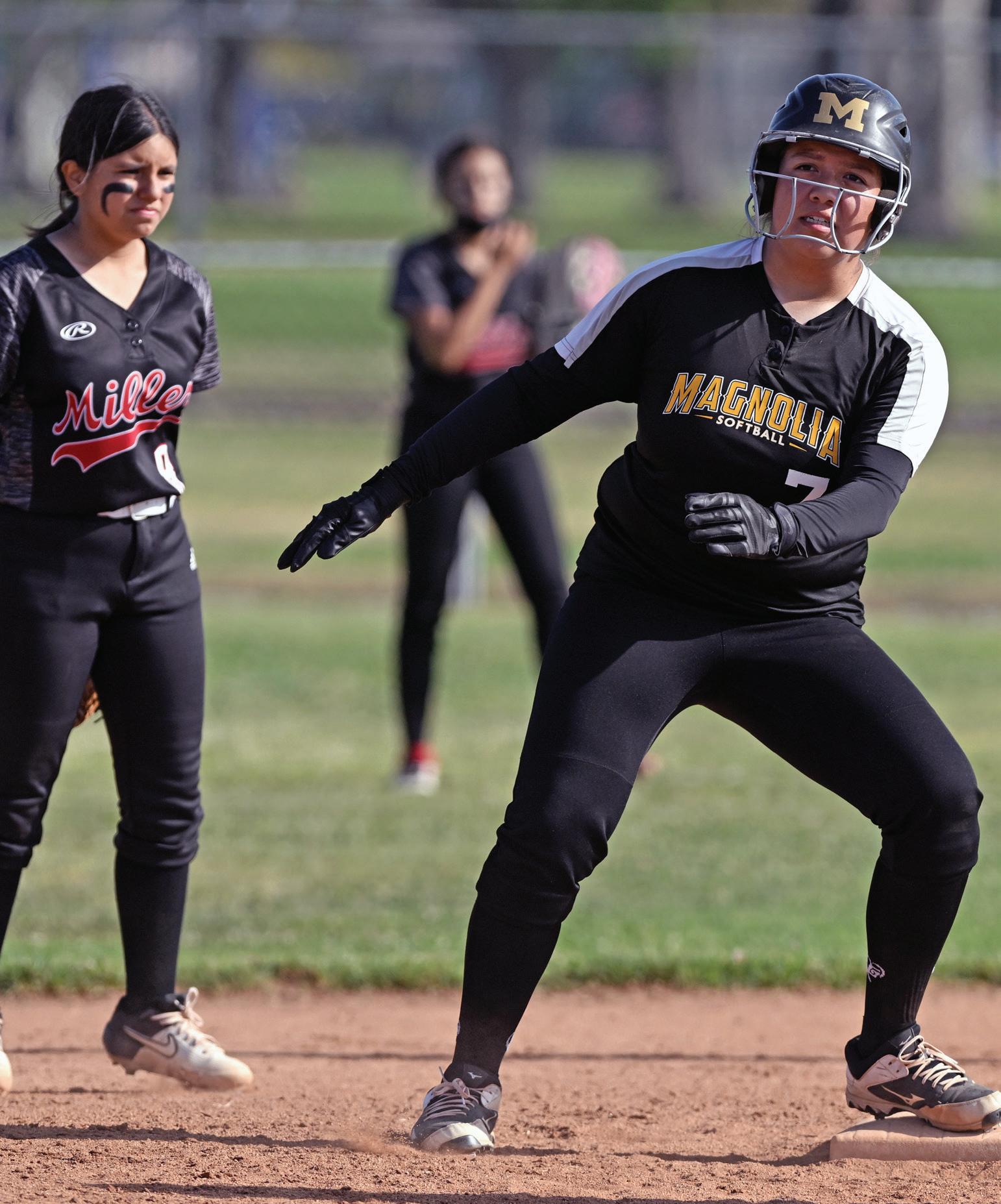
It is important for base umpires to get an angle to see the release of the pitch and also see when the runner’s foot left the bag. Many baserunners will have one foot on the edge of the
bag closest to the next base and then have the other foot behind the bag. In these instances, runners may start their movement to the next base, but still have a foot in contact with the bag. Don’t let that initial movement fool you. It is important to know when the runner actually loses contact with the bag so as not to falsely penalize the runner. When there are multiple runners on, do your best to get an angle to see both runners, but the lead runner should be the priority. The one rule of thumb on this play to consider is if in doubt, the runner did not violate the rule. Never guess an out.
Tagging Up
The most important thing for
SOFTBALL 70 | REFEREE December 2022
umpires when determining if a runner left too early while attempting to tag up is getting the proper angle. All four codes agree when a runner can legally leave the base on a fly ball when attempting to tag up. Runners may leave as soon as the ball is first touched by a fielder and it is not the responsibility of the runner to wait for the ball to be caught (NFHS 8-66; NCAA 12.10.14; USA Softball 8-7f; USSSA 8-18j). If a fielder bobbles a ball, many coaches will attempt to appeal the runner left early because those coaches will wait until the ball is caught before shifting their eyes to see the runner. A runner may already be a step or two off the bag and it will appear to the coach the runner left
early. It is imperative the base umpire has the proper angle to see the first touching of the ball and know the rule allows the runner to leave as soon as the ball is contacted. Umpires should work as hard as possible to get a zero angle, meaning they are in a direct line with both the runner tagging and the touch of the ball to see all elements of the play.
One other rule involving tagging up that umpires need to be aware of is a baserunner may not start behind the bag in order to get a running start on a tag up (NFHS 8-6-20; NCAA 12.10.14; USA Softball 8-7v; USSSA 8-18r).
Ball in Circle
When the ball goes back to the
There are many instances in a game when umpires need to know exactly when a runner leaves a base. Mary Ann Melove, San Clemente, Calif., keeps an eye on the baserunner to make sure no rules are violated.
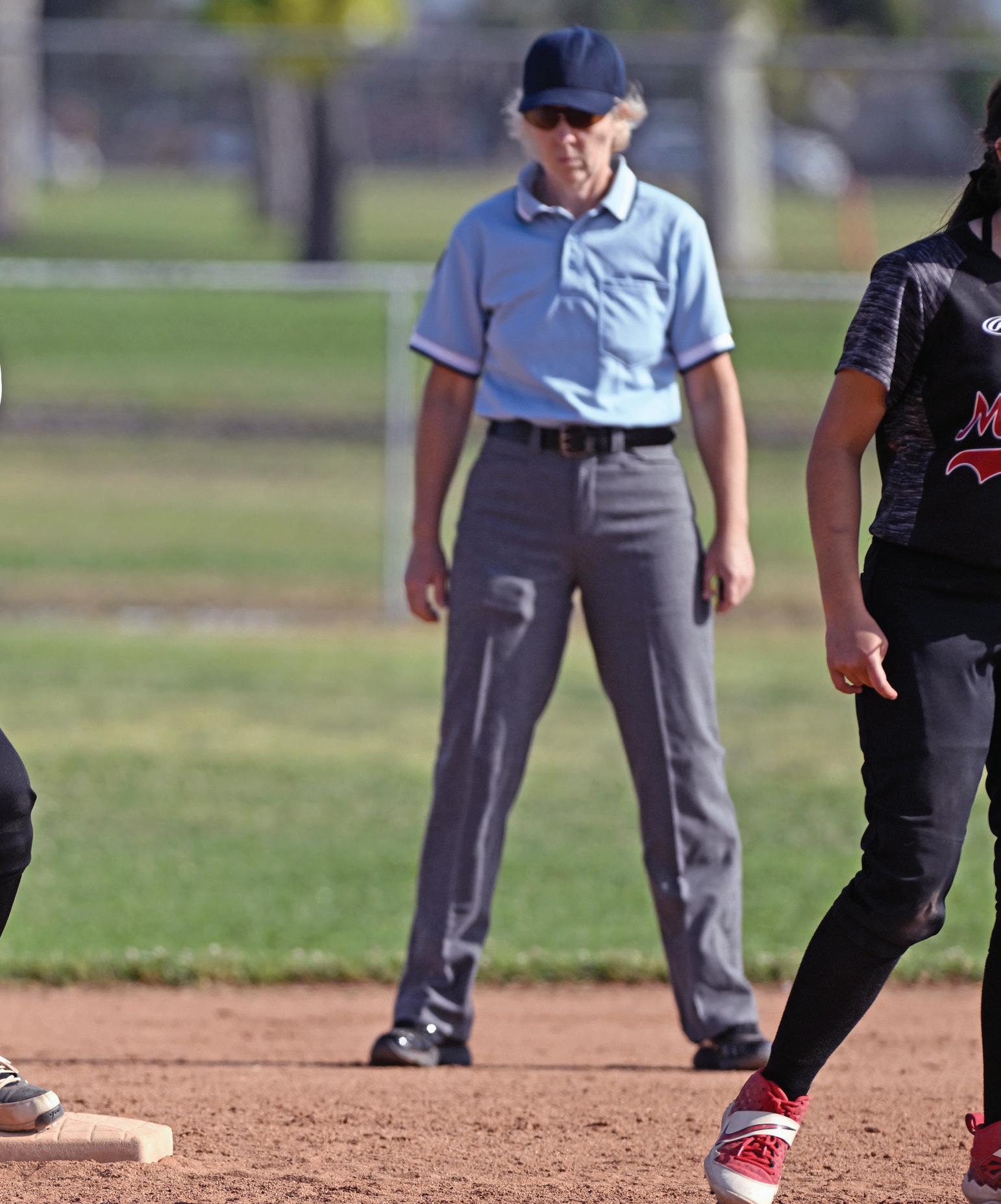
circle, umpires need to know the location of the baserunners. This is why it is imperative umpires do not advance to their next position until the ball is in the circle and all runners have stopped on a base. The first thing umpires must do is make sure the pitcher is the one with the ball in the circle. Often, the first baseman or another infielder will receive the ball while the pitcher is backing up third base or the plate. Don’t be in a rush to assume the player holding the ball is the pitcher. Also be aware there are different rules of what constitutes “control” in the four codes. In NFHS, NCAA and USSSA, pitcher’s possession includes the ball in the glove, the ball held between the pitcher’s knees or legs, under the pitcher’s chin or under the pitcher’s arm pit (NFHS 8.7.1B; NCAA 12.16.1; USSSA 8-2). In USA Softball, the pitcher must have the ball in the hand or the glove to have control (R/S 34k).
Once the pitcher has control of the ball in the circle — which is defined as having both feet within or on the lines of the circle — a runner may not leave the base. If the runner leaves the base, the runner is out. Umpires should remain in their current position until they see the pitcher in control of the ball and see all runners stopped on bases. Once this criteria is met, umpires should move to their next position while keeping an eye on the runner and the pitcher to make sure runners don’t vacate their bases and the pitcher doesn’t leave the circle, lose control of the ball or make a play.
It’s important to understand the rules for baserunners leaving the base, but it is also important to know mechanics and angles to see everything. Slow down, read and react to the play, get in proper position, and nail these calls that could potentially be gamechangers.
REFEREE December 2022 | 71 HESTON QUAN
CASEPLAYS
Pitcher in Circle
Play: With R1 on first, the pitcher receives the ball back from the catcher after a pitch. The pitcher has returned to the circle, having both feet completely inside the circle. She then takes the glove off her hand and puts the glove between her knees to fix her ponytail. R1 leaves first base and advances to second base. Ruling: In NFHS, NCAA and USSSA, pitcher’s possession includes the ball in the glove, the ball held between the pitcher’s knees or legs, under the pitcher’s chin or under the pitcher’s armpit. In these three codes, the ball would be dead and the runner would be out for violating the look-back rule (NFHS 8.7.1B; NCAA 12.16.1; USSSA 8-2). In USA Softball, the ball must be in the hand or glove and having the ball between the knees is not considered possession. The ball would remain live and all play stands (R/S 34k).
Removed Pitcher Returns
Play: Team A’s starting pitcher, A1, is removed from the pitching position in the sixth inning with two outs and replaced by A2. After A2 walks three straight batters, team A’s coach asks to put A1 back into the pitching position. Ruling: Legal in all four codes. However, A1 is prohibited from throwing any warmup pitches when returning in the same half-inning (NFHS 6-2-5 Note 1; NCAA 10.19.3.4; USA Softball 6A-9; USSSA 6-1l).
Injured Player
Play: With no outs and the bases loaded, B4 hits a line drive back at the pitcher. The ball hits the pitcher in the head, rendering the pitcher unconscious. The ball ricochets into the outfield. Ruling: In all codes, the umpire should call time for the safety of the injured player and award bases in his/her judgment the batter and runners would have attained had time not been called (NFHS 5-2-1d Note; NCAA 6.11.3.3 Exc.; USA Softball 4-10, R/S 29; USSSA 5-9a).
R2, R3 With 2 U’s
Withrunners on second and third, there is a decent amount of communication and movement for a crew of two umpires when there is an extra-base hit to the outfield.
First, let’s look at the base umpire. In this scenario, the base umpire needs to move into the diamond, as shown in the MechaniGram, in order to see the batter-runner touch first base. The base umpire should also watch for potential obstruction against R2 as R2 advances toward third. The base umpire also needs to allow the runner to clear the basepath before trying to make a beeline into the diamond. The last thing the base umpire wants to do is cause a collision or force R2 to alter her path. Keep an eye on the runner, allow her to pass and then move into the diamond to focus on the batterrunner. The base umpire will take the batter-runner all the way to third base in this instance.
The plate umpire should move into the holding zone and watch R3 touch home plate and then watch to make sure R2 touches third base. As R2 rounds third base and heads for the plate, the plate umpire should retreat
back to the plate for any plays on R2 at the plate, as well as watch R2 touch the plate if no play is imminent.
Because of the potential of two umpires being at third base, the umpires must communicate. While the plate umpire has plays at third involving R2 and R3, the base umpire has all plays at third involving the batter-runner. If the batter-runner rounds second and starts for third, the base umpire should be able to see out of his or her periphery if the plate umpire has started moving up to third base. If the plate umpire starts to move, the base umpire should say, “I’ve got third,” so the plate umpire is aware the call belongs to the base umpire.
While some plate umpires pregame taking third in this scenario, that is not the prescribed mechanic. The only time the plate umpire should take third in this situation is if the base umpire somehow forgets to take third, gets injured in the middle of the diamond or otherwise gets trapped and can’t make it to third. In those instances, the plate umpire should communicate he or she is taking the play at third, a deviation from the normal mechanic.
R3 R2 B B B P P SOFTBALL 72 | REFEREE December 2022
Move Them Back
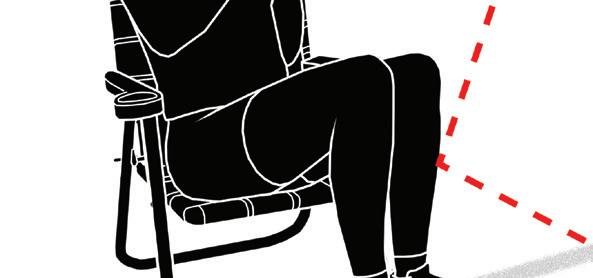
While it would be nice to work every game in a beautiful stadium with well-defined out-ofplay areas and no spectators near the field of play, this is not reality. Many schools and parks are not enclosed and it can cause headaches for umpires when having to deal with potential blocked balls.
The most important thing for umpires is to walk the facility prior to the game to see what you are in for that day. If there are spectators near an out-of-play line, as shown in the PlayPic, have them move back. If you need to enlist the onsite administrator to do it, make sure the lines are free and clear of spectators. This is not only important so you don’t have to deal with spectator interference, it is also a safety rule as fielders could potentially contact spectators who have encroached onto the field.
If a fan does encroach and is hit by
a live ball, you need to be prepared to enforce the rules. Thankfully, all the codes are in agreement when it comes to spectator interference.
If a spectator is in the field of play and interferes and it did not prevent a fielder from making a play, the ball is immediately dead and it is umpires’ judgment where the runners would have ended up had the interference not occurred (NFHS 8-4-3j; NCAA 12.12.6.2; USA Softball 8-5l; USSSA 8-14e-1).












If a spectator reaches into the field of play and interferes with a fielder making a play on a fly ball, the ball is immediately dead, the batter-runner is out and umpires will place runners on the bases they would have attained had the interference not occured (NFHS 8-2-12; 12.12.6.2; USA Softball 8-2o; 8-14e-1).


It does not matter what level of play you are working on that
particular day, umpires must be diligent in keeping spectators behind out-of-play lines. Do not get complacent and assume no batted or thrown balls will end up in the vicinity of the fans down the line. Take care of the problem before the game starts so it doesn’t become a bigger problem once the first pitch is thrown.
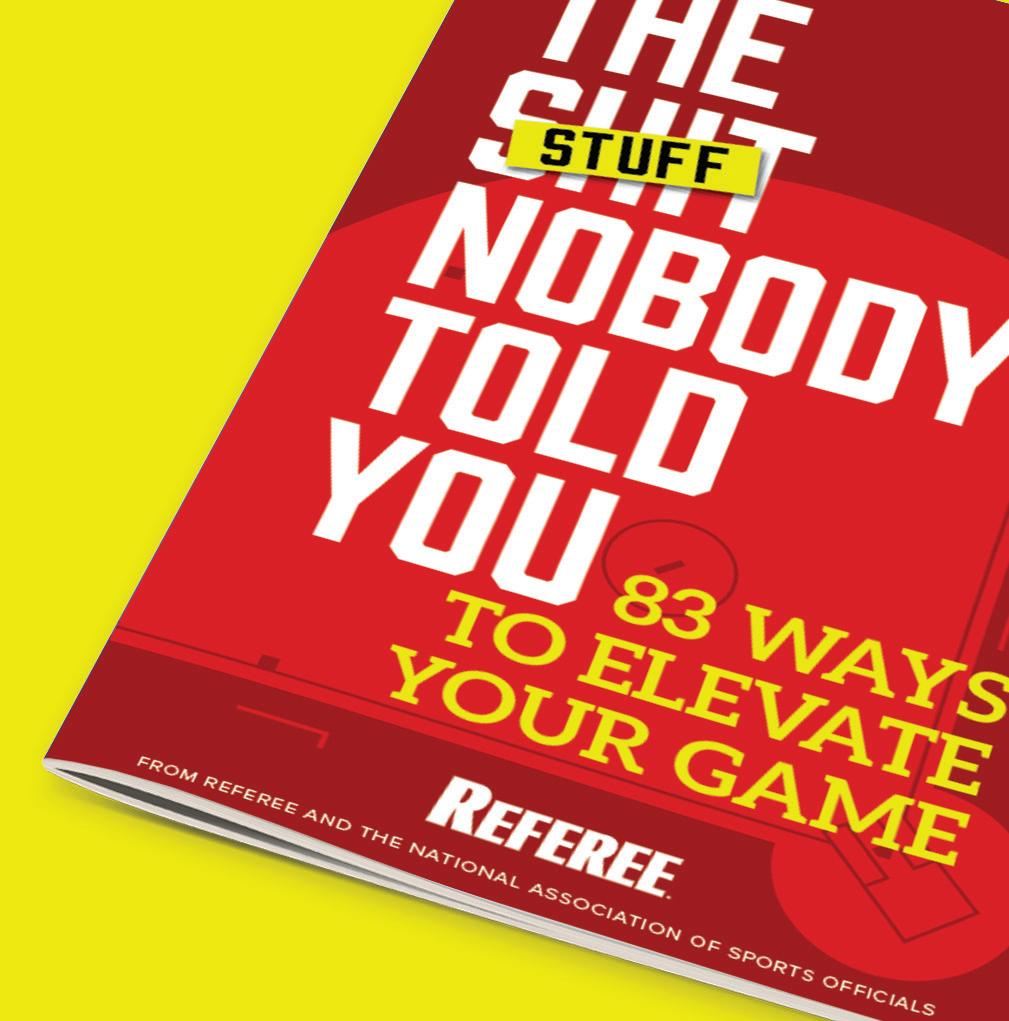
No matter how many games you’ve worked there’s still STUFF nobody told you. Until now! Referee has collected all the STUFF you need to know to polish your game and present a professional image. Don’t work another game without all this valuable STUFF. learn more at STORE. /SOFTball *NASO member discount available. $395* DIGITAL $695 COMBO PRINT $595* Size: 5.5” x 8.5” Pages: 32 SOFTBALL coming soon!
PROFILES PERSONALITIES PLUS
Sailing Off Into Retirement
By Steven L. Tietz
In early September, Jim Hennessey, 85, a retired softball and baseball umpire from Brookline, Mass., took a boat ride with family around Cape Cod and Martha’s Vineyard. He had a good time. “Everybody should put it on their bucket list,” he said.
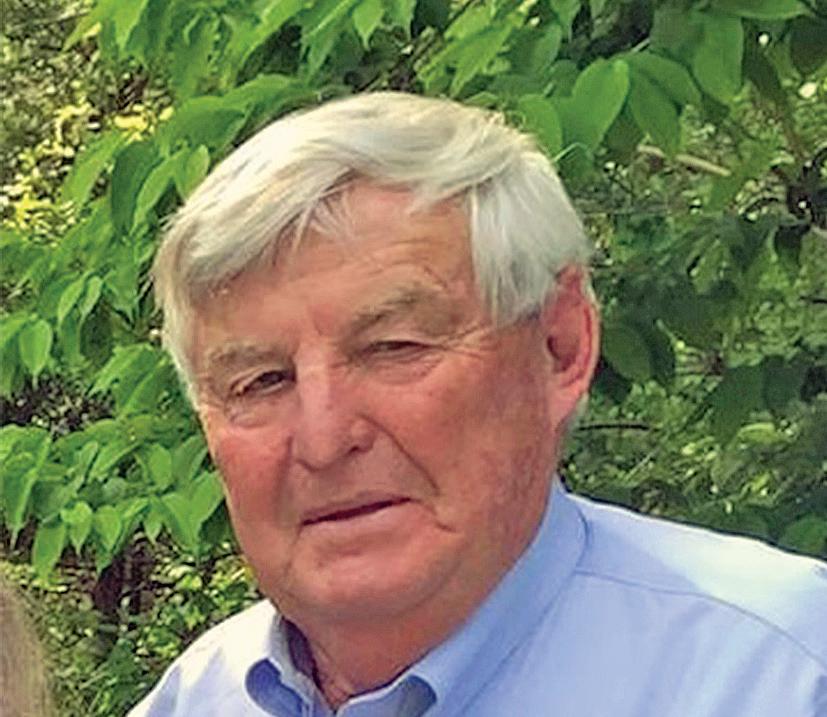
Such activities have taken the place of officiating now and
House of Representatives.
Furthermore, the league announced it has a new championship trophy named “The Henna,” the nickname everyone has for Hennessey. He gave a speech and more celebration followed afterward.
“I was very humbled by it all,” Hennessey said. “All I ever did was just try to do the best job possible and not make it about me.”
Hennessey grew up in Brookline and led the 1954 state title prep football team. He was a star athlete at nearby Northeastern University and earned a degree in education in 1959.
He came back to Brookline to teach high school English, history and physical education for 42 years while also coaching football and basketball.
He and his wife, Carol, raised six children (one a field hockey assigner), and now have 14 grandchildren and three great-grandchildren.
He Makes the Calls and Answers Them
Jim Hennessey umpired more than 7,000 baseball and softball games. He retired after a game in August, the last in a 63-year career.
people are a little bit sad about it, as Hennessey is one of those rare humans, a popular umpire who worked more than 7,000 games in a 63-year career.
“I always thought that they would have to take me out feet first,” he said, “because I still feel healthy. But it was time.”
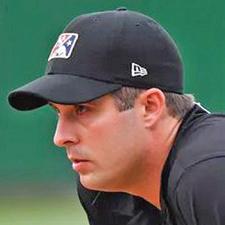
Hennessey’s final effort came in late August. It was a Brookline men’s softball game, and he made the usual hard hour-and-a-half road trip over the turnpike.
The contest was well-attended and well-covered by media. Afterward, a local politician read a letter of commendation for Hennessey from the Massachusetts
Hennessey started officiating in 1959, mostly local baseball and softball. At his peak, it was five nights a week. He gradually slowed down to two per week in recent years.
“But I stayed in good shape,” he said. “I walk a lot.”
In short, he was a reliable presence, and his officiating motto was simple. “Ball, strike, fair, foul, out, safe,” he said. “If you say anything else, you’re probably saying too much.”
Even though he remains sharp, the long commutes made him think about retirement. Hip surgery last spring accelerated those thoughts, though he wanted to go out his way.
Carol was honest with him.
“It’s time, Poppa. It’s time,” she said.
He will miss all the people he’s worked with, but he will now have more time for the grandkids, trips to Florida and boat rides.
“I’m a local guy, born and bred here,” he said. “It’s been a great experience.”
Steven L. Tietz is an award-winning journalist from Milwaukee.
Lorenz Evans is the consummate fill-in, both on the baseball field and in the political landscape. He answered the call Aug. 19-21 when the Midwest League needed an umpire for a weekend series between Peoria and Quad Cities. The former minor league umpire also answered the call when Morton, Ill., needed a village clerk in 2021. “There was no one on the ballot,” Evans told the Peoria Journal Star. “By law, Morton had to have the position filled. I was an elected write-in. I only needed two votes to get in.” Evans made his minor league umpiring debut in 2017, worked the Midwest League All-Star Game and championship series and was promoted to the Florida State League in 2018 before taking a job with his college fraternity.
PEORIA JOURNAL STAR

A Loyal Serviceman and Official to His Corps
Jason Schneider has been able to enjoy his two loves: serving in the military and officiating. A special hands representative for the 76th Aerial Port Squadron, he has grown to enjoy officiating in his spare time. Schneider started officiating football in 2018. He soon added basketball and baseball. “I made a call to the guy who runs the college baseball umpires association, I sent in my application fee and in 2017 I started my first season with college baseball,” he said. After retirement, Schneider looks forward to spending more time with his son and seeing where baseball will take him with hopes of consistently umpiring Division I college baseball in the future.
Do you know a person or group who should be profiled?
Send info to us at profiles@referee.com
PHOTO CREDITS COURTESY JIM HENNESSEY/PEORIA JOURNAL STAR/NILOA
Lorenz Evans Morton, Ill.
Jason Schneider Youngstown, Ohio
74 | REFEREE December 2022
Legacy NASO is a program that makes it easy for you to bequest a gift through your will or trust that ensures you can take care of your loved ones first, and then leave whatever else you choose to make a big difference in the future of sports officiating.

Sports Officiating has been a big part of your life. Now you can make it a part of your legacy.
LEARN MORE AT NASO.ORG/LEGACY OR CALL 800-733-6100
SHOTCLOCKS THE STATE OF
CALIFORNIA
Duration




35 (boys)/30 (girls)
Season Implemented 1997-98 (boys)/ 1976-77 (girls)
CONNECTICUT

Duration 35 (both)
Season Implemented *2023-24
DISTRICT OF COLUMBIA
Duration 30 (both)
Season Implemented 2016-17
FLORIDA
Duration 35 (both)
Season Implemented *2022-23 (optional but recommended)
MASSACHUSETTS
Duration 35 (both)
Season Implemented 2022-23

OREGON
Initially used 30-se cond clo ck; switched to 35 seconds for 2022-23 season to be compliant with NFHS rules.
MINNESOTA


GEORGIA
Duration 35 (both)
Season Implemented *2022-23
RHODE ISLAND

Duration 35 (both)
Season Implemented *2023-24
Duration 35 (both)
Season Implemented 1986-87
*Applies to all levels unless noted
MONTANA
Duration 35 (both)

Season Implemented *2022-23 (optional) *2023-24 (mandatory)

Has used several different durations since becoming one of the first states to implement it; adopted the new NFHS standard prior to the 2020-21 season.
Duration 35 (both)
Season Implemented *2022-23




SOUTH CAROLINA

Duration 35 (both)
Season Implemented 2022-23 (limited to invitationals and showcases)
|
The NFHS has approved a 35-second shot clock for use by state adoption beginning this season. However, some states have used different unapproved versions of the shot clock for the past three decades and may not be prepared to change how they employ it now that the NFHS is on board. As such, those states remain out of NFHS compliance and are not allowed a seat on the NFHS Basketball Rules Committee.
BY SCOTT TITTRINGTON
HAWAII
IDAHO
Duration 35 (both)
Season Implemented 2022-23 (State tournaments)
Duration 35 (both)
Season Implemented 2023-24 (State tournaments; regular season and district tournaments up to the individual conferences)
NEBRASKA
Duration 35 (both)
Season Implemented 2022-23 (Class A)

ILLINOIS
ARIZONA
Duration 35 (both)
Season Implemented 2022-23 (Conferences 6A through 3A)
IOWA
Duration 35 (both)
Season Implemented 2022-23 (limited to invitationals and showcases)
NEW YORK
Duration








35 (boys)/30 (girls)

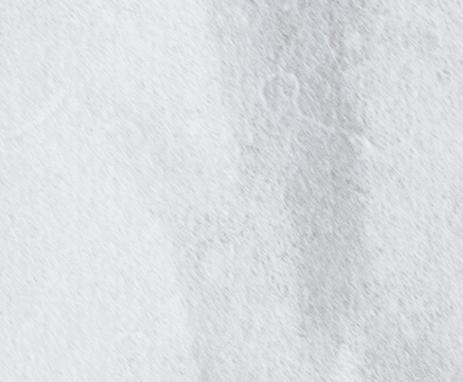










Season Implemented Records unclear; approx. 1990s












Duration 35 (both)




Season Implemented *2022-23
ARKANSAS


Duration 35 (both)



Season Implemented *2022-23

SOUTH DAKOTA
Duration 35 (both)






Season Implemented 2008-09





Implemented clock for largest Class AA schools before extending it to Class A (201415)and Class B (2017-18).


UTAH
NORTH DAKOTA



MARYLAND

Duration 35 (boys)/30 (girls)





Season Implemented Records unclear; approx. 1990s (girls); 2017 (boys)

Duration 35 (both)
Season Implemented *2022-23
Duration 35 (boys)/30 (girls)
Season Implemented 1996-97 (boys)/ 2001-02 (girls)
Initially adopted clock only at the Class A level; did not use in Class B until 2011-12 season.
WASHINGTON
Duration 30 (both)
Season Implemented 2020-21
Used 35-second clock in boys’ games starting between 2009-10 and 201920 seasons.
REFEREE December 2022 | 77
YOUR VERY OWN SIX PACK
A Half-Dozen Great Tips to Elevate Your Game
By the Referee Editors
As odd (or unfair) as it seems, you’re often judged by little things you do that get noticed rather than your two most crucial skills. While there is no substitute for strong rules knowledge and solid mechanics, the best officials also possess qualities independent of those skills. They have a demeanor or confidence about them that sets them apart from most
officials. How can you rise above the rest and, with minimal effort, make yourself look better to everyone who views your performance?
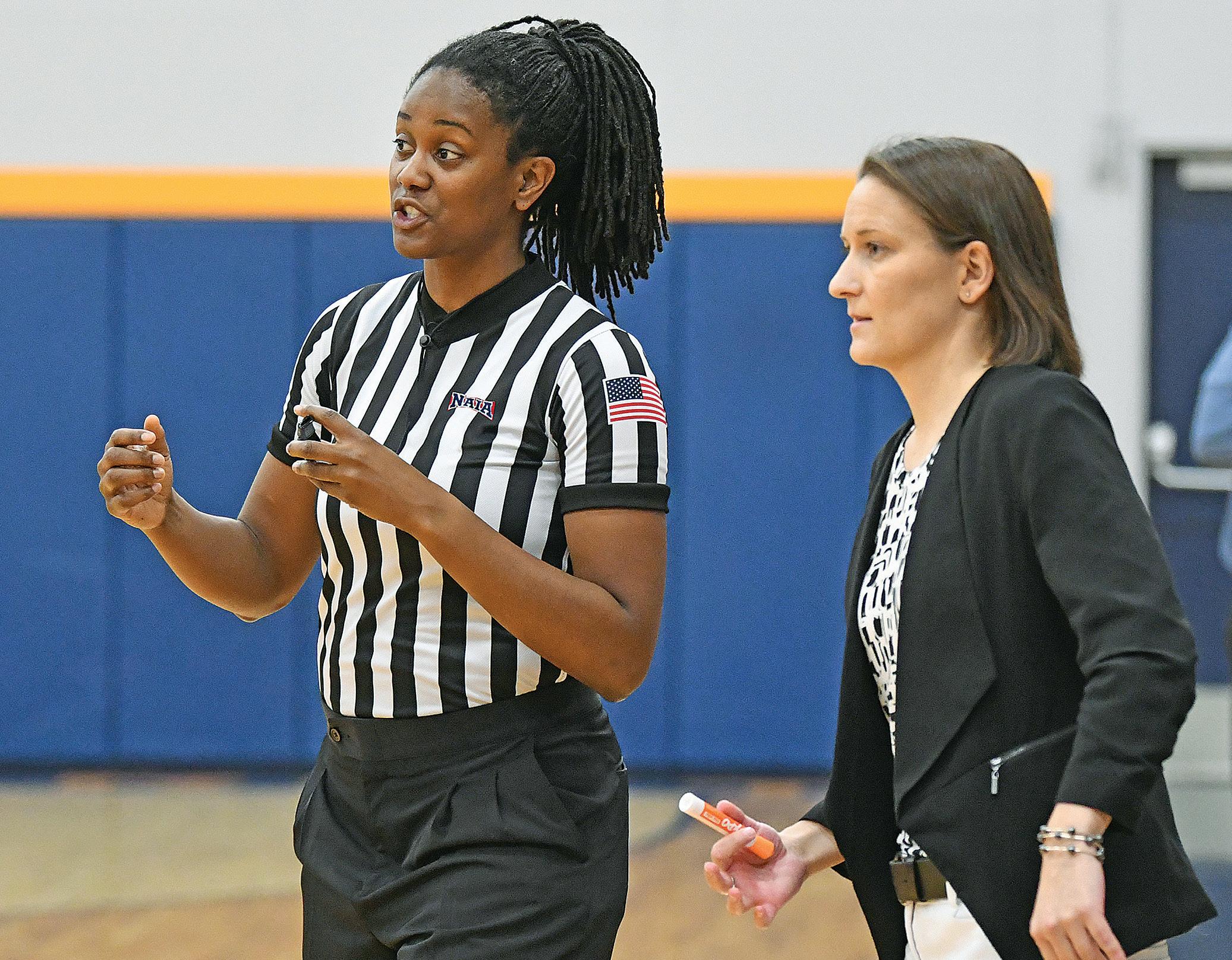
The following is a compilation of six “little things” you can do starting with your next assignment that will enhance your performance, improve your image, increase your confidence and simply make you a better official.
1.Movement. Hustle is simply a matter of being dedicated to being in
position and looking interested and athletic during your games. If you know where to go, it’s usually a lot easier to get there.
Get as close to the ideal position as possible, while ensuring:
•You are not running when the play actually happens. Bouncing eyes distort your vision.
•You don’t interfere with the play. It is possible to be too close.
•You don’t leave a potential
ALL SPORTS FOR ALL SPORTS, ALL LEVELS 78 | REFEREE December 2022 EDITOR: JEFFREY STERN jstern@referee.com DALE GARVEY
By speaking to the coach in a respectful and confident manner, Jessica Wilkinson, Seattle, is boosting her credibility and image.
secondary play uncovered. If you’re working alone, that is essential.
2.Appearance. One of the few areas in officiating in which you have complete control is your appearance. You have little to no control over how close the game will be or the manner in which it is played, but if you look like you don’t care how others see you, you have no one to blame but yourself.
No one should underestimate the value of appearance. Buy the standard apparel and equipment for your level of play and wear them properly. Iron your shirts and pants and shine your shoes. Dress professionally when arriving at your locker room before the game. Looks are seldom deceiving; make sure your first impression is one you don’t have to overcome.
3.Convey confidence through your speech. Speak in a confident yet friendly tone. Give a firm handshake when introducing yourself to players and coaches. Cover everything you need to cover in the pregame, offer to answer any questions (that indicates a willingness for two-way communication) and always adjourn with a sincere “good luck” to all parties.
Too often, officials look upon pregame meetings as a formality rather than an opportunity. Transmit enthusiasm about the game ahead and it often extends to those around you. The reverse can also be true. If you give off a vibe you don’t want to be there, everyone will pick up on the negativity and you’ll get things off on the wrong foot.
4.Signal properly. Using proper mechanics is fundamental to good officiating, but signaling effectively is probably the area requiring the most practice on your part. How to make a call can make or break you as an official. Consider this example: There is a close call at home plate in a tie game. Plate umpire Pat makes the right decision, but makes a very unsure signal, combined with a voice barely audible to the participants. Plate umpire Jody makes the wrong decision, but uses a loud, confident voice, followed by a demonstrative signal.
Which umpire is going to catch the most heat? You can make the argument both are going to hear about it. You can also argue it is better to be the umpire who was right. But the bottom line is in nearly all instances, the more vocal and confident official will be perceived as the better of the two.
Practice your signals in front of a mirror until they are crisp and sharp every time.
5.Address others respectfully. When you talk to players or coaches, be polite and respectful. There are varying opinions regarding addressing coaches by their first names. You can never go wrong with “Coach.” Avoid referring to one coach by name but not the other; it can give the unfamiliar coach the impression the opponent is getting favorable treatment.
Additionally, such forms of address as “buddy,” “pal,” or “kid” are disrespectful and flippant and should never be used. Refer to players by their number or position. Respect is a two-way street and must be given before it is received.
6.Make eye contact. Looking people in the eye when you talk to them adds to the perception you’re confident and in control, not to mention it is polite and respectful — qualities that are often reciprocated if demonstrated.
While there are game situations when eye contact is not possible, or even necessary, the idea is never to avoid such contact. People don’t always notice or remember when you maintain eye contact with them, but they absolutely know when you avoid it.
If you really want to be a better official, you can. The little things are often the difference between good and great officials. The best are those who combine a vast knowledge of rules and excellent mechanics with the subtle yet noticeable habits and skills you’ve just read about.
Strive to be that kind of official. By going that extra mile, by improving just a little bit at a time, it shows you are willing to give an effort and you care about our avocation.
TOOLS

Ringside
Ringside is a new book from former official and NASO board member Marc Ratner. From the gridiron as a collegiate official to the bright lights of the UFC, Ratner has been an influential figure in sports for more than 50 years.

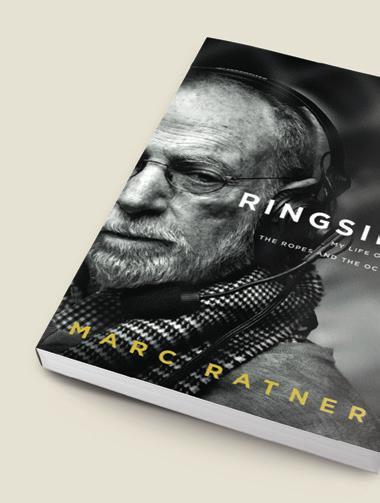
From his dealings with former heavyweight boxing champions Sonny Liston and Mike Tyson to his induction into the UFC Hall of Fame, Ratner relates his journey to the top. Available from retailers such as Amazon.com, the book sells for $14.99.
QUICKTIP
If you told a coach you’d check on a rule, do it. Get back to him or her as quickly as possible. Don’t gloat if your original ruling proves correct; explain the ruling as if you had nothing to do with the call. If you made the wrong call, admit it. Most coaches respect officials who admit errors, and doing so adds to your credibility. Caution: Too many errors is a problem.







THEY SAID IT
“Good eyes, plenty of courage — mental and physical — a thorough knowledge of the playing rules, more than average portions of fair play, common sense and diplomacy, an entire lack of vindictiveness, plenty of confidence in your ability.”
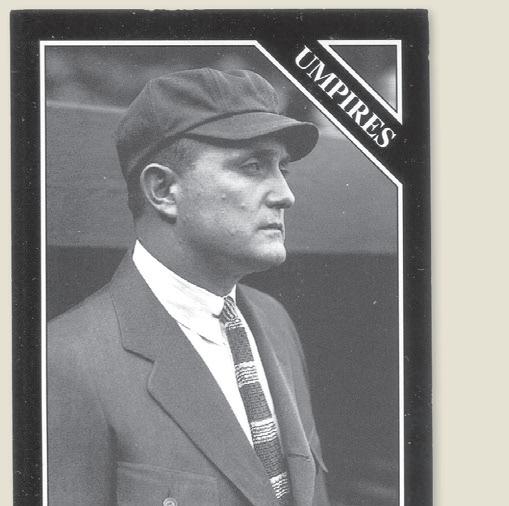
— Hall of Famer Billy Evans, when asked what qualities make a good umpire
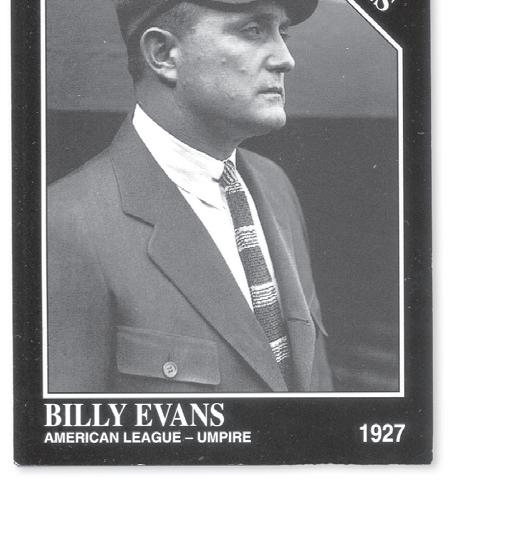
Review, Renew and Recover
So the season is over. You’re off for a few months and you’re enjoying some well-earned time away from rude fans, angry coaches and obstinate players.
It’s a great time to look back on the season just finished. Your games are as fresh in your mind as they ever will be. As playoff games are wrapped up and championships are awarded, the time for selfassessment becomes more important than ever. Here are some ideas to help you evaluate your season and prepare for the next.
How did you hold up physically? After a full schedule of regular-season and postseason contests, are your legs sore and tired? If you noticed a gradual breakdown in your ankles or knees, different methods of fitness preparation for next season might be necessary. If your lower back became a problem, work on ways to increase your flexibility before next season rolls around.
How did you hold up mentally? If the season became a grind in the waning months and you noticed yourself wishing you had a night off, plan next season’s schedule accordingly. It’s only natural to want to work as many games as possible, especially with the ongoing shortage of officials, but was it feasible? Did your work or home life suffer? If so, don’t be afraid to schedule some appropriate off nights for next season. Schedule an entire weekend off and use it as a way to re-energize yourself for the stretch run.
Were you faced with any crazy situations? Document the times you were unsure of yourself. It might have been rule-based. If your rules study needs work, make a plan to study the rulebook in increments throughout the year instead of cramming two days before the season or your first preseason test.
Was there a particular area of weakness? Don’t be afraid to look
The Last Game
By the Referee Editors
Few if any officials enjoy long games. Whether it be overtime or extra innings, one-sided games or those that simply have no pace and take forever to complete, we just don’t like being on the court or field beyond what we figure is our normal time. It’s especially unpleasant when the weather is oppressively hot, uncomfortably cold, or damp and drizzly.
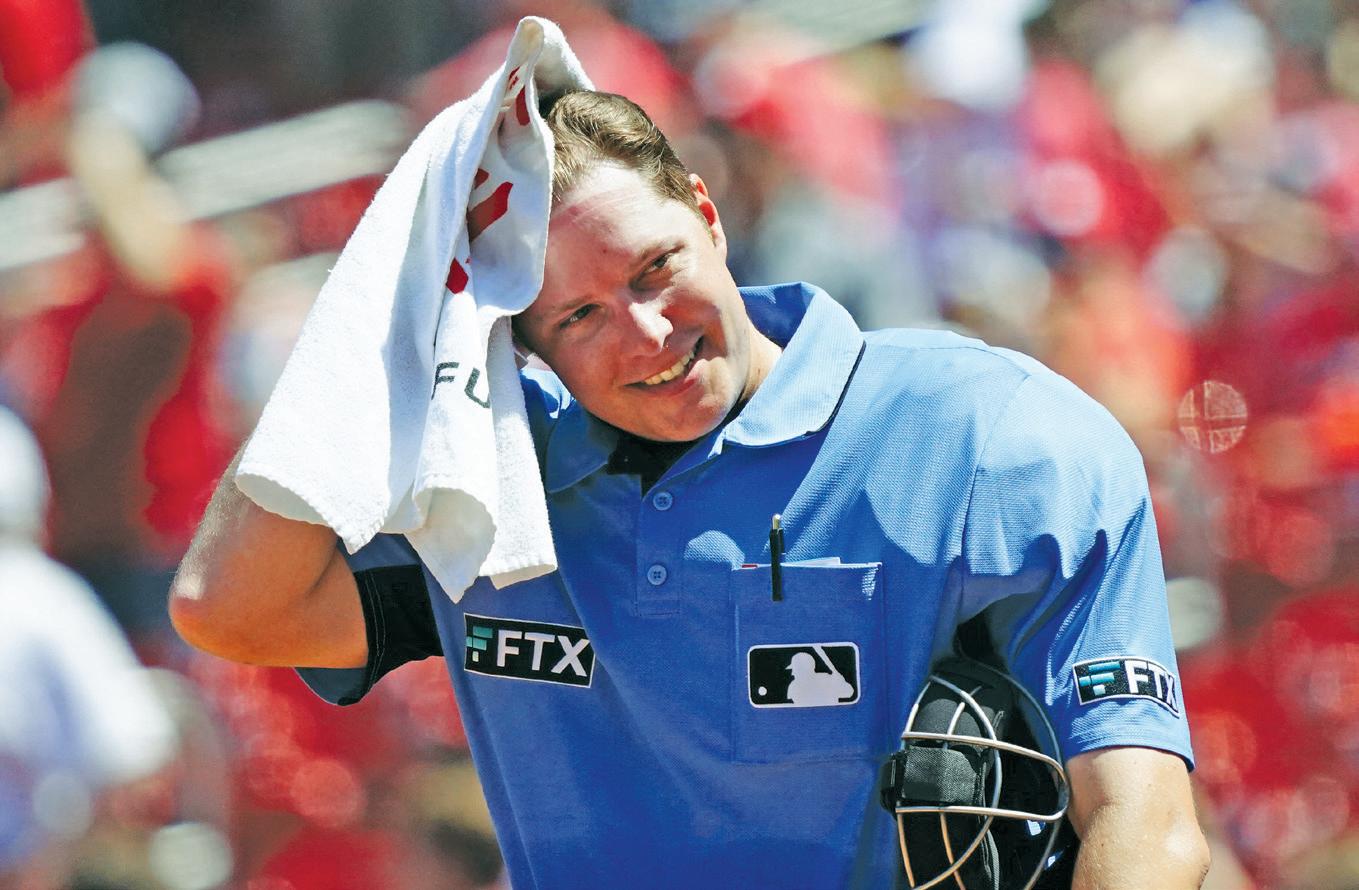
Outside forces are going to be working against you as well. Tension increases. Tempers get shorter, whether it’s the players, coaches or fans. Rulings take on added significance in extra innings or overtime. Staying in control requires extra effort.
It’s easy to become dispirited as a game drags on. You can find yourself wishing calls you made
in the mirror and determine what areas of your officiating need work. If calling a particular foul or violation seemed like your most difficult call throughout the season, continue to try to determine it when watching games on television or watching your own games on video.
Attend camps you believe will impact your officiating in a positive way.
Did you enjoy yourself? Extremely basic, but it is probably the most important question of all. For most, officiating is an avocation. Not every game is going to be a walk in the park. There will be difficult times. But look at the season as a whole. If you are so ingrained in the routine of officiating that you rarely enjoy it, it’s time to reevaluate. That may sound harsh, but if making the big call in the big game no longer creates excitement in your mind, think about that. It may be time to hang it up before the game passes you by.
ALL SPORTS 80 | REFEREE December 2022
BILL GREENBLATT/UPI
MLB umpire Clint Vondrak towels off between innings. Heat and humidity make for an uncomfortable work environment any time, but it can be especially troublesome if a game goes extra innings. Maintaining your concentration during long games is difficult but necessary.
earlier in the game had gone the other way so the game would have ended already. That sort of thinking gets you nowhere. For one thing, it breaks your concentration and may lead to you missing the next play. Wondering how long the game will last or dwelling on the length of the game are also counterproductive.
So how do you stay focused and attentive as your physical strength wanes and your mental energy ebbs?



As difficult as it sounds, try to stay positive mentally. Relax and focus on the next play. Don’t psych yourself out with negative thinking.



To keep yourself sharp, mentally review your keys or coverages before each pitch or play. Prepare yourself by remembering the teams’ tendencies and strategies. Keep your head in the game so thoughts of how long you’ve been out there will be pushed aside.

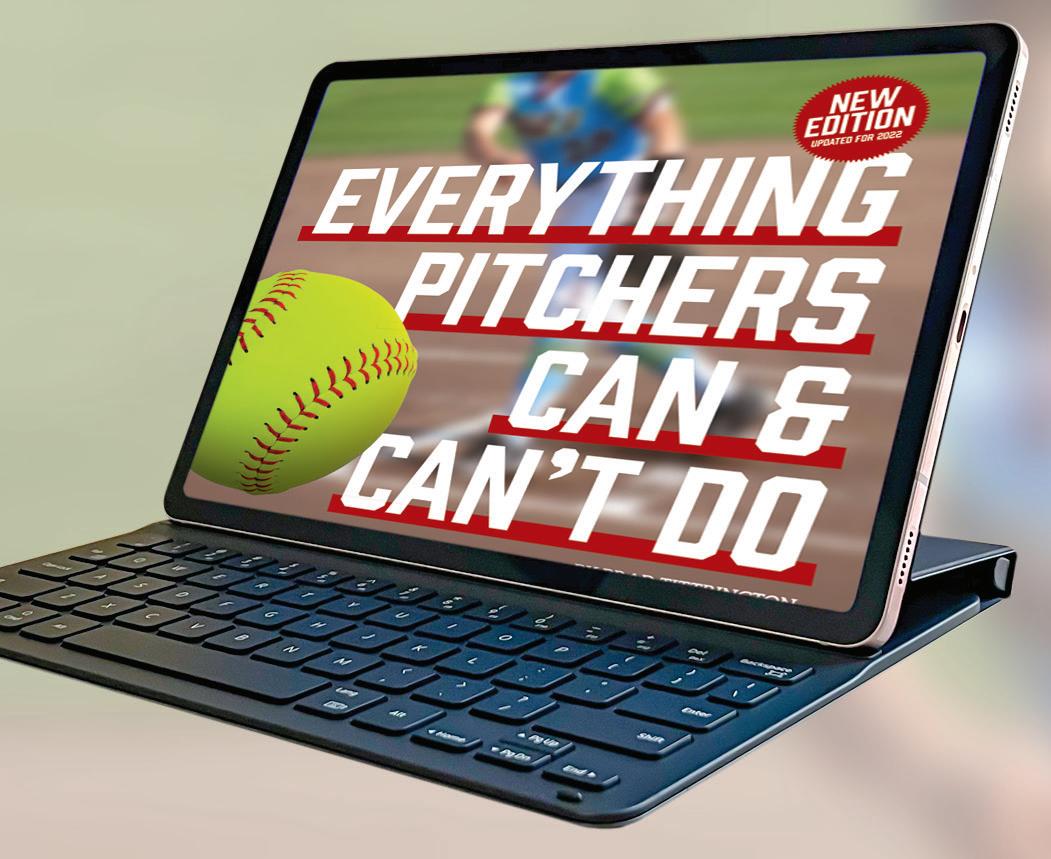




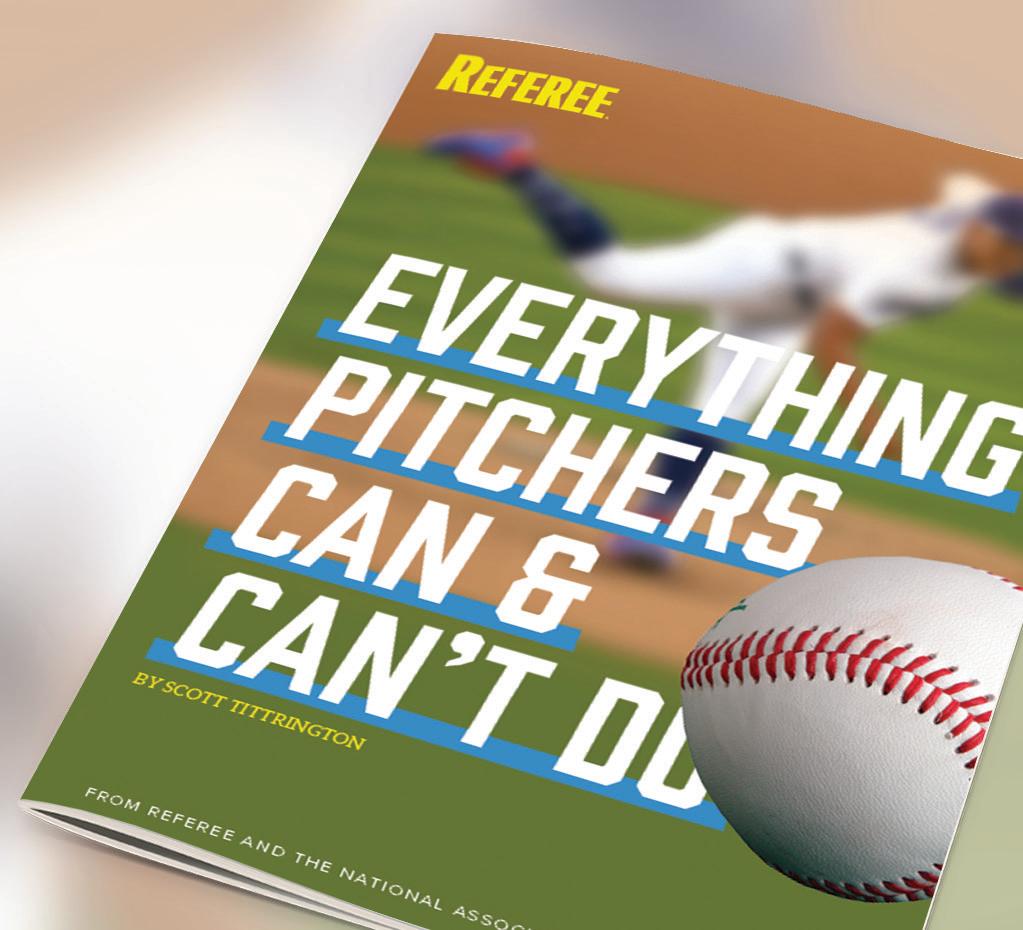






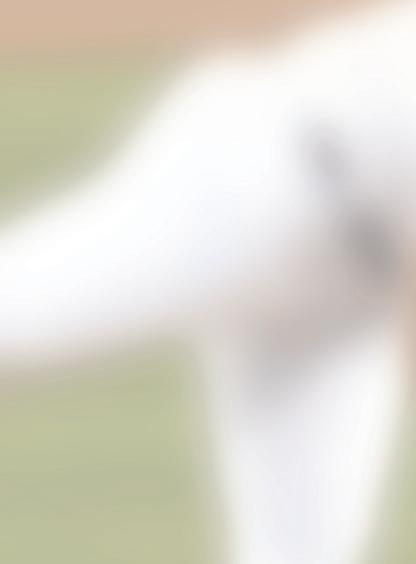
Hydration is important when
working long games. When game breaks allow, replace fluids. In fact, you should anticipate the potential for long games by drinking water before you arrive at the game. Start the night before or even earlier. Officials of outdoor sports must
consider game conditions. If you’ve checked the forecast before the game and you’ve dressed properly, comfort shouldn’t be a distraction or a concern. Remember, though, weather can go from one extreme to another. If you need to add or shed a layer, do so during an appropriate break.
Once the game finally ends, it’s important to stretch those tired muscles. It sounds odd, considering all the time you were on your feet. But the postgame stretch is vital for preventing cramping and future injuries. When you get home, remember the RICE method for pulled muscles: Rest, Ice, Compression, Elevation.
It’s tough to be at your best for an extended length of time, but that’s part of the job. Work the game from start to finish. And you’ll have a great war story to tell your officiating colleagues about the “game that wouldn’t end.”
To keep yourself sharp, mentally review your keys or coverages before each pitch or play. YOUR COMPLETE GUIDE TO PITCHING From pre-pitch placement, taking the sign and the delivery, to illegal pitches, this book has everything you need to know about the pitcher. softball *NASO member discount available. $1395 * DIGITAL In baseball, the pitcher makes the world go round. As umpire, you have to know what they can and can’t do, inside and out. baseball *NASO member discount available. $1395 * DIGITAL PRINT $2095 COMBO $1595 * LEARN MORE STORE. Size: 8” x 11” Pages: 40
FOR THE RECORD AWARDS, ROSTERS, NOTABLES
POSTSEASON ASSIGNMENTS
PROFESSIONAL
•The Las Vegas Aces defeated the Connecticut Sun, three games to one, to win the 2022 WNBA title. Officials working the playoffs were: Amy Bonner, Angelica Suffren, Cheryl Flores, Eric Brewton, Isaac Barnett, Jeff Wooten, Jeffrey Smith, Jenna Reneau, Kurt Walker, Maj Forsberg, Matt Kallio, Randy Richardson, Roy Gulbeyan, Tiara Cruse, Tim Greene and Toni Patillo
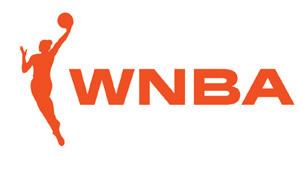
HIGH SCHOOL
•The following officials worked spring state tournaments for the Minnesota High School League.
Boys’ lacrosse: Mark Arriola, Eagan; Lucas Beer, St. Paul; Ben Brandt, Owatonna; Ross Brower, Chanhassen; Trevor Busby, Edina; Maxwell Chlan, Robbinsdale; Jon Day, Apple Valley; Rick DuBois, Hudson; Ryan Erickson, Eagan; Danny Gagnon, Chanhassen; Mike Gjersvig, Maple Grove; Troy Grengs, Lakeville; Adam Iverson, New Hope; Jason Knaus, Bloomington; Joe LaBonne, Ramsey; Christopher Larson, St. Paul; Josh Lindell, Elko; Douglas Mauck, Savage; Markus Mulvihill, Coon Rapids; Eric J. Nielsen, Wesley Chapel; Joe Petroske, St. Louis Park; Rob Ries, Eden Prairie; Matthew Ripley, Minneapolis; Tim Rolfing, Woodbury; Christian Roth, St. Paul; David Rundquist, North St. Paul; John Saccoman, Ramsey; Brad Scibak, Woodbury; Jason Sturm, Hugo; Trevor Sundquist, Esko.
Girls’ lacrosse: Matt Anderson, Minneapolis; Jeff Bouman, Burnsville; Joseph Connor, Hastings; Kevin Davis, Otsego; Robert Driesch, Rochester; Nick Edwards, Roseville; Wendy Frantz, Mounds View; Austin Garfield, Richfield; Kyle Gilbertson, Duluth; Tom Gothmann, Eagan; Emily Gray, St. Louis Park; Peter Hinrichs, St. Paul; Derek Hudyma, Buffalo; Chris Jessen, Minneapolis; Kip Kilen, Mendota Heights; Steven Kudebeh, Minneapolis; Mike Lawrow, Minneapolis; Tim Lunde, Foley; Jim MacGillis, North Oaks; Shane McKinlay, Stillwater; Rick Nelson, Fridley; Paul Risdall, Delano; Holly Souza, St. Paul; Chuck Thayer, St. Paul; Blaine Turnbull, Delano; Craig Weber, Stillwater; Mark Weber, Stillwater.
Track and field: James Anderson, Eagan; Roger Artis, Brooklyn Park; Mike Beck, Monticello; Kenneth D.Belanger, Frederic; David Boone, New Hope; Tom Boshart, Andover; Thomas Bracher, Chaska; Carla Brown, Lakeville; Craig Canham, Brooklyn Park; Michael Cheever, Minneapolis; Dick Daymont, Northfield; Dan Dornfeld, Lakeville; James Ecker, Mahtomedi; Mark Ekren, Morris; Kirby Ekstrom, Cromwell; David Fergus, Elk River; Thomas H.Fischer, Anoka; Steven M.Fossen, Crystal; Thomas Franta, Remer; Jeff Freeman, Apple Valley; Ken Freeman, Eagan; Mark Gagstetter, Eden Prairie; Steven Gerber, Plymouth; Bart Gray, Pepin; Denny Hammann, Chaska; Michael Henke, Minneapolis; Randy Herrlich, Baxter; Brian Hoff, Detroit Lakes; David Huebner, Inver Grove Heights; Beth Karlson, Rosemount; David Keller, Lakeville; Christopher Lagergren, St.
Paul; Mark Lagergren, Young America; Mike Lhotka, Cokato; Sara Lindquist, St. Paul; Jack Mayeron, Shorewood; Dennis Midthun, Burtrum; Patti Midthun, Burtrum; Mark Miller, Mankato; Beth Morrell, Northfield; Jennifer Myers, St. Paul; Todd Nicholson, Lake Crystal; Tom O’Leary, Byron; John Persoon, Mahtomedi; Rita Rislund, Detroit Lakes; Russ Schmeichel, Andover; Richard Sonstegard, Howard Lake; Michael Stephenson, Sheldon; Stephanie Sunnarborg, Bloomington; Tom Thorkelson, St. Peter; Neal Thornbloom, Aurora; Mike Traphagen, Garfield; Greg Utecht, Apple Valley; Theresa Utecht, Apple Valley; David G. Vosbeck, Sleepy Eye; Jon Wagner, Eveleth.
YOUTH
•Umpires who worked Little League International championship events in July and August.
Little League Baseball World Series: Wayne Beaumier, Cypress, Texas; Kenton Bottoms, Lawrenceburg, Ky.; David Brown, Calgary, Alberta; Andrea Galiano, Fort Lauderdale, Fla.; Henry Garnett, Ramona, Calif.; Mark Gilmour, New South Wales, Australia; James Hinojosa, Romulus, Mich.; Philip Levesque, Nashua, N.H.; Rigobert Obispo, Willemstad, Curaçao; Mike Orlando, Peabody, Mass.; Richard Ranalli Sr., Jersey City, N.J.; Scott Strache, Chicago Ridge, Ill.; Blake Taylor, Nuneaton, U.K.; William Vikara, Pace, Fla.; Brett Wagner, Odessa, Texas; Dennis Williams, SeaTac, Wash.
Intermediate (50/70) Baseball World Series: Terrance Bean, Clarion, Pa.; Sean Belfry, Gansevoort, N.Y.; Jim Catania, North Vancouver, B.C.; John Cleary, Moorpark, Calif.; Mark Dieringer, Port Lavaca, Texas; Seddrick Dixon, Fort Pierce, Fla.; Chris Ekstrom, Davenport, Iowa; Filip Havlik, Prague, Czech Republic; Josh Koenig, International Falls, Minn.; Todd Marr, Arlington, Texas; Rafael Marrero-Ruiz, Mayaguez, Puerto Rico; Ucal Palmer Jr., Austell, Ga.; Mike Ragan, Danville, Calif.
Junior League Baseball World Series: Carl Anable, Westworth Village, Texas; Felton Brown, Houston; Toby Colon, Havertown, Pa.; Sal Gambino, Fallbrook, Calif.; Derek Gillespie, Sparks, Nev.; Mike Goicoechea, Tampa, Fla.; Patrick Griffin, Galesburg, Mich.; Rob Macdonald, London, Ontario; Jules Martina, The Hague, Holland; Ian Osgood, Meridian, Idaho; Michael Phinazee, Tallahassee, Fla.; Gaspar Santos-Gonzalez, Cidra, Puerto Rico; Owen Sprague, Standish, Maine.




Senior League Baseball World Series: Thomas Bourque, Waltham, Mass.; Duane Cave, Aliso Viejo, Calif.; Robert Curtis II, Bangor, Maine; Hector Figueroa-Rodriguez, San Juan, Puerto Rico; David Frye, Fort Pierce, Fla.; Brian Hollowell, Goshen, Ind.; Philip King, Lancaster, Ohio; Rodger Moss, Brazoria, Texas; Timothy Neasham, Richland, Wash.; Payton Oltmann, Giddings, Texas; Mark Onushco, Tamaqua, Pa.; Marc Reyes, Maple Ridge, B.C.; Guy Vilt, Bradenton, Fla.
Little League Softball World Series: John Cheesbrew, Fredericksburg, Va.; Douglas Durling, Davenport, Fla.; Walter Gross, Rio Rancho, N.M.; Greg Hodges, Needville, Texas; David Mancari, Poughkeepsie, N.Y.; Jose Muriente-Ruiz, Camuy, Puerto Rico; Mark Oda, Pinole, Calif.; Chester Rice, West Des Moines, Iowa; John Rucinski, Grosse Pointe Farms, Mich.; Carlos Santana-Quiles, Las Piedras, Puerto Rico; Jamie Sims, Beaverton, Ore.; Joseph Ungrady, Oxford, Conn.

Junior League Softball World Series: Rex Fogle, Menomonee Falls, Wis.; Michael Foltz, Luray, Va.; Juan Galarza-Figueroa, Villalba, Puerto Rico; Scott Goodwin, Phoenix; David Jones, Red Cliff, Alberta; Jeffrey Lindhorst, Ingleside, Texas; Sigfredo Martinez, Brownsville, Texas; Ross Pease, Vernon, Conn.; Milton Pitt, Forest Heights, Md.; Jeffery Pratt, San Jose, Calif.; Richard Randall, Youngstown, Ohio; Ian Tyra, Sterling, Va.
Senior League Softball World
82 | REFEREE December 2022
Do you have any rosters, assignments or awards that warrant mention? Send info to us at ForTheRecord@referee.com Designate NASO as a beneficiary of your retirement plan or life insurance policy. LEARN MORE AT NASO.ORG/LEGACY OR CALL 800-733-6100
Series: Robert Cain II, Taylor, Mich.; Paul Eaton, Redmond, Ore.; Stephen Gaither, King George, Va.; Adrian Gaudet, Calgary, Alberta; John Hill, Portland, Maine; Kyle Hughes,
Ballinger, Texas; Keith Ludwig, Trappe, Md.; Rumini Modesto Thode, Willemstad, Curaçao; Thomas Peckham, Seattle; Vincente Piscitello, Seminole, Fla.; Mark Saurer, Louisville, Ky.;
Ronald Thompson, Rio Rancho, N.M.
OBITUARIES
• August “Augie” Revoy, Waukesha, Wis., died Aug. 27.
He was 89. He was a longtime baseball umpire and football official. After retirement as an official, he was voted a Legacy member of the Lakeland Officials Association.
ROSTERS NHL
The NHL officials roster, with each official’s uniform number, name, birthplace and first year in the league.
Referees
2 Jon McIsaac, Truro, Nova Scotia, 2013
3 Chris Schlenker, Medicine Hat, Alberta, 2016
4 Wes McCauley, Georgetown, Ontario, 2003
5 Chris Rooney, Boston, 2000
6 Francis Charron, Ottawa, Ontario, 2010
7 Garrett Rank, Kitchener, Ontario, 2015
8 Francois St. Laurent, Greenfield Park, Quebec, 2016
9 Dan O’Rourke, Calgary, Alberta, 1999
10 Kyle Rehman, Stettler, Alberta, 2008
11 Kelly Sutherland, Richmond, British Columbia, 2000
12 Justin St. Pierre, Dolbeau, Quebec, 2005
13 Furman South, Sewickley, Pa., 2021
14 Trevor Hanson, Richmond, British Columbia, 2013
15 Jean Hebert, Bouctouche, New Brunswick, 2011
16 Brian Pochmara, Detroit, 2005
17 Frederick L’Ecuyer, Trois-Rivieres, Quebec, 2007
18 Tom Chmielewski, Colorado Springs, Colo., 2014
19 Gord Dwyer, Halifax, Nova Scotia, 2005
20 Mitch Dunning, Windsor, Ontario, 2018
21 T.J. Luxmore, Timmins, Ontario, 2013
22 Ghislain Hebert, Bathurst, New Brunswick, 2009
23 Corey Syvret, Millgrove, Ontario, 2018
24 Graham Skilliter, La Ronge, Saskatchewan, 2013
25 Marc Joannette, Verdun, Quebec, 1999
26 Jacob Brenk, Detroit Lakes, Mich., 2015
27 Eric Furlatt, Trois-Rivieres, Quebec, 2001
28 Chris Lee, Saint John, New Brunswick, 2000
29 Ian Walsh, Philadelphia, 2000
30 Kendrick Nicholson, Stratford, Ontario, 2015
31 Michael Markovic, Scarborough, Ontario, 2019
33 Kevin Pollock, Kincardine, Ontario, 2000
37 Pierre Lambert, St. Hubert, Quebec, 2017
38 Peter MacDougall, Lumsden, Saskatchewan, 2019
39 Brandon Blandina, Centennial, Colo., 2018
40 Steve Kozari, Penticton, British Columbia, 2005
Linesmen 50 Scott Cherrey, Drayton, Ontario, 2007
51 Andrew Smith, Kitchener, Ontario, 2017
52 Shandor Alphonso, Orangeville, Ontario, 2014
53 Bevan Mills, Surrey, British Columbia, 2016
55 Kyle Flemington, Parkhill, Ontario, 2019
56 Julian Fournier, Gatineau, Quebec, 2019
58 Ryan Gibbons, Vancouver, British Columbia, 2015 59 Steve Barton, Vankleek Hill, Ontario, 2000
60 Libor Suchanek, Stod, Czech Republic, 2017
61 James Tobias, Buffalo, N.Y., 2017
64 Brandon Gawryletz, Trail, British Columbia, 2015
65 Tommy Hughes, London, Ontario, 2022
67 Travis Gawryletz, Trail, British Columbia, 2017
68 C.J. Murray, Upper St. Clair, Pa., 2021
70 Derek Nansen, Ottawa, Ontario, 2002
71 Brad Kovachik, Woodstock, Ontario, 1996
74 Trent Knorr, Powell River, British Columbia, 2021
76 Michel Cormier, Trois-Rivieres, Quebec, 2003
77 Caleb Apperson, Kitchener, Ontario, 2021
79 Kiel Murchison, Cloverdale, British Columbia, 2013
80 Jonathan Deschamps, Trois-Rivières, Quebec, 2021
81 Ryan Daisy, Newton, Mass., 2016
82 Ryan Galloway, Winnipeg, Manitoba, 2002
83 Matt MacPherson, Antigonish, Nova Scotia, 2011
86 Jesse Marquis, Bouctouche, New Brunswick, 2019
87 Devin Berg, Kitchener, Ontario, 2015
88 Tyson Baker, Thorndale, Ontario, 2019
90 Travis Tooney, Leduc, Alberta, 2019
91 Ben O’Quinn, Woodstock, Ontario, 2021
92 Mark Shewchyk, Waterdown, Ontario, 2003
94 Bryan Pancich, Great Falls, Mont., 2009
95 Jonny Murray, Beauport, Quebec, 2000
96 David Brisebois, Sudbury, Ontario, 1999
Minor League Referees
41 Conor O’Donnell, Hamilton, Ontario, 2019
42 Jordan Samuels-Thomas, West Hartford, Conn., 2021
43 Morgan MacPhee, Waterloo, Ontario, 2022
44 Justin Kea, Woodville, Ontario, 2021
45 Cody Beach, Kelowna, British Columbia, 2021
46 Brandon Schrader, Sanborn, N.Y., 2019
47 Carter Sandlak, London, Ontario, 2021
48 Beaudry Halkidis, Indian Trail, N.C., 2019
49 Reid Anderson, Calgary, Alberta, 2018
Minor League Linesmen
57 Justin Johnson, Winnipeg, Manitoba, 2021
62 Mitch Hunt, Raleigh, N.C., 2021
84 Ryan Jackson, Montreal, Quebec, 2022
89 Joe Mahon, Lindsay, Ontario, 2022
98 Dan Kelly, Morrisonville, N.Y., 2021
REFEREE December 2022 | 83
ISSUES AFFECTING OFFICIALS
In Fighting Form
By Scott Aronowitz
Regardless of what level we officiate, sports are intense. Maintaining control of a contest to prevent escalation is one of our most important responsibilities, and preventive officiating will often accomplish this. However, with the tenor of many contests we officiate nowadays, fights may be inevitable; you need look no further than social media. Moreover, even preventive officiating can be ineffective in a tinderbox and, if so, it is most important to shift our focus to protecting ourselves, both physically and legally.
Your safety and the safety of your partners are paramount. Therefore, officials might consider incorporating a safety aspect into their pregame agendas, much like we do in college football and in other major sporting events. Each game site should have at the very least a game manager and
Unless conditions render it necessary for personal protection, under no circumstances should officials put their hands on a player. While your intentions may be noble, your actions can be misconstrued; you expose yourself not only to injury on the spot (in retaliation, e.g.), but civil or criminal legal action on behalf of the person you contact.
Should a fight occur, and assuming you are not in danger, try to minimize the participant involvement and escalation by keeping participants on their benches or sidelines. Engaging team leaders — coaches, captains, managers — may help with this task.
Get out of the way and become an observer. Record uniform numbers and as soon as possible, preferably in a secure area with your partner(s), write down what you observed. This will preserve vital information and facilitate drafting a coherent, comprehensive and factual incident report, which you will likely need for your sport’s governing body and/or law enforcement.
Take a Waiver on Post-Injury Waiver
A player gets seriously hurt during a game you officiate. Before you get paid by the school, you’re asked to sign a waiver. Should you?
No, according to attorney Donald C.Collins, who wrote about this topic in a past Law column.
If you did, it’s possible basic contract law could invalidate the waiver anyway. The official has already entered into a contract to work a game, and is entitled to his or her pay without making any additional commitments. If a court should determine the school exerted leverage to get the official to sign a post-injury waiver, the waiver may not hold water. On the other hand, it is possible that the official was not compelled to sign and the waiver could stand.
many sites employ law enforcement. Meet with these people to create a plan should things go awry, especially when it becomes necessary to vacate the premises quickly. In the alternative, locate these key people and develop a rapport when you arrive at a site or enter a field.
Altercations can pose a threat to officials. Usually, the athletes outsize us and they almost always outnumber us; moreover, spectator involvement can only exacerbate the situation. Human instinct dictates that we should step between participants to quell tempers, but that can only lead to us being inadvertently contacted. If you are injured after voluntarily injecting yourself into an altercation, your means of legal relief may be adversely affected because you assumed the risk of intervening. Moreover, if nobody sees how you were injured, there is less likelihood of holding perpetrators responsible.
When order is restored and the contest is going to continue, be certain the individuals involved are disciplined pursuant to the rules. Furthermore, ensure the environment is one that is conducive to a safe playing environment, which may necessitate ejecting spectators.
Finally, be certain you and your partners get home safely. Do not leave the premises unless you are escorted by game management or law enforcement. Again, this is not only for your personal protection but also to prevent any confrontation that can invoke liability.
We are human, and when altercations occur it is normal for our temperatures to rise consequentially. However, the best thing we can do is keep our composure to maintain sound judgment to best protect ourselves from physical harm and legal liability.
Scott Aronowitz is an educator and attorney who lives in Orange Park, Fla. He has officiated high school football for over 20 years and was a college referee for seven years. He currently works replay in the Collegiate Officiating Consortium. This column is for informational purposes and is not legal advice.
Even if the waiver is valid, its effect is not clear. One would have to read the waiver. However, it is difficult to see how any waiver an official signs with a school would prevent an injured player from suing the official. The official’s concern when a player is injured should be with his or her own defense and liability, not with signing documents that may protect the school. Ultimately, the official should consult with his or her attorney and insurance representative before signing waivers.
Can’t Complain
Have a complaint about how your association is operating and want to make sure it’s heard?
Present the complaint in terms of how it relates to the bylaws or goals of the association. Focus on process rather than people, identifying what is being done, rather than who is doing it. Make sure you have your facts straight when you start making your case.
If it involves assigning, the best practice is to put the most positive face you can on the complaint and try to work with, rather than against, the assigner. Be respectful, explain how the situation appears to you without being accusatory, and ask what can be done to address the problem. If you’ve tried that to no avail, you may have to go to the association board, or even the schools or the state if the assigner does not work for the board.
Go to www.naso.org and click on member benefits for more on MICP.
Altercations can pose a threat to officials.
LAW
84 | REFEREE December 2022
PRESENTED BY
CLASSIFIEDS
CAMPS/CLINICS/ SCHOOLS
ATTENTION
ASSOCIATION LEADERS! Are you holding a camp or a clinic? Do you know of a camp or a clinic coming up? Referee can help get the word out! Call our sales department at 262-6328855 for more information.
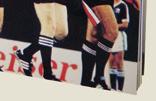

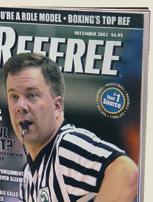
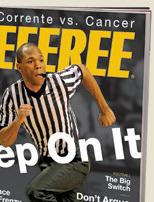
LEADERSHIP RESOURCES
Association Advantage Membership to Association Advantage provides officials, associations and their leaders the tools to conduct wellrun meetings, education resources for officiating training and access to years of association management articles. Member associations

also receive 12 issues of Referee magazine, monthly Advisor newsletters, Click e-newsletters, massive discounts on training materials and optional insurance coverage exclusive to membership. For additional membership information, contact Ken Koester at 262-632-5448 or visit the Association Advantage website at nasoadvantage.com.
EQUIPMENT/APPAREL
Purchase Officials Supplies — Everything for Life Inside the Lines. Call 800-767-2233 or visit our website purchaseofficials. com for the best products and prices in the market.
free returns to go along with more brands, product reviews, same-day shipping and world-class service.
Smitty Outlet Store
Visit the NEW Smitty Outlet Store featuring discontinued, factory seconds and individual slightly defective items at great prices. Go to smittyoutletstore.com to shop now!
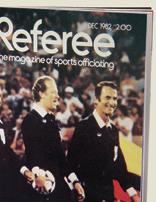
TRAINING RESOURCES
Referee Training Center
FLASHBACK
40 YEARS AGO … 1982

• Soccer officials and the Massachusetts Interscholastic Athletic Association ratify a two-year contract. While the new contract included a fee increase, the Eastern Massachusetts Soccer Officials Association remained concerned that in lower-level games featuring just one official, that official would not receive a higher fee associated with the working conditions.
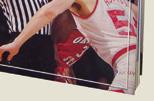
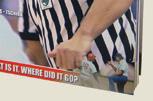
Ump-Attire.com — The #1 website for officials’ sporting goods. Now serving
QUIZ ANSWERS
BASKETBALL
1 — All – d (NFHS 2-14, Guideline Displays 1 and 2; NCAAM/W 1-19.2)
2 — All – c (NFHS 2-14, Guideline Shot Clock Operator 7a, 7f, 7i; NCAAM/W 2-11.6.a.4, 6 and 8)
3 — All – b (NFHS 4-40-4; NCAAM 4-35.3a; NCAAW 10-5.3a)
4 — NFHS – b (3-5-3c); NCAAM – c (1-23.2, 1-24.4); NCAAW – e (1-23.2, 1-24.4)
BASEBALL
1 — NFHS – c (5-1-1k); NCAA, pro – a (NCAA 9-3 Pen. 1; pro 602a Pen.).
2 — NFHS, pro – c (NFHS 3-14a1; pro 5.11a10); NCAA – d (7-2b10).
3 — All – a (NFHS 2-28-2, 6-1-4; NCAA 9-2b Pen.; pro 6.02b Cmt.).
4 — All – b (NFHS 9-1-1 Exc. a; NCAA 5-6c Exc. 1; pro 5.08 Exc. 1).
FOOTBALL
1 — NFHS – d (5-1-2b, 5-1-3c, 5.1.2 E); NCAA – e (7-2-2a Exc. 2,

AR 10-1-5 I)
2 — NFHS – a, c (2-9-5, 6-5-8, Fundamental IX-1); NCAA – a, d (2-8-1c, 2-8-3b)
3 — NFHS – b (5-1-2a, 9-4-4 Pen.); NCAA – c (5-1-1e-4, 9-1-9)
4 — Both – b (NFHS 7-5-2 Pen.; NCAA 7-3-2g Pen.)
5 — Both – b (NFHS 10-2-6; NCAA 10-1-6)
SOFTBALL
1 — All – a (NFHS 8-6-16; NCAA 12.17.4; USA Softball 8-7o-2; USSSA 8-18z)
2 — All – c (NFHS 8-2-6; NCAA 12.5.5; USA Softball 8-2e; USSSA 8-17e)
3 — NFHS, USSSA – b (NFHS 8-6-10 Note and Pen.; USSSA 8-18c Note); NCAA, USA Softball – a (NCAA 12.13.4; USA Softball R/S 13)
4 — All – b (NFHS 8-1-1d Eff. 1 and 2; NCAA 9.5.2 Eff.; USA Softball 8-1d Eff.; USSSA 8-4e)
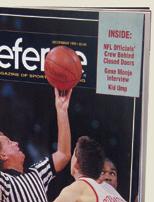
SOCCER
1 — NFHS – c (NFHS Sample
— The largest library of officiating training materials in the world. Rules study, mechanics updates and materials on important topics can all be found in one location 24 hours a day, seven days a week, with sample chapters and video samples. Discover it all at store.referee.com.
30 YEARS AGO … 1992
Tiebreaking Procedure A-3); NCAA – b (7.1.1.1.b); IFAB – a (10.3)
2 — NFHS, NCAA – b (NFHS 1-42; NCAA 1.10.1); IFAB – a (1.10)
3 — NFHS – b (4-1-1b); NCAA – c (4.1.8); IFAB – a (4.3)
4 — All – a (NFHS 5-2-2-3; NCAA 8.1; IFAB 8.1)
5 — All – b (NFHS 8-1-2; NCAA 8.2.2; IFAB 8.1)
VOLLEYBALL
1 — All – a (NFHS 9-5-5a, 9-5-5b and Note, 9-7-2 and Pen. 2; NCAA 8.1.1, 14.5.4.1, 14.6.1.3; USAV 13.3.3, 14.6.2, 14.6.4)
2 — All – e (NFHS – 4-1-7 Pen. 2; NCAA 7.3.2; USAV 4.5.1, 15.10.3.2)
3 — NFHS, NCAA – b (NFHS 3-21; NCAA 3.1.3); USAV – d (3.1)
4 — NFHS, USAV – a, b (NFHS 11.2.1; USAV 15.3.1); NCAA – a, b, c (11.2.6.1)
• NFL owners decide to suspend operations of the World League for 1993 in the wake of the NFL’s unsettled labor situation. Art McNally, the World League’s supervisor of officials, was confident the league would return in 1994 and the oneyear layoff would have little longterm impact on the league’s 42-man officiating staff — 22 of whom also worked in the NFL.
20 YEARS AGO … 2002

• The Quebec government issues tax bills to nearly 50 youth hockey referees claiming they owe back taxes because they work as employees at a privately owned arena and not as independent contractors. Raymond St. Louis, general manager of the Les 4 Glaces arena, said the referees received tax bills, including some higher than $10,000, for game fees the officials received between 1996-2000.
10 YEARS AGO … 2012
the preceding 12 months: 24,780.
filing date: 24,267.
number copies
not
copies each issue during preceding 12 months: 24,954.
during preceding 12 months: 99.28%.
during preceding 12 months:
copies of single
single
published nearest to filing date: 24,306.
to filing date:
number
copies of single issue published nearest to filing date: 99.25%. 16) Electronic Copy Circulation. 16A) Paid Electronic Copies: Average number copies each issue during preceding 12 months: 896. Number of copies of single issue published nearest to filing date: 4979. 16B) Total paid print copies plus total paid electronic copies: Average number copies each issue during preceding 12 months: 25,497. Number copies of single issue published nearest to filing date: 29,064. 16C) Total print distribution plus paid electronic copies: Average number copies each issue during the preceding 12 months: 25,676. Number copies of single issue published nearest to filing date: 29,246. 16D) Percent paid both print and electronic copies: Average number copies each issue during preceding 12 months: 99.30%. Number copies of single issue published nearest to filing date: 99.38%. 17) This statement of ownership will be printed in the December 2021 issue of this publication. 18) certify that all information furnished on this form is true and complete. Barry Mano, Owner/Publisher
• The NFL officiating lockout ends with the NFL Referees Association (NFLRA) agreeing to a new eight-year collective bargaining agreement. The deal ended a lockout imposed by the league that led to use of replacements for the preseason and the first three weeks of the regular season. NFLRA members ratified the CBA — the longest in league history — by a vote of 112-5.
DECEMBER
REFEREE December 2022 | 85 STATEMENT OF OWNERSHIP (Act of Aug. 12, 1970, Sec. 3685, Title 39, United States Code.) 1) Title of Publication: Referee. 2) Publication No.: 0733-1436 3) Filing Date: September 29, 2022 4) Issue Frequency: Monthly. 5) No. of issues published annually: 12. 6) Annual subscription price: $49.95. 7) Complete mailing address of known office of publication: 2017 Lathrop Ave., Racine, WI 53405. 8) Complete mailing address of headquarters or general business office of publisher: 2017 Lathrop Ave., Racine, WI 53405. 9) Full names and complete mailing addresses of Publisher, Editor and Managing Editor: Publisher: Barry Mano, 2017 Lathrop Ave., Racine, WI 53405. Editor: Bill Topp, 2017 Lathrop Ave., Racine, WI 53405. Managing Editor: Brent Killackey, 2017 Lathrop Ave., Racine, WI 53405.10) Owner: Referee Enterprises, Inc., 2017 Lathrop Ave., Racine, WI 53405, whose owners are: Barry Mano, P.O. Box 65, Union Grove, WI 53182; Carlene Kolbe, 8 Country Club Circle, Village of Golf, FL 33436; William L Law and Mary L Law Family Trust FBO: William R. Law, Virginia Henke, Sarah Orr, Wells Fargo Private Bank, 100 E Wisconsin Ave #1200, Milwaukee, WI 53202; Jane Law Ashely: c/o Lisa A. Olsen, 815 North Water Street, Milwaukee, WI 53202; Dennis Waisman, 10001 Kirkland Court, Mequon, WI 53092; and Jean Mano, P.O. Box 65, Union Grove, WI 53182. 11) Known bondholders, mortgagees and other security holders owning or holding 1 percent or more of total amount of bonds, mortgages, or other securities: Same as #10 above. 12) For completion by nonprofit organizations authorized to mail at special rates: not applicable. 13) Publication name: Referee 14) Issue date for circulation data below: October 2022. 15) Extent and nature of circulation: Paid 15A) Total number copies (net press run): Average number of copies each issue during preceding 12 months: 24,954. Number copies of single issue published nearest to filing date: 24,306. 15B) Paid circulation: 15B1) Mailed Outside-County Paid Subscriptions Stated on Form 3541. Average number of copies each issue during preceding 12 months: 24,549. Number copies of single issue published nearest to filing date: 24,056. 15B2) Mailed In-County Paid Subscriptions Stated on PS Form 3541: Average number copies each issue during preceding 12 months: none. Number copies of single issue published nearest to filing date: none. 15B3) Paid Distribution outside the mails including sales through dealers and carriers, street vendors, counter sales and other paid distribution outside USPS: Average number of copies each issue during preceding 12 months: none. Number copies of single issue published nearest to filing date: none. 15B4) Paid distribution by other classes of mail through USPS: Average number of copies each issue during preceding 12 months: 52. Number copies of single issue published nearest to filing date: 29. 15C) Total paid distribution: Average number copies each issue during preceding 12 months: 24,601. Number copies of single issue published nearest to filing date: 24,085. 15D) Free or nominal rate distribution 15D1). Free or nominal rate outside-county copies included on PS 3541: Average number copies each issue during preceding 12 months: none. Number copies of single issue published nearest to filing date: none. 15D2). Free or nominal rate in-county copies included on PS 3541: Average number copies each issue during preceding 12 months: none. Number copies of single issue published nearest to filing date: none. 15D3). Free or nominal rate copes mailed at other classes through the USPS: Average number copies each issue
12 months: 148. Number copies of single issue published nearest to filing date: 182. 15D4) Free or Nominal rate distributed outside the mail: Average number copies each issue
12
30. Number copies of single issue published nearest to filing date: none. 15E) Total free or Nominal Rate Distribution: 179. Number copies of single issue published
182.
during preceding
during preceding
months:
nearest to filing date:
15F) Total distribution: Average number copies each issue during
Number copies of single issue published nearest to
15G) Copies
distributed: Average
each issue
174. Number copies of
issue published nearest
39. 15H) Total: Average number
Number
issue
15I) Percent paid. Average
copies each issue
Number
The Unintentional Referee
Our kids can get us involved in things we never planned nor intended to do. Our son played all kinds of sports when he was little. My wife and I really enjoyed helping and watching his teams. He also ran track and cross country in high school. I took pictures at his meets. I was learning how to create websites at work so I created a website for the cross country team. When he became a senior, I worried about “empty nest syndrome” since we had spent so much time with his sports. Before he left for college, he announced he was going to do something besides just run. He went to club sports sign-up day with the intention of joining ultimate Frisbee. However, he couldn’t find it. He did find someone he had met at orientation who had just signed up for rowing, even though he knew nothing about it. My son, Talley, did not know anything about rowing either, but he signed up, too. I remember the phone call when he told us he had signed up for rowing. My response was, “You signed up for what?”
My wife and I started going to his regattas to find out what he was doing. It took me a while to get used to saying regatta instead of meet. After the first semester, my wife became the crew mom. We hauled Gatorade and bagels to many regattas across the Southeast for 3-1/2 years. We really enjoyed the sport and the Clemson students who were there. Rowing does not have dugouts or sidelines to separate the teams, so they are right beside each other in tents. It was interesting to watch how these students from different teams interacted with each other. We were starting to dread our son’s eventual graduation because we would lose our connection to the sport. Then something unexpected happened.
I went to his last home regatta at Clemson as a parent volunteer. I expected to be assigned a typical “parent job” like selling T-shirts. However, when I asked what I was supposed to do, the answer was start marshal. I said, “That’s fine. What’s a start marshal?”
After a brief explanation, I got a heat sheet and a boat and got on the water. The start marshal is usually a licensed referee but can be a volunteer for a sprint race.
The start marshal’s job is to gather the boats that are in the same race and find the boats that are missing. It can be an overwhelming task when there are lots of boats.
I worked the morning shift and everything went well. I was still eating my lunch when the afternoon races started. The start marshal for the afternoon was overwhelmed. Donna Grillo was the starter. She got on the radio and said to find me and send me back out there. I had not finished my lunch but went back out. The last race of the day started ahead of schedule. The key to keeping a regatta on schedule is a good start marshal. Donna found me at the boathouse after the last race of the day and told me that I should become a referee. I was losing my connection to the sport we really
enjoyed, so I agreed. She became my mentor as a referee.
After a few months, I completed all my observations and written test to became a USRowing licensed assistant referee in 2010. I worked all the different referee positions the required number of times to become a full referee in 2013. Dick Alcock had been the chief referee at Clemson and was looking for someone to take his place. He trained me and signed off on me as chief. I have been the chief referee for Clemson crew ever since. I have worked two Atlantic Coast Conference championships and two national championships.
I was asked to be a clinician in 2016. Before COVID-19, I conducted in-person referee clinics. These clinics are required annually for referees to keep their license. It is still amazing to me that someone who knew nothing about rowing is now training referees. I have mentored several people who have become referees. It has been a real privilege to present a referee pin to someone who has completed all the training as a referee. One special presentation occurred when I did not have a new referee pin to give. I gave her the pin off my jacket that Dick had given me.

Parents are expected to teach their children and guide them to experiences that will help them grow into independent, responsible adults. Sometimes, they lead us into experiences that challenge us and make us grow.
Rowing is a great sport. I would not have found it without my son. We need to do what we can to support our young people in their activities. I hope I can continue to support them for many more years.
Watt Smith resides in Granite Falls, N.C. He has been a licensed referee with USRowing since 2010.
Do you have a personal officiating story to tell?
Send your story or queries to lastcall@referee.com
86 | REFEREE December 2022
A
LAST CALL
PERSONAL STORY BY WATT SMITH
When I asked what I was supposed to do, the answer was start marshal. I said, “That’s fine. What’s a start marshal?”

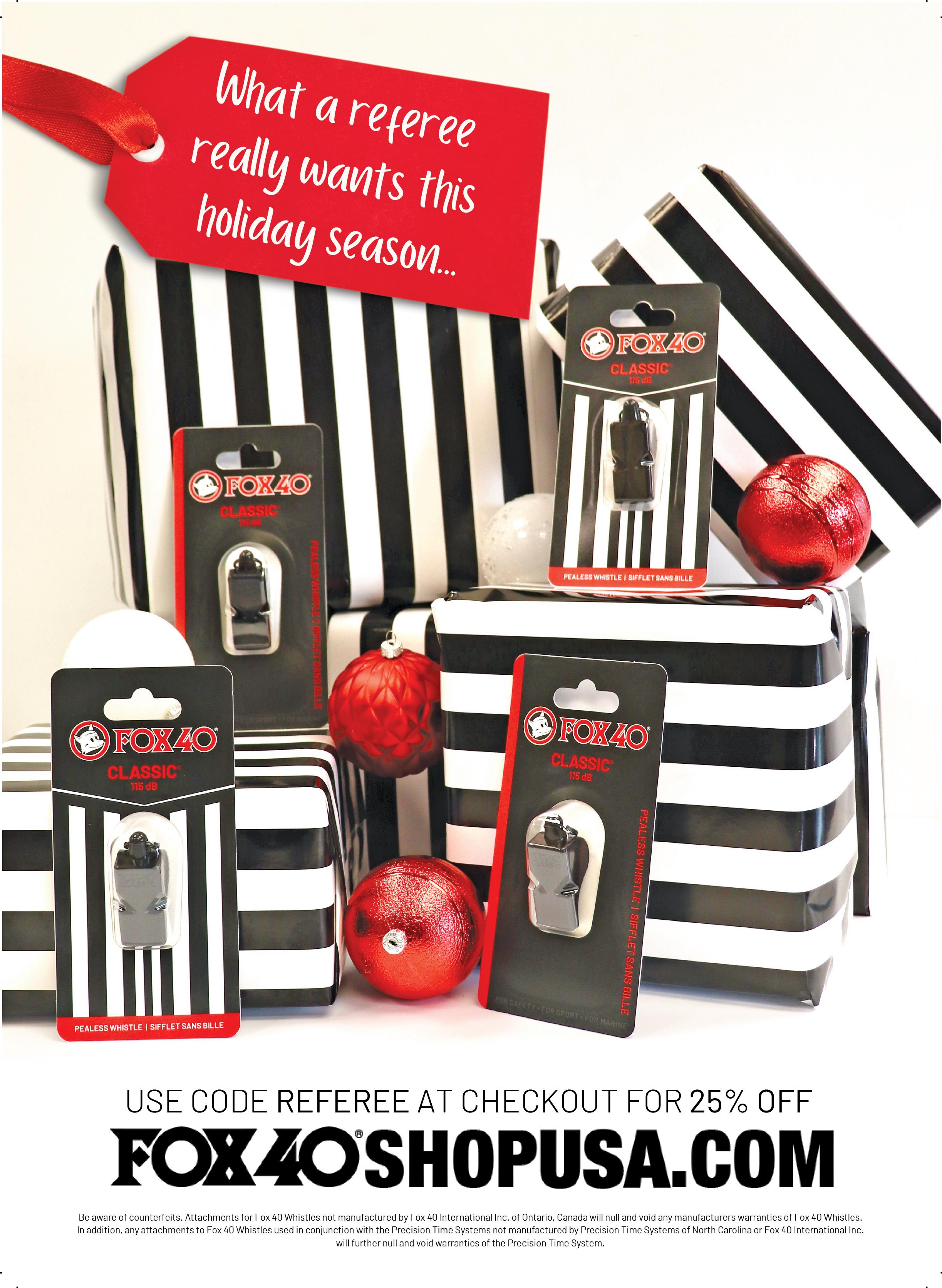
IT’S OFFICIAL


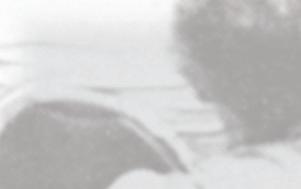




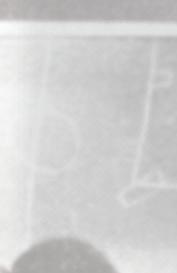


NASO Marks 40 Years of Summits

Today the Sports Officiating Summit presented by NASO is an event like no other, combining spectacular audiovisual presentations with panel discussions and single-speaker sessions featuring the biggest and brightest in the industry.







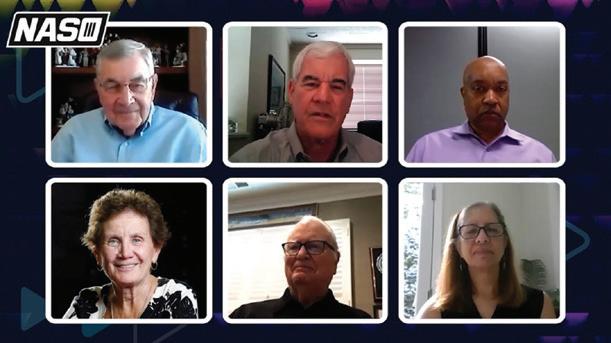
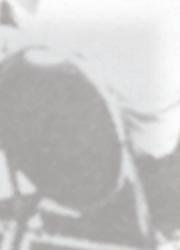

It wasn’t always so.



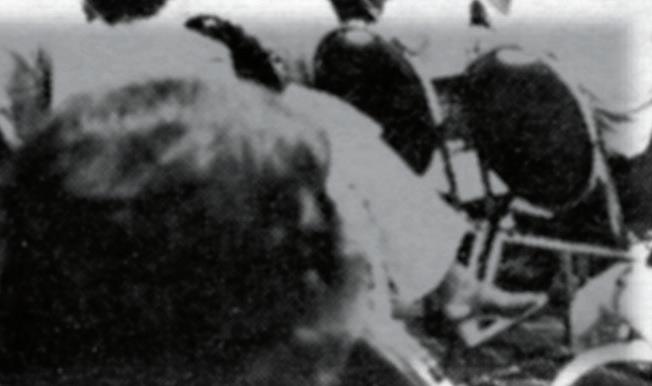


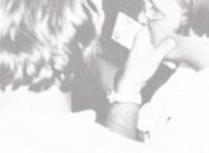



Forty years ago NASO hosted conventions which were aimed at improving the skills of the individual official. “At that time there were almost no camps or clinics for officials,” NASO President Barry Mano said. “But about that time, camps and clinics started surfacing. It became economically untenable.”
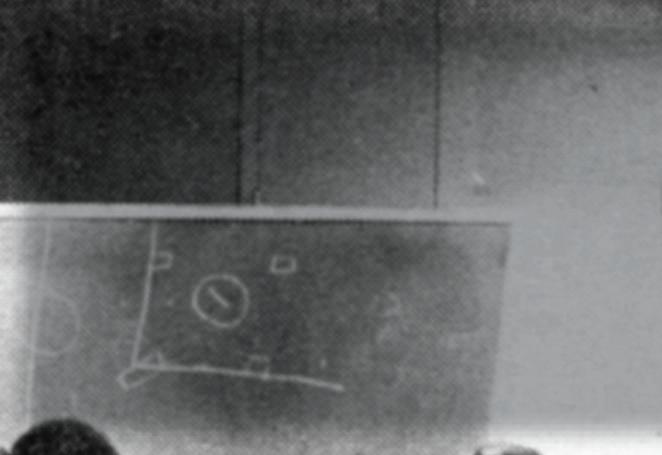

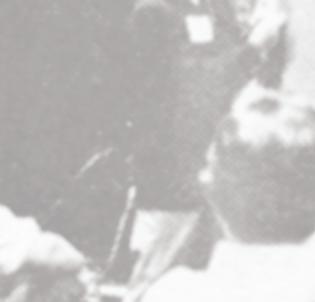
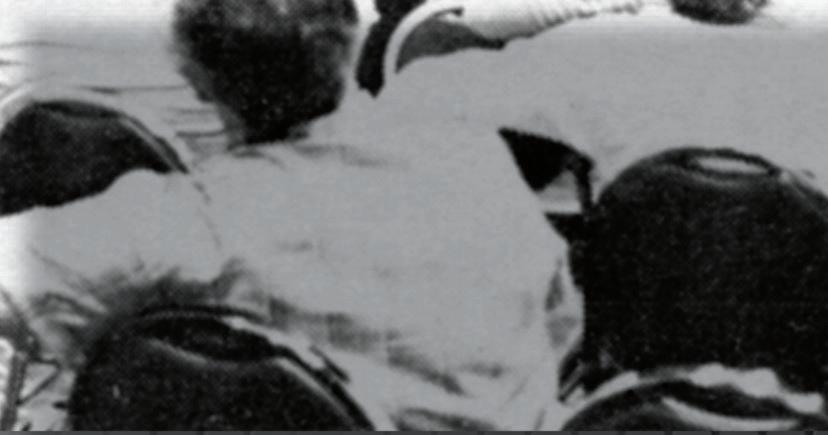

Seeing attendance wane heading into the 1990s, NASO shifted gears. The convention became the Summit and each event adopted a theme around which educational sessions were constructed. But because serving the needs of officials was still important, sport-specific sessions were still offered.
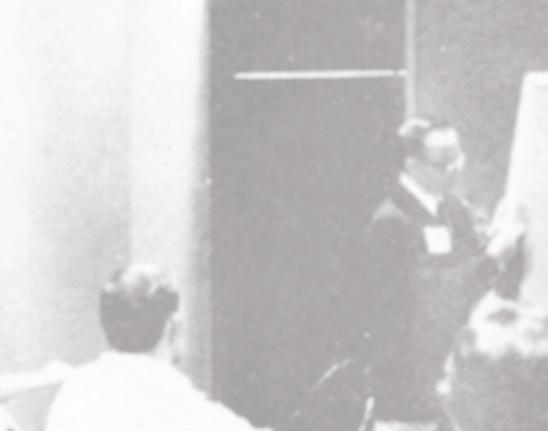
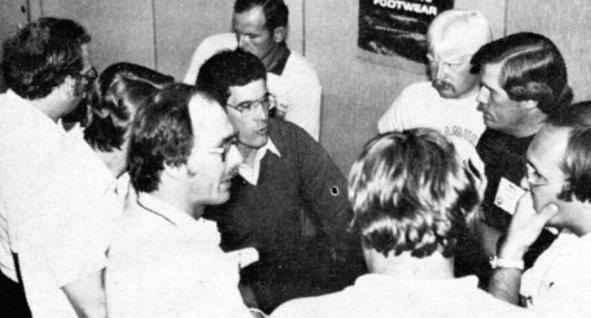
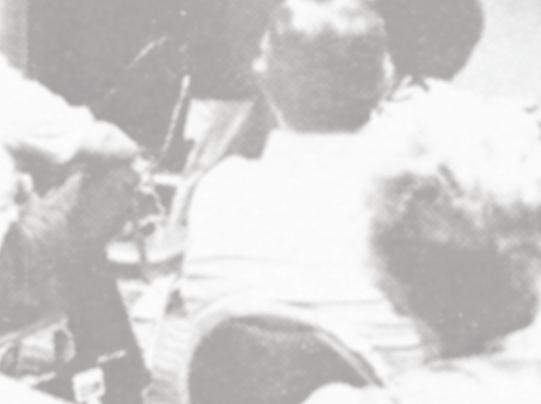
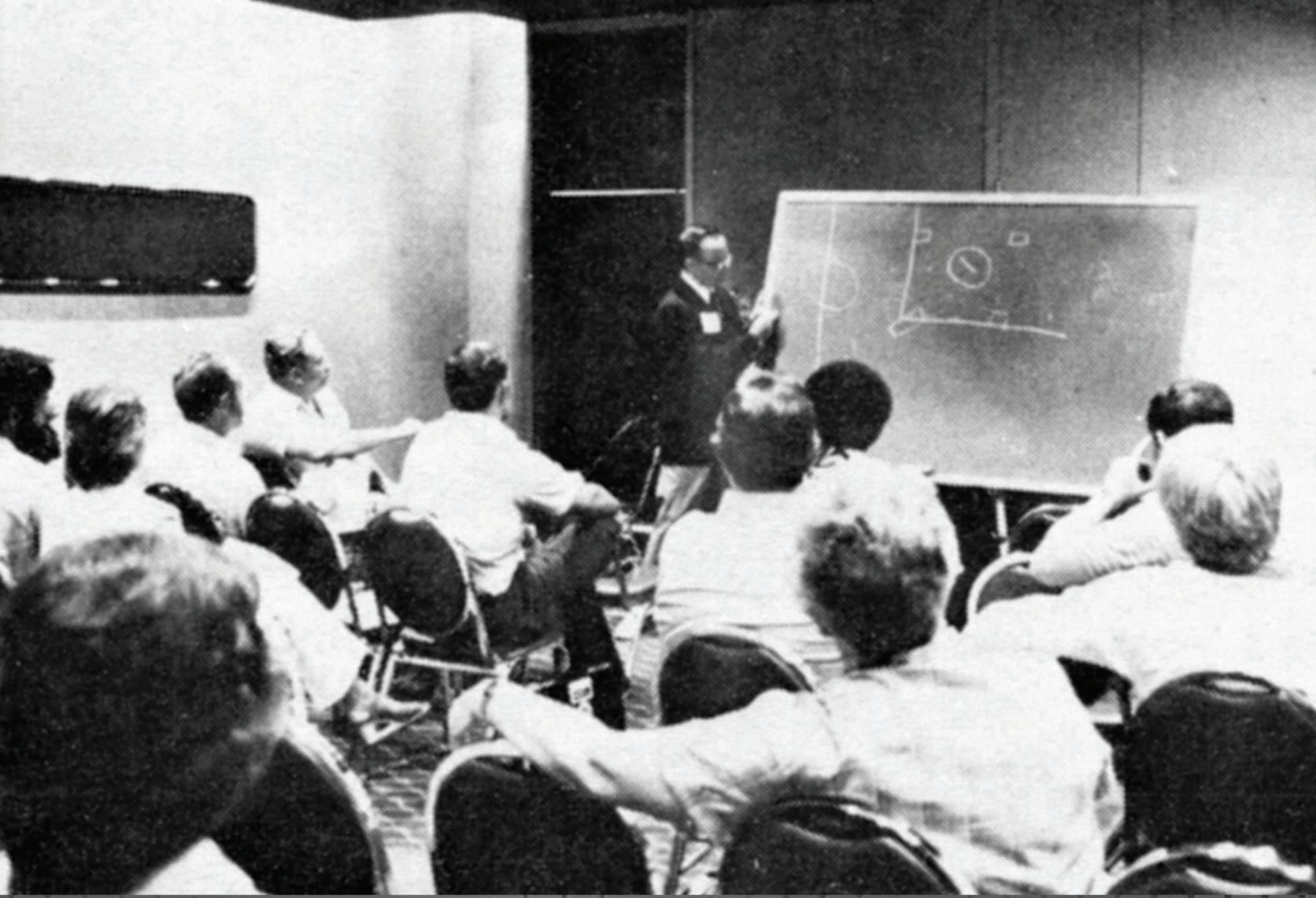
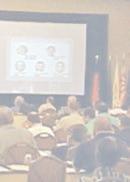

Sponsorships have been key in keeping the Summits going. There were no sponsors the first five years of the convention. A half dozen were obtained the sixth year. Eventually the number grew to 92 support organizations. The NFHS became a presenting sponsor in 2002.
The Gold Whistle Award is presented at the Celebrate Officiating Gala, the culmination of the Summit. Ron Foxcroft of Fox 40 International has been the single longstanding sponsor of the award and the banquet.
In 2007, NASO began including the host state association in the event. The day before the Summit begins, the host state association can host its officials for statewide meetings, often using luminaries in town for the Summit as speakers.
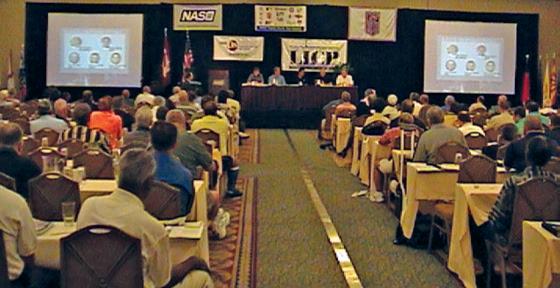
Not even the pandemic could slow down the Summit. The 2020 and 2021 events were held virtually and free of charge.
What makes the Summit unique is the melding of the people attending. There are no barriers between sports and levels. You’ll see an NFL official talking to a high school soccer referee and each learning from the other.
“That kind of networking is essential to the industry,” Mano said. “Understanding what’s
NATIONAL ASSOCIATION OF SPORTS OFFICIALS
1
december 2022
NASO celebrated the milestone of 40 years of Summits with a special video at this year’s Denver Summit.
happening at different levels and connecting different sports.”
It’s that sort of interaction that has kept Alan Zarrow of Brooklyn, N.Y., coming back year after year.
“By my count, I have attended 28 conventions and Summits, not counting the remote Summits,” he said. “My first one was the 1990
convention in Washington, D.C.”
Among Zarrow’s favorite aspects of the Summit are “the opening reception where you can catch up with old friends and make new connections.”
His favorite memories include rodeo officials presenting a cowboy hat to Fox Sports rules analyst Mike Pereira, former
NASO Convention/Summit History
1981 Chicago
1982 Philadelphia
1983 Dallas
1984 Las Vegas
1985 Orlando, Fla.
1986 St. Louis
1987 San Francisco 1988 Boston 1989 San Antonio 1990 Washington, D.C.
Editor: Julie Sternberg
Sports Editor: Brent Killackey
Graphic Designer: Dustin Brown
1991 Las Vegas
1992 New Orleans
1993 Orlando, Fla.
1994 San Diego
1995 Washington, D.C.
1997 Keystone, Colo.
1998 Indianapolis 2000 Colorado Springs 2001 Norfolk, Va.
2002 Albuquerque, N.M.
2003 Portland, Ore.
2004 Washington, D.C.
2005 Salt Lake City
2006 Memphis, Tenn. 2007 Denver 2008 Cleveland 2009 Tucson, Ariz. 2010 Minneapolis 2011 Atlanta 2012 Portland, Ore.
MLB umpire Jerry Crawford surprising his brother Joey the day the NBA referee was to receive the Gold Whistle Award and the get well card he received from the NASO staff after his first knee surgery.
The 2023 Summit is scheduled for July 30-Aug. 1, 2023, in Riverside, Calif.
2013 Grand Rapids, Mich.
2014 Albuquerque, N.M.
2015 St. Louis
2016 San Antonio
2017 Louisville, Ky. 2018 New Orleans 2019 Spokane, Wash. 2020-21 Summit at Home 2022 Denver No events: 1996 or 1999
Contributors: Don Collins, George Demetriou, Alan Goldberger, Luke Modrovsky, Patrick Rosenow, Tim Sloan, Jeffrey Stern, Brad Tittrington, Scott Tittrington, Bill Topp
NASO BOARD OF DIRECTORS
Dana Pappas, Lebanon, Ind., Chair
Robert Smith, Waterloo, Iowa, Vice Chair
Barry Mano, Racine, Wis., President
*Bill Topp, Racine, Wis., Secretary
*Bill Carollo, Shorewood, Wis., Treasurer


*Ron Foxcroft, Burlington, Ontario, Special Adviser



Dean Blandino, Santa Monica, Calif.
Lisa Jones, Phoenix
Paul LaRosa, Metairie, La.
Pati Rolf, Pewaukee, Wis.
Sandra Serafini, Yachats, Ore.



Ron Torbert, Hanover, Md.
Mark Uyl, DeWitt, Mich.


Rob Wigod, Los Alamitos, Calif.
*Non-voting members


NASO MISSION STATEMENT


The mission of NASO is to:
• Serve members by providing benefits and services.
• Improve officiating performance through educational programs.
• Advocate opportunities for officials and engage in programs to recruit and retain officials.
• Create alliances with organizations that benefit from healthy officiating programs.

• Enhance the image of officials.
© 2022 NASO/Referee Enterprises, Inc. All rights reserved. It’s Official is published by the National Association of Sports Officials and Referee Enterprises, Inc.
Find NASO @ facebook.com/NASOofficiating
4 Ways Officials Get Themselves in Legal Trouble
 By Donald C. Collins
By Donald C. Collins

Officials can get themselves in legal trouble without even realizing it. From actions that seem like they have nothing to do with officiating to inaction on officiating matters that seem benign until they aren’t, trouble can lurk. Here are four ways that legal trouble can sneak up on an official.
1OFFICIALS WITH LOOSE LIPS.
Some officials are professionals on the court, but in their off-court conversations they lay the foundation for future legal problems.
These officials engage in bawdy, off-color conversations,
and make comments or jokes that cut close to racial and ethnic lines. These types of comments have been used against officials, their local associations, and even their state governing bodies in lawsuits ranging from gender bias in assignments to uniform and hair rules violations.
Even worse, athletes who have assaulted officials have alleged they were reacting to negative comments from officials. Few believe these athletes, but it’s easier to rebut these claims if the officials involved cultivate solid reputations for professionalism. Yes, loose lips can create major legal problems.
2 IT’S OFFICIAL - december 2022 NATIONAL ASSOCIATION
2OFFICIALS WHO DON’T MAKE THE MID-GAME CHECK.
Officials are constantly told to do a pregame facilities and equipment check. There are times when this is not enough.
Officials have to be ready to adjust if the pregame checks don’t work. The biggest tip that a pregame check didn’t work is the dreaded near miss.
We’ve seen it. A player slips on a wet spot near the gym entrance on a rainy night during basketball season. Somehow, the hot bat gets used in a baseball or softball game. In track, the discus hits the netting and then somehow slides down into a space on the other side of the net.
In all these cases, there’s a safety failure, but no harm has occurred. The game is flowing, and some officials may be inclined to keep things moving. Don’t do it. This is when the official needs to take a brief pause for safety. Address the wet spot — don’t leave it up to the ticket taker. Enforce the illegal bat rules. Get some zip ties, and secure that netting right. Make the mid-game safety fix. Officials who don’t make that fix leave some pretty big evidence they did not fully address safety.
3 OFFICIALS WHO DON’T TAKE FILE NOTES.
Officials need to get in the habit of documenting their games. Officials should file notes from games when there are injuries, fights, ejections and unusual occurrences. These notes may help officials refresh their memories should they be sued down the road. Quite frankly, officials should take notes even when nothing occurred during a game. After all, officials only find out






about some injuries, problems and complaints well after the game, and someday it may be important to recall what occurred during the game.
4OFFICIALS WHO DON’T LET THEIR PARTNER BE THEIR WITNESS.
Officiating mechanics don’t account for witnesses. This normally doesn’t matter since the whole gym or ballpark can see an official’s calls. However, the whole gym and ballpark can’t hear an official tell somebody that their uniform is illegal, their jewelry has to come off, or they’ve breached some other technical rule. The only people who hear the official are often the coach, and some of his players. Occasionally, the opposing coach will hear — but he or she may not care about enforcing the rule.




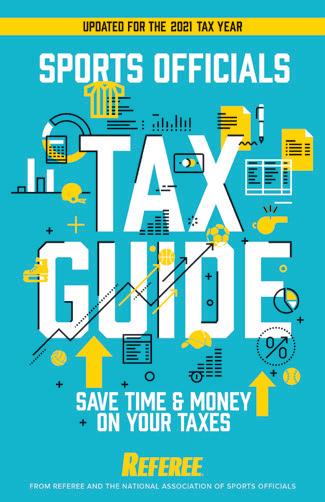















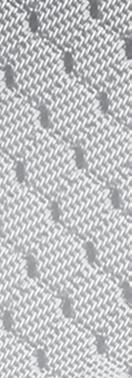


Officials are not good at finding a way to make sure their partners can find a balance between covering the court or field while being in the visual vicinity of an official’s instructions on uniform and jewelry rules. One can hardly fault officials for this flaw, though. In truth, some mechanics will eventually need to be adjusted so officials can protect their legal interests.

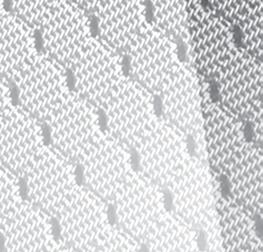
Of course, there are many other ways to get into legal trouble, but officials can get a start protecting themselves by addressing these four ways of staying out of trouble.
Donald C. Collins recently retired as commissioner of the San Francisco Section of the California Interscholastic Federation. He is a longtime basketball official and lawyer. This article is for informational purposes and is not legal advice.
3 OF SPORTS OFFICIALS
For additional tax information visit www.naso.org/resources SAVE UP TO $35 OFF YOUR 2022 OFFICIATING TAXES naso.org/joinrenew OR CALL 1-800-733-6100 Join or Renew with NASO before December 31 to use the tax deduction on your 2022 o ciating taxes. NASO members can access the exclusive Tax Guide through the NASO Members App.
Meet Your New NASO Board Member
ROb wigod
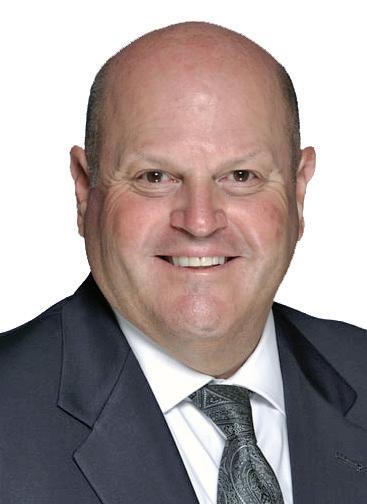
Rob Wigod has been the California Interscholastic Federation (CIFSS) Southern Section
Commissioner of Athletics for 12 years and has been with the organization 23 years overall. CIFSS is one of the biggest high school athletic organizations in the country. His areas of responsibility include athletic administration, character development, committee management and membership. He is a former high school football and baseball coach and athletic director. He works closely with the California Basketball Officials Association, an NASO partner, and was influential in securing support for the 2023 NASO Summit in Riverside, Calif.


Q: As a high school administrator, what perspective do you bring to the NASO board?
A: I hope there is an understanding at the high school level of the value of officiating. And how much we need to continue to promote it. Especially now with the challenges of having enough officials and getting new officials and retaining them. I believe our role at the high school administrative office is to work with the schools, the officials associations and to work with the general public and do everything we can do to turn the trend around to see growth in the officiating ranks.














Q: What has been the biggest change in sports administration in your time with the CIF?

A: We have fewer sports administrators who have athletic backgrounds. Traditionally there were a high number of administrators who moved into principal jobs, assistant principal jobs, even school district administrator jobs that had backgrounds in coaching or as athletic directors. Many of our best officials traditionally were coaches who would officiate during their offseasons, but the responsibilities of running athletic programs on high school campuses and administrators wanting coaches to remain on campus and not going off to officiate, that has had an effect on us.
Q: Next year’s NASO Summit is scheduled for Riverside, Calif. What should attendees expect? A: Hopefully we will put on a great event in Riverside. We’re honored and appreciative to be given this chance. We want to pull out all the stops and make it as great an experience as possible. The location is ideal for those who want to come out and experience a lot of different
elements of Southern California. Riverside is sort of a central location, close to Orange County, with Disneyland and beaches, close even to Los Angeles. Close to the mountains, close to the deserts, close to many things. We’re very excited to prepare for 2023 and we want to try to bring a record number of officials in for Officiate California Day.
AT A GLANCE
Last book read: “Letters From an Educator.” It was written by one of our athletic directors from one of our schools.
Favorite TV show: Big Brother. My wife and daughters are very excited about it. It’s a family bonding kind of show.
Last vacation spot: Hawaii.
Favorite sports team: Los Angeles Dodgers
Favorite meal: Steak and baked potato
4 IT’S OFFICIAL - december 2022 NATIONAL ASSOCIATION
“I HOPE THERE IS AN UNDERSTANDING AT THE HIGH SCHOOL LEVEL OF THE VALUE OF OFFICIATING. AND HOW MUCH WE NEED TO CONTINUE TO PROMOTE IT.”
— Rob Wigod
NASO IN THE NEWS
NASO continues to be the leading voice for sports officials across the country. As a byproduct of that, various media outlets will contact NASO for comments on matters that affect sports officials. Here are examples of NASO coverage:

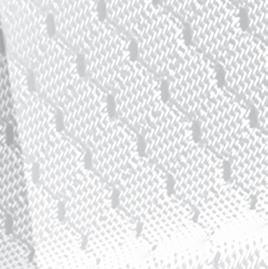
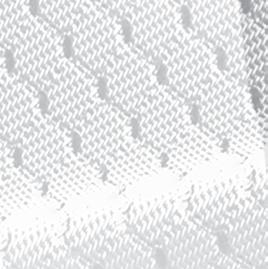


The Path to MLB Umpiring





At MLB’s Umpire Camp in Denver in August, held in conjunction with NASO’s Sports Officiating Summit and Officiate Colorado Day, Colorado Public Radio did both a radio report and online news article on the path to becoming an MLB umpire and included comments from NASO President Barry Mano on the bad behavior and the current shortage of officials. To find this article, search “Colorado Public Radio, NASO.”

Curb Harassment and Assaults
When softball umpire Kristi Moore was assaulted in April, NASO was contacted to provide




comments and information on the current state of officiating. NASO President Barry Mano told USA Today that sports organizations need to do more to curb both harassment and verbal/physical assaults on sports officials. To find this article, search “USA Today, Kristi Moore, NASO.”









A ‘Dangerous Precedent’ Lawsuits

related to sports officiating continue and southeast Wisconsin (the home of NASO) continues to be no exception. After a fight during a high school playoff basketball game, game officials ejected all fight participants and those who left the bench, per NFHS rules. Despite the rules on the side of the officials, a Milwaukee County judge granted a temporary restraining order to put the team back into the postseason tournament. NASO President Barry Mano called the situation a “dangerous precedent.” While the court battle is still ongoing despite the tournament being well over, the article can be viewed by searching “WIAA Basketball Fight, NASO.”
Shortage of Officials
NASO President Barry Mano was extensively quoted in Global Sport Matters, the media enterprise by the Global Sports Institute at Arizona State University. The article focused on the drivers in the shortage of sports officials — including possible solutions in
not only getting more people into officiating but retaining them as well. To find this article, search “Global Sport Matters, NASO.”
Dibler Receives Inspire Award
One example of coverage from NASO Sports Officiating Summit can be found in the El Paso Times. Bobby Dibler was the recipient of NASO’s Inspire Award. Comments from Dibler and NASO President Barry Mano can be viewed by searching “El Paso Times, NASO Inspire Award.”
Causes of Shortage
The officiating shortage continues to be a hot topic and The Wright State Guardian Media Group is yet another example of NASO being contacted for comments. NASO President Barry Mano described many of the causes of the shortage, as well as advocating for better treatment of sports officials. To find this article, search “Wright State, NASO.”
Robert Smith Talks Officiating
NASO Board member Robert Smith was interviewed by Rule 11 Officials, a college football officiating podcast. Smith talked about his work in the diversity, equity and inclusion space, as well as his college football experience, which led to his path to become a Big Ten football official. To find this article, search “Rule 11 Officials, Robert Smith.”
5 OF SPORTS OFFICIALS
GROUP MEMBERSHIP AVAILABLE For more information: Call (800) 733-6100 or go to naso.org/promo/MyGroup SAVE UP TO $30
Game Call and Assigners’ Coverage Gives Members Another Layer of Protection








You’ve heard it before: Officiating is the only avocation you’re expected to be perfect and get better from there. Officials aren’t the only ones who carry the weight of high expectations. You can add assigners to that list as well. Regardless of expectations, though, officials and assigners are going to make mistakes. It’s called the human element. And when that happens, officials and assigners who are acting in good faith shouldn’t have to worry about being sued for such a mistake. And thanks to NASO’s $100,000 Game Call
and Assigners’ Coverage (in addition to NASO’s liability coverage), they don’t. They can perform their duties to the best of their abilities with peace of mind.
NASO Game Call and Assigners’ Coverage protects officials for claims alleging officiating-related errors or omissions which result in financial loss, but where there is no bodily injury. It also covers a challenged game call which results in a claimed
financial loss or suit against an assigner by a disgruntled official.
The special coverage NASO offers insures members up to $100,000 per occurrence as long as you are acting in good faith. Defense costs are within the $100,000 and not in addition to it.
The Power of Joining Together
Did you know that nearly 50 percent of NASO’s more than than 25,000 members join through their local officials association? NASO makes it easy to join through your local association, board, chapter or unit — and we can even save you a few dollars doing it.
We’re always looking for ways to make it even easier to make the decision to join NASO. That’s why we made the decision years ago to provide discounts for groups of officials who want to join together with a single official coordinating the effort.
It first launched as the NASO Group Membership Program and has since evolved into the Association Advantage Titanium level in which sports officials from the same local group all join NASO together at one time.

It’s one of our most successful





programs, and members like it for a variety of reasons. Not only does it save significant dollars, but members don’t have to be bothered with renewal notices. They simply renew through their local group.

In addition to saving up to $32 off NASO dues, group membership provides a variety of other benefits, including:

Free Association Leadership Resources. Through NASO’s Association Advantage program, you get access to leadership and training tools, newsletters, Websites and other tools to better run your association.

Consistent activation and renewal. All members share the same anniversary date and re-enroll on the same date. That means no individual renewal notices sent to your members six months ahead of time.
Installment payment options. If it makes sense for your sports officiating organization, we’ll work with you to come with a payment schedule that fits into your dues structure, timing, etc.
Every individual member of your group has the exact same NASO membership benefits and coverage as other NASO members, but by joining together, everyone saves.
Hundreds of officiating groups have already taken advantage of this program, and not just local officials associations. Groups like the NBA and NFL officiating staffs have been part of the program, as are college staffs such as the Big Ten Football Referees Association and the SEC Football Officials Association.
Get more information or sign up by calling 800-733-6100 or email kkoester@naso.org.
6 IT’S OFFICIAL - december 2022 NATIONAL ASSOCIATION
How to Get to Know Your Members Better
Do you know your members? Really know them? Oh sure, you know their names and what sports they currently officiate. You might even know what street they live on.
But you can gain a lot of insight into who comprises your membership if you dig a little deeper — with their permission, of course.
At your next meeting (or the next several, if you get enough participation), ask for some volunteers to play a “get-to-know-you” game. Or plan such an activity for the beginning of the next season. You can learn some really surprising things about your members, and the activity fosters a sense of community. Here are some suggested activities:
Two Truths and a Fib.
It’s a game that’s easy to play and a great way to get to know the people around you. Each volunteer tells three quick stories or facts about themselves, two of them the truth and one being a fib. The other members listening to the story have to try guessing which story is the fib. Split into teams and use a show of hands or paper ballots to make it competitive. You never know what may be more interesting: what’s true or the colorful fibs the subject will offer up.
Deserted Island.
Here’s a game that will give you a better understanding of how your members’ minds function, and you’ll gain some insight into what they consider important. Each member gets to choose one thing they would bring with them if they were stuck on a deserted island and explain why they chose that item. The game can also be played in pairs.
Five Favorites.
Simple concept, simple game. Have all of your members name five of their favorite things. That gives everyone an opportunity to discover similar interests, and your members have some new conversation points for the future. Want to make the game more advanced and educational? Change the five favorites to something officiating-related, like five
ways managers can motivate officials or five things that foster crew togetherness.
Never Have I Ever.
Distribute three playing cards (face value doesn’t matter) to each member. Go around the room and have each member mention something they’ve never done in officiating (no fibbing here). For instance, “Never have I ever worked a state championship game.” Those who have give up one card; those who haven’t hang on to their cards. The last member still holding a card wins.
If you don’t want to put anyone on the spot, you can give members and new recruits the heads up before the meeting about which game you plan to play.
ASSOCIATION ADVANTAGE
Running
assigning,
TITANIUM & TITANIUM SHIELD
The






DIAMOND
PLATINUM & PLATINUM SHIELD
The most comprehensive solution for officials associations that want to fully protect both their organization and individual members, as well as provide full training and testing solutions with an emphasis on video. Association Advantage Diamond is the ultimate answer to every challenge your association faces.










To learn more, go to NASO.org/Advantage or call us at 262-632-5448

7 OF SPORTS OFFICIALS
FROM OUR DATABASE
elevate
Whatever
training,
membership issues
a local officials association is demanding. You volunteer your time and effort to make it the best you can. But there’s no reason you have to do it alone. NASO Association Advantage exists to help you face any challenge and
your association in the process.
challenges you have —
insurance, legal issues, meeting help, bylaws and organization,
and more — WE HAVE A SOLUTION TO MEET YOUR NEEDS.
Association Advantage Platinum is the premier resource for maximizing the performance of your group, providing leadership and administrative resources to help you elevate your organization with a focus on training,
legal issues and best practices specific to local officials association management.
Titanium solution is ideal for officials associations that want to maximize their organization’s performance while fully protecting both their organization and individual members.
3 on 3: 2022 NASO Summit EXPERIENCE
the 2022 NASO Summit returned in-person to Westminster, Colo., July 31-Aug. 2, with the theme “Make Officiating Count.” Select officiating leaders were asked three questions about their experience at the event and ways to make things even better for next year’s event in Riverside.
MARISSA COX
As a leader of officials for a new sport, STUNT, I wanted to attend the Summit in person and gain as much knowledge and best practices on sports association leadership as I could. I left Summit 2022 with the confidence we are moving in the right direction as a new association, as well as added excitement and a brighter vision for the future.
I enjoyed all the panel discussion sessions. I liked hearing the perspective and different answers to the questions and issues we are facing in sports officiating.
The Summit was well planned. The only thing to look at adding in the future would be a group for the “other sports” to meet while the sports breakout groups were happening. It would have been a nice opportunity to learn how other sports are recruiting and growing as a sport.
MATTHEW SKINNER











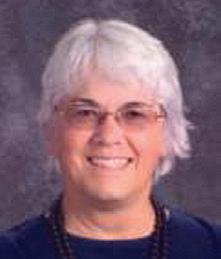







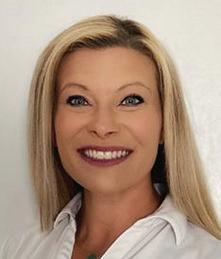
Queensland Cricket State Umpire Coordinator
I’ve attended almost all of the NASO Summits over the past 10 years. Attending the Summit is a great opportunity to learn from a wide range of presenters, as well as to meet and network with a vast array of officials from many sports and backgrounds. And it gives me the chance (as an Australian) to see different parts of your wonderful country
“Say Yes to Officiating” at the start of Day 2. To hear from a diverse group of speakers about how we can continue to improve our recruitment and retention strategies, and to then add that to my own thoughts and experiences was great. My key takeaway from that session was, “Don’t let process get in the way of progress — take the risk, do something different.” My standout presenter was J.D. Collins and his talk in the final session on leadership and living a principle-driven life. The key questions of “what principles will you live by” and “what will you do when an ultimatum is given” were both applicable and inspiring.
I’d love to add back a social activity similar to what we’ve had at previous Summits. Whether it’s a tourist’s introduction to the city (Portland), or a baseball game (St Louis, New Orleans), getting a group of officials and partners together has been another great way to add to the Summit experience. Perhaps a winery tour in Riverside next year?
ELLEN TOWNSEND
College Stunt Officials Association President Nevada Interscholastic Activities Association volleyball commissioner/ assigner
Since this was the first in-person gathering of officials since COVID hit, I wanted to meet and hear from others in the officiating industry — to get a make-over so to speak, find out about issues affecting officials across the board or specific to volleyball, and any solutions being proposed for those issues, and then take them back to my state association (NIAA) and the regional/local sports associations across Nevada.
All the sessions and speakers were outstanding and vendor booths were informative and willing to provide follow up. Since I’m a volleyball official and former basketball coach, I really enjoyed the Sport Breakout Session and You Make the Call. I loved all the speakers, really, so motivating and gave me pause to reflect on my officiating and how to get others involved. … And of course, the grand finale was impressive, the Celebrate Officiating Gala. I really wanted to be there to see the Gold Whistle Award presented to Joan Powell. Having served on a couple NFHS volleyball committees with her, I wanted to show my support for all her efforts in the high school volleyball world.
I wouldn’t add anything. The Summit is a family event, so personal. I met people with various sports officiating backgrounds from all over the United States and Canada and created new relationships. Every person I had a conversation with was so friendly and professional — Pati Rolf, Katie Meyer and Brad Tittrington graciously entertained inquiries and took ample time to discuss.
IT’S OFFICIAL - december 2022 NATIONAL ASSOCIATION 8
1. What made you attend the 2022 NASO Summit in Denver?
2. What session, speaker or vendor from the Summit most stood out to you?
3. If there was something you could add to the Summit experience, what would it be?
sports section
Good Sports
By Rick Woelfel
As officials, we often decry the lack of sportsmanship in the games we work. When players or coaches let their emotions get the best of them, we are sometimes heard to complain that Coach So and So “Isn’t teaching the right values,” or what he’s doing, “Isn’t appropriate for this level.”
Those concerns may be valid and, in some instances, there is less emphasis on sportsmanship than was once the case.
The question is, what should we as officials do about it? Are there things we can do to encourage sportsmanlike behavior? And are there behaviors we as officials engage in that perhaps we should not?
Sometimes the example we set can help others adopt a similar professional approach to their role in the game.
Before the Contest
• Somebody’s watching — As officials we must understand that someone is always watching us, on the field and off. On game day, we are under scrutiny from the moment we pull into the parking lot until the moment we leave. We should act accordingly.
• Watch your language — This is where some officials fall short. Profanity is inappropriate, whether on the field, or in the locker room.
And don’t assume that you have privacy, particularly at a large tournament where teams, coaches and parents often congregate. If they hear officials cursing a blue streak, some will certainly be offended. In any case, foul language, though it may be common at your association meeting, is inappropriate when you’re on

















• Handle all legitimate questions from players and coaches with courtesy —
Depending on the age level you’re working, say middleschool age and younger, some of the questions you get from players may seem ridiculous or unnecessary, but they matter to the player asking the question.
At the high school level
duty.
• Don’t smoke — There is no justification for using tobacco products on the field or while in uniform. Not before or after the game and certainly not during the game.
The same applies to alcohol. You should not consume an alcoholic beverage on the day of an assignment.
On the Field or Court
• Set a positive tone — Say “thank you” if someone brings you new baseballs when you need them, or water between innings. Courtesy is contagious.
and above, you likely are dealing with a team captain who presumably was selected for that role, at least in part, because of their leadership qualities. Treat them with respect. If they see that you do, they’ll respect you as well and that respect will spread to their teammates.
When it comes to coaches, it’s important to understand the emotions involved in a game. Coaches may do or say things in response to the pressure of the moment. At the college level, a coach’s job may be tied in whole or in part to their win-
OF SPORTS OFFICIALS NATIONAL ASSOCIATION OF SPORTS OFFICIALS
9
ON
GAME
DAY, WE ARE UNDER SCRUTINY FROM THE MOMENT WE PULL INTO THE PARKING LOT UNTIL THE MOMENT WE LEAVE. WE SHOULD ACT ACCORDINGLY.
loss record. At the same time, coaches should be penalized if they question your integrity or the integrity of one of your partners or engage in blatantly inappropriate behavior.
• Don’t ignore unsportsmanlike behavior— Some officials yield to the temptation to pass on rules violations because they don’t want to be seen as overbearing or don’t want to deal with the paperwork that may be required following a card or an ejection. Don’t be one of them.
That doesn’t mean that you should go around looking for any excuse to throw a flag or call a technical foul. But obvious infractions should be penalized.
If your state association mandates a card or ejection for certain infractions, they should be cited and not ignored. Doing so undermines your credibility and that of your crew, not to mention the credibility of the crew who sees that player or team next and is told, “They didn’t call that out last game.”















In Summary
At the professional level, the win-at-all-cost mentality prevails. Elsewhere, notably at the high school level and below, sports are intended, at least theoretically, to teach life lessons and be a component of the educational process.
While some have forgotten or have chosen to overlook those concepts, it’s important that we as officials do not and do our best to see to it the games we work are conducted in a sportsmanlike atmosphere. That starts with our own professional approach to the avocation. Rick Woelfel, Philadelphia, is a freelance writer and former softball umpire.
BASKETBALL
Your Voice Matters
From the Referee editors
Your voice matters when you officiate basketball. You may think otherwise, but people listening to you at the scorer’s table and on both team’s benches, players on the court and your partners all matter. They need to hear you. You must be clear. They must understand what you say. And most of all, a firm, projecting voice demonstrates confidence and expertise. We can all use that.


When you begin your officiating journey, your voice is probably the last thing you think about. First, you get the rulebook and want to make sure you understand the rules and pass your local/state test. Then comes court time. You want to rule on plays correctly, have good judgment, gain respect and not have people harass you for missing or misinterpreting a play. You learn to use your whistle, where to stand and how to address the table. You gain tips for managing coaches and players.
But you typically don’t have a senior official or someone at a summer camp come up to you and say, “Hey, your voice is terrible. You need to fix it. Here’s what’s wrong with it.”
Your voice can work against you in several ways. You may, for example, be an introvert and it’s against your nature to speak up. So you go about your games quietly, whispering your colors and numbers to the table, talking in a way that your partners can barely hear you. What happens in those situations? You must repeat yourself. Whether it’s in a pregame or getting the correct number in the scorebook, if
people aren’t hearing you, you’re not doing your job well.
In contrast, think of the yeller — the person who bellows. It may seem this is a good thing in a loud, crowded gym. You get heard. People look at you. But the yeller is overemphasizing and can be intimidating to others. The great officials don’t want to be intimidating. They want to project confidence and excellence. The overly loud voice is one that hollers at you and often comes across as anger or irritation.
Monitor your voice. One of the best ways to do this is to record yourself. That’s easy to do. Get out your recorder. Give your pregame. Rewind. Listen. Think about how you sound.
Make changes. Record yourself again. Listen to hear if you sound better. If not, practice some more and repeat the process. Use your language at the table: “White, twenty-five, hold. Blue, thirty-two, block.” Say it the way you would on the court. Listen for how it comes across to others.
This is an easy drill for self-improvement. The bigger challenge is having a mentor, observer or trainer who hears you and can provide you that type of advice. If you don’t have someone like that, ask a fellow official whom you trust to provide you outside feedback, or see if you can get a respected veteran from your officiating board to come to one of your games to provide a game assessment.
FOOTBALL
Talk to Yourself
By George Demetriou
By rule, the end of the play is signified when the ball is dead,
10 NATIONAL ASSOCIATION IT’S OFFICIAL - december 2022
but that doesn’t mean officiating stops. All officials must remain vigilant for extracurricular activity after the ball becomes dead. Once it’s clear all players have relaxed, the officials can start getting ready for the next play. Some of the coordination between downs is done via signals and some verbally. Additionally, officials can prepare for whatever is next by talking to themselves. That not only applies when the ball is dead, but also while it is live — particularly when a sudden change occurs.
Confirming the down is an absolute must. The correct down should be signaled to at least one other official before each snap. The referee should announce the down and distance to be gained. Knowledge of the game situation is essential to anticipating the next play. Expect a run on third and one, and a pass for third and long.
Noting the yardline of the line-to-gain will help the wings to determine more quickly whether the clock should be stopped for a possible first down. Also, noting the yardline of the snap is an aid for determining if the passer has crossed the line before releasing the ball. Finally, knowledge of both the previous spot and line-to-gain can help reconstruct chain placement if necessary.
Clock management is frequently neglected. It is helpful if each official always knows whether or not the clock is running. That knowledge will help avoid errors in restarting the clock after a dead-ball foul or an injury timeout.
One official (NASO recommends the line judge on a crew of five) should be tasked with noting the time remaining every time the ball is ready. Some referees may prefer the time to be noted verbally,
but as a minimum the official should talk to himself. That can help detect clock malfunctions or inconsistencies in the 40/25-second count.
The wings can talk to themselves when a player is making an effort to leave the field before the snap. How far does he have to get before the substitution infraction is flagged?
Scrimmage-kick formations provide extra duties for the officials. Players with eligible numbers may be in ineligible positions. If there is a kick, the numbering will not be of significance, but if there is a pass the officials must know who the eligible receivers are. Many crews require the umpire to record the numbers of linemen with eligible numbers, and the wings to record eligibles on their half of the field. As a minimum, those officials should note the appropriate numbers and repeat them to themselves as a memory aid.
The sudden changes that make the game so exciting present a challenge to officials. Self-reminders can also help with transitions. Blocked kicks, intercepted passes, recovered fumbles, punt returns and muffed kicks as well as routine plays such as completed passes are all examples of quick changes in an official’s responsibilities. In those situations, officials may have to change their movement, what they look for and may have to consider a different rule than when the play started.



For example, as an interception is made, officials can remind themselves, “White has the ball and white is blocking.” Referees can remind themselves they now have goalline responsibility. Another official may now be observing blocking in the open field and say, “Now white number 55 has the brick.”
Officials covering kicks will find it helpful to say to themself, “Think muff,” “Think momentum,” or “Think goalline.” That kind of pre-thought helps prepare for what otherwise may be an unexpected situation.
Toward the end of each half, the likelihood timeouts will be called increases. Officials can anticipate which team is apt to call for a stoppage in play based on who is ahead and which team has the ball. At that time, all officials should remind themselves, “White has all their timeouts remaining,” or, “Blue is down to one timeout. If they call one, I’ll inform the coach.”
Talking to oneself can not only help avoid errors, but will also facilitate proper coverage through anticipation of what may happen next. An official who anticipates will project a sense of ease, poise and selfassurance.
George Demetriou, a football official since 1968, lives in Colorado Springs, Colo.
VOLLEYBALL
Be Flexible Pleas(e)



 By Brad Tittrington
By Brad Tittrington



Google “officials” and almost every article you find will be about the nationwide shortage. Volleyball has not been immune to this by any stretch of the imagination. And while most people always thought the shortage would only affect the youth and high school levels, that thinking has been royally flawed.






In many cases, the shortage has impacted the collegiate level as well. Many assigners are struggling to find referees, line judges and scorers — and that is for all levels, including Division I.

11 OF SPORTS OFFICIALS
The one thing officials can do to help the cause is be flexible; be willing to learn a new role. Now is the time to get certified to be a line judge or scorer. If you only work high school matches, now is the time to try to attain your PAVO certification or join USAV and work the next level. Even if you never have the desire to work a big-time collegiate match, there are plenty of junior college, NAIA and small-college matches locally that are looking for referees, line judges and scorers, as well as USAV tournaments all over the country looking for officials.
Take a look around when you go to your next match to either work or spectate. You will see our cadre is getting older, not younger. If you are toward the twilight of your refereeing career, honestly think about becoming a scorer. You can stay involved in the game, give back and help the next generation of referees and your knowledge of the game is desperately needed.
Often, cost is one of the things that keeps referees away from moving up to the next level. In reality, if you are just scoring or line judging, the cost to register with PAVO and
the NCAA will be recuperated working one or two matches. And with the shortage, you may work that many matches in one night the first week out.
Same thing with refereeing. One or two lower-level college matches will cover all of your expenses and your registration will open up a new avenue of training for you. The growth of volleyball, both indoor and beach, has exacerbated the shortage. More and more players and teams are cropping up, and at the collegiate level, more and more schools are starting programs or clubs, which has made the demand for officials skyrocket. And the growth of officials has not kept pace with the growth of games. Assigners are desperately looking for more officials.
The same applies to USAV membership. Work one match and you’ve made your money back. And the majority of clinics are free, whether you want to work indoor or beach.
So, what does it mean for you? It means many more opportunities to grow as a person and official. You may have to be uncomfortable and stretch yourself a little at first, but the payoff will be well worth it. And the nice thing with volleyball, which isn’t always true in other sports, is there is a community of other officials who are willing to help you grow and mentor you along the way.
If you’re able to be flexible, it will open many more doors for you, both personally and professionally. You will work with people you’ve probably never worked with before, see a level of play you may not be accustomed to seeing, go to schools and locations you never otherwise would have gone and have access to networking you never had at your local high
school association.


If you aren’t sure how to get started, visit the PAVO website (pavo.org) or USAV (usavolleyball. org) and see really how easy it is to become more involved.















If you’ve ever thought about adding another role or certification or moving up a level, now is the time. Assigners desperately need you and the game desperately needs you. Don’t be afraid to move out of your comfort zone. Instead, embrace it as an opportunity to grow yourself and help grow the game.
Brad Tittrington is an associate editor for Referee. He referees college and high school volleyball, umpires D-I softball and officiates women’s college and high school basketball and high school football.
SOCCER Breakaways
By Kenneth Wikle
A common tactic for some teams who are playing an opponent known for controlling the ball with short passes is to try and tackle the ball away and immediately start a counterattack by making a long pass upfield to a teammate. This teammate will run up to the ball and either dribble toward the goal or make a successive pass to another teammate doing the same.
Occasionally, skilled goalkeepers will save a shot and start the counterattack punting the ball from inside the penalty area as far down the field as possible in an attempt to catch the defense off guard. This works especially well when the goalkeeper has been releasing the ball with the hands
12 NATIONAL ASSOCIATION IT’S OFFICIAL - december 2022
DO YOU ‘LIKE’ US? www.facebook.com/nasoofficiating
on a regular basis to start a slow counterattack. In either of these situations, the referee, in a matter of a second or two, will be 40 yards or more behind the play and the ball will likely near the center of the field.
For the officiating crew, this can be an especially challenging situation. The referee, positioned for a short passing attack on one end of the field, is in a very poor position trying to judge whether a challenge during this counterattack is fair or foul. If a foul is committed by the defense, the referee needs to decide whether to caution for stopping a promising attack or send off for DOGSO.
The assistant referee on the attacking side has an equally difficult task. The assistant referee is moving quickly to stay even with the second to the last defender to properly judge offside, while at the same time must be looking back to assist the referee in the event of a foul. The assistant referee may be in a better position to judge if a foul has occurred. The assistant is essentially doing three different tasks at one time: sprinting, observing for offside and observing in a different direction for fouls.
When an attacking team is advancing the ball with one or two quick long passes toward the net, it will be physically impossible for any referee to regain a position with the proximity and angle to judge whether a foul has been committed or not. There may be players blocking the referee’s vision. In addition, the referee must still be aware of what is going on behind the play. Is there a player who just lost the ball frustrated and about to retaliate against an opponent? The referee must be able to observe this at the same time as watching the
play develop up field.
There are many possibilities if the attacker with the ball ends up on the ground or loses possession of the ball. The attacker may have been held, tripped or charged by the defender. The attacker with the ball may simply stumble without being fouled. The defender may have made a fair tackle or fair charge to dispossess the attacker. What are the best defenses by the referee and the two assistant referees to avoid misjudging a critical incident on a breakaway?















1. In a case where the referee has lost proximity and a good angle, the referee needs to try and get as wide as possible within as few steps as possible. By achieving a better angle on the play quickly, the referee can at least see from a distance well enough to judge the challenge.
2. Empower the lead assistant referee to assist on a call in this scenario. The lead assistant, on a breakaway, will already have a wide angle on this challenge and can assist. This empowerment of the assistant referee to assist in an area of the field where the assistant referee normally would not assist should be specifically covered in the referee’s pregame discussion.


Missing a foul by the defense on a breakaway is a breakdown the officiating team cannot afford, especially if misconduct is not punished. Alternately, calling a foul where there is none would be terribly unfair to the defending team. It is critical that the referee and the two assistant referees are mentally prepared for their roles should this occur and have the courage to act accordingly.
Kenneth Wikle, Howell, Mich., is a USSF/NFHS/NISOA official and served as a USSF instructor and assessor.
ASK US
BASKETBALL
Failed Appeal
Play: A held ball occurs with less than a minute remaining in the first quarter (NCAAM: first half), and team B has the possession arrow in its favor. Team A’s head coach believes team A should have the possession arrow and makes an appeal to have the alternating-possession arrow mistake corrected. Ruling: Whether there is a mistake with the team that has the alternating-possession arrow in its favor is an appealable play. The officials shall consult with each other, the official scorer and other table crew as necessary to determine if the alternating-possession arrow is correct. If it is determined team A should have had the possession arrow in its favor, the mistake shall be corrected, team A shall be awarded the alternating-possession throw-in and team A is not charged with a timeout. If it is determined there is no mistake with the alternating-possession arrow, team A shall be charged a timeout. In NFHS, team A shall be charged a 60-second timeout, unless the team has no 60-second timeouts remaining, in which case it shall be charged with a 30-second timeout. If the time it took for the officials to determine there was no mistake with the possession arrow is less than the length of the timeout to be taken, team A may use whatever time remains in the timeout (5-8-4, 5-11-4, 5.8.4A). In NCAAM, in games not involving the electronic-media timeout format, team A shall be charged
13 OF SPORTS OFFICIALS
with one 75-second timeout or one 30-second timeout when the 75-second timeouts have been used. In games involving the electronic-media timeout format, team A shall be charged with either one 30-second or one 60-second timeout. If the time it took for the officials to determine there was no mistake with the possession arrow is less than the length of the timeout to be taken, team A may use whatever time remains in the timeout (2-10.13.b, 5-14.1.d, 5-14.15, AR 149). In NCAAW, in games not involving the electronic-media timeout format, team A shall be charged with one full timeout or one 30-second timeout, when the full timeouts have been used. In games involving the electronic-media timeout format, team A shall be charged with either one 30-second or one full timeout. Regardless the time it took for the officials to determine there was no mistake with the possession arrow, team A is entitled to use the entire length of the timeout (2-10.13.b, 5-14.1.d, 5-14.15, AR 178).














BASEBALL


No Stop
Play: With R1 at first, R3 at third, and one out. F1 is in the set position. He begins his stretch and before coming to a stop, he steps toward third and picks off R3. Ruling: Legal play (NFHS 6-1-2; NCAA 9-3b Note; pro 6.02a2).

It
Still Hurts
Play: With an 0-1 count, the next pitch to B1 hits in front of the plate and bounces into his leg. The umpire judges B1 tried to avoid the pitch. Ruling: B1 is awarded first. The ball previously hitting the ground does not change the fact B1 was hit by a pitch he could not avoid (NFHS 8-1-1d; NCAA 8-2d; pro 5.05b2).
Wrong Glove Play: B1 hits a single to center field. The base umpire notices F8 fielded the ball with a first baseman’s glove. Ruling: In NFHS, B1 will be awarded three bases. In NCAA, the offense will opt to have the pitch replayed. In pro, the play stands. In all codes, the glove must be removed (NFHS 5-1-2g, 8-3-3b; NCAA 1-13c Pen. 2; pro a 3.07c).
Pin Ball
Play: With R2 on second and no outs, B1 stands as if to bunt, but swings away. F5 creeps in and the ball deflects off his glove. It remains in the air and floats toward third where F6 is coming to cover the bag. The ball hits R2 and drops to the ground. Both runners are safe. The umpire judges that R2 did not deliberately interfere with the batted ball. Ruling: The play stands. There is no interference when a deflected ball hits a runner (NFHS 8-4-2k; NCAA 6-2e, 8-5k; pro 6.01a11).
FOOTBALL
Double Change of Possession Play: First and 10 for team A from its own 40 yardline. A1’s legal forward pass is intercepted by B2, who runs several yards before fumbling. Prone A3 recovers the fumble at team A’s 45 yardline. Is it first and 10 for team A or is it second and five? Does the clock start on the ready-for-play or on the snap? Ruling: It is first and 10 for team A at its 45 yardline. Once there is a change of possession, a new series is awarded to the team in possession at the end of the
down. The clock starts on the ready-for-play signal since the only reason it was stopped was to award a new series to team A (NFHS 3-4-2, 5-1-3d; NCAA 3-32e-1, 5-1-1e-1, 5-1-4a).
Snapper Protection
Play: Fourth and 10 for team K at its own 25 yardline. K1 is lined up directly behind snapper K2 but his hands are not under the snapper. K3 is positioned eight yards behind the line and is directly behind K1 and K2. If K3 receives the snap, is K2 afforded snapper protection? Does it matter if K1’s hands are under the snapper? Ruling: If K1 is in position to receive a direct hand-to-hand snap, it is not a scrimmage kick formation and snapper K2 is not afforded protection. The location of K1’s hands and the fact that deep back K3 received the snap are both immaterial to the ruling. Consequently, the snapper is not afforded extra protection (NFHS 2-14-2, 9-4-6; NCAA 2-16-10, 9-1-14).
SOFTBALL
Batter-Runner Misses First
Play: B1 hits a ground ball to F6 and beats the throw to first but steps completely over first base without touching it. The ball arrives to first base after the batter-runner is beyond the first base bag. Ruling: The base umpire should signal safe. A runner is considered to have touched the bag, even if the runner misses the bag, once the runner has passed the bag. If a proper appeal on the batterrunner is made by the defense before she returns to touch the base, the batter-runner is out (NFHS 2-1-10; NCAA 7.1.1.2.5b; USA Softball R/S 1l; USSSA FP 9.1a).
14 NATIONAL ASSOCIATION IT’S OFFICIAL - december 2022
Conference?
Play: After the third out of the inning, team A’s coach, who was in the third-base coach’s box, stays out at the pitching circle and watches the pitcher throw her warmup pitches. After the final warmup pitch, the coach returns to the dugout. Ruling: No defensive conference is charged. A conference is only charged if the coach causes a delay. Simply staying at the circle during the break between innings does not cause a delay (NFHS 3-7-1; NCAA 6.12.7; USA Softball 5-7b; USSSA 4.8a).
Injured Pitcher
Play: F1 is in obvious pain after she delivers a pitch in the bottom of the second inning. It is determined F1 cannot continue due to injury and is replaced by a different pitcher, who has not yet pitched in the game. Ruling: In all codes, the umpire should allow the substitute as many pitches as the substitute needs to warm up (NFHS 6-2-5 Note 2; NCAA 10.19.3.2, 10.19.3.3; USA Softball 6A-9 Effect; USSSA 6-1l).
SOCCER



That’ll Leave a Mark Play: B1 is in team B’s own penalty area when A2 crosses the ball toward A3 who is directly in front of B1. B1 executes a scissors kick to clear the ball from the penalty area. A3 moves back quickly to not be struck in the face with B1’s cleats. Ruling: The referee should stop play and award an indirect free kick for team A at the point of the scissors kick. B1 created a dangerous situation by lifting the leg near A3’s face. If the incident occurred less than 10 yards from the goal, the wall may set up on the

goalline between the goal posts (NFHS 12-6; NCAA 12.2.9.1; IFAB 12.2).
Requip, Please!
Play: Prior to the beginning of a match, the referee determines that all players are properly and legally equipped, either by inspection or coach’s affirmation. During the course of the match, A1 removes and throws A1’s own shinguards toward the bench area. Ruling: At the first opportunity, the player is to be sent off the field for illegal equipment and cautioned for deliberately removing the shinguards. If in the opinion of the referee, the player is creating a dangerous situation, play shall be stopped (NFHS 4-1-1; 4.1.1F; NCAA 4.1.15; IFAB 4.1, 4.2).
Democracy Rules?







Play: A shot on goal is on the goalline between the goal posts. The assistant referee is on the goalline and does not raise the flag. The referee sounds the whistle and awards a goal. The assistant referee remains on the goalline. The referee says, “I saw it and it is a goal.” The referee has the ball taken to the center spot for a kickoff for the opponents. Ruling: The assistant referee is under the jurisdiction and supervision of the referee. Since the referee awarded the goal, the assistant referee must agree with the situation. The matter should be discussed in detail at halftime or after the match (NFHS 5-3-2; NCAA 5.4.2; IFAB 5.2).



VOLLEYBALL


Overhead Obstruction
Play: A1 passes a served ball toward a non-playing area. The ball contacts a ceiling beam six meters (19 feet, eight inches) above the playing area on team
Legacy NASO is a new program whereby you may bequeath a gift through your will or trust that ensures you can take care of your loved ones first, and then leave whatever else you choose to make a big difference in the future of sports officiating.
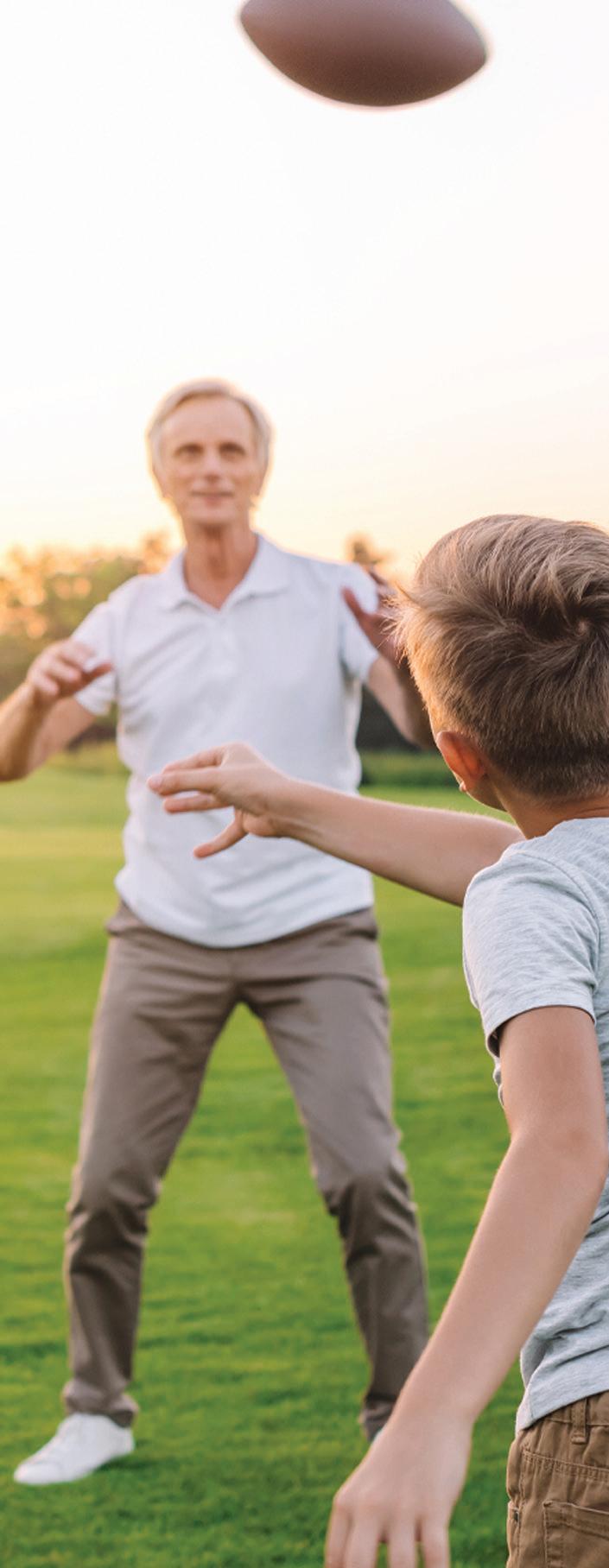
15 OF SPORTS OFFICIALS
Sports Officiating has been a big part of your life.
Now you can make it a part of your legacy.
NASO.ORG/LEGACY OR CALL 800-733-6100
LEARN MORE AT
A’s side of the net and rebounds back toward team A’s court. Had the ball not contacted the ceiling, it would have landed out of bounds. Ruling: Play continues. When a ball strikes an overhead obstruction above the playing area, the ball shall remain in play until a fault occurs. The referee may not rule that the ball would not have been playable had the overhead obstruction not been there. Because this was team A’s first contact and the ball remained over team A’s side of the court, no fault has occurred and the ball remains live. However, if the ceiling beam had been above a non-playing area, had been on team B’s side of the court or the contact was team A’s third contact, the ball would have been ruled out (NFHS 2-2; NCAA 4.2.3.2; USAV 8.4.2).
Blatant Delay
Play: A1 serves five straight points. As A1 prepares to serve again, B2 blatantly unties her shoe and then re-ties it. Her action delays the start of the next rally. Ruling: The team B player was clearly attempting to interrupt the opponent’s momentum by delaying the next serve. Under NFHS rules, if team B is not immediately ready to start play when the first referee indicates play is resuming, an unnecessary delay may be assessed (NFHS 9-9-1c).
In NCAA and USAV, a delay sanction should be assessed (NCAA 6.3.1, 6.3.2.8; USAV 16.1.5). Tying a shoe or other similar action is permitted in the spirit of ensuring player safety; however, referees must be alert to attempts by team members to intentionally delay
the resumption of play, and then sanction such behavior accordingly.
Libero Serve
Play: The libero is currently in position six (CB) and her teammate, A1, is serving. The libero has not served in the set. After A1 serves two points, the coach instructs the libero to move to the service position to replace A1 and continue serving. The player who the libero replaced returns to the court in position six. Ruling: That is a legal replacement by the libero. When the libero is on the court in any backrow position, she may legally replace the current server provided she hasn’t already served in another position in the service order (NFHS 10-4-1a, 10-4-5; NCAA 12.1.2.3, 12.2.1.2; USAV 19.3.2.1c).
The National Association of Sports Officials (NASO) is a nonprofit, educational association providing services and benefits for sports officials. It is run by officials, for officials. If you know a good candidate for membership, please send us his or her name and address. We will forward an invitation to join. For more information contact 262-632-5448 or www.naso.org/membership
Alabama High School Athletic Association
American Specialty Insurance & Risk Services Inc.





ArbiterSports

Arizona Interscholastic Association
Arkansas Activities Association
Atlantic 10 Conference


Atlantic Coast Conference
Big East Conference
Big Sky Conference
Big Ten Conference
California Basketball Officials Association
California Interscholastic Federation
Canadian Football League
Chief Zebra Enterprises
Cliff Keen Athletic
College Football Officiating LLC
Collegiate Officiating Consortium
Colorado High School Activities Association
Court Club
Demosphere
Fox 40 International
Fox40Shop.com
Georgia Athletic Officials Association
Georgia High School Association
Get It Right Enterprises
Honig’s
HUDL
IAABO Inc.
Illinois High School Association
Indiana High School Athletic Association
Iowa High School Athletic Association
Kansas State High School Activities Association
Kentucky High School Athletic Association
Louisiana High School Athletic Association
Louisiana High School Officials Association
Major League Baseball
MIBT Media
Michigan High School Athletic Association
Mid-American Conference
Minnesota State High School League
Missouri State High School Activities Association

Missouri Valley Football Conference
Mountain West Conference
National Association of Intercollegiate Athletics
NBA NCAA
Neat Tucks
Nevada Interscholastic Activities Association
New Mexico Officials Association
New York State Public High School Athletic
Association
NFHS

NFL Foundation
NFL - Officiating Department

NFL Referees Association
NHL NHL Officials Association
NIRSA
Officiating Collective
Ohio High School Athletic Association
Oklahoma Secondary School Activities Association
Oregon Athletic Officials Association
Oregon School Activities Association
Pac-12 Conference
Pac 12 Football Officials Association
Professional Association of Volleyball Officials
Professional Referee Organization
Purchase Officials Supplies
QwikRef Inc.
Referee Enterprises Inc.
RefQuest



RefReps

Southeastern Conference

Sun Belt Conference
Texas Association of Sports Officials
Texas High School Basketball Officials Association
Ultimate Fighting Championship
Ump-attire.com
UMPS CARE
United States Polo Association

United States Tennis Association
University Interscholastic League - Texas
USA Hockey USA Rugby USA Softball
USA Volleyball
US Lacrosse
Vokkero by Adeunis
Washington Interscholastic Activities Association
Washington Officials Association
West Coast Conference
Wisconsin Interscholastic Athletic Association
16 IT’S OFFICIAL - december 2022
Your Company Can Help Improve the Quality of Officiating Become an NASO Education Partner Today! NASO EDUCATION PARTNER PROGRAM MEMBERS:


















































































































































































































 By Tonya Houston
By Tonya Houston



























































































 J.Bilas -
J.Bilas -




 Angel Hernandez Ted Valentine Scott Foster (mostly Suns fans)
Angel Hernandez Ted Valentine Scott Foster (mostly Suns fans)



 By Judson Howard
By Judson Howard












































































































































































































































































































































































































































 By Donald C. Collins
By Donald C. Collins





























































